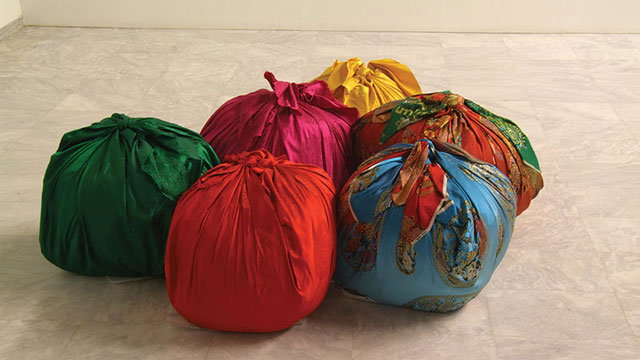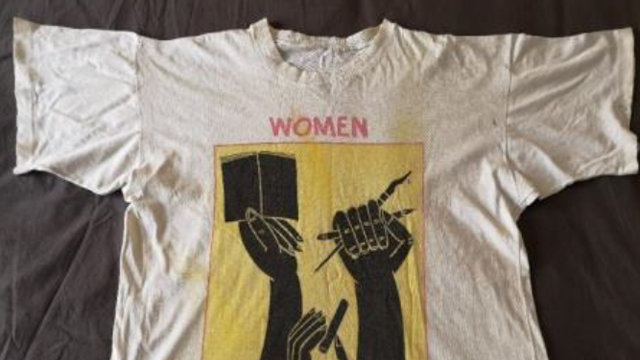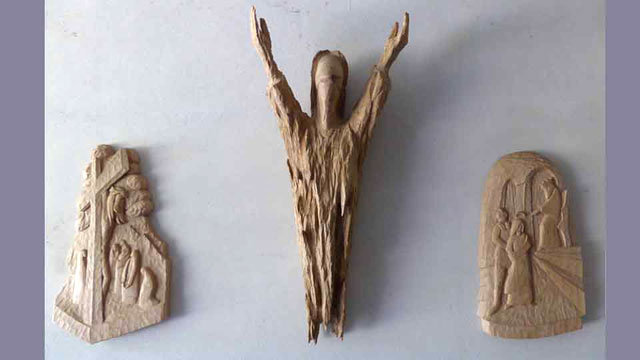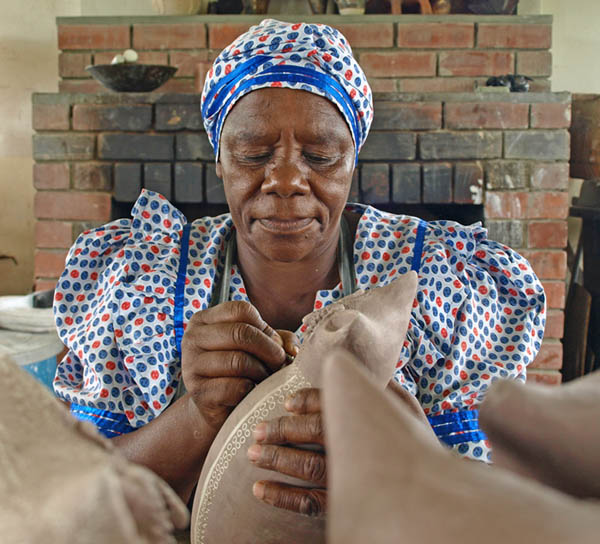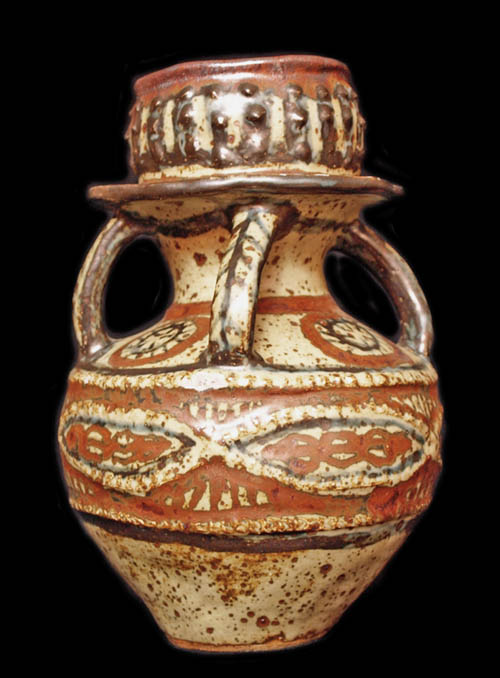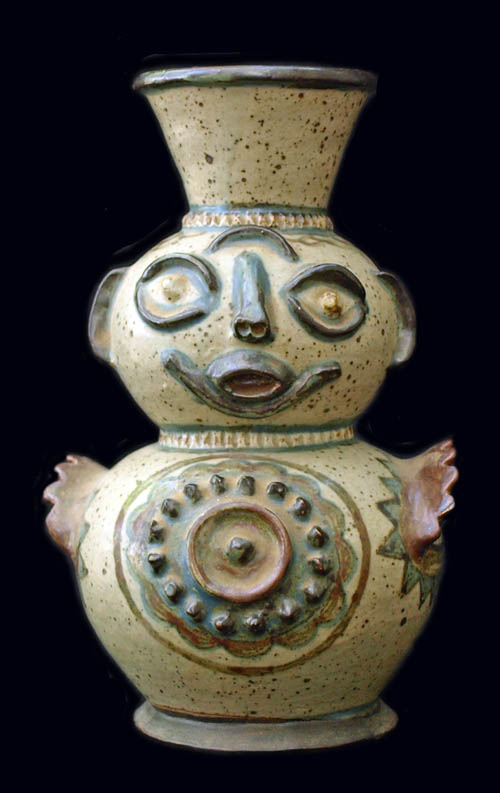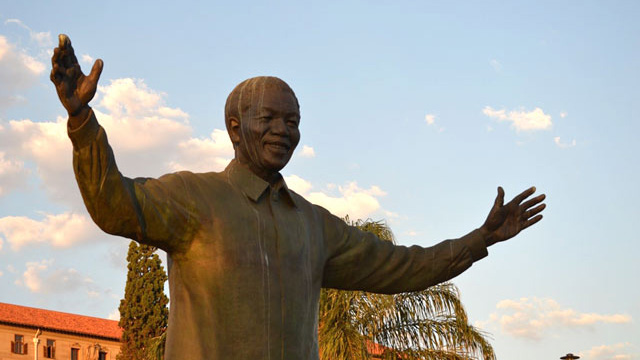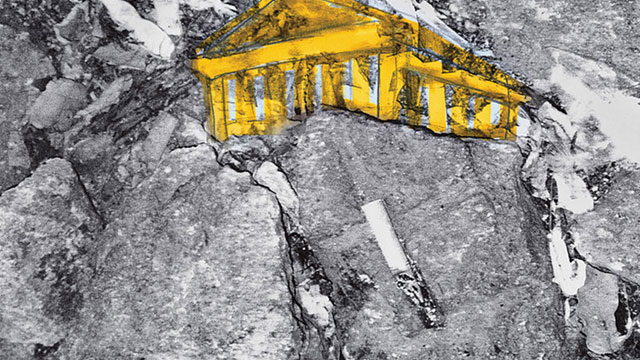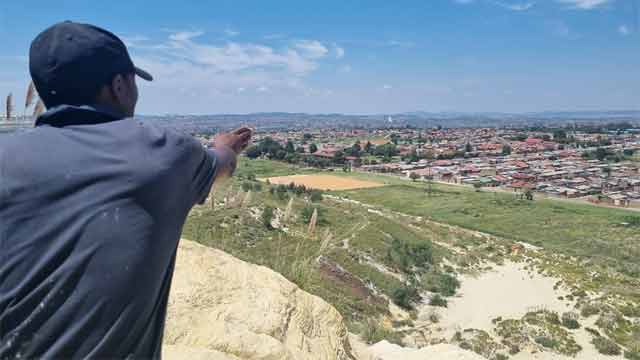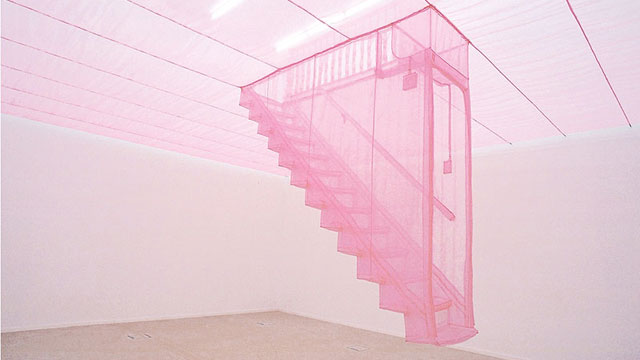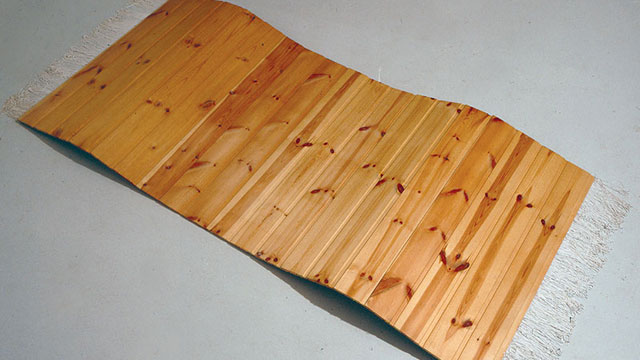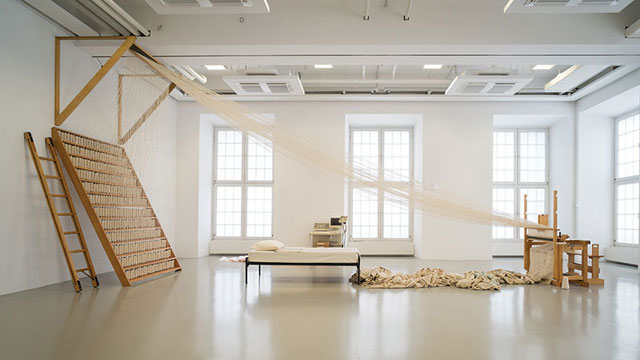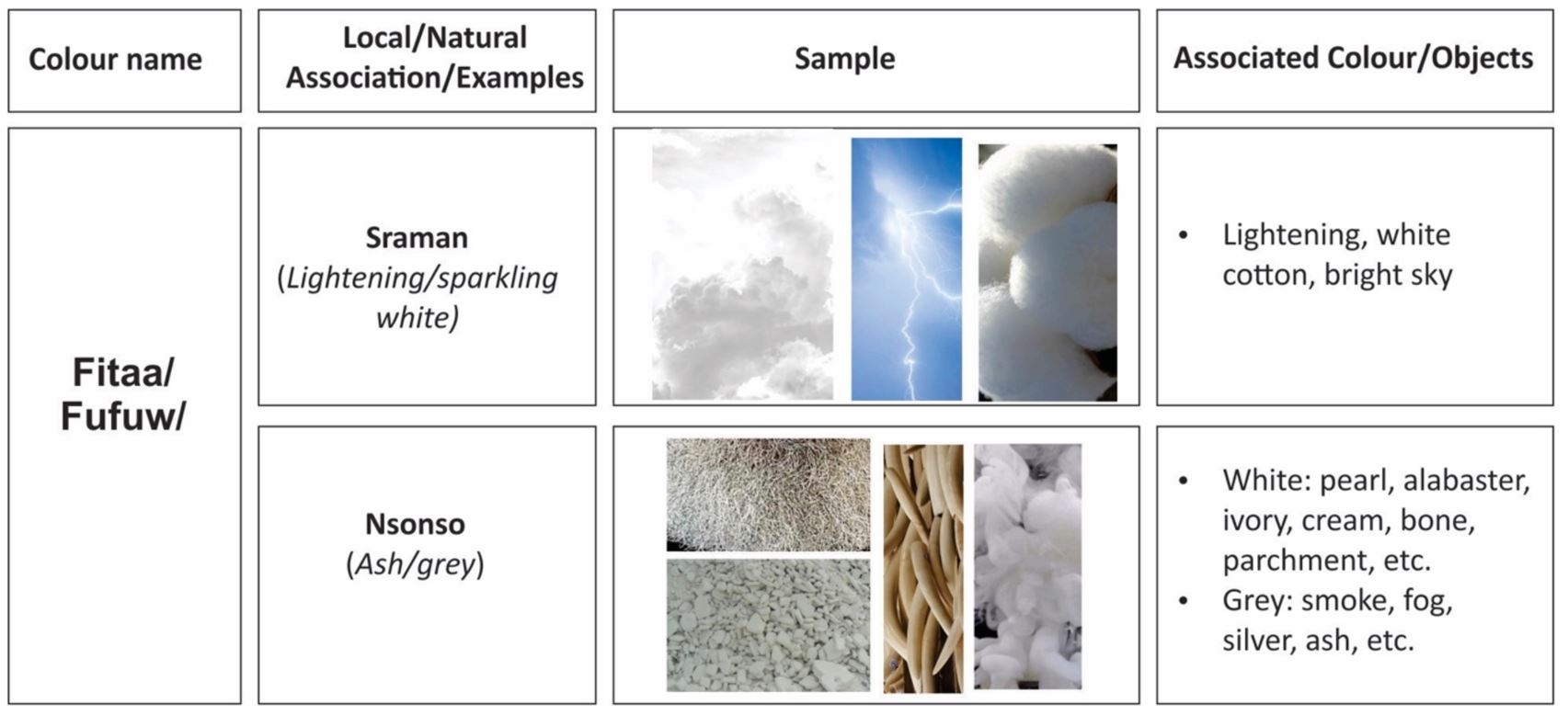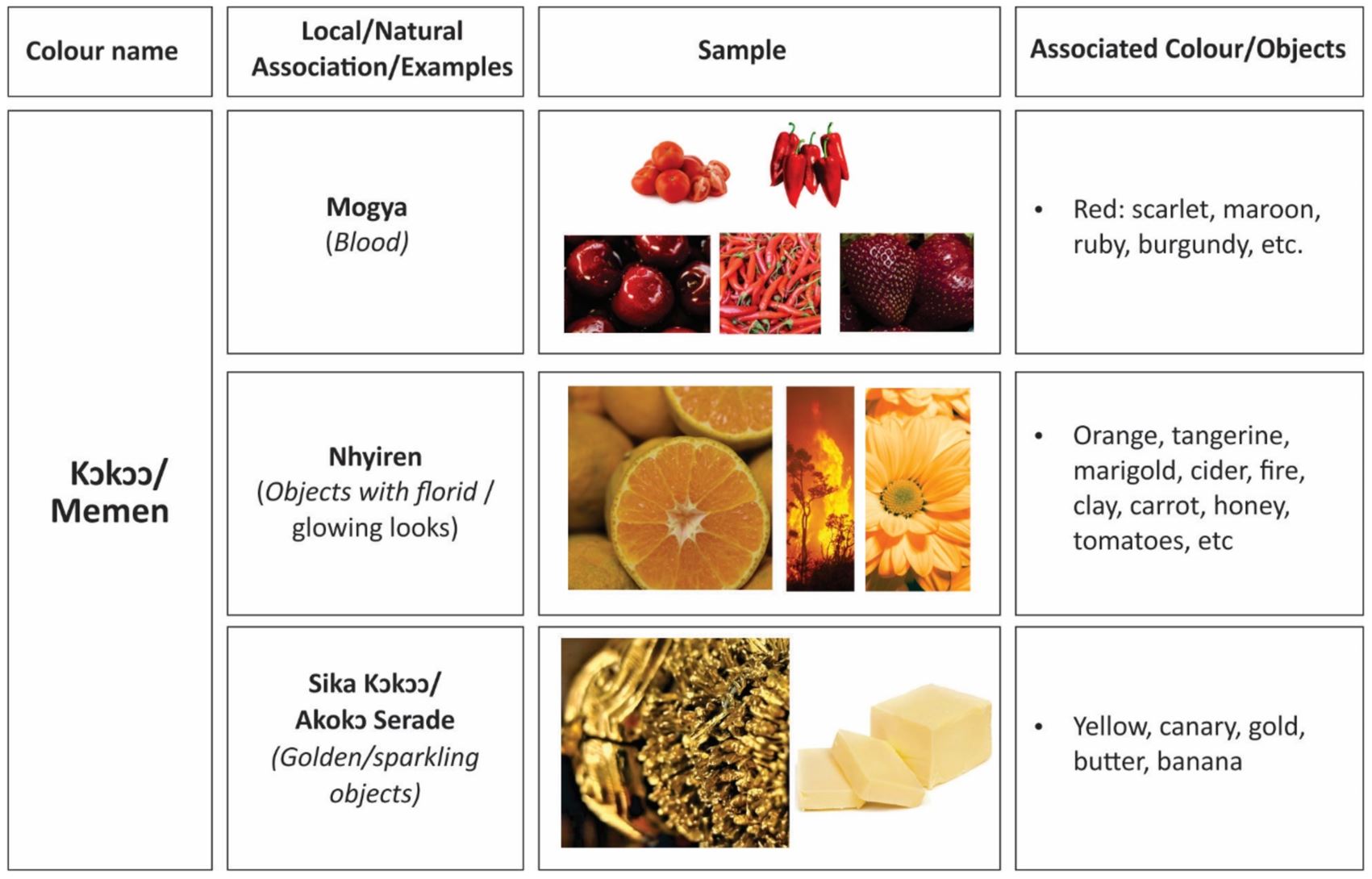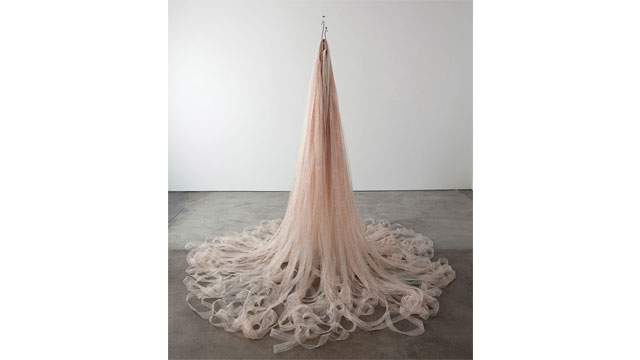Dear user,
This section of our website forms the heart of the EVC project. Here you find a collection of images of objects from different ‘visual cultures’. Our contributors selected and interpreted them in their respective contexts believing that these objects are particularly important for intercultural understanding across boundaries. Each time a user opens this page, the order in which the objects appear changes. In this way we hope to avoid a hierarchical understanding of the collected objects as their entries continue to be accessed in the long run. The constant changing face of the page also reflects the continuous expansion of the collection. As there are already over more than a hundred entries, users may want to form an overview, or to navigate through the growing collection according to their interests. For this purpose, we offer the following search options:

Filter: This enables you to search for objects according to time, place, keywords, etc. / Free title search: If you know the title of an object, you can find it in the free search field. / Lab: In the lab section, objects from the database are grouped under overarching themes. This is an ongoing project and about to be expanded extensively.
Enjoy exploring our database!
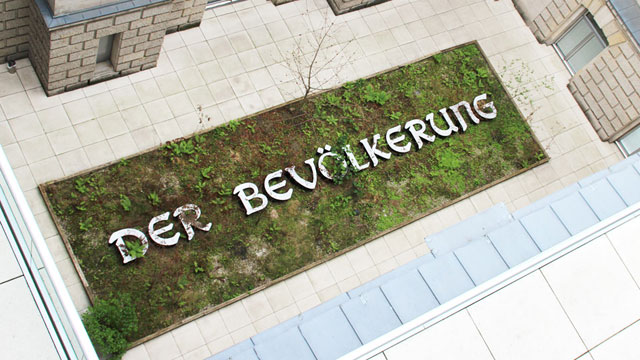
-
 Ernst Wagner
Ernst WagnerBased on the Ghanaian interpretation, it quickly became clear that certain ideological or political positions are immediately connotated with the respective image selection. These in turn are linked to historical and social experiences, which Winkler (2021) recently elaborated on the basis of the history of Germany. In our case, the West German, left-liberal intellectual milieu is of particular interest, since all the German project partners involved in the discussion can probably be assigned to such a milieu. "In the 1970s, the view prevailed among liberal and left-wing intellectuals in former West German, which objectively was not a nation state, did well to see itself as a >post-national democracy<. In the 1980s, this led to the conviction among many that the time of the nation state had passed and that Europe only had a future as a post-national union. [...] The self-destruction of one's own nation-state [in Nazi Germany - author's note] led to the conclusion that the nation-state as such had outlived its usefulness, and the term ‘national’ was equated with nationalist. [...] In Germany the idea that the nations had to merge into a European republic found a broader public echo." (Winkler 2020 p.186)
For art educators, the majority of whom probably feel committed to this idea of Germany as a post-national democracy, the question of a current symbolisation of national unity[1] is therefore obsolete. It cannot therefore be relevant to art education. A consensus in the German team on how at least the general topic could be addressed could be reached by the proposal to deal with the topic on another level, and to use Hans Haacke's installation "Der Bevölkerung" (2000, courtyard of the German parliament in Berlin) to deal with the topic of "national unity" in a contemporary art lesson.
Hans Haacke (*1936) is a German-American artist who has lived and worked in New York since 1965 and whose conceptually influenced works primarily address art-political processes.
Figure 2: View into the courtyard of the Reichstag building. © Hans Haacke / VG Bild-Kunst.
Haacke's installation "Der Bevölkerung" is located in a courtyard of the Reichstag building. This architectural context is part of the work. The building was constructed at the end of the 19th century, during the Second German Empire (1871-1918). In neo-baroque style, it paid homage to the national pomp under emperor Wilhelm II. Damaged by fire in 1933, it was further damaged during the Second World War. Located directly on the Wall to East Berlin, the dome was finally blown up in 1954. In reunified Germany, however, a new function was found for the building. Rebuilt according to plans by Norman Foster in the 1990s, it now serves the German parliament, the Bundestag.

Figure 3: View of the façade of the Reichstag building with the inscription "Dem Deutschen Volke" © Hans Haacke / VG Bild-Kunst.
Hans Haacke built a 21 x 7 metre rectangular, flat wooden enclosure in this building. He then asked the MPs to gradually fill it with soil from their respective home regions. In the middle of the box, the inscription "Der Bevölkerung" (To the People / Population) can be read, in white letters illuminated from the inside. The typeface corresponds to the inscription "Dem Deutschen Volke" (To the German People / Nation), which has been on the outside of the building's west portal since 1916.[2] According to the initiator, the invitation to bring soil from the constituencies is valid as long as members are democratically elected to the German parliament. A webcam, belonging to the installation (www.bundestag.de), takes a picture every day at 2 p.m. and 8 p.m. and thus allows a take a look at the development of the project since 2000 and at the current situation.

Figure 4: An MP distributes the home soil from his constituency in Haacke's installation. © Hans Haacke / VG Bild-Kunst.
When Haacke proposed to install this large-scale installation in the new parliament in 1999, ten years after German reunification, it triggered a heated public discussion. Many MPs found the words "Der Bevölkerung" (To the People / Population), which appeared to be a dedication, inappropriate and provocative. Haacke was deliberately alluding to the older inscription "Dem deutschen Volke" (To the German People / Nation) on the outer façade. In contrast to this, he used the term " Bevölkerung - population" to refer to all the inhabitants of Germany, including people who do not have German citizenship and live here. According to his own statement, Haacke was inspired by Bertolt Brecht when deciding on the lettering. Brecht had written in 1935 in exile that whoever said population instead of people would avoid many lies (Brecht 1935). Haacke is obviously also concerned with the question of how words can and should be used in the context of a national parliament to designate the basis of this democratically elected representation of the people/population. Does the term "Volk" fit, a traditional, conventional but loaded and perhaps not at all accurate term? Or would be the term "population" better, a word that sounds unfamiliar and strange at first, but perhaps makes more sense. The discussion intended on such questions is part of Haacke's work.
Similar discussions were triggered by the idea of having MPs bring home soil. For many, this was reminiscent of the National Socialist blood-and-soil ideology. Or they criticised it as "kitsch" because of the well-intentioned but overused symbolism. Obviously, the work here plays with this iconographic tradition (“Heimaterde”), but reinterprets it just as it reinterprets the lettering. At the same time, the installation is constantly changing as a result - both through the ever-changing soil and through the growth of the plants over the course of the year.
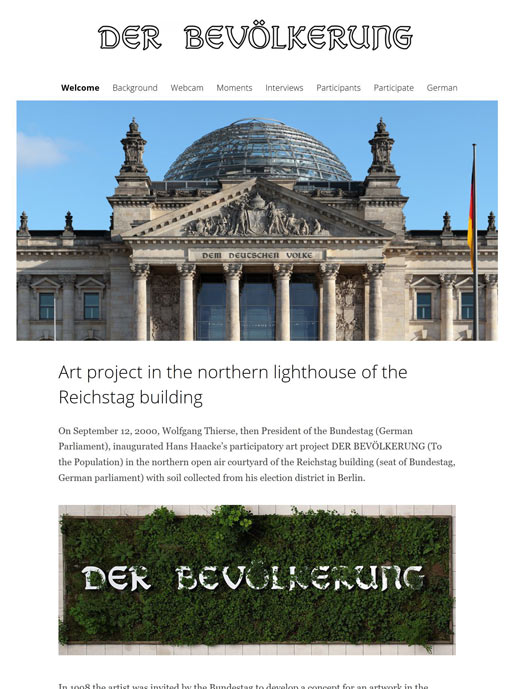
Figure 5: Screenshot of the project's website https://derbevoelkerung.de
© Hans Haacke / VG Bild-Kunst.
The installation is thus in constant dialogue with the population designated in the inscription, tries to involve the MPs and responds as a living piece of nature to the stone surroundings of the parliament building. The work of art is thus never fully completed.
Haacke's art project was particularly controversial in parliament; only by a narrow majority did the MPs finally vote in favour of the realisation of the artwork in 2000 after a specially scheduled debate in the Bundestag. The entire debate is documented on the project's website - as another part of the work (Bundestagsdeabtte 2021).
[1] I.e. a "small German" solution after 1990 and with shifted borders after 1945.
[2] It was designed by the Art Nouveau artist Peter Behrens.
References
- Brecht 1935: Bertolt Brecht. Five Difficulties in Writing the Truth. www.literaturwelt.com/werke/brecht/wahrheit.html (13.10.2021)
- Bundestagsdeabtte 2021: https://derbevoelkerung.de/bundestagsdebatte/
- Kaernbach 2011: Andreas Kaernbach. Projekt „DER BEVÖLKERUNG“ im Reichstagsgebäude. https://www.bundestag.de/besuche/kunst/kuenstler/haacke/haacke-198996 (13.10.2021)
- Winkler 2020: Heinrich August Winkler. Wie wir werden, was wir sind - Eine kurze Geschichte der Deutschen. Munich (Beck)
- Winkler 2021: Heinrich August Winkler. Das widerspruchsvolle Erbe des Otto von Bismarck. In: FAZ of 18.1.2021, p.6
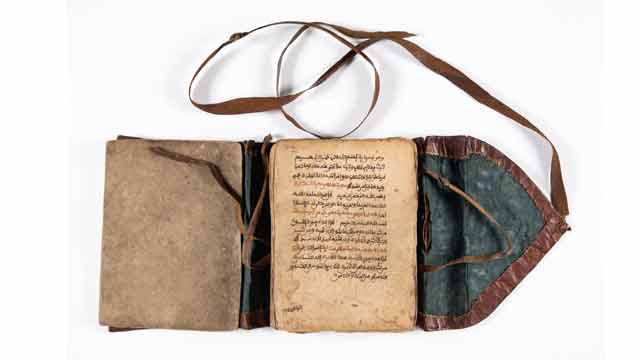
-
 Mahmoud Malik Saako
Mahmoud Malik SaakoThe Qur'an is typical for the time and the West African region in general. The idea originated in North Africa such as Morocco and Algeria. But the writing was later, influenced by the Hausa and Mande scholars in West Africa. The texts in this Qur'an are the same as the original from Arabia. But there are differences in the kind of calligraphy found in these Qur'ans and those found in Arabia. One important aspect of these Qur'ans is the calligraphy that comes after the beginning of a new chapter or Surah. Again, the use of red, gold and black colour in writing the Qur'an makes them unique.
Artistic features of the Qur'an
- The leather cover used to protect the Qur'an was designed with some relief using black ink. It shows that leather workers were very important in society. Similar covers are made but in a form of a bag for the Qur'an while others are wooden covers with a leather thong used to hold the wooden covers together with the Quran.
- The Holy Qur’an has Ayahs (words or verses) and Surahs (chapters). There is Bismillah before each Surah. The Qur'an has 114 Surahs or chapters.
- Calligraphy works in some portions of the Qur'an. Calligraphy as the art of beautiful, decorative writing has existed in Islam since the word of God, the Qur'an, began to be written. In West Africa which was known to the Muslim world as Bilad-al-Sudan (land of the blacks), Islamic calligraphy naturally came with Islam. They are just symbolic to honour the holy text.
- The use of three colours in writing such as gold, red and black: This shows how versatile the person was in giving an artistic impression of the Qur'an based on the Kanemi
- A large decorated sign known as shurafah (ennoblement) is written at the end of every fifteen hizb (that is the division of the Qur’an into parts and portions). This is done as a means of honouring the holy text. (See images below.)

The shurafah or ennoblement at the beginning or end of a chapter (surah) is indicated in the two images. The gold, red and black colours are used to give it a splendid look. (Qur’an. 16th-17th century. Mossi in Togo. Museum Fünf Kontinente Munich. Courtesy Museum Fünf Kontinente. Nr. 20-3-1. https://onlinedatenbank-museum-fuenf-kontinente.de/detail/collection/b77d064f-c603-493c-af03-fc167f739586. [Stand: 08.08.24]. Photo: Nicolai Kaestner)
Material used for the Qur'an
The paper used is brown and a bit hard as compared to today’s paper used for printing. The ink is mixed in a variety of colours. There is jet-black ink that shines. Then there is a colour of black mixed with red and another colour which is neither black nor red. The ink is obtained through the following method. The roots of the desert date tree are collected and burnt into charcoal. This charcoal is then scraped into fine powder. The powder is filtered through a light piece of cloth. Water and gum Arabic are then added and the whole mixture is left to warm up in the sun. The mixture once prepared in this way gives out a very nice smell and its taste is very sweet.
Another method employed to produce the calligrapher's ink is to obtain the chaff of bulrush-millet (Pennisetum Spicotum), chips of the gum-yielding acacia (sieberiono), pods of the plant Egyptian mimosa (Acacia Arobico), slag from smithy and some bits of iron. All these items are then mixed with water. The mixture is filtered and boiled and once it is cooled it becomes ink. If the calligrapher wants a reddish colour or magenta colour imported dye of green or magenta colour is added. This type of ink is meant for the writing of the alphabet only and is always done in pure black. The ink is usually stored in small clay ink pots or small round gourds. The recent time, the ink is kept in small bottles.
What are the general specifics of these early Qur’ans?
The Qur'an is the holy text of the Islamic religion. In Islam, the Qur'an is believed to be the book of God’s words. The holy text remains sacred and unchanged since the beginning of time. The Qur'an is known as the most powerful text in Islam. Islam is a monotheistic faith and people of the religion take great pride in believing in pure monotheism. As followers of the Qur'an, Muslims must believe there is no one else besides Allah because Allah is the only one we worship sincerely, thus he is seen as the most powerful figure in the religion of Islam.
The Arabic text of the holy Qur'an in a book is known as the mus-haf (literally "the pages"). There are special rules that Muslims follow when handling, touching, or reading from the mus-haf. The Quran itself states that only those who are clean and pure should touch the sacred text. It is indeed a Holy Quran, a book well-guarded, which none shall touch but those who are clean... (56:77-79). The Arabic word translated here as "clean" is mutahiroon, a word that is also sometimes translated as "purified."
It was only Muslim believers who are physically cleaned through formal ablutions should touch or handle the pages of the Quran. Again, the Qur'an should be closed and stored in a clean or respectable place. Nothing should be placed on top of it, nor should it ever be placed on the floor or in a bathroom. Furthermore, when copying the Qur'an by hand, it should be legible with good handwriting. If you are reciting it you need to use a clear and beautiful voice. A worn-out copy of the Quran, with broken binding or missing pages, should not be disposed of as ordinary household trash.
Acceptable ways of disposing of a damaged copy of the Quran include wrapping it in cloth and burying it in a deep hole, placing it in flowing water so the ink dissolves, or, as a last resort, burning it so that it is completely consumed. But the translated Qur'an according to some scholars can be handled either by Muslims or non-Muslims.
Uses of the Qur'an
The Qur'an is meant for reading or recitation known in Arabic as taliwa. The recitation of the Qur'an is a highly honoured performance in Islam in which Allah blesses both the reciter and the listener. A person who memorizes the whole Qur'an is given the honorary title of a Hafiz (memorizer of the Qur'an). Again, the reproduction of the written Qur'an is as important as oral recitation. Two early calligraphic styles evolved in the writing of the Qur'an, Kufic (the more boxy, angular, heavy, and formal script) and Naskhi (the more elongated, rounded, cursive script).
The words in the Qur'an are regarded as the words of Allah and, therefore, handled with respect. Muslims also hold the view that some of the words contain mystical properties and as a result, Muslim religious scholars are sometimes consulted by people who have spiritual or psychological problems. They write verses from the Qur'an to ward off such evil spirits or for protection. The Qur'anic verses are often accompanied by diagrams drawn on a board and then washed off and given to the client to drink. As a result, these boards have high values based on the extent they have been used. It is believed that the older the board the more efficient it would be and vice versa.
At the Museum, there is one of the Qur'anic writing wooden boards that have verses from the Quaran on one side and diagrams on the other side. This board is brown and round at the base with a handle in a form of an animal beak. The surface is smooth while some old writing has remained and can be seen (see image below).
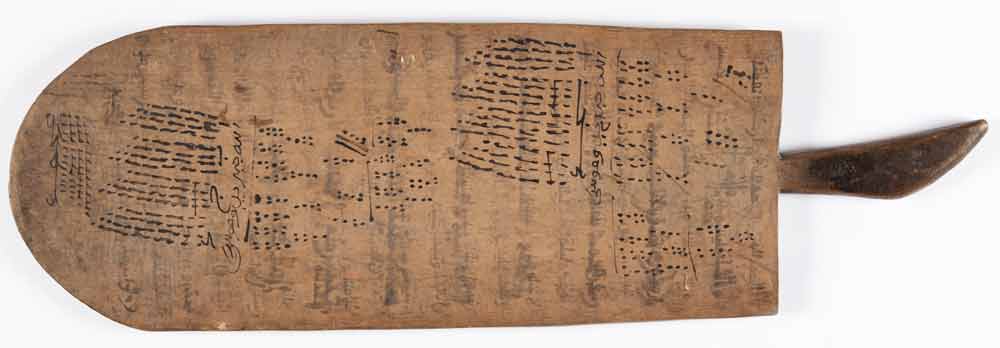
Board (Courtesy Museum Fünf Kontinente. Nr. 9-48. Photo: Nicolai Kaestner)
Where is the Qur’an kept?
Old Qur'ans were usually placed in two wooden covers before the use of leather cases or bags. It was easy to carry it once it was placed either in the wooden covers or in the leather bag. This is very important not to mess up the loose papers of the Qur'an. The two wooden covers after the Qur'an is placed and bound with a thong. There are two holes in the middle edge of the covers where the thong is passed through to bind the two wooden covers with the Qur'an. This method of bounding the Qur'an with wooden covers was practised during the early Abbasid period. Many of the early Abbasid manuscripts were copied into several volumes based on the Kufic script which was fairly heavy and not very dense. The Qur'ans of this early period were bound in wooden covers, structured like a box enclosed on all sides with a movable upper cover that was fastened to the rest of the structure with thongs. In this period, the Quran was arranged into 20 Juz or parts instead of the original 30 Juz during the Umayyad period. These wooden covers can be found at the Museum Fünf Kontinente (Inventar Nr 15-17-148).

Wooden cover of a Qur'an. Museum Fünf Kontinente. (Courtesy Museum Fünf Kontinente. Nr. 15-17-148. Photo: Nicolai Kaestner)
Appendix
When is it read and how?
It is read during the five daily worship by Muslims, at leisure times, during periods of hardship, during important occasions etc. However, in West Africa, it is read even at funeral celebrations. In many instances, the whole Qur'an is shared among those who can read, or the 30 Juz are shared among 30 people who recite or read it.
Islam in West Africa
Islam as a religion was revealed to the Prophet Mohammed in the 6th century in the Arabian Peninsula. Africa was the first continent into which Islam spread, from the Arabian Peninsula in the early 7th century. By the 10th century, the Berbers of West Africa were converted to Islam by their North African counterparts. It was the Berber Muslims who began to spread Islam into Western Sudan by the end of the 10th century through their trading activities. The Berbers of West Africa also converted some of the Manding-speaking traders to Islam, and they also began spreading it alongside their commercial activities. It was the Mande traders who began to spread Islam into many parts of West Africa through trading activities. The nature of Islam made it easy for the indigenous people to accept it as adherents were able to tolerate, to some extent, some of the local beliefs.
Later, the Hausa from northern Nigeria were also involved in the Kola-nut trade in the mid-15th century. The rulers of many of the Western Sudanese States encouraged the trans-Saharan trade and extended hospitality to both traders and visiting Muslim clerics. The most crucial factor in the diffusion of Islam into many parts of West Africa was the conversion of some of the rulers to Islam. Between the 14th and 16th centuries, many rulers of the Mali and Songhai empires were Muslims and performed the annual Islamic pilgrimages to Mecca to establish trade relationships with the Muslim world. It was during the era of European colonization of West Africa that led to the spread of Christianity among the locals.
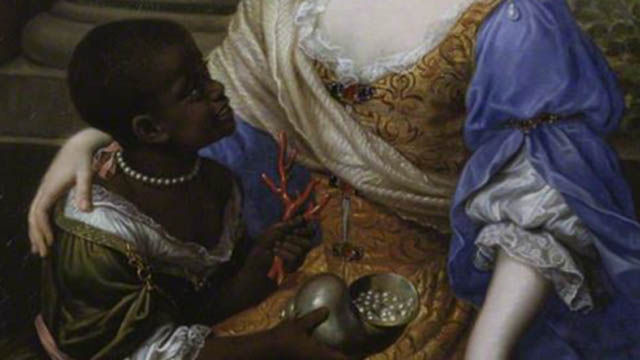
-
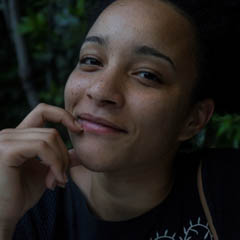 Leonie Chima Emeka
Leonie Chima EmekaIn 1682 a prominent French portraitist named Pierre Mignard (1612-1695) painted a large canvas of Louise de Kéroualle, Duchess of Portsmouth (1649-1734), one of many mistresses to King Charles II of England. The artist depicts her in a richly adorned dress, sitting on an upholstered bench against the background of a stone balcony that opens to a stormy sea. With one hand Louise de Kéroualle gently embraces her page, an African child. The fashion to hold black slaves, especially children, climaxed in the late fifteenth century, but also throughout the seventeenth century slaves were present in wealthy European households as servants.
Mignard’s painting lines up with other paintings of prominent provenance featuring African pages as an attribute of wealth: Titian’s Portrait of Laura Dei Dianti from ca. 1523 and Cristovao de Morais’ Portrait of Juana of Austria from 1535-1537 both depict an Italian respectively Portugal-based noblesse in company of an equally well dressed young African page. Like the duchess Louise de Kéroualle, Duchess of Portsmouth the young female page, whose name is not conveyed, is dressed in beautiful European clothes. More peculiar however is the child's expensive pearl necklace. In the late seventeenth century pearl necklaces were a fashionable accessory for European women of extensive wealth. Imported from the Caribbean, Pacific and Indian Oceans initially by Iberian traders — later also by British and other European traders — the white, oval shaped pearls were an important trading good and symbol of prosperity and wealth. As such the valuable jewellery seems rather out of place on the neck of the page. It seems much more appropriate on the neck of the Duchess.

Fig. 1, detail
Compared to her page, the Duchess’s jewellery appears almost humble, as she wears the same pearls on small earrings. In a much higher amount, the same pearls are mirrored in a shell that the laughing child offers to her serious looking owner. In the other hand the page holds a red coral; a material that has become exceedingly valuable in many regions of West Africa. The most famous example is the kingdom of Benin (today in the region of Nigeria), where the red coral rose to a symbol of royalty and was appointed for the exclusive use of the Oba (Benin sovereign) and his household. The red coral in the hand of the African child connects the picture to the intercontinental trading network between Europe and Africa.
European merchants traded red corals from Mediterranean regions with West African traders or sovereigns in exchange for goods such as gold, ivory or slaves. In all her appearance, from her beautiful dress to her valuable attributes the representation of the African page refers to the trading network, which preceded her presence in the picture next to the Duchess. The servant acts as an attribute of wealth — well-dressed she represents the wealth of the person and house to whom she is made to belong to.
On the other side of the equator, there can be found relief works to a similar effect that allows us to further investigate the historical intercontinental trading network. Many brass reliefs, produced by the royal brass workshop in the kingdom of Benin in the 16th and 17th century, acted as attributes of economic and political power of the royal court. They represented the influence of the sovereign and the wealth of the palace where they were exhibited. A large corpus of brass plagues adorned the palace, which was the economic, religious, political and administrative centre of the kingdom of Benin. One example, currently in the collection of the anthropological Museum in Berlin, depicts two dignitaries flanked by two Omadas (palace servants) before the background of the royal palace. All of them wear pearl ruffs and headgear made of corals. Similar to Mignard’s painting, the corals also function as indicators of the far reaching diplomatic relationship of the Benin palace and symbols of the interregional economic influence of the royal household. The main trading partners to the kingdom of Benin had been Portugal and later Great Britain to whom they sold slaves, gold and ivory in exchange for brass, corals and weapons. However dissimilar the artistic technique of oil painting and brass relief might seem, in the coral they share iconographic meaning. The commodity of red corals make reference to the trading network between Europe and West Africa.

Fig. 2, detail
The trading relationships between Great Britain and Benin which were highly profitable for the rich and powerful in both kingdoms would change successively to an exploitative relationship; the final step to colonial subjugation was the British punishing expedition in 1897, which ended in the destruction of Benin and the robbery of the brass relief plaques to London, from where they were sold to institutions and private collections in Europe, the two Americas and Australia. Until today the royalty of Benin as well as the state Nigeria ask for restitution of the brass relief plaques and other works which were taken by the colonial power of Great Britain.
Peculiar about the Benin brass relief are the Portuguese heads that are engraved on the four palace columns in the background of the effigy. The Portuguese have a distinctive appearance with long straight hair and astonishingly long, pointed noses. In other reliefs the Portuguese are often depicted with Manillas, a ring in the shape of a horseshoe. The foreign metal of brass was imported to Benin by Portuguese traders. The valuable material, an alloy of copper and tin, supplemented cowrie shells as currency in the kingdom. As such the reliefs which adorned the royal palace were made of a material that circulated as money. The Portuguese merchants are depicted on a material which was an important means of their trade. Similar to the child holding the means of her enslavement in her hands, also the Portuguese heads are represented on and with the commodities which preceded their appearance in the imagery. Also British traders were depicted on brass reliefs, mostly with the attributes of armours, weapons and helmets.
At first glance the painting and the brass relief do not have much in common and a comparison seems rather pointless. One is an oil painting by one of the most famous portraitist of his time. The other was made by the prestigious royal brass workshop of the kingdom of Benin. When taking a closer look, however, one finds that both images — however different the outcome — both reveal similar means of constructing an image and its motive behind. The assets and people flanking the depicted patronages in the center of each image — on the one side the pearl necklace, red coral and the enslaved child, on the other the red corals, the manillas the Portuguese heads — build a network within the image that reflects on the economic trading network between both kingdoms. As both images were produced in the context of a royal court, and both intend to depict their far reaching trading relations, they may serve as documents to the complex histories and relations between the two kingdoms and if seen as such, may illuminate an important part of shard history that preceded the colonial era.
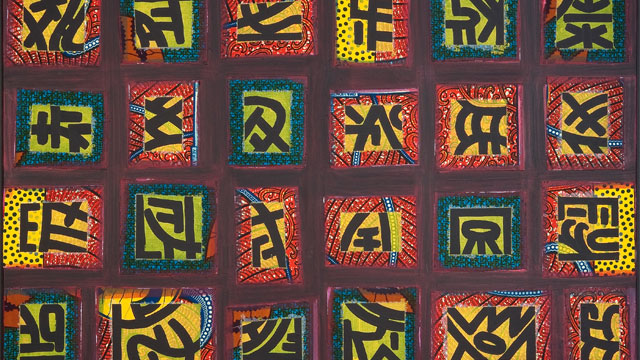
-
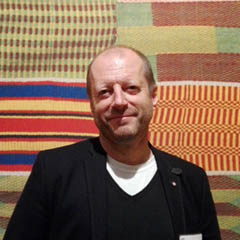 Stefan Eisenhofer
Stefan EisenhoferIn 1971, El Loko moved to Germany to study sculpture, painting and graphics with Joseph Beuys, Rolf Crummenauer and Erwin Heerich at the Staatliche Kunstakademie Düsseldorf, where he graduated as a master student in 1977. He created woodblock prints, sculptures, installations, drawings, graphics, photographs, paintings and performances in almost four decades, using an extremely wide range of working techniques and forms of expression. El Loko participated in numerous solo and group exhibitions on several continents and his work has been widely published. In addition, he repeatedly organised workshops for artistic and intercultural exchange in Europe and Africa.
El Loko, who lived and worked in Cologne (Germany) until his death in 2016, was one of the first African artists to venture into the art worlds of the West. His autobiographical book "Der Blues in mir" (The Blues in Me) - published in 1986, written in German and illustrated with woodcuts by the author - vividly recounts how he had to fight for and invent his identity and his path as a human being and artist at that time.
In Germany, El Loko experimented from 1972 onwards primarily with woodcuts before turning to painting in the mid-1980s. His series "Landschaften" (Landscapes), which interspersed colourful architectural elements with human faces, bodies and body parts and aesthetically dealt with the theme of threat, confusion and alienation in an urban context and how to overcome them, subsequently gained great popularity.
Subsequently, it became characteristic of El Loko that, for all the diversity of his work, he took up certain themes almost cyclically. His series of works "World Faces", "Cosmic Letters" and "Figure Landscapes" played a special role here, which he reinterprets again and again, seeking different perspectives and positions. Through a non-hierarchical treatment of the face or the bust portrait, the "World Faces" convey the vision's striving to abolish the differences between people of different origins, world views and gender. A utopian striving for a universal language and a global identity manifests itself in his series of works "Cosmic Letters", in a sense an alphabet of his own characteristic visual language. In paintings and pigmented steles made of wood and steel, El Loko combines ornaments, figurations, signs and ciphers of different origins and strives, by means of this symbolic sign language, for an art language that can be understood worldwide and for the construction of a meaningful world of his own.
Inspired by Joseph Beuys and the dissolution of the conventional bourgeois concept of art, El Loko also turned to temporary art actions from 1976 onwards. He developed his "duel performances", which combined poetry, song and drum rhythms and were characterised by the principle of rhetorical surprise and immediate reaction to each other.
In his installations, El Loko deals primarily with Western images of Africa and clichés in an often provocative manner. In his popular work "How to explain pictures to a pack" (1995), he ironically takes up Joseph Beuys' action "How to explain pictures to a dead hare" (1965): A gathered pack of 70 animals stands in front of a map of Africa hanging on the wall, composed of various elements and symbols like a puzzle. With this installation, El Loko not only posed questions about images of Africa, but also traced his own situation at the same time: The pack as the world that lies outside of him looks on the one hand expectantly, on the other hand more or less uncomprehendingly at him as an artist. In "The eternal mask" (2006), the artist painted 50 portrait photos of Africans with acrylic, alluding to Western views of African people: Through the disfiguring colour, the faces lose their individuality, become anonymous and frightening. In his work "Africa down", partly done in Cologne (Germany) and finished in Cape Town (South Africa), El Loko addresses the positions of Africans in the world. The visitors to the exhibition were forced to walk on 256 photos of Africans and 53 African national flags lying on the floor, through which the artist makes the oppression and devaluation of Africa and its people through colonialism and through corrupt, selfish and ignorant African rulers almost physically comprehensible. His provocative installation "Mohrenköpfe - Hohlköpfe" (2005), which questions the role of kleptomaniac politicians of black skin colour who systematically ruin their own continent and do not care about cultural matters or the economic or social development of their countries, aims in a similar direction. As in all his works, El Loko was not interested in simplistic answers or accusations, but in a serious examination of painful and uncomfortable topics as well.

Image 1: Vogelakrobatik, 1996, 250x30x20 cm // Image 2: PE.VO.TO.7, EL Loko, 2017, 135x99 cm // Image 3: El Loko at Museum Fünf Kontinente (Karin Guggeis, El Loko, Stefan Eisenhofer) // Image 4: Dokponou (Der Gescheiterte - The failed), El Loko, 2013, Acrylic on canvas, 80x120 cm. // Image 5: Vogelakrobatik, 1996, 250x30x20, Museum Fünf Koninente, Munich. All images: Copyright Museum Fünf Kontinente, Munich.

-
 Esther Kibuka-Sebitosi
Esther Kibuka-SebitosiThe Mandela House is located in Vilakazi Street 8115, Orlando West, Soweto. Now a museum, the Mandela House Museum is where the struggle icons Winnie Madikizela Mandela and her husband Nelson Mandela lived. There, they brought up their two daughters Zenani and Zindzi. Nelson Mandela spent little time at the house as he had to go underground during the struggle between 1946 until 1990s. He was arrested in 1962.
Winnie Mandela had to bring up the children while continuing the struggle. She was banished to the Free State town of Brandfort in 1977. Winnie Mandela was born in Mbongweni village, Bizana, Transkei on 26 September, 1936. She married Nelson Mandela in 1958. The marriage to a freedom fighter was a lonely one. The police often raided the Vilakazi Street 8115. Her husband was absent with meetings and amidst the turbulence she had to bring up the girls. In October 1958 she took part in the lady’s march to protest against pass laws. This was similar to the one in 1956 in Pretoria. She was an anti-apartheid activist and politician. She divorced Nelson Mandela in 1996 and was the minister of arts and culture from 1994 to 1996. She led a quiet life and on her 80th birthday, she was honored by family friends and politicians, including Julius Malema and the future President of South Africa, Cyril Ramaphosa, and Patricia de Lille, former mayor of Cape Town. This demonstrated her relationships with all political parties. She passed on 2 April 2018. A true mother of the nation.
Nelson Rolihlahla Mandela was born in Umtata on 18 July 1918. At the famous Rivonia trial, Mandela was brought before the court for his involvement in sabotage and violence in 1962. He was imprisoned for 27 years in total. He was first sent to Robben Island but later transferred to Victor Verster Prison in 1988. He was released from prison after 27 years in 1990 and he came home for only 11 months, after which he moved to a bigger home in Houghton, Johannesburg. The former State President, de Klerk, ordered his release and removed a ban on the political movement the African National Congress. Mandela served as President of the African National Congress (ANC) from 1991 to 1997. His Presidency is known for his legacy in ending racism, trying to fight poverty and inequality. He was dreaming of a nation free of racism with all people living together with all colours; the so-called Rainbow Nation. He wanted freedom without violence but the oppressors started killing his people. He then formed the Umkhonto we Sizwe, a military arm of the ANC. Nelson Mandela received a Nobel Peace Prize in 1993 with former state President of South Africa, Frederik Willem de Klerk.
The Mandela House has four bedrooms and one of them goes down memory lane. It brings both tears and relief, knowing that the Mandelas survived petrol bombs and bullets in the house during riots. The Mandela House Museum contains several honorary degrees awarded to Nelson and Winnie Madikizela-Mandela. It also hosts artefacts, memorabilia and artworks including “Tears of Freedom” by Leonard Katete, a Ugandan living in Kenya. The museum is a monument of history, harbouring family photographs dating back as far as the 1950s.
The Nelson Mandela Museum is open for public tours and photographs are allowed.
Vilakazi Street was also home to Bishop Desmond Mpilo Tutu, who was an Anglican Bishop and theologian well known for his humorous and critical speeches that call to order the freedom fighters. He played a major role during the anti-apartheid and human rights struggle for South Africa. Bishop Desmond Tutu was honoured with a Nobel Peace Prize for his achievements in opposition to South Africa’s brutal apartheid regime. He took a non-violent yet fearless stance against the oppressors, a characteristic that made him stand out amongst the liberation leaders. He articulated the sufferings of ordinary South Africans in clear manner and at the same time spoke up about the oppressive regiment. It is not surprising that Bishop Tutu’s Peace Prize paved the way for strict sanctions against South Africa in the 1980s.
Bishop Tutu chaired the Truth and Reconciliation Commission in 1995. Due to the fact that South Africa had suffered many wounds during apartheid, the many crimes committed by white rulers and atrocities against the black majority, the commission was established to “enable South Africans to come to terms with their past on a morally accepted basis and to advance the cause of reconciliation." The lack of social cohesion mainly due to racial disharmony led the newly elected Government led by Nelson Mandela to put together the Truth and Reconciliation Commission (TRC) under the chairmanship of Bishop Desmond Tutu. Cases such as the Soweto Riots (1976), in which Hector Pieterson was killed, were discussed; the Sharpeville Protests (1960 and 1984) and a number of other prominent cases were dealt with. Forgiveness was recommended as the fundamental condition of healing.
Vilakazi is also known for the Hector Pieterson Memorial and Museum, which were established to remember the Soweto uprising on June 16, 1976. Hector Pieterson was shot during the revolt on the day when schoolchildren demonstrated against the use of Afrikaans as a language of instruction for middle and secondary school.
Vilakazi Street and the Nelson Mandela Museum attract a number of tourists. The street is vibrant with good local food, music and dance. It has created small businesses in the township and is thereby contributing to the local economy.
References
- https://www.sahistory.org.za/people/winnie-madikizela-mandela
- https://www.sahistory.org.za/article/tutu-and-his-role-truth-reconciliation-commission, retrieved 26 January, 2019
- https://www.nobelprize.org/prizes/peace/1993/mandela/biographical/ , retrieved 26 January, 2019
published April 2020
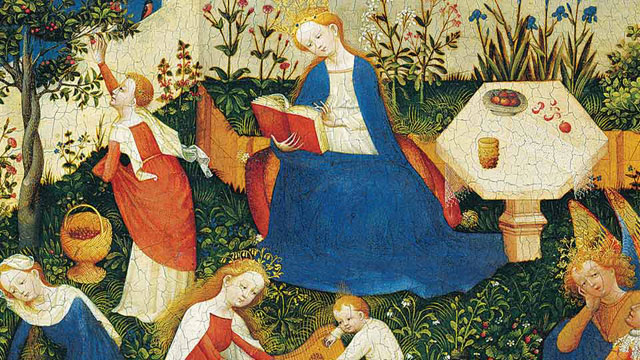
-
 Constanze Kirchner
Constanze KirchnerThe motif Paradiesgärtlein originates from Christian imagery. It was painted many times in the 15th century, especially in Italy and along the Rhine. The enchanting devotional picture shows Our Lady enthroned on a bright red cushion in the middle of the garden, tall, in a radiant blue robe, as the figure dominating the picture. Her head is bowed and she is reading a book. A crown with leaves distinguishes her as the Queen of Heaven.

The Christ Child is playing at her feet. The other female figures in the left half of the picture are also to be understood as Holy Virgins because of their splendid clothing. A clear assignment of these saints is uncertain (Keazor 2001, p. 231 ff.). St. Barbara is probably drawing water with a golden spoon from the (life) well in the foreground on the left, because legend attributes to her miraculous powers in overcoming a period of drought. And it could be St. Dorothea who picks cherries from the (life) tree and puts them into the basket, although – according to the legend – the cherries are handed to her (ibid.). The figure holding the plucked instrument (psaltery) to the infant Jesus is interpreted as St Catherine of Alexandria or St Agnes. She is distinguished by a golden diadem with floral decoration and by her flowing hair (ibid.).
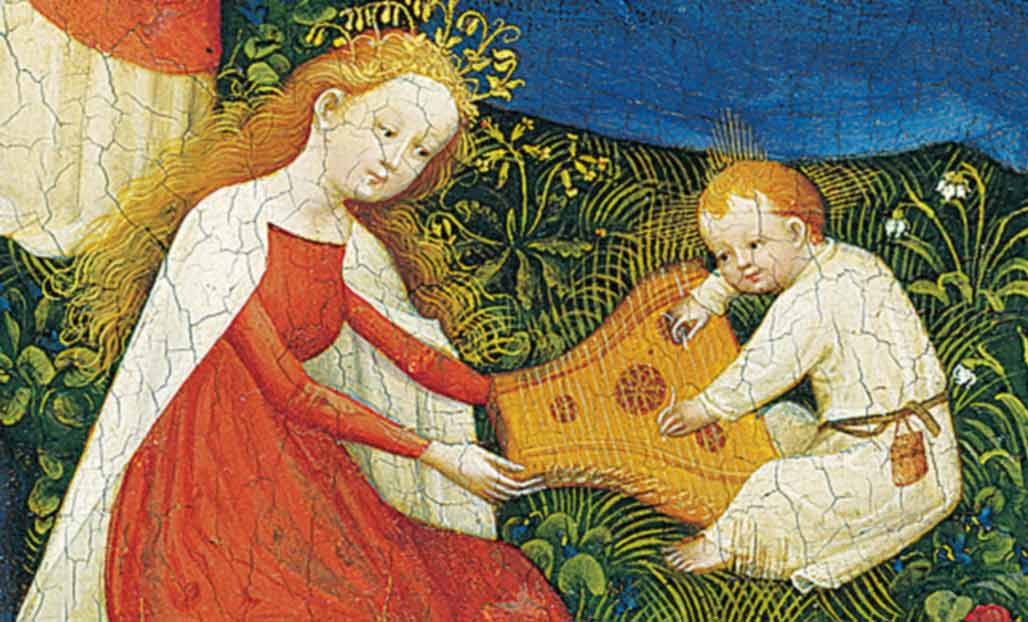
The group of figures on the right consists of the pensive Archangel Michael, also crowned with a golden plant, and – facing him – St. George in chain mail, next to whom lies a small dead dragon. A third figure, probably St. Oswald, bends down to both of them, as a raven peeps out from behind his knee (ibid., p. 233). He is holding on to the tree of knowledge. Saint George has of course already conquered the dragon, which stands for evil, and looks expectantly at Mary. Under another tree sits a frightened monkey with the distinct features of the devil.
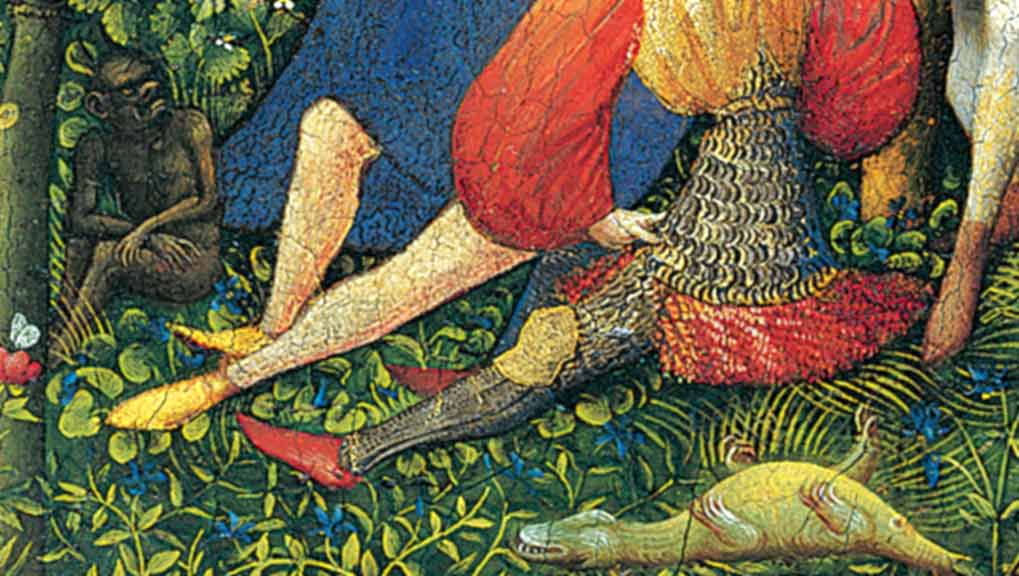
According to biblical legend, he is held in check by the Archangel Michael, the fighter against evil and guardian of paradise. The apples mentioned in the creation story, which tempted to sin, lie ready on the hexagonal, bright white stone table. Wine and bread refer to the Last Supper. The table is compositionally remarkable, dividing the male group of figures from Mary.
Both paradise and the garden stand for a protected, enclosed and bounded place that provides food and water as well as peace and quiet. In the garden, flowers, herbs, fruits and grasses blossom and grow, spanning a supra-temporal, idealising arc from spring (lily of the valley) to midsummer (roses). Especially the white-flowered plants, such as the lilies, stand for the purity of Mary. Just like the plants, twelve birds of different species are depicted in detail and realistically - and thus identifiable (Brinkmann/ Kemperdick 2002, p. 93).
Compositionally, the colour scheme dominates the picture: the secular blue sky frames the graceful Mary leaning towards the book, whose blue robe corresponds with the blue clothing of St Barbara and that of the archangel. The white garments of the saintly figures, the wall in white tones and the light-coloured table enclose the baby Jesus, also dressed in white, in their midst. At the same time, the bright red of the virgins' robes, the red of Mary's book, her seat cushion, St. George's sleeves, the blossoms and fruits reinforce the clear composition, which is additionally underlined by the complementary green of the plants and once again places Mary at the centre of the picture's action. The spatial effect is essentially determined by groupings and overlaps of the figures and pictorial objects; there are no shadows in the heavenly world.
The figures appear relaxed, peaceful and serene, the colourfulness and the abundance of vegetation with springing water embody serenity and earthly happiness. The Holy Virgins are engaged in an occupation that does not cause any trouble. The clothing and hair ornaments are reminiscent of courtly life in a well-tended castle garden. This is also indicated by the killed animals, which are not usually part of the heavenly world, as well as a tree of knowledge that does not bear fruit. This combination of the divine world as a heavenly paradise with the impression of earthly reality characterises the picture to a great extent and thus lends it a peculiar mood, explosiveness and tension in its contemplativeness.
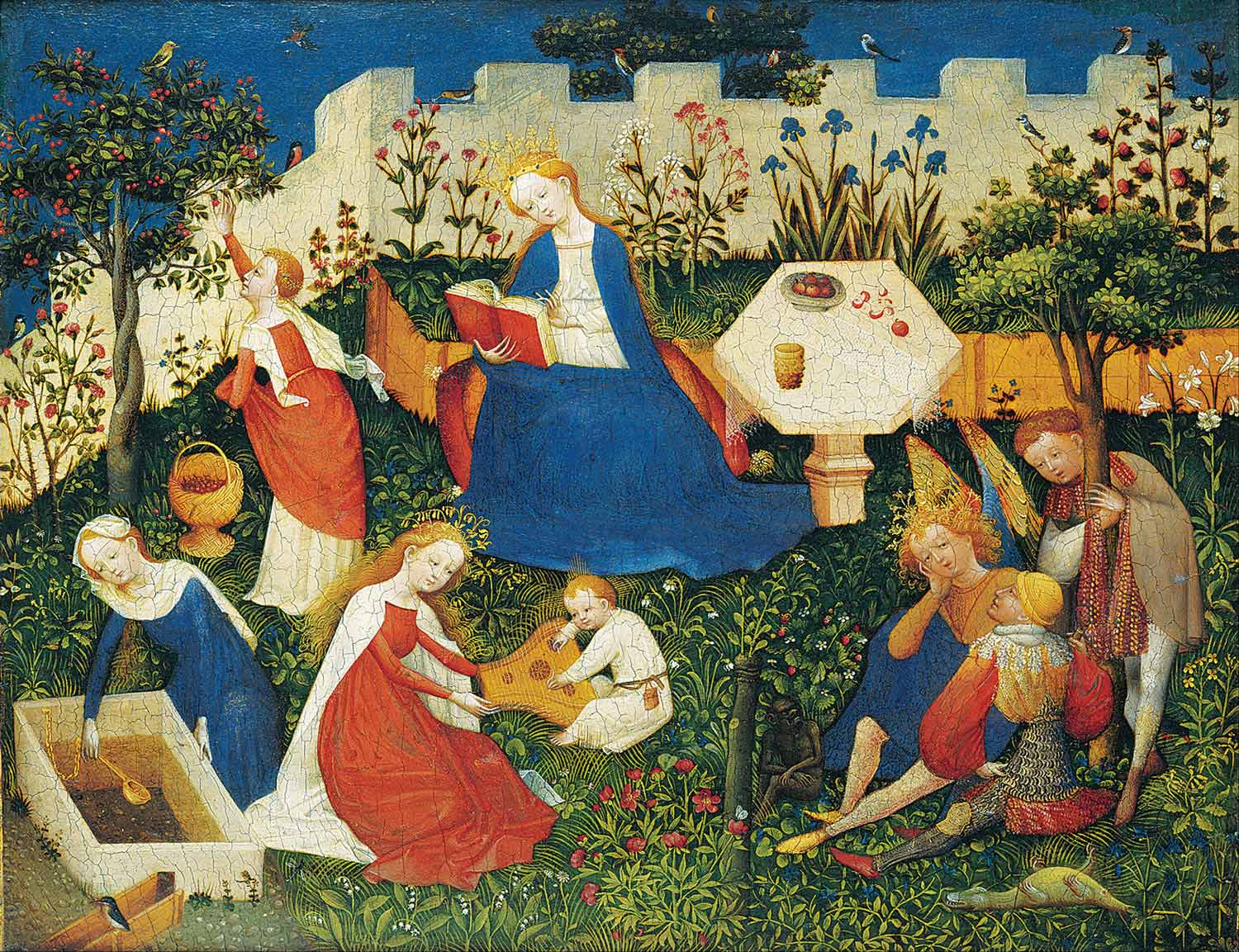
There are numerous studies on the painting technique, the use of colour, the symbolism, the identification, function and activities of the saints, the plants and animals. Also research has been done on provenance in the monastic context or on the attribution of the picture type as ‘hortus conclusus’ (closed garden as a symbol of Mary's virginity). ‘Hortus conclusus’ is often alluded to in paintings of Mary - a garden with an enclosure and with certain plants that refer to Mary (lily, rose, but also lily of the valley or strawberries) - as can also be seen in the Paradiesgärtlein. At the same time, however, the Paradiesgärtlein evokes associations with the gardens of pleasure and love, as found, for example, in engravings by the Master of the Gardens of Love in the mid-15th century (http://bildersammlung-prehn.de/de/node/946, 06.03.2019) - and in this ambivalence once again clearly emphasises the link between divine and earthly worlds of life.
What does the Paradiesgärtlein mean?
The Paradiesgärtlein defies a clear interpretation. The duality of good and bad is hinted at, but the victory of good in paradise over evil or sin – represented by the dead dragon and the vanquished devil – is clearly emphasised. However, the ideal state in paradise is not unbroken: With their tilted heads, the figures in the painting appear pensive, as if they know that there is a life of tormenting reality outside their shelter. The garden as a retreat from the dangerous outside world protects, where in everyday life there is oppression, fear of hunger or sudden death. With the devotional image, religion offers comfort in the promise of salvation to a paradisiacal existence in which the threatening is banished. The imponderable reality is countered by the protective enclosure of the massive wall – outside, the world is full of danger.
The devotional image builds a bridge from this world to the hereafter and vice versa. It opens up a view into eternity and thus into a transcendental space of experience that lies outside finite everyday experience. Visual means are used to create access to the divine, an access that at the same time recalls one's own experience of the world and yet enables the imaginative experience of transcendence.
As an anthropological constant, the idea of a transcendent reality, which usually characterises life after death, runs through many cultures. Experiences of transcendence are described in many ways and often refer to extrasensory perceptions and supernatural forces to which the respective belief is tied.
Why is the painting interesting for art education?
Transcendence and spirituality are often at the core of cultural traditions - in this case Christian heritage. It could be exciting to enter into a conversation about this and to draw on examples of non-European cultural testimonies of faith from the 15th century. In this way, world history can be opened up and a Eurocentric perspective on the history of Western art can be expanded. (As the epitome of European beliefs about the Garden of Eden, the work also stands at the end of the medieval conception of nature and art.)
The image announces divine truth: In paradise, the world is in order. Outside the garden, man lives in untamed nature and is exposed to all incalculable events. With its religious context of origin, the painting's function is primarily to depict an otherworldly, divine order that illustrates the promise of salvation after death in contrast to the earthly hardships of the late Middle Ages. But the pictorial interweaving of earthly and heavenly life already points beyond the late medieval conception of the image. The shielded divine world view experiences ruptures, opening and change.
Not only can the work paradigmatically explain the end of the Middle Ages and the development of art history. Furthermore, the it invites discovery: plants can be identified, animals and groups of figures with their actions tell stories that can be researched, re-enacted, developed further and transformed into the present day. And last but not least, the linking of divine and earthly reality allows analogies to virtual and real, individual and global worlds of life.
References
- Brinkmann, Bodo/ Kemperdick, Stephan (eds.): Das Paradiesgärtlein. In: German Paintings in the Städel: 1300 - 1500, Catalogues of the Paintings in the Städel Art Institute. Frankfurt am Main/ Mainz 2002, pp. 93 -120
- Leaflet of the Städelsches Kunstinstitut on the work: "Das Paradiesgärtlein", c. 1410-1420. Upper Rhenish Master, mixed media on oak, 26.2 x 33.4 cm. Städelsches Kunstinstitut, Frankfurt am Main o.J., o.S.
- Historisches Museum Frankfurt am Main, Prehn'sches Kabinett. http://bildersammlung-prehn.de/de/node/946 (06.03.2019)
- Keazor, Henry: "Manu et voce". Iconographic Notes on the Frankfurt Paradise Garden. Original publication in: Bergdolt, Klaus/ Bonsanti, Giorgio (eds.): Opere e giorni: studisu mille anni d'arte europea dedicati a Max Seidel, Venezia 2001, pp. 231-240. http://archiv.ub.uni-heidelberg.de/artdok/2344/1/Keazor_Manu_et_voce_Ikonographische_Notizen_zum_Frankfurter_Paradiesgärtlein_2001.pdf (07.03.2019).
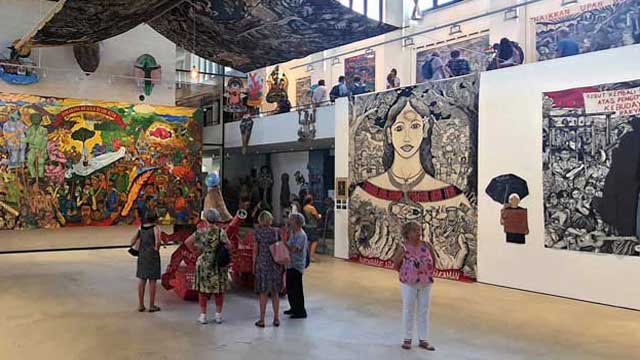
-
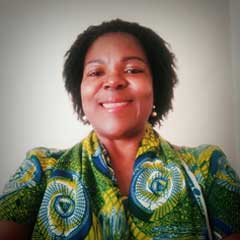 Jane Otieno
Jane Otieno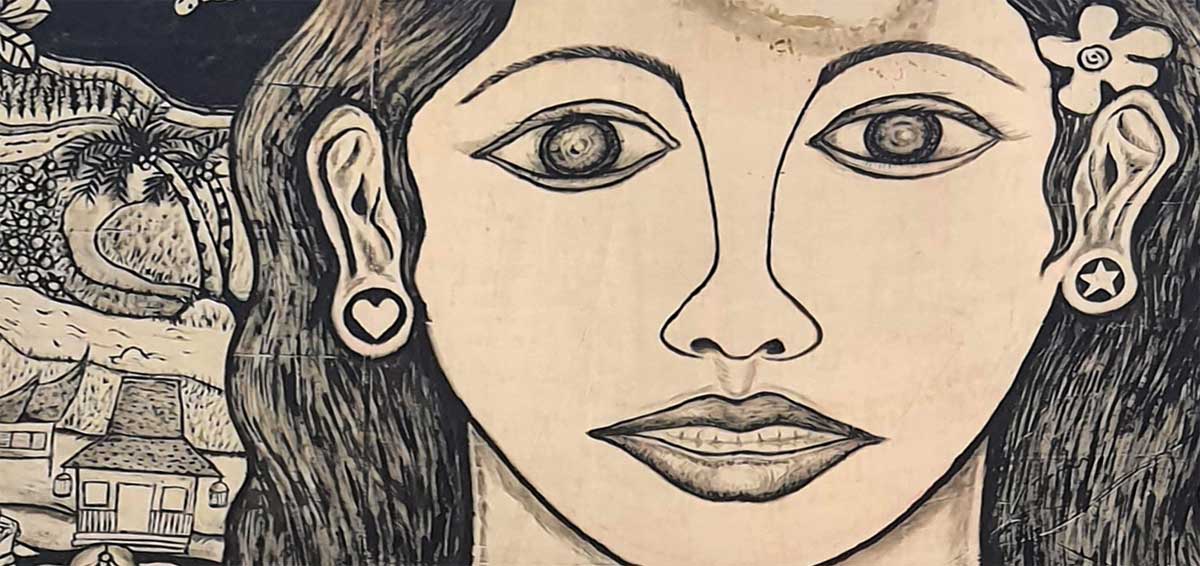
Detail (Photo: Avi Sooful)
The woman who seems to be in a reflective mood, shows a reserved demeanor and sadness. The face is not shaded, maybe to allow the viewer to project themselves more into the work and to give a clearer interpretation of the mood. The work done in ink probably with a filt-tip or a ball pen by use of line technique is effectively rendered in flowing, horizontal, curved and vertical manner to project her character and what she stands for.The good grasp of the leading lines sets the work in time and emotion. It creates a feeling of harmony between the individual and her surroundings and successfully portrays an element of resiliency in the midst of uncertainties. The subject’s predominance intimates to the viewer her feeling of absolute command of her surroundings with her well-coordinated and symmetrically placed figure. The woman communicates beyond the physical likeness and tells the viewer something about her character. There is no reason not to believe that she is protective of her space, bears compassion, at the same time, not afraid to share her feelings, pain, emotions and empathy that connects with others in openness.
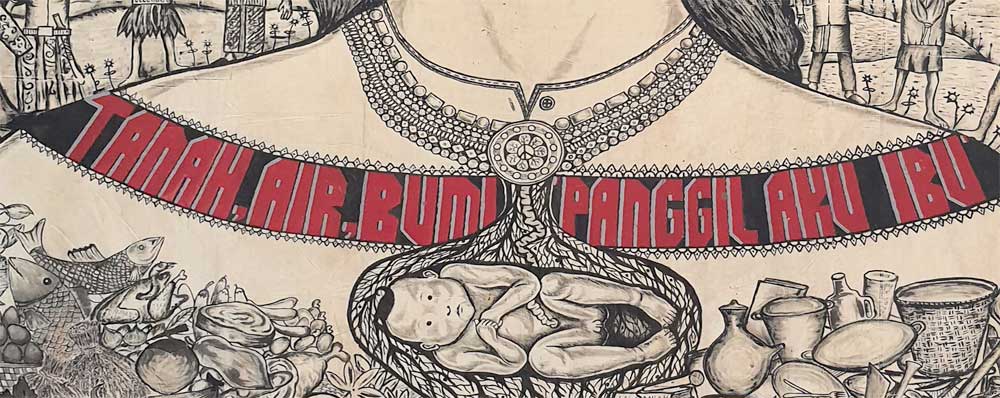
Detail (Photo: Avi Sooful)
The writings written in red color, that reads ”Tanah, air, bumi, panggil, aku ibu” (Indonesian, to be translated as ”land, water, earth, call me mother”) around the neck is glaring and tends to hold the entire work in place. It is a strong message intended to communicate to the viewer on environmental awareness and conservation of natural resources. Perhaps a deliberate attempt by the artists to draw attention to the area, helping to convey thematic ideas that distinguish the woman from the rest of the picture. The necklace has a pendant with a distinct shape of a baby, probably in the womb, is a symbolic reflection of continuity and a cry for protection for all, including the unborn. They too matter! The fine textured background has other people, holding hands in solidarity, a sign of peaceful co-existence and social commentary on issues faced.

Detail (Photo: Avi Sooful)
The woman is against the destruction of what she holds dearly, and can foresee everyday activities such as fishing destroyed. The trees create balance in the work, while Rhythm and movement run across the canvas with reflection of real life situations, with a natural background that enhances the theme. The work’s portrayal of versatility and fluidity cannot be ignored. The relationships and interactions between the activities in the background and the main figure creates a complex meaning on nature’s importance for the human survival. The creatively rendered items held on both hands form part of the attire, thus creating a visual interest that has symbolic value. The firm, full, protective hands, held close to her heart, are symbolic of the strength of a woman, giving an impression of a mother, caregiver and a nurturer. The woman, in her use of direct gaze says “This is who I am” with her direct expression. She attempts to explain herself, to unravel her character, to invite the viewer to her space even if only for a moment.
The drawing which is both engaging and intriguing, depicts the experience of understanding the environment and its connection to everyday life, “the goodness of mother earth”. It shows unity of purpose whereby different cultures from different continents come together in solidarity to support a common cause as the bottom inscription says: “Masyarakat adat merayakan keberagaman” translated “Indigenous people celebrate diversity”. The work substantially cultivates through an emotional approach the development of a connection of various cultures with nature for a common good. It underscores the importance of art as best suited to examine human existence, and that of earthly surrounding that reflects in everyday experiences and confronts the terror of the universe.

Detail (Photo: Avi Sooful)
Portrayal of how women play important roles in the construction of social and cultural meaning of different societies is evident. The realization of the goodness of Mother Earth is also shown to be a collective responsibility of all. The subject, executed from frontal view, is a woman in deep thought and a suggestion of underlying hidden pain and struggle for social justice that is explicit in various cultures. Her pain in addressing the social evils is captured more in her facial expression. Art as an expression of what it means to be human, is seen in the work that has religious expression, cultural undertones and creative energy. The artwork depicts a mysticism that is fabricated and intertwined in the socio-cultural realm, religious beliefs within different cultures. A view shared by Kumail (2017) who notes that art is a product of society’s members and so also reflects the culture and traditions of that society. Community members help to shape and evolve their culture through their efforts in the production of art. At the point when a society establishes its own particular character, the next generation is born, absorbs this identity, helps to spread it, and educates the world about it.
The black and white drawing portrays collective and creative abilities among different artists, with a show of a sense of togetherness that gives an idea of communal activity. The huge drawing distinctively points to the art of collaboration and understanding between different artists coming together for a common goal, which in turn, bonds them towards a shared future. The artists show their understanding of not only an aesthetic sensibility, but also an astute understanding of the local context, relationships and a co-creation process that engenders collective participation and ownership. The group work is a clear indication that artists do not function in isolation, and can use the visual language to transform a society. The work gives an impression of artists having good time as they work on one project thus creating a unique value of an artistic approach to community life and development. Lee, Lim, Liang, Zainuddin and Alhadad (2020) concur by stating that social issues are often unpacked when artworks are presented for sharing, eliciting further response, offering new opportunities for clarification, and imagination. The process thereby facilitates co-creation and joint decision-making because the finished product is not actually ‘finished’ as it continues to elicit reflection and dialogue. The arts are able to engage community in imaginative ways, creating a space for dialogue on community issues faced and also expanding the horizons of possible solutions.
CONCLUSION
Art is depicted in this work as a means of dealing with uncertainties and envisage of better future. The work expresses emotions that are not necessarily spoken but are powerfully rendered. The subject, overwhelmingly is suggestive of what the innate emotion is. The work brings in the significance of women’s voices and contributions as very critical in advancement of our societies. The artwork shows the diversity of artistic expression and how artists collectively use the visual language to transform a society. Different artists working together in one canvas, bring in different perspectives to properly convey the woman’s story that cuts across different cultures. The collaboration among the artists is a sure way of harnessing strengths and sharing resources through processes that foster mutual respect, shared decision-making and open communication. The artists show their understanding of not only an aesthetic sensibility, but also an astute understanding of the local context and a co-creation process, that gives rise to collective participation and ownership in development of society. Can interdisciplinary approaches to art appreciation widen perspectives of and sensibility to the meaning of art? Can collaborative creation of artworks across many media offer many avenues of self-expression and, is it an effective way in the teaching and learning of art in our institutions? How can art educators work collaboratively and explore the use of multicultural and cross-disciplinary teaching strategies in art education?
REFERENCES
- Kumail M. Almusaly (2017). Painting our conflicts: A thematic analysis study on the role of artists in peacemaking and conflict resolution. Nova Southeastern University. Department of Conflict Resolution Studies. College of Arts, Humanities and Social Sciences.
- Lee, Lim, Liang, Zainuddin and Alhadad (2020). The unique value of the arts in community development: A case study of ArtsWork Collaborative. Institute of Policy Studies, Lee Kuan. Yew School of Public Policy, National University of Singapore & Singapore University of Social Science.
Photo credits
Belinga, R.C. Institute of Fine Art Foumban, University of Dischang, Cameroon & Sooful, A., University of Pretoria, South Africa.

-
 Njeri Gachihi
Njeri GachihiMeaning
Ingolole serves several purposes in the circumcision ritual. It serves to mystify the ritual and more so the initiate. While wearing almost identical masks, the initiates become undisguisable in this full seclusion regalia. It is believed that even evil spirit sent would have a problem identifying the target and hence revert to sender. On the other hand, the masks also serve to wade off and scare women and children who are not supposed to interact with them during the seclusion. Even when they go out of the forest and make processions on major roads singing and dancing, the women and children should stay away. Part of the chants, dance and singing done is meant to break loose ‘childhood/boyhood’ which is symbolized by the breaking of the crown - palm reeds attached on the ingolole. Some do manage to break it which is a sign of physical strength and masculinity as well as spiritual and ritual wellbeing.
The dance that the initiates perform is know as bukhulu/bakhulu which means elder. Bukhulu henceforth, cosmologically viewed, means unity with the ancestors and is also used to symbolize fertility or the life-giving seed (seminal fluid). The effort of breaking the reed henceforth translates into becoming an adult and gaining all the permission to undertake the adult roles and the responsibilities associated with it. This means that this right gives the initiate the ability and power to engage in full conjugal and social responsibility. Last but not least, the initiates spend a lot of time in the open. Ingolole then serves to protect them from the scorching rays of the sun, protect them from sweating too much when dancing and at night serves to protect them from biting cold, wild animals and insects.
 Cutout: Presentation at Nairobi National Museum, Ingolole (Circumcision Mask), Museum Fünf Kontinente and Nairobi National Museum. Photo: Njeri Gachihi.
Cutout: Presentation at Nairobi National Museum, Ingolole (Circumcision Mask), Museum Fünf Kontinente and Nairobi National Museum. Photo: Njeri Gachihi.Is Ingolole an Artwork or a Ritual Object?
The ingolole as a form of ritual art, seems to bear witness to the resilience of the Tiriki culture; what Bakhtin might have called the 'carnivalization of the social order'. A central reason for using this mask, it seems, is to affirm the Africanization of the arena, both public and private, where a culturally appropriate image reigns. The mask usually invests the wearer with signs of power over evil, while modelling him on the norms of masculinity and respectability. The ingolole is one item of art that is yet to be transformed from artefact to curio (or momento). This is apparently so because its mechanism of distinction is yet to mobilize political as well as economic categories. This mask resonates well with the notion that visual art communicates cultural values. It is a complex ideological communication that derives its symbolism and references from culture. Yet it also draws its form and content from the fundamental tenets of the magical appropriation of power through the manipulation of depiction and elucidation.
Therefore, the Tiriki Circumcision mask, Ingolole is not only an artistic representation. It is a ritualistic object that embodies several meanings. It is known to invest the wearer with signs of power over evil - in that the wearer is set apart from his enemies that would intend to inflict harm. It is believed that the evil spirits sent to cause harm on the initiate would find it difficult to positively identify the initiate. At the same time, it causes mystery around the initiates making their looks terrifying and hence keeping off those who are not permitted to come near newly initiates. Physically, it protects the young boys from scorching sun, biting cold and insects while in seclusion. Once ingolole is used, it is kept and passed on from generation to generation. A used one is still valuable to the family and must be kept safely to avoid causing harm to the members of the family. Hence, this is an item of art that cannot be easily transformed from a ritualistic artefact to a simple curio craft.
There are not many Ingolole’s in our Museum in Nairobi. Two are however exhibited in the permanent exhibition, Cycles of life, at the Nairobi National Museum.
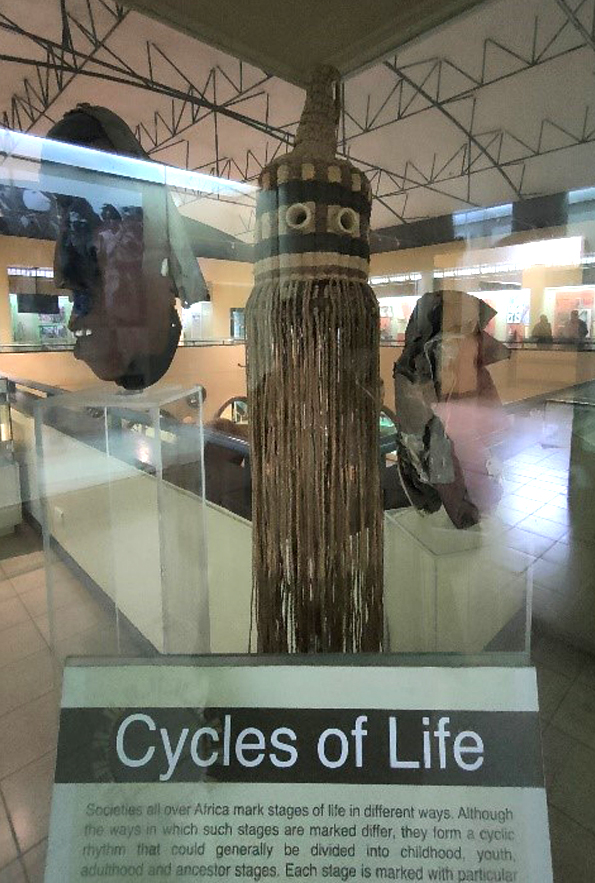 Presentation at Nairobi National Museum, Ingolole (Circumcision Mask), Museum Fünf Kontinente and Nairobi National Museum. Photo: Njeri Gachihi.
Presentation at Nairobi National Museum, Ingolole (Circumcision Mask), Museum Fünf Kontinente and Nairobi National Museum. Photo: Njeri Gachihi.

-
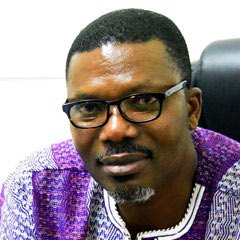 Patrique deGraft-Yankson
Patrique deGraft-YanksonWe may be right to assume that the level of awareness just at a little over four years of its implementation should not be too alarming. However, analyzing such low level of SDGs awareness among a people a country whose president is a Co-Chair of the Eminent Group of Sustainable Development Goals Advocates in Africa leaves some cause to worry.
The good news however is that, not being directly aware of the SDGs in the way they have been blueprinted does not mean the people are insensitive to its calls and claims. The fact is that, most of the demands of the SDGs are already embedded in the culture and belief systems of the people, and I consider this as an important resource to deploy for awareness creation and enthusiastic implementation of the SDGs.
For the realization of UNs commitment to leave no one behind in the mobilization of the citizens of the world to achieve the 2030 agenda (UN, 2020) therefore, I am of the belief that efforts at linking the relevance of the 17 goals to cultural manifestations of the people should be highly considered. The image shown above is a demonstration of how various traditional symbols speaks to the SDGs in a language which is understood by the traditional Ghanaian. These symbols transcend language barriers and their meanings are inherent within their traditional belief systems, making the goals both physically and spiritually relevant to people.
The meanings of the symbols are as follows:
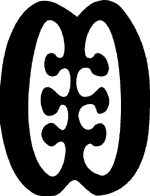
Ese Ne Tekrema (The teeth and the tongue)
Symbol of generosity towards one another. Through the formation of a linear relationship in diversity towards a common goal, both the personal and societal needs of the people will be realized.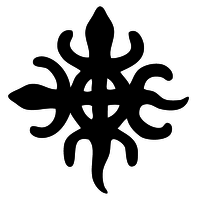
Funtumfunafu Denkyemfunafu (Siamese/conjoined crocodiles)
Symbol of brotherly feeling, caring and sharing. The society stays stronger when people coexist in the belief that we all smile and grow together when we feed and enjoy the good things in life together.
Dua Afe (Wooden comb)
Symbol of sanitation, cleanliness and beauty. This symbol reechoes the essence of physical and spiritual wellbeing through personal and environmental cleanliness.
Nea Onnim No Sua a, Ohu (Anyone who does not know is capable of ‘knowing’ through education)
Symbol of educational opportunities. This symbol plays down ignorance by reminding people of their inert capabilities to get educated to any level of their preference. In other words, opportunities for quality education exist for all.
Obi Nka Bi (No one bites the other)
Symbol of equal regard, recognition and treatment for all. No one bites the other as a value ensures that all genders and age groupings have equal rights for existence in the society which allow them to listen and be listened.
Sesa Wo Suban (Change your life)
Symbol of deterrence and admonition towards all unapproved societal behaviors that affect the natural environment. This symbol represents strong advocacy for transformation and dynamic life patterns that affect nature. One of the unacceptable life patterns this symbol is currently addressing is the Ghanaian youth’s preference for wealth through illegal mining which destroys precious water bodies
Pempasie (Sew in readiness)
Symbol of production and sustainability. This symbol emphasizes the importance of societal preparedness and readiness for the future through effective production and management of all resources for posterity.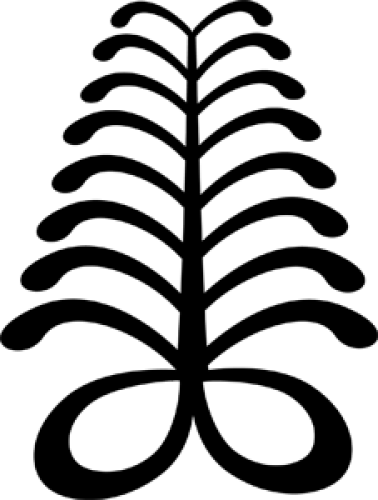
Aya (Fern)
Symbol of resourcefulness through resilience, self-reliance, hard work and judicious engagement of the environment and its resources.

Nkyimkyim (Twisting)
Symbol of collective action towards the building of the human society through initiative, dynamism, versatility, innovation and resilience. Indeed, building a successful society, like life itself, is not a smooth journey. The journey of life is tortuous and it requires a great amount of innovation and creativity to sail through.
Nkonsonkonson (Chain)
A symbol of unity. This symbol, depicting two links in a chain, advocates for the need to heal the componentized society since in unity lies strength.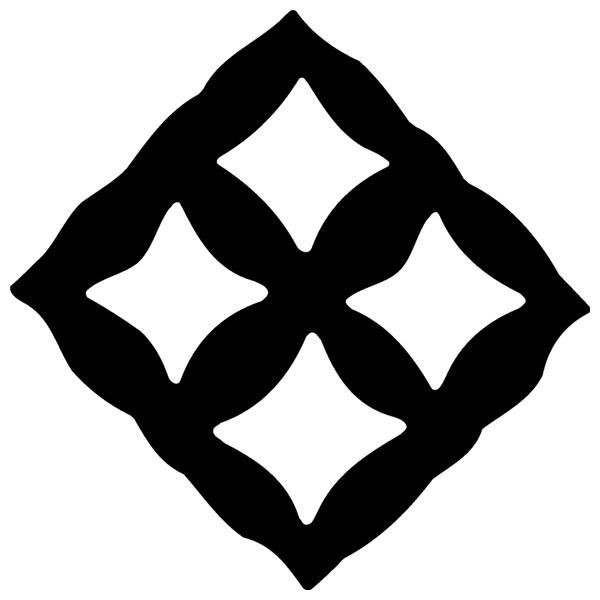
Eban (Fence)
A symbol of love, safety and security. The fence symbolically secures and protects the family from unhealthy activities outside of it.
Hwehwe Mu Dua (Measuring stick)
Symbol of examination and Self/Quality Control. This symbol emphasizes the need for circumspection in all human endeavors. It directs attention to self and quality control in everything including production and consumption. It admonishes against over consumption, over production and all forms of egoistic instincts and behaviors which adversely affect the general good of the society.

Nyame Biribi Wo Soro (God resides in the heavens)
Symbol of reverence to the heavens, the abode of the Supreme Being. Recognition to the ‘heavens’, or the skies as the residence of the supreme being is tied to the belief that all good things come from the heavens – rains, sunshine, fresh air, etc. The ‘heavens’ need to be respected for continuous flow of life-given goodies.
Ananse Ntentan (Spider’s Web)
Symbol of knowledge and wisdom about the complexities of life. This symbol alludes to the intricate personality of Ananse, the spider, a well-known character in Ghanaian/African folktales. In Ananse’s world, all facets of life need to be somehow manipulated, positively or negatively, for good or bad reasons. This sometimes led him to dire situation. Ananse therefore is a character for admonitions and reprimanding. Being conscious about the character of Ananse guides your steps against any unfair treatment to the world around you, be it the skies, on the land, in the waters or below the waters.
Asase Ye Duru (The Earth/Land is heavy)
Symbol for reverence and recognition to the providence and the divinity of the ‘Earth/Land’ and everything associated with it. The ‘Earth’ is the mother to everything. It carries the entire humanity, trees, water bodies, the sea (and what is in it and beneath it), big and small animals, etc. This why it is described as ‘heavy’. Respect/reverence to the Land is respect/reverence to life.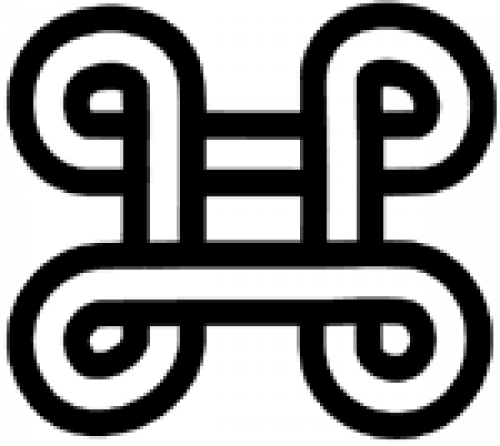
Mpatapo (Knot of Pacification/Reconciliation)
Symbol of bonding and adjudicatory factor which brings back parties in a dispute to a peaceful, harmonious and reconciliatory coexistence to ensure unified and strong societies and institutions.
Ti Koro Nko Agyina (One Head does not forma Council)
Symbol for partnership, collaboration and teamwork. This symbol emphasizes the importance of cooperation and collective efforts in the realization of all goals. Obviously, the attainment of the SDGs is a collective responsibility. No one nation (one head) can make it happen. It takes the concerted efforts of the entire citizenship of the world.Bibliography
- Adinkra Brand, A. (2020, November 15). African adinkra symbols and meanings. Retrieved from Adinkra Brand: https://www.adinkrabrand.com/blog/african-adinkra-symbols-and-meanings/
- Kasahorow Adinkra Library, K. A. (2020, November 15). Adinkra symbols and meanings. Retrieved from Kasahorow Adinkra Library: https://www.adinkrasymbols.org/symbols/nkyinkyim/
- United Nations, U. (2020, December 7). Sustainable Development. Retrieved from Uited Nations: https://www.un.org/sustainabledevelopment/development-agenda-retired/
published January 2021
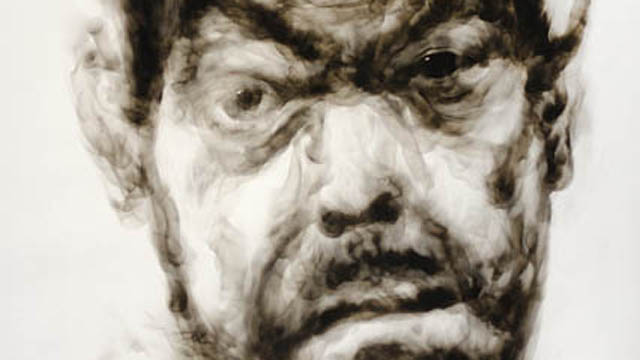
-
 Elfriede Dreyer
Elfriede DreyerThe Richtersveld National Park in South Africa has some of the most beautiful and hardy vegetation in the world. The 'botterboom' ('butter tree') (Tylecodon paniculatus) is but one example hereof. According to Wikipedia (RICHTERSVELD 2008), "The plant appears to have wide tolerance of growing habitats, growing in weathered rock in the north to coastal sands in the south. The plants can reach heights of 2 m making them the largest of the tylecodons. Tylecodon paniculatus is summer deciduous. The plants conserve energy by photosynthesizing through their 'greenish stems' during the hot dry summer months. The yellowish green, papery bark is a very attractive feature of this plant and has given rise to the common name. During the winter, plants are covered with long, obovate, succulent leaves clustered around the apex of the growing tip. [...] In nature the plants tend to grow in groups, making a spectacular show when they flower. [...] The shrub is reported to have a surprisingly weak and shallow root system for its size." This plant is representative of many other African succulents and bulbous plants that have shallow root systems and can therefore easily adjust to desert and other harsh environmental conditions. They change their leaves into thorns and the surface to protect the plant against the loss of water.
The metaphor of the succulent is of particular interest to an engagement with nomadic identity in the context of a continent such as Africa that has been subjected to "wicked, messy problems". Being similarly exposed to a severe environment, African people have accustomed themselves to survive in difficult circumstances and to a large extent have become nomadic as a result. In many cases they have adopted itinerant lifestyles and form groups for protection, safety and cultural coherence. Living on a vast continent, they are accustomed to long journeys; however, poverty, violence, civil wars, colonial and other imperial infiltrations and oppression have resulted in a focused nomadic condition where people are constantly moving and travelling in the search for a better life and even survival. Aligning contemporary culture with nomadism, Polish sociologist and philosopher Zygmunt Bauman (1996) appropriates the stereotype of the pilgrim who is on a teleological journey - ordered, determined and predictable - but cannot come to rest and leave a footprint in the sand. They operate through a 'shallow root system'.
Bulbous succulent plants are essentially botanical rhizomes, a concept that inspired the notion of the rhizome as a philosophical concept, initially developed by Gilles Deleuze (philosopher) and Felix Guattari (psychotherapist) in their Capitalism and schizophrenia (1972 -- 1980) project. Deleuze and Guattari (1987:7) state that the "rhizome itself assumes many diverse forms, from ramified surface extension in all directions to concretion in bulbs and tubers". In "A thousand plateaus" (1987 [1980]) they introduce the concept of the rhizome as follows (assigned to cultural patterning):
1. Principle of connection: any point of a rhizome can be connected to any other
2. Principle of heterogeneity: any point of a rhizome can be connected to any other
3. Principle of multiplicity
4. Principle of a signifying rupture: a rhizome may be broken, but it will start up again on one of its old lines, or on new lines
5. Principle of cartography and
6: Principle of decalcomania: a rhizome is not amenable to any structural or generative model; it is a map and not a tracing.
Deleuze and Guattari's model allows for a cultural view that entertains non-stable relationships, subjectivity, relationalism, multiplicity and volatile positions. Similarly, Italian contemporary philosopher and feminist theoretician Rosi Braidotti (2011:3) views the nomadic predicament and its multiple contradictions have come to age in the third millennium after years of debate on the "'nonunitary' - split, in process, knotted, rhizomatic, transitional, nomadic - so that fragmentation, complexity and multiplicity have become everyday terms in critical theory." Since the 1990s Braidotti has been engaged with the question as to what the political and ethical conditions of nomadic subjectivity are, grounded in a "politically invested cartography of the present condition of mobility in a globalized world" (Braidotti 2011:4).
South Africa has experienced turbulent histories over the last two centuries and nomadic movement was brought on by volatile colonial, postcolonial and global upheavals, leading to political and social displacement and consequently hybrid identities. Having been a British as well as a Dutch colony, South Africa has since 1652 shown cultural patterns of movement in and out of the country, and from place to place. During apartheid non-whites or 'people of colour' were viewed as not belonging and were removed from the city; forcibly established in townships outside the city; only allowed as workers into the city; and had to carry passbooks (identity documents) on them all the time. For many decades now, in postapartheid South Africa, migrants from all over the continent have been flocking to the country in search of a better life and even survival, and they mostly live in temporary shelters. Many other sociological and cultural problems have emanated as a result of the migrant issue, based on subjective racism, xenophobia, crime and fear for the other.
Identity (and subjectivity) in the African modernist context is neither stable nor fixed, and the corporeality of the artist-as body and the artwork-as-process in this specific part of the world henceforth has produced liminalities in many ways. Often rooted in a rural or small-town environment, African artists generally tend to move to multicultural, cosmopolitan cities where gallery and industry networks are in closer proximity. Those in the rural remote parts of Africa make it their business to connect through digital and social media in order to stay connected, current and noticed.
The art of South African artist Diane Victor provides an eminent example of nomadic identity depiction. The artist utilises various ephemeral media in her work, such as ash, crushed charcoal and staining. In Perpetrator 1, 2008, a so-called smoke portrait, she has used the deposits of carbon from candle smoke on white paper to draw with. The work is exceedingly fragile and can be easily damaged, disintegrating with physical contact as the carbon soot is dislodged from the paper, and in this way speaks about the fragility, precariousness and insubstantiality of a nomadic human condition. Although the smoke portraits started with a series on AIDS victims in 2003, Victor continued to depict various other individuals, commenting on ephemeral politics and ideas, and life generally as a temporal entity. In this work she depicts a perpetrator with reference to the previous South African apartheid dispensation and the atrocities of its perpetrators, but also to counter racism and the violence committed in the name of political redress. The Perpetrator's race is indeterminate, but his gender is certain, as well as the cruelty of his dispensation. Severed from the body, the Perpetrator's head becomes a rhizome that is not 'rooted' in a body, but uprooted, derooted, and floating with tubular arteries as corms hanging from it like a beheaded monster.
As an ephemeral, nomadic image, Perpetrator 1 speaks about a decolonial condition that presents the ambivalent Baumanian idea of the pilgrim-tourist who keeps going in circles, driven by an ideological sense of survival. Nomadic identity is essentially rhizomatic, and in Africa, as in many other parts of the world, the drive to belong and the utopian quest for a better life have resulted in identity being redefined, renegotiated, rerooted and sprouting in many directions.
References
- Bauman, Z. ‘From pilgrim to tourist – or a short history of identity’. In Hall, S and Du Gay, P (eds). 1996. Questions of cultural identity. London/New Delhi/Thousand Oaks: SAGE.
- Braidotti, R. 2011. Nomadic subjects: embodiment and sexual difference in contemporary feminist theory. Second edition. Gender and culture: A series of Columbia University Press. New York: University of Columbia Press.
- Deleuze, G. & Guattari, F. 1976. Rhizome: Introduction. Paris: Éditions de Minuit. [based on Gilles Deleuze and Félix Guattari’s Capitalism and schizophrenia project (1972 - 1980)].
- Deleuze, G. & Guattari, F. 1987 [1980, French original]. A thousand plateaus: capitalism and schizophrenia. Translated by Brian Massumi. London: Athlone Press.
- RICHTERSVELD NATIONAL PARK - VEGETATION: BOTTERBOOM (Tylecodon paniculatus). 2008.Available: https://www.richtersveldnationalpark.com/vegetation_botterboom.html (Accessed 3 January 2019).
published April 2020
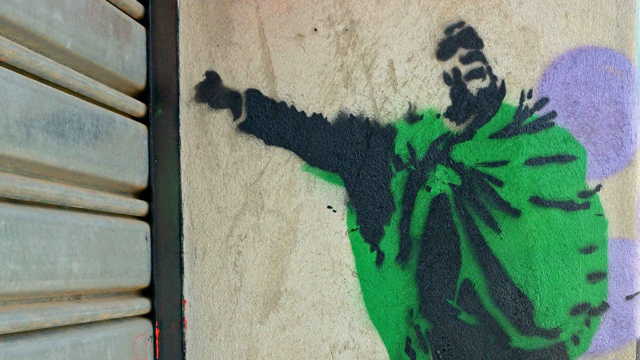
-
 Runette Kruger
Runette KrugerCape Town based Tokolos Stencil Collective uses stencil and graffiti to address socio-political issues such as lingering racial inequality, labour exploitation, segregation, and poverty. The name of the collective refers to a dwarflike mythical being, the tokoloshe, that materialises at night to frighten unsuspecting victims, now mobilised by the Collective to “terrorise the powers that be”, or, the status quo of inequality (Tokolos-Stencils, 2015). The declared aim of the Collective is to highlight continuing spatial and social segregation in a post-apartheid South Africa (Botha, 2014).
The social discrepancies whereby the majority of South Africans continue to experience social and economic isolation are addressed by Adato, Carter and May (2006), who cite the Poverty and Inequality report of 2000. In the report, South Africa is described in terms of two parallel worlds, “one, populated by black South Africans where the Human Development Index (HDI) was the equivalent to [that of] Zimbabwe or Swaziland. The other … [populated by] white South Africa in which the HDI [was] between that of Israel and Italy” (Adato, Carter and May, 2006, p. 226). This inequality had, disturbingly, only deepened between 2000 and 2006, and in a March 2018 report by the World Bank, South Africa is cited as the most unequal country globally in 2015, based on the Gini coefficient of 0.63 of that year (World Bank, 2018, p42). The Gini coefficient measures the gap in income between the wealthiest and poorest members of a population. A score of 0 would indicate absolute income equality, and a score of 1 would indicate that one person owned all the wealth. This disparity, as well as the resultant exploitability of the poor, informs the Tokolos Stencil Collective’s main subject matter.
The most widely recognizable image associated with the Collective is the Remember Marikana stencil, which combines these words with an image of Mgcineni Noki, known as Mambush to his friends and family, or, within the context of the Marikana massacre, The man in the green blanket. The Marikana event played a formative role in the establishment of the Collective – it was founded in 2013 on the day of the first anniversary of the event (Anaya, 2014). The massacre is widely regarded as a watershed crisis, comparable with the Sharpeville tragedy of 21 March 1960, now commemorated as Human Rights Day.
Noki was a community leader who became a prominent news figure in the days before the Marikana massacre, identifiable by the bright green blanket tied around his shoulders. The Marikana massacre took place on 16 August 2012 when striking miners working at the London-based Lonmin Platinum Mine in the North-West Province were gunned down by police wielding automatic rifles, violently ending a six day build-up of tension. Noki grew up in Thwalikhulu, a small village in the Eastern Cape, and was aged 30 at the time of his death. He had a wife and two year old daughter who lived in Carletonville, about 100km away. He is reported to have attempted to de-escalate the growing violent skirmishes, and to focus the gathered strikers on their aim – to increase their wages. The evening before the massacre, the miners were led to believe that if they returned to work, wage negotiations would begin. In the hours before the final events, while the miners’ repeated requests for negotiations were ignored, they were finally beseeched by their union to withdraw. Weighing up the growing indications of a final crack down, Noki began to lead a group of miners away from the outcrop of rock that had been the main scene of conflict over the course of the week. As they reached the nearby settlement their path was blocked by police and barbed wire. Noki led the men another route, only to be blocked again. The ensuing gunfire on the group led to the death of 17 men, Noki among them, identifiable by his green blanket as he lay on the ground. A second group of men were also attempting to leave the site, and were fired at with 295 bullets, resulting in 17 more casualties. The strike continued for another five weeks before the mining company agreed to negotiate. Pay was increased by 7% (Davies, 2015).
I specifically chose this image of Noki, his arm raised while exhorting and encouraging his fellow workers, instead of the dehumanising imagery of up-close, lifeless mineworkers that was freely shared by the press. In contrast, this image in the Remember Marikana stencil shows him as a leader with courage and purpose, and has become an iconic symbol of the struggle for dignity and an adequate wage among the most exploited workers in South Africa, on whose labour an economy that they are unable to access, has been built. Commenting on the lot of the under-classes in 1940, during the impending humanitarian crisis of the Second World War, Walter Benjamin (1969, p. 255 original emphasis) reminds us that “every image of the past that is not recognized by the present as one of its own concerns threatens to disappear irretrievably ... To articulate the past historically ... means to seize hold of a memory as it flashes up at a moment of danger [failing which] even the dead will not be safe”. The Remember Marikana image reminds us that it is crucial to prevent the sacrifices of the most vulnerable members of society from slipping into the amnesia of oblivion.
References
- Adato, M., Carter, M.R., & May, J. (2006). Exploring poverty traps and social exclusion in South Africa using qualitative and quantitative data. The Journal of Development Studies, 42(2), 226-247.
- Anaya, V. (2014, September 10). Tokolos Collective: “Cape Town is a very oppressive place for the poor”. Wiriko Artes Y Culturas Africanas. Retrieved from https://www.wiriko.org/tag/marikana/
- Benjamin, W. (1969). Illuminations. Edited by Hannah Arendt. New York: Schocken.
- Botha, N. (2014, November 21). Tokolos Stencil Collective: 'Crap' art designed to unsettle. The Mail & Guardian. Retrieved from https://mg.co.za/article/2014-11-21-tokolos-stencil-collective-crap-art-designed-to-unsettle.
- Davies, N. (2015, May 22). The savage truth behind the Marikana massacre. The Mail & Guardian. Retrieved from https://mg.co.za/article/2015-05-21-the-savage-truth-behind-the-marikana-massacre.
- Tokolos-Stencils. (2015). Retrieved from http://tokolosstencils.tumblr.com/.
- World Bank. (2018). Overcoming poverty and inequality in South Africa: An assessment of drivers, constraints and opportunities. Washington DC, USA.
published March 2020
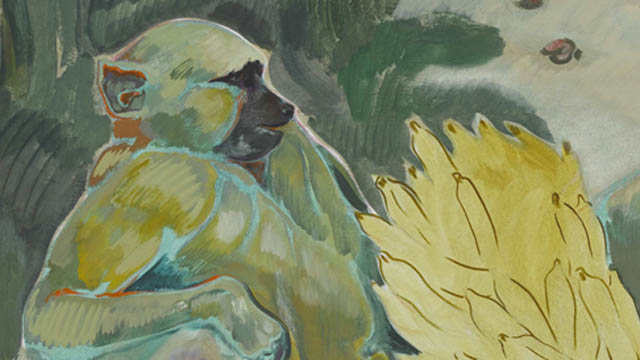
-
 Leonie Chima Emeka & Stefan Eisenhofer
Leonie Chima Emeka & Stefan EisenhoferBorn 1984 in Nairobi (Kenya), Armitage received his artistic training in London (UK). Living and working in both places today, he praises each of these cities as substantial to his creative practice. His inspirations spring from many different sources – from political events, mass media affairs and pop culture to personal memories and experiences as well as from Eastern African and European folklore. He merges together the stories and experiences of two cities and weaves them into a narrative of interregional interest. Often starting with Kenyan local myth he is developing global tales of political critique and rebellion concerning global demands on democracy, data protection, ecological and human rights — always overlaid by the meaning of the break between the “West and the Rest”, between human and un-human, between the exploitation of life and its inviolable dignity. In his work, Armitage investigates the idea of Africa as a mirror for Western phantasies and success stories of the Global North: the wild and untamed nature on the one side and the violated racialized bodies and political and ecological catastrophes on the other.
The painting “Baboon” was on view in the exhibition "The Paradise Edict“ at Haus der Kunst in 2020 as part of a series of five oil paintings depicting tropical animals. On tropical background various monkeys in erotic posture invite the viewer to an examination of sexuality at the boundaries between animality and humanity, erotics and exotics. Also the “Baboon” strikes the eye with its suggestive sexuality. In the clearing of an overgrown rainforest, the monkey lies on the ground in a very human attitude. A bare stone supports its right arm as if the ape was resting on a natural chaiselongue. Within the apparently wild environment, the animal seems rather cultivated.
The baboon oscillates between human and animal; not only in its posture but also in its physique: Feet and face are animal, while the rest of its body looks almost human; it has no fur or hair but pronounced muscles on his bare chest. Despite its muscles the ape’s body looks youthful and slightly lanky. It reminds to Michelangelo’s David for which it is commonly known that the legs and arms are extra-long compared to his body in order to mark his youth. Like a juvenile not yet fully grown the baboon, too, has long arms and legs. Neither a child nor yet a man, both an ape and a human body, the baboon hovers between child and man, between man and animal, between innocence and animal sexuality.
Instead of the characteristic fig leaf of early modern European sculpture, there is a large bundle of bananas between the monkey's legs. The individual bananas, sketched on the yellow surface, are quite phallic in shape and the banana bundle tends to overemphasise the male sexual organ, while the ape’s physical penis is hidden behind it. The banana is probably the most common fruit in the Global North that still bears the tag ‚exotic‘. It is not the monkey’s body, that is sexual; but the bundle of bananas both hides and emphasises the phallic and states an allegory for the conceptual connection between exotic and phallic.
Its absence makes it ever more present, as its leaves the concretisation of sexuality to the viewer’s imagination. In fact the image could be both innocent or sexual, as not only the penis is hidden behind the bundle, but also the ape’s left hand that reaches out to his underbelly. We can not see, but only guess where it rests, and what it is doing there. In his suggestiveness Armitage opens a space of confusing erotic tension and a critique of the sexualisation of race. With the figure that hovers between youth, man and animal, Armitage challenges the relations between black masculinity and sexuality in the Global North. It was Franz Fanon in "Black Skin-White Masks“ (1952), who once posited, that in European Subconscious "the Negro“ is the genitals par exellence, reduced to a giant penis. In this painting Armitage investigates the complex relations between blackness and phallus in Western concepts of masculinity.
Like many of Armitage’s paintings also the “Baboon” presents an overlay of heaven and hell and is taking up the title of the exhibition “Paradise Edict”. They are referring to African and European as well as global paradise fantasies and hopes. They are aiming often at an ordered, decreed and prescribed paradise. They reveal the mandatory and obsessive aspects of these Garden of Eden-Imaginations, disillusioning global Out-of-Africa-fantasies, distorting eternal and natural laws to man made illusionistic laws.
Armitage uses lubugo, a fabric made from fig-tree bark, in lieu of canvas for his paintings. This cloth is Ugandan in origin and has a long history of social, religious and political meaning and use there. Armitage first came across lubugo in 2010 on a Nairobi tourist market. The use of this now somewhat Pan-East-African-material corresponds with his visual vocabulary. Armitage combines European with Eastern-African materials, forms and strategies and waves them into complex, yet alluring compositions that remember the entangled history of painting through the ages and continents and rewrites new relations in between.
published January 2021
About Michael Armitage's initiative in Nairobi "Nairobi Contemporary Art Institute (NCAI)" see Link.
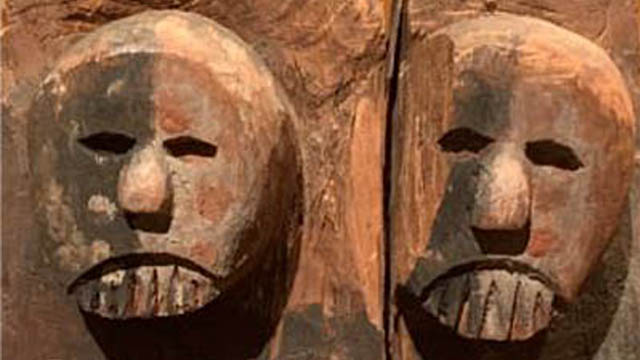
-
 Patrique deGraft-Yankson
Patrique deGraft-YanksonExploring an Enigmatic Piece of Traditional Cameroonian Sculptur
The Veranda Post found in Museum Fünf Kontinente is an exemplification of the extent to which indigenous Africans mutually reinforced socio-religio-cultural existence and expressiveness of form through sculpture. Various examples of these artefacts abound in the collections of African plastic artforms found in many museums across the globe. The beauty in experiencing, analysing and speaking about this artwork (as well as many of its kind), lies within the absence of authenticated historical and analytical literature on them. This makes it possible for the observer to exert complete authority of personal perception and interpretation devoid of any fixed attitude that dictates, interfere or curtails aesthetic enjoyments, interpretations and judgements, as attempted in this presentation.
With the dimensions of 199 x 60 x 50 cm, the Veranda Post found in Museum Fünf Kontinente is one of the numerous examples of the African artistic expressiveness, confirming the artistic prowess of the traditional African. Examples of these artefacts abound in the collections of African plastic artforms which record indigenous religious beliefs, practices and performances that date back from the beginning of African history.
As typical of most indigenous African sculptures, this work is not only uncaptioned, but the artist/creator is not known. What is known, however is that, its peculiar characteristics and style makes it easily identifiable and representative within the milieu of popular African sculptures. According to the Museum Fünf Kontinente records, this work was collected from 'Kamerun'. 'Kamerun' was an African colony of the German Empire between 1884 and 1916, which was located in the region of today's Republic of Cameroon (Wikipedia, 2020). Comparing the characteristic features of this sculpture with similar sculptures described by some art historians as Veranda Posts created as part of ancient African monumental architectures found in the Cameroons Grassland (Willett 1981) therefore, it is not difficult place it within that category. Hence its caption.
As can been seen from similar ‘posts’ and judging from the elaborateness of the images created on them, the major reason for the production of these posts was more to afford the sculptor or sculptors the opportunity to decorate the buildings with stories, rather than serving as supports (see figure 1).
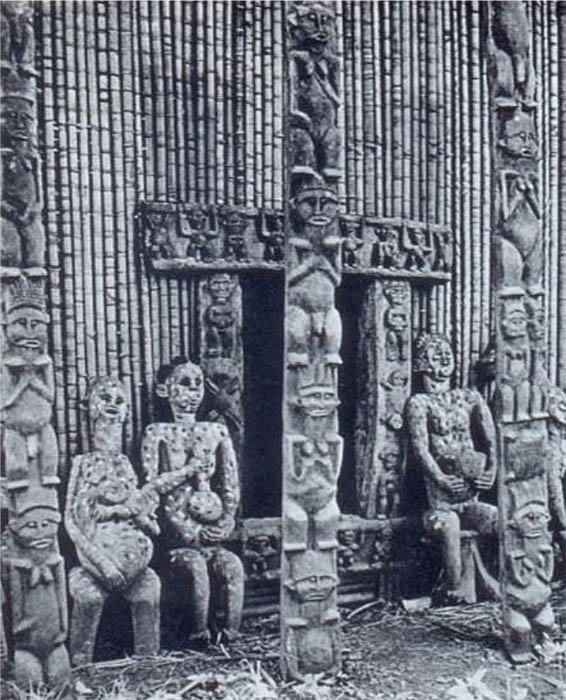
Figure 1: Ancestor statues, carved door-frame and verandah posts (Source: Willett 1981)
As said above, the beauty in analysing and speaking about this artwork (and many of its kind), lies within the absence of historical and analytical literature. The fact that this makes it possible for me (and for that matter any other observer) to exercise personal powers of perception and interpretation without any fixed attitude to direct or curtail their aesthetic interpretations and judgements made it my object of choice for this project at the Museum Fünf Kontinente.
Going by Margaret Trowell’s generalisations about African art, this Veranda Post can be classified under the ‘spirit-regarding’ art. Like many others of its kind, this work, which has front and back views, is flanked with human and other figures, ostensibly those of ancestors and is symmetrically disposed about a vertical axis, rendering it frontal at both sides.
Analyses of the images created on this pole reveal striking similarities between the age old traditional religious practices of the African and the Western religious beliefs and practices brought in by the earlier missionaries.
At the direct look of the object from the front (as it has been positioned at the museum, but actually one of its two sides), a prominent kneeling figure with hands clasped together unto the chest (much like the praying hand) can be seen in a pose that looks very much like the kneeling praying postures at Christian worships. To the African, this posture is not only assumed at prayer sessions as a visual image of submission to God’s authority, but is also exhibited as a sign of respect, humility and total surrender to a superior authority. For the sculptor to present the kneeling man as a central figure and subsequently rendering all other human figures in similar submissive postures therefore makes the theme of prayer, submissiveness and spirituality very strong in the composition.
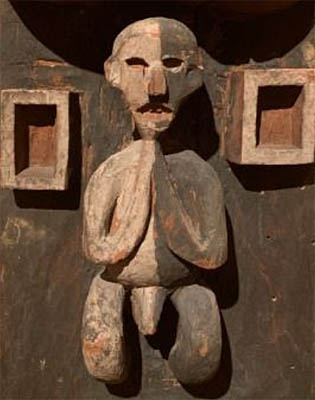
Figure 2: The kneeling or praying figure
The kneeling man is placed right below two human faces whose prominence and positioning easily pass them for elders, superiors, or better still, ancestors. Before the ancestors, all supplications are made, and through them, request are carried through to the supreme God.
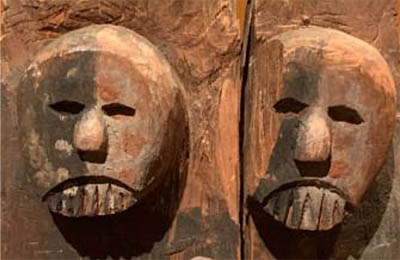
Figure 3: Ancestor figures
The importance of the two faces and emphasis on their superiority is further strengthened by a strong demarcation between them and the kneeling man through a thick rigid contoured line that forms a partition between the elements. This could be interpreted as a spiritual borderline that separate the spiritual world from the physical world. Generally, the African believes in the existence of the physical and the spiritual worlds as separate entities and this demarcation clearly depicts this belief. Also worthy of notice is the orientation of the demarcating border which rhymes with the praying hands of the kneeling figure, thereby visually connecting the figures. This carefully chosen placement of the two faces in the composition alludes to the supremacy of the ancestors and their exclusive existence in the after world as well as their connection with humans.
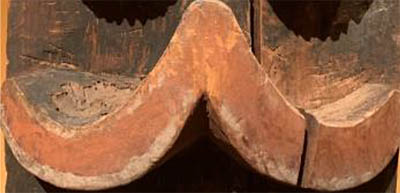
Figure 4: The spiritual borderline
Another striking imagery is created with the placement of a very visible image rendered in concentric circles. Among many African ethnic groups, the circle represents completeness, holiness, perfection and other such attributes ascribed to the supreme being (God). Among the Akan people of Ghana, for instance, the Adinkra symbol called Adinkrahene (king of Adinkra symbols) is presented as concentric circles. This symbol represents authority, leadership and charisma. The sculptor most likely created a bull’s eye of this symbol as an indication of exactly where this particular post belongs. The post could possibly be one of the furnishes for a palace or the abode of a traditional priest. This could also suggest the likelihood of the prominent kneeling figure being the King or the chief priest. Considering the atmosphere created by these symbols, the circle, with the kind of prominence it exudes could also represent the omnipresence of the supreme being, thereby heralding the people’s belief in the iniquitousness of God and His closeness to mankind.

Figure 5: The concentric circles
Other recognizable images of animate and inanimate objects in the work include crocodiles, lizards and geometric shapes. Whilst it is likely that the geometric figures may have been deliberately presented to create balance, simulate a built living environment and arouse aesthetic sensibilities, the images of animals like those of the crocodiles have significant meanings as far as African culture and belief systems are concerned. Among some ethnic groups in Africa, crocodiles are believed to be the souls of ancestors who come back to live with men. Examples are the crocodiles in the Crocodile Pond at Paga in the northern part of Ghana who virtually live peacefully among the people. There are numerous African stories about crocodiles coming to the aid of men to either protect them or lead them to safety. Their inclusion in this particular work therefore is to establish the existence of spirits among men, especially as humans pray to seek their guidance and protection.
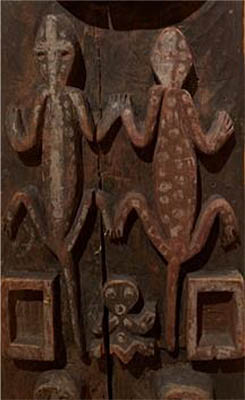
Figure 6: The crocodiles
Considering where it was created and where it is located now, as well as the current effort towards extracting a meaning out of its symbolism, this veranda post and many other such African artefacts in several museums around the globe have demonstrated how images and symbols resonate relationship between cultural practices around the world. The confluence of symbolic interpretations of the icons in the traditional African religions and the Euro-Christian religion, as depicted in this veranda post, gives justification to Africa’s unquestionable acceptance of Euro-Christianity and all the associated visual cultural practices.
For comparison, also read Karin Guggeis' analysis of this object here.
References
- Roy, C. (2019). Signs and Symbols in African Art: Graphic Patterns in Burkina Faso. Signs and Symbols in African Art: Graphic Patterns in Burkina Faso. https://africa.uima.uiowa.edu/topic-essays/show/38?start=13
- Wikipedia. (2020). Kamerun. Kamerun. https://en.wikipedia.org/wiki/Cameroon
- Willett, F. (1981). African Art. London: Thames and Hudson.
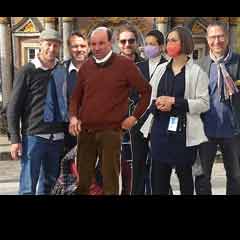 ISB_Team
ISB_TeamThis 'Veranda Post' is variously referred to (mostly in relation to its architectural-functional context) lintel or "te ken dy dye" (in the local Bandjoun language - PHSAA), porch post, house front pillar, post, cult house post (M5K, p. 17), Cameroon post / family crest (Macke at M5K, 13, 24). Post, however, in the sense of sign (post-it) is suggested by PdGY to address the communicative function. Other designations do not address the function, but limit themselves to the given, perhaps to avoid any pre-interpretation: 'sculpted wooden block' (Kecskési 1999 n. 108) or 'large carved square wooden block' (Kecskési 1976, p. 22).
Object biography: The object was taken before 1893 by Max von Stetten during expeditions on the Bamileke Plateau (south-western Cameroon), where it was presumably part of a meeting house of a confederation. Stetten (1860-1925) was German commander of the Kaiserliche Schutztruppe for Cameroon until 1896. Cameroon was a German colony at that time. The exact circumstances of how the object came into Stetten's possession are unknown, as is its original location and context.[2] In 1893, the Royal Ethnographic Collection acquired the pillar as a gift from Stetten.[3] In 1912, a photograph of the pillar was published in the Almanac of the Blaue Reiter. It is currently on display in the permanent exhibition in the Museum Fünf Kontinente Munich in a niche - a mirror allows a view of the second side (see Fig. 2). Along with other objects from the collection, it is currently the subject of a transnational project on their provenance (GI).
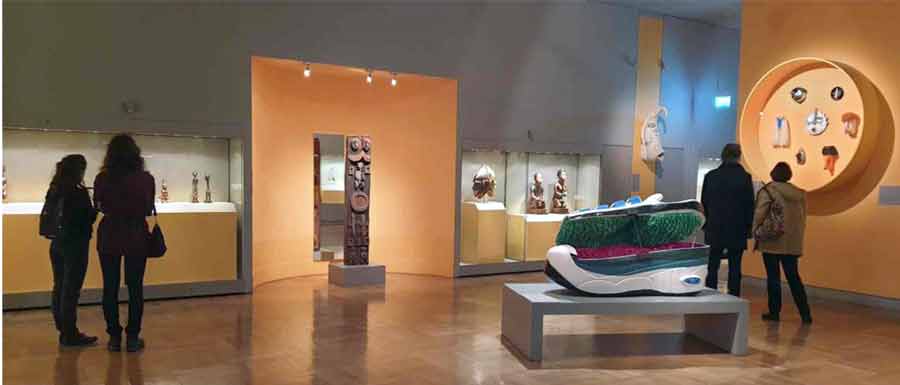
Fig. 2
Status: In comparison with carved mullions on façades of royal residences in the Cameroon grasslands (Fig. 3),[4] other mullions or door frames in the Museum Five Continents (M5K, p. 17, Kecskési 1999 No. 11, 70, 75) or in the Humboldt Forum Berlin, there is a partial similarity of motifs, but a strikingly 'archaic' formal language. Other examples are clearly more 'elaborate'. The multitude suggests that this type of pillar is quite typical of works from this period in this region of West Africa.
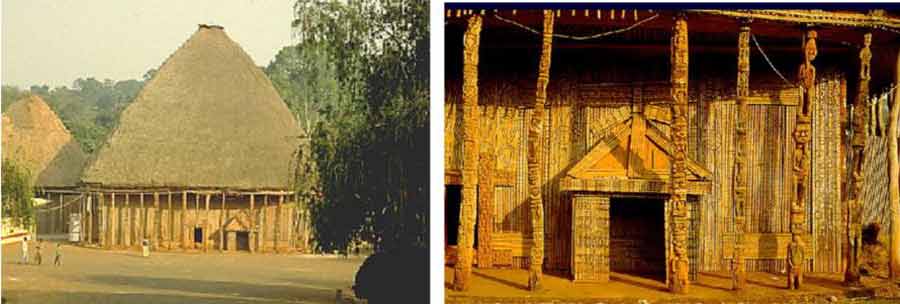
Fig. 3
Interpretation
The current view of the work
For the interpretation, the following questions lend themselves to art lessons: Form, iconography (meaning of the motifs), function, theme (or core idea) of the object, i.e. an interpretation.
With regard to the guiding idea of multi-perspectivity, two positions will be addressed: On the one hand, the view of today on the basis of ascertainable contexts, which seeks to understand the object from its time of origin and its context of origin. On the other hand, the view of the object by the artists of the Blaue Reiter. The comparison of these perspectives seems particularly relevant from an art didactic point of view, even though other perspectives would be conceivable, e.g. from the point of view of museology, provenance research, from the context of current restitution debates, etc. However, these are addressed in the teaching suggestions.
Shape
At first, the pillar develops an immediate physical presence for the visitor: through its sheer size (larger than life, almost square in plan), the materiality of the massive, cracked block of wood (the outline is irregular and probably corresponds to the tree) and the clear, concise, reduced language of form, whose meaning seems inaccessible. The surface treatment is archaic, the wood is more hewn than carved.[5] Thus it appears powerful and at the same time mysterious, which is supported by its presentation in the exhibition on a plinth and without glazing (see Fig. 4).
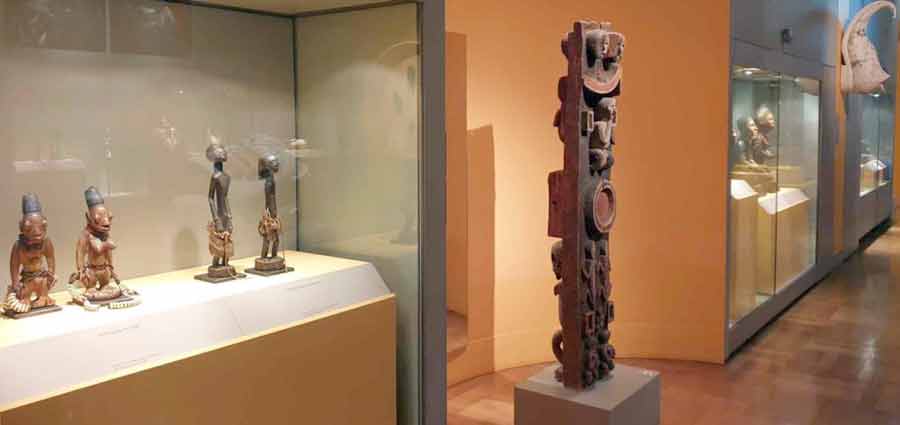
Fig. 4
A closer look reveals how the sculptor interweaves various modes of representation between complete abstraction (circle, rectangle) and representationalism (human figures, animals) in a compositional way[6] , monumentalising the individual motifs through internal symmetry, geometrisation, frontality and statics. This is supported by the painting (see Fig. 5). In this reduction, everything narrative is missing. The representation becomes emblematic, it becomes a symbol.
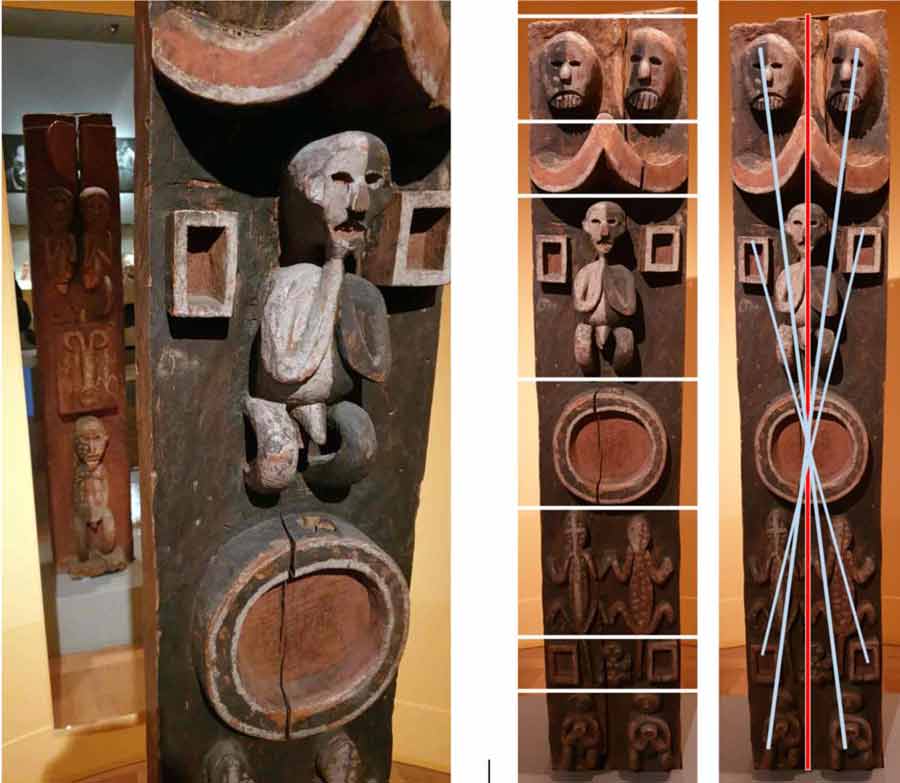
Fig. 5, 6 and 7
This is also supported by the overall composition, which obviously follows a calculated geometric order. It is strictly horizontally divided into individual zones, only once do lizard tails protrude into another zone. However, the separation into individual layers is ingeniously overcome compositionally by the strict axial symmetry in the vertical, but also by the point-symmetrical arrangement around the respective centres. The result is a tension between the contradictory compositional principles (see Figs. 6 and 7) that is decisive for the effect of the pillar.
The lack of any narrative on the one hand and the high creative effort on the other underline once again that it is about a symbolic level. This can perhaps be deciphered, even if its immediate complex order makes it seem above all direct, sensual.
The secure decoding of the iconography (what the individual motifs as well as the arrangement meant in the context of origin) is not possible with today's state of knowledge. Oral culture has left no written sources that could be consulted. Moreover, the oral tradition has been torn down - not least due to colonial destruction. However, since the work obviously has a symbolic language with clear iconography, this level cannot be left out in art lessons. German-language literature and oral experts from West Africa were consulted here. The results contradict each other, but nevertheless yield a court of meaning (see Fig. 8, in which the individual attributions of meaning are named)[7] , which provides a certain direction.
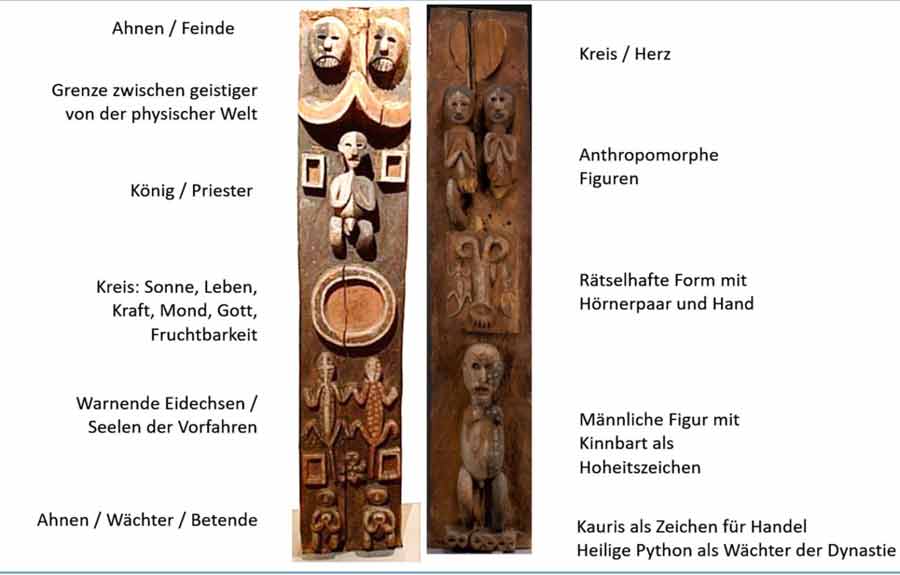
Fig. 8
In addition, the block is painted in three colours. These also carry meanings: Black could symbolise suffering, white could be the colour of the dead and symbolise mystery, red, the colour of blood, symbolises life (PHSAA). The light-dark contrasts themselves symbolise life and death (Kecskési 1999).
Function
PdGY suspects that the pillar - as part of the architecture of the house - stood at the spatial interface with the public (on a path) in order to communicate the significance of the house, presumably a cult house, to the outside. The object could therefore have been part of the façade of a particularly distinguished house[8] , also with a supporting function for the roof. It communicates what happens in the house or who lives or resides there.
Kecskési, on the other hand, considers a free positioning in space (Kecskési 1976, p. 22) and suspects an ancestral tablet. This in turn would fit the following determination by Gouaffo: "The 'Blue Rider Post' is a spiritual object. According to oral traditions, the object was placed in the sacred house like a statue. Caps, chains, bags or skeletons could hang from the object. Secret societies like the 'Losango' used the statue to perform certain rites, for example to cleanse the village of evil spirits." (Albert Gouaffo in GI) KG also suspects the context of a meeting house of such a secret society. Common to all assumptions is that the pillar stood in the context of a house with a sacred or cultic function.
'Theme' of the object: Basically, three different levels can be delimited, some complementary, some contradictory. First, the communication function on the façade or at the entrance to the outside. Then the pictorial formulation of a certain understanding of human being-in-the-world is asserted; man is ultimately embedded cosmologically.[9] At the Humboldtforum Berlin, in turn, such pillars from West Cameroon are also seen as the "architecture of power", power exercised by the rulers or the secret societies through impressing and deterring.[10]
Second perspective
The interpretation provided above can be countered by a second perception of the pillar, as it appears in the almanac "Der Blaue Reiter". This almanac, an artist's book, was published in 1912 by Franz Marc and Wassily Kandinsky. The reception of this book is over a hundred years old, but it is significant for the development of European art, as it is a good example of how artists of this time created a new frame of reference by referring to non-European art. In this respect, the Blaue Reiter clearly differs from Cubism, Expressionism or Dadaism, which were all being developed at the same time.
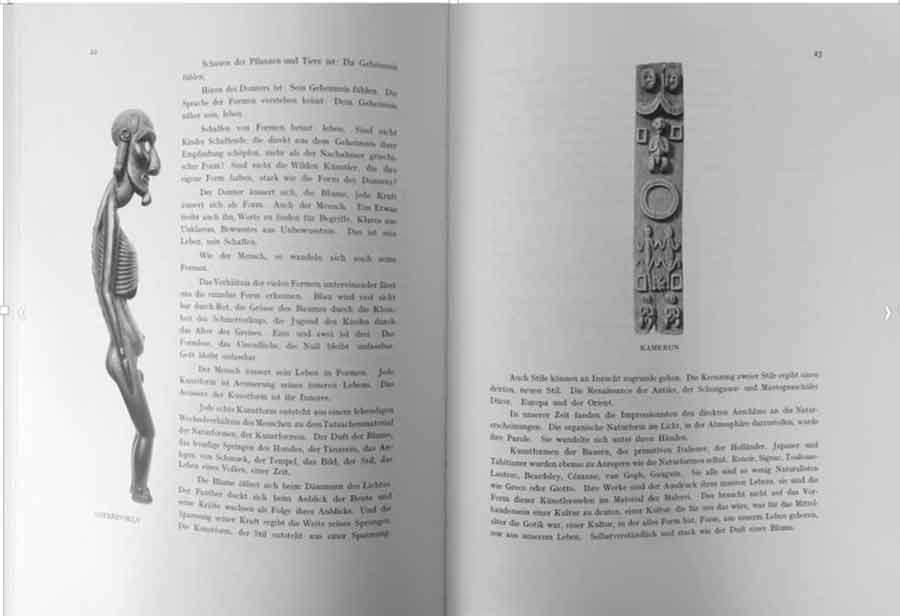
Fig. 9
In the Almanac, on pages 21 to 27, there is an essay by the painter August Macke entitled "Die Masken" (The Masks), in which a relatively small illustration of the pillar in question is embedded (see Fig. 9). Macke's contribution, like all the other texts in the Almanac, was probably written at a joint meeting of Macke, Marc, Münter and Kandinsky in Murnau.[11]
Visits to ethnographic museums are documented above all for Wassily Kandinsky, who was a trained ethnologist, and Franz Marc. Marc had also admired sculptures from Cameroon in particular during his visit to the Berlin Ethnographic Museum in 1911. And it was he who was ultimately responsible for the insertion of the photograph of the post in Macke's article.[12] In his letters to Macke, Marc writes about this. On 14.1.1911 about the objects from Cameroon in the Berlin Ethnological Museum: "I remained amazed and shaken by the carvings of the Cameroonians"; and later that he would furnish Macke's article in the Almanac with "ethnographic wonders" (MW).[13] In the text itself there is a single, very brief reference to "carved and painted pillars in a Negro hut", by which presumably the post was meant.
The text itself represents Macke's conception of art. In it, "intangible ideas", "mysterious forces", an "invisible God" express themselves in the world of appearances and "cultic expressions". The invisible materialises in the visible. This realm of the visible includes not only art, such as that of Giotto or van Gogh, who are classified as 'primitive', but also nature. Children's drawings, the folk art of the 'primitives' and 'savages' or non-European cultural forms are also expressions of the mysteriously invisible. These themselves are - and this is decisive - equal to each other. There is no hierarchy, no distinction between high and low, between high art and popular culture. All forms speak - as Macke characterises it - in "strong language". For Macke, the pillar in the museum is then an example of "the tangible form for an intangible idea, the personification of an abstract concept" (Macke 24). He also calls this the figure of an "idol".
The approach underlying this thinking sounds familiar; we have known it since the Platonic theory of ideas. However, this approach does not justify the selection of this particular post, as other posts from the museum's collection would also have been available.[14] Here one can only assume. I suspect that there are various factors that led to the selection: the archaic power of the forms; the initially wild and carefree-looking, additive combination (or montage) of the various principles of representation in the individual motifs (concrete - abstracted, geometric - organic, symbolising - depicting), which on closer inspection, however, then reveals itself to be consciously composed; or the coarse, physically perceptible materiality of the cracked, thick block of wood in impressive dimensions. PdGY also speaks of "wonderfully composed".
In the work, everything is represented with great sensual power that is the opposite of an "empty" image in European "cultures that have already passed through a thousand-year course, like [...] Italian Renaissance" (Macke 24) and from which Macke renounces: "We must bravely renounce almost everything that has hitherto been dear and indispensable to us as good Central Europeans [...] in order to get out of the fatigue of our European lack of taste". (Macke ibid.)
In art lessons, the question arises to what extent the image that Marc or Macke create of the pillar (as representative of the idea of an idol) goes together with what the object presumably was and is in its original context. Or to put it another way: are they designing a certain, exotic image that does not correspond to the object itself? [15]

Fig. 10 Historical photos of the exhibition of the India Department in the Munich Museum around 1910 (source M5K)
References
- GI: Juliane Glahn and Marta Krus: CAMERUNS RIGHT TO CULTURAL OBJECTS. https://www.de/prj/zei/de/pos/22656808.html
- Kecskési 1999: Maria Kecskési. Art from Africa - Museum of Ethnology Munich. Munich (Prestel) 1999
- Kecskési 1976: Catalogue for the exhibition African Art. Andreas Lommel (ed.). Munich (Bruckmann) 1976
- M5K: Staatliches Museum für Völkerkunde München (ed.). The Blaue Reiter and the Munich Museum of Ethnology. Munich (Hirmer) 2009
- KG: Karin Guggeis. The Blue Rider Post. (2021): https://www.explore-vc.org/en/objects/expanding-the-canon-of-art-at-the-global-north.html
- PdGY: Patrique deGraft-Yankson. The Veranda Post. (2019) https://www.explore-vc.org/en/objects/the-veranda-post.html and oral interview on 23.4.2022 in Bayreuth, Iwalewahaus.
- PHSAA: Paul-Henri Souvenir Assako Assako. Information by email 20.5.2022
- Wikipedia: Cameroon & Max von Stetten
- MW: Macke Wolfgang (ed.). August Macke - Franz Marc: Briefwechsel, Texte und Perspektiven. 1964. Cologne (DuMont).
- Macke: Macke August. The Masks. In: Almanac "Der Blaue Reiter", 1912, edited by Franz Marc and Wassily Kandinsky, pp. 21-27
Appendix on iconography
- Anthropomorphic figures: ancestral couples / guardians and protectors of the royal residence. These anthropomorphic figures are treated with respect as extraordinary personalities. They are considered ensouled beings, spirits with supernatural powers. (PHSAA) Depiction of all human figures in similar postures: theme of prayer and submission to spirituality. (PdGY)
'Front' side from bottom to top:
- Two people: Ancestral couples / guardians and protectors of the royal residence (PHSAA). People pray for the guidance and protection of the ancestors (PdGY).
- Lizards: The symbol of the lizard warns everyone; it symbolises death. (PHSAA) PdGY sees here two crocodiles (ancestral souls returning to live with humans) instead of lizards.
- Circle: motif of the sun, symbol of life and power; the moon, image of woman and symbol of fertility. (PHSAA) The circle represents completeness, holiness, perfection and other attributes attributed to the supreme being (God). (PdGY)
- Kneeling figure: King or priest (PdGY)
- Line of demarcation between the spiritual and the physical world
- Two heads above: Ancestors (PdGY)
'Back' side from bottom to top:
- Python (geometric frieze at the bottom of the 'back' side): royal totem/sacred python, guardian of the dynasty (PHSAA).
- Male figure with chin beard as emblem of sovereignty (Kecskési 1999)
- Enigmatic form with a pair of horns ending in a hand (?) at the bottom (Kecskési) on a rectangle with two flanking lizards.
- Anthropomorphic figures
- Circular area
Footnotes
[1] The object is variously referred to, mostly in relation to its architectural-functional context: lintel or "te ken dy dye" (in the local Bandjoun language - PHSAA), porch post, house front pillar, post, cult house post (M5K, p. 17), Cameroon post / family crest (Macke at M5K, 13, 24). Post, however, in the sense of sign (post-it) is suggested by PdGY to address the communicative function. Other designations do not address the function, but limit themselves to the given, perhaps to avoid any pre-interpretation: 'sculpted wooden block' (Kecskési 1999 n. 108) or 'large carved square wooden block' (Kecskési 1976, p. 22).
[2] The first German trading posts were established in Cameroon as early as 1868, and in 1891 German military "expeditions" were launched in Cameroon. In 1884, the German Consul General concluded protection treaties with regional rulers and thus proclaimed the protectorate of Cameroon as a German colony. The seizure of the hinterland, which included the grasslands, took place over the course of the following 30 years. (Wikipedia) Even if the provenance is still not clear today, one can certainly share the Humboldt Forum's assessment of such objects that - even if they were not looted through acts of war - they are nevertheless "an expression of unequal power relations and structural, colonial violence". (https://www.smb.museum/nachrichten/detail/ethnologisches-museum-weg-frei-fuer-die-rueckkehr-der-ngonnso-nach-kamerun/)
[3] In the entry book it is noted: "Gr. square block, 1.80 cm high made of heavy wood, carved on both sides with humans and lizards, heavily damaged by termites". (https://onlinedatenbank-museum-fuenf-kontinente.de/) In 1895 Stetten published detailed "Travelogues" in the Deutsches Kolonialblatt.
[4] http://www1.biologie.uni-hamburg.de/b-online/afrika/kamerun/palast.htm; http://www1.biologie.uni-hamburg.de/b-online/afrika/
[5] The block is almost certainly worked with a chisel.
[6] "decorated with geometric, anthropomorphic and zoomorphic forms" (PHSAA)
[7] All performers avoid a complete decoding. They only make suggestions for individual motifs.
[8] It could have been the house of a 'priest' whom one could consult there and through whom or ancestors one could pray to God (PdGY).
[9] "Expression of the cosmogony of the universe of the peoples of the Bamileke plateau; expression of the belief system" (PHSAA).
[10] The assertion of power is also included by PHSAA.
[11] Catalogue: August Macke, Lenbachhaus Munich, 1987, Bruckmann. Munich. S.164
[12] He simply titled the painting "Cameroon", the name of the country of origin (the country whose sculptures he admired).
[13] There are other illustrations in the text: a bird's head from Brazil, a figure from Easter Island (see Fig. 9), one from Mexico, a bird mask from New Caledonia, a cloak from Alaska[13] and a child's drawing entitled "Arabs". Except for the child's drawing, all objects are from the then Royal Ethnographic Collection in Munich (M5K, p.11). They are only titled with the respective country of origin, e.g. Cameroon. Macke was obviously involved in the selection as well as the layout, as his layout sketch shows (M5K 24).
[14] It is not certain what was shown in the presentation at the Royal Ethnographic Collection in Munich at the time, which covered 400 square metres in six rooms in the north wing of the Hofgarten arcades in Munich. The only thing that is certain is that photos of the ten objects depicted, which came from various parts of the world, were lent to the artists for the publication of the Almanac. Photos of the presentation do not exist. "Whether Marc and Macke [actually also] saw the work in the exhibition at that time can be assumed with a high degree of probability, since it is after all very large and thus impressive." (Information Karin Guggeis 26.7.2022)
[15] In this context, it seems of interest that neither Marc nor Macke take up in their own pictorial language the aesthetics of the non-European works they "celebrate" here.
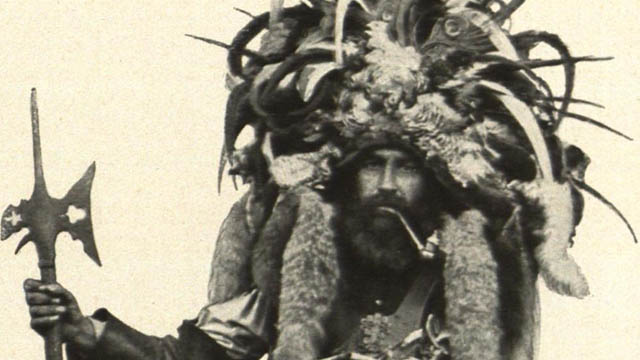
-
 Werner Bloß
Werner BloßAdministrative, esoteric and patriotic purposes until the first half of the 19th century
After an initial sighting the clothing can still prove to be expectable in the context of its time and regionality. While the medieval weapon seems useful for the guard's task, the hat's purpose can be seriously doubted. But peculiar as the outfit might be, it must have identified its possible former wearer as a civil servant, who was authorized, e.g. to punish violations of the rules. To protect the vineyard, a Saltner had to be reliable, vigilant, fearless, persuasive and loud. In addition to this executive function, there was also an esoteric one: Myths have developed claiming that a Saltner is able to defend himself successfully not only against thieves and ravenous animals, but also against attacks from the otherworld. Thus, the formerly more modest hat might have taken on a fetish-like function as well, alongside an expectedly Christian context — similar to the magic „Hexenkreuz“ (a shoe-length iron forged in the shape of a cross, von Hörmann 1872, p. 41-47) which should be part of the equipment of a Saltner too.

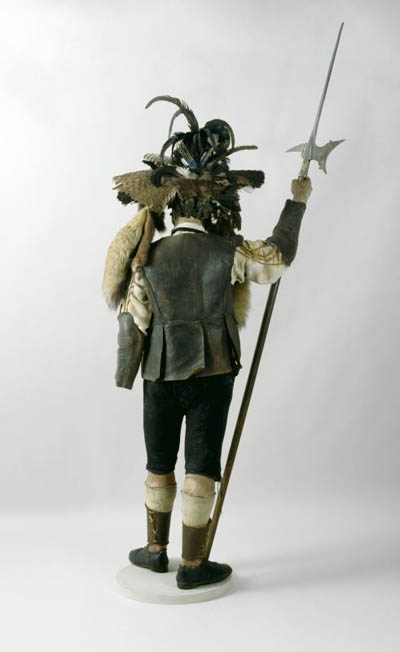
Fig. 1, 2: Meraner Saltner, Germanisches Nationalmuseum, 1875/1899 © Germanisches Nationalmuseum
In addition, there are other striking features of the costume. Apart from the hat, many handed down costumes of vineyard keepers look very similar to that of an outstanding Tyrolean folk hero. As to the beard, most vineyard keepers on contemporary pictures also come very close to Andreas Hofer, the leader of the Tyrolean popular uprising of 1809 (fig. 3). Thus, two hero constructions could be woven into the image of these objects: the brave guardian with supernatural powers and the defiant folk hero who successfully defended his country against the Bavarian occupiers (at least for a short time).
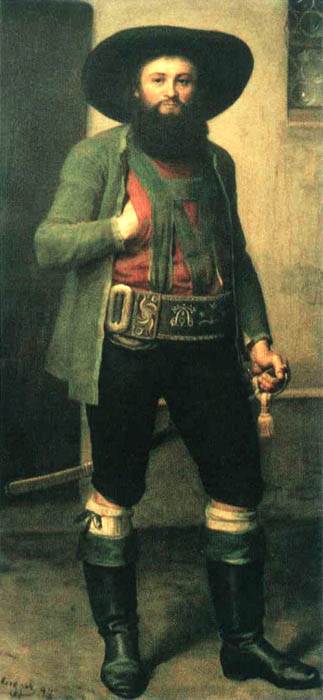
Fig. 3: Franz Defregger: Andreas Hofer, 1894, oil on canvas, Tiroler Kaiserjägermuseum, Innsbruck (© CC-BY-4.0 CC)
Tourist purposes in the course of 19th century
A steady evolution of this appearance towards hypertrophic splendor (cf. Ramming 1997, p. 119) could be observed. Whom did the vineyard keepers want to impress? Did the scary outfit or its models also have the function of a lure, even a courtship dress? One could speculate a lot about this, as well as the question of the addressees and the success of this posing in the rural environment. Indeed, there were harsh rules that state how vineyard keepers had to behave towards women (cf. von Hörmann 1872). Like the myths of nocturnal seduction attempts by witches in the vineyard, they also point to the possibility of their transgression (Matscher 1933, p. 217). The clearest indications of courtship even in the sexual are found indirectly where the vineyard keepers discovered their tourist attractiveness in the later 19th century. Here it was not only a matter of inspiring the exoticism expected from the outside. The Saltner in the role of „Papageno“ (Halbritter 2005, p. 88) offered a masculine performance to a changing — even female — audience, too. And the public, frightened by the wild man in the vineyard, gladly paid for this thrill with the usual, officially regulated tax for trespassing — and then sent a postcard with a picture of such a strange imposing guy out into the world (op. cit. p. 88-104, fig. 4).
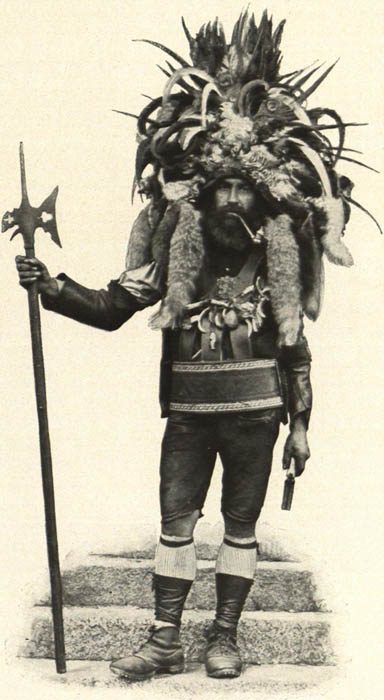
Fig. 4: Meraner Saltner. Postcard sent 1907. © CC-BY-4.0 austria-forum.org
Use in the attempt of nation building until after 1900
The emergence of traditional costumes in the 19th century was due to an increased interest in regional distinctiveness. The dependence on supra-regional trade, a corresponding desire for a special appearance and the burgeoning tourism in picturesque South Tyrol drove this development further. The purchase of the object by the GNM in 1899 was completely in line with the museum's historistic concept. Unique characteristics were to be collected to support the idea of nation-building in the German-speaking area which includes parts of South Tyrol (Austria till 1918, then Italy) too. The interest in the costume can thus be attributed to an implicit concept of „Großdeutschland“, the desire for identification even far beyond the national borders of that time (and also today). In 1905 the Saltner-figurine became a part of a multi-figure panorama of German traditional costumes in the museum. But 100 years later Jutta Zander-Seidel, curator of the exhibition „Kleiderwechsel“ (that means "change of clothes") at the GNM judged harshly about the former exhibition practice: Neither does the object represent the peasant costume of the past in its historical authenticity, nor does it reach beyond documents of historicized festive culture at that time (cf. Zander-Seidel 2002, p. 76).
From carnival use to cultural appropriation and appreciation
On top of that, the object wasn't even bought in South Tyrol at all, but from a Munich costume fund. The painter Franz Defregger is said to have worn it at a Munich artists' masked ball in 1883 (Ramming 1997, p. 16-18). Was it merely a product of his imagination, made to poke fun at the strangers across the near borders, at those archaic mountain people with their culture, which at the time was perceived as weird, backward, even exotic? There is evidence that Defregger designed costumes too (Irgens 2010, p. 14).
Then it would also be possible that parts of the costume were actually copied, e.g. by using early photographs of Native Americans, perhaps to make the appearance seem even more exotic. The foxtails hanging down on both sides of the face, the necklace of wild animal teeth or the splendor of the feathers come quite close to such cliché images. And Franz Defregger showed great interest in Chief Rocky Bear, for example, whom he met and portrayed in 1890. Rocky Bear had come to Munich (Bavaria) with Buffalo Bills' Wild West Show as a living exhibit (Assmann e.a. 2020, p. 123). But this was seven years after the masked ball. In addition, the object at the GNM is said to have been touched up in the early 20th century, so that it could fit the cliché of the pictorial and written sources of the 19th century even better (Selheim 2005, p. 274).
In the same supposedly colonialist view, Defregger made a painting for an Austrian encyclopedia called „Kronprinzenwerk“ (1885-1902, fig. 5). In this illustration, the figure of the Saltner is used just as clichéd and exoticizing for his country, Tyrol, as we know it, e.g. from images of snake charmers and the Indian subcontinent. But the picture shows a man who looks much like both the Nuremberg specimen – and the artist himself. Could this still be a form of self-exaltation, an act of othering (Said 1985)? If we take into account that Defregger himself was a native Tyrolean, this perspective escapes its chauvinistic dress and shows us a completely opposite form of individual expression and a corresponding search for identification: When abroad, the successful painter dressed like a person of status in his native country.

Fig. 5: Franz Defregger: Ein Saltner bei Meran. 1890, Xylography by M. Kluszewski. © CC-BY-4.0 austria-forum.org
Conclusion
It has taken one century for this change in function to be clearly named in the GNM (cf. Zander-Seidel 2002, p. 148): from an uncertain practical object of use to a product of tourist expectations, from a carnival costume to a decided construction of national identification and back again. The outfit of the vineyard keeper is neither particularly artistic nor valuable. But the questions it is able to generate lead far into a dense field of visual communication across times, national borders and continents, to ideas of foreignness and (self-) exoticization and ultimately to the question of how we deal with them today. The costume of the Saltner and its related outfits seem to come from the supposedly “good old time“. But they illuminate a rather fleeting moment in which historical upheavals in Europe (e.g. early globalization, increased emigration, advanced secularization, consequences of colonialism, desperate search for identity and nation building) are reflected in a peculiar object. They can lead to the question of how to deal with other traditions on the one hand or with the individualization of (male) appearance (e.g. in the later star cult) on the other. The fact that a whimsical hat can still serve an extremely dubious yet visually powerful purpose today was demonstrated by the million-fold shared footage of the self-proclaimed "shaman" storming the Washington Capitol in early 2021.
Special thanks to my students at Gymnasium Wendelstein who enriched this analysis with plenty of valuable questions and discoveries.
References
- Assmann, Peter/Irgens-Defregger, Angelika/Hess, Helmut. 2020. Defregger. Mythos — Missbrauch — Moderne. Innsbruck, München: Hirmer.
- Ramming, Jochen. 1997. Weinberghüter und Heimatwächter. Der ‚Meraner Saltner‘ zwischen Amt und Emblem. In: Jahrbuch für Volkskunde 20. Paderborn. München. Wien. Zürich: Schöningh. p. 116-141.
- Halbritter, Roland. 2005. Saltner – Weinberghüter – Touristenschreck – Vogelscheuche – Papageno – Alpenindianer. „Ihm gebe Kreizer a comprar tabacco; dann still sein gut Freund“. In: Der Schlern, Bozen. August edition 2005, p. 88-104.
- Irgens, Angelika. 2010. Was Tiroler und Indianer im Herzen verbindet, Bayerische Staatszeitung (BSZ). 23.04.2010 (ePaper) and: Unser Bayern 4/2010, München (Verlag Bayerische Staatszeitung)
- von Hörmann, Ludwig. 1872. Die Saltner. In: Der Alpenfreund, Monatshefte für Verbreitung von Alpenkunde unter Jung und Alt in populären Schilderungen aus dem Gesammtgebiet der Alpenwelt und mit praktischen Winken zur genußvollen Bereisung derselben. Dr. Eduard Amthor (ed.), Volume 5, Gera, p. 41-47, proofread for SAGEN.at by Mag. Renate Erhart, august 2005. Spelling carefully reworked and brought up to date: http://www.sagen.at/doku/hoermann_beitraege/saltner.html. Called on 7.02.2021
- Matscher, Hans. 1933. Der Burggräfler in Glaube und Sage. Bozen 1933. Found at sagen.at and carefully reworked by Leoni Wallner. December 2005. http://www.sagen.at/texte/sagen/italien/meran/burggraefler_matscher/wimmetzeit.htm. Called on 7.02.2021.
- Said, Edward. 1985. Orientalism: Western Conceptions of the Orient. London: Penguin Books.
- Selheim, Claudia. 2005. Die Entdeckung der Tracht um 1900. Die Sammlung Oskar Kling zur ländlichen Kleidung im Germanischen Nationalmuseum. Published by Germanisches Nationalmuseum Nürnberg.
- Zander-Seidel, Jutta (ed.). 2002. Kleiderwechsel. Frauen-, Männer- und Kinderkleidung des 18. bis 20. Jahrhunderts (Die Schausammlungen des Germanischen Nationalmuseums). Published by Germanisches Nationalmuseum Nürnberg.
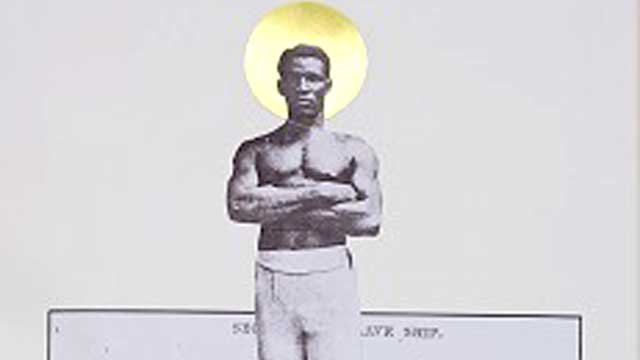
-
 Stefan Eisenhofer
Stefan EisenhoferGodfried Donkor is now considered one of the most renowned British artists with numerous acclaimed solo and group exhibitions in Africa, Europe, North and Latin America, including "Around the world in 80 Days" at the ICA (London), "Pin Up" at the Tate Modern (London) and "Authentic/ Excentric" at the Venice Biennale 2001. His multimedia visual art practice incorporates collage, printmaking, photography, film and performance. He is joint founder of "AISS-Art in Social Structures" and has participated in a number of residency programs in Africa, Europe, the US, and the Caribbean. In his works, Donkor creates visual references to the buried and repressed relationships between "black and white", between the upper and lower classes.
Based on profound research, he tells multifaceted counter-histories that reveal the hidden principles of production and exchange in historical and modern societies. At the core of his work are questions about the stereotyping of black people and their reduction to their physicality - firstly in slavery, then in sport, in the fashion- as as well as in the sex industry. In his work "From Slave Ship to Champ" (1992), for example, the slave ship, contrasted with images of black boxers in classic prizefighter poses, becomes a kind of "womb" and „uterus“ of particular types of racism. In Donkor's work, the historical slave trade also becomes a metaphor for current degrading mechanisms of the globalised world and leads to the question: How far is it from slave ship to champion - is it very far, or not far enough?
He questions the supposed "neutrality" of stock market prices and statistics in his series "Financial Times", in which he uses the serious-looking stock market pages of this newspaper as a background and alienates them collage-like with black and white images or full-colour glossy magazine figures of boxers and African women.
"The black body“ as a commodity in Western culture is also the focus of his "Southern Vogue" series. He traces the ways in which women's bodies, in particular, were and are degraded into marketable commodities and how people were and are degraded into financial objects. Donkor's work has much to do with the fragile and ever-threatened dignity of human beings. He asks questions about victimisation and innocence, about the balances and imbalances of the world, but does not allow for one-dimensional quick answers. Rather, he creates not only alternative histories, but also alternative icons. In his "Browning Madonna", "Black Madonna" (2002/6) and "Birth of Venus" series, for example, he takes up Western pictorial motifs, "africanises" them and thus creates a field of tension between the elevation and exploitation of - not only black - women and men.
Donkor's conceptually multilayered works are often inspired by places that played an important role in the historical slave trade. The artist uses the architecture of these places and the goods that were and are produced there to refer to the social conditions and interactions that lie behind them. This is exemplified by "Once upon a time in the West there was lace" (2007), with which Donkor reflects parallels between modern day and historical slavery through cotton and lace in Nottingham (UK). The luxury good lace, that is still synomymous with this English city, stands for the lavish lifestyle of the elites of the 18th and 19th centuries and at the same time for the exploited manufacturers who were often forced to live in great poverty. Donkor links this status symbol with his horrific history, and at the same time refers to the exploitative mechanisms of the current economic world.
The location also plays a leading role in the performance/fashion/video installation "Jamestown Masquerade" (2004). The Ghanaian coastal town of Jamestown is one of the first communities to make contact with Europeans in the 18th century. In Donkor's work, this place now becomes an archetypal city for commerce exchange and a symbol of the cultural interplay between Europe and West Africa from the 18th century to the present. In this performance, Present day Jamestown becomes the setting for a masquerade of fashion and memory in which African performers wear English costumes from the 18th century and are accompanied by music by Handel and Mozart. In this way, Donkor also points out that the meeting of two cultures does not necessarily have to be destructive, but can also offer a great deal of creative scope for both sides.
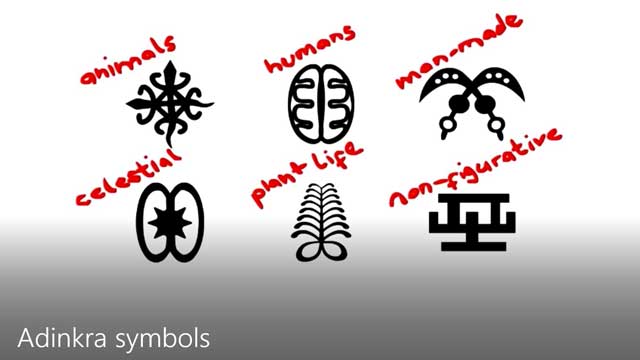
-
 Patrique deGraft-Yankson
Patrique deGraft-YanksonSome of these signs and symbols depict historical events, human behaviour, animal behaviour, attitudes, plant life forms and shapes of objects, many of which have grown to assume recognizable iconographic dimensions. Others carry rich proverbial messages that are traditionally considered a mark of wisdom. These attributes indeed give credence to the need for the preservation and popularization of traditional symbolism and imagery.
Therefore, in this project (which is one of many others in progress) therefore, has made an attempt to repackage Adinkra and other traditional symbols through animated videos. The aim is to make these age-old symbols more accessible and attractive to the modern Ghanaian youth. Presenting traditional symbols digitally would not only appeal to the youth, but would also ensure widespread visibility, presentation and thus, better preservation.
published October 2020
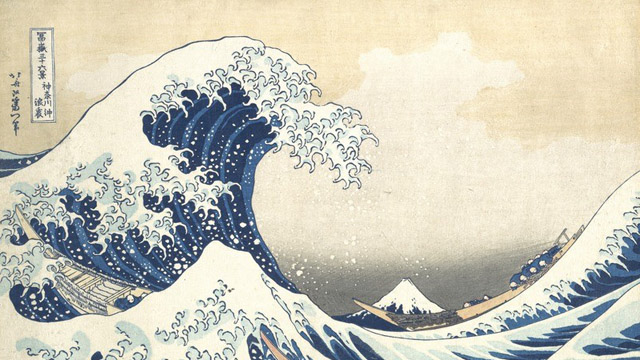
-
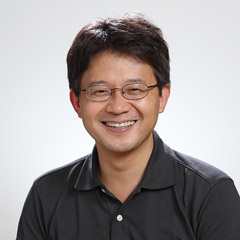 Nobumasa Kiyonaga
Nobumasa KiyonagaKatsushika Hokusai, Nami-ura
Many Japanese feel astounded when they know that Hokusai is considered as the most famous Japanese artist in the Western countries. The art-historical assessment in Japan also turns out differently than one would probably expect from a Western perspective. For example, it was only in 1997 that one of his works was admitted as Japan’s cultural heritage for the first time by the Japanese Ministry of Culture.
In order to understand this understatement, one needs to understand the socio-historical context of the time of the period when Hokusai produced this work: In the Hokusai's lifetime, an ukiyo-e master was considered as a mere craftsman. This, for example, represents a strong contrast to the Kano school artists, whose focus was primarily on Chinese painting. Many of the Kano school artists worked as the shogunate’s official painters, which enabled them to be part of the warrior class. In feudal society there was an unbridgeable clear class difference between those artists and ukiyo-e masters. Moreover, ukiyo-e was considered vulgar, as it was a medium for common people and some were even pornographic. Today “ukiyo-e” specially represents Japanese woodblock prints of the later Edo period. But actually the term ukiyo originally has a Buddhism-originated, rather pessimistic meaning, namely: “transitory world”, which contrasts to the word jōdo as “pure land” or “paradise”. “Ukiyo-e” in this context would mean “images from this world”. However, it was precisely in the Edo period mentioned about the attempt of reinterpretation, especially among townspeople, to perceive, affirm and even enjoy this temporary, worldly world as something positive. Accordingly, despite its originally negative meaning of the word, motifs that came to mean everyday, life-affirming, bourgeois life were often chosen for “ukiyo-e”.
In the Hokusai's lifetime his artistry1 in this sense certainly met with positive response and interest from the townspeople in Edo (today Tokyo). But it was French art critics and modern artists at the end of the 19th century who gave Hokusai “world-class” status. With the style of the so-called Japonisme they hoped to get impulses or artistic suggestions from the color woodcuts or lacquer works to overcome the hopelessly frozen academic European art from their viewpoint; bold, asymmetrical compositions, spontaneous drawing, strong colors, overcoming the central perspective. It seems clear that the view of these Europeans on Japanese works of art was from the beginning selective. And obviously Hokusai was an ideal projection here.
In Hokusai's extensive oeuvre the “Thirty-six Views of Mount Fuji” is regarded as his main work. Among all of Hokusai’s works, “The Great Wave off Kanagawa” particularly has attached special attention in the West until the present day. Already in 1897 Camille Claudel (1864-1943) created her work “La Vague”, which was inspired by “The Great Wave” and in 1888 Vincent van Gogh (1853-1890) pointed out the special nature of this work in a letter to his brother. Eventually “The Great Wave” established itself as an “global icon” as one acknowledged today2. According to the English art historian Christine M. E. Guth, it was decisive for the enormous spread of the picture that in the West, “The Great Wave” was chosen as the title to differ from the original “The Backside of the Wave”. In this way, the image has been separated from the original context3.
The fascination, which this work still holds globally today, certainly lies all in the geometrical or typically Japanese asymmetrical composition and the dynamic representation of the big waves. Thereby the horizon is set unusually low, which additionally serves to increase the effects. The position is actually very unnatural and almost impossible. Here it is important to point out that this perspective representation was a result of Hokusai's attempt to appropriate or interpret the European central perspective. It was in the early 18th century that the Japanese began to deal intensively with this Western style of painting. By directly connecting the foreground and the distant view without a middle ground, they found a particularly effective means of dramatic representation, which in reality deviated from the actual Western painting principles. The Japanese art historian Shigemi Inaga calls this typical Japanese expression “chūkei-datsuraku (falling out of the middle ground)”4. Many ukiyo-e masters liked to make use of this manner. Also in Hokusai's “The Great Wave” it seems to have succeeded impressively. As already expressed in the original title “Nami-ura” (the backside of the wave), the picture draws the viewer's gaze deep into the inner side of the devouring movement of the waves. Thereby a literally sublime feeling is awakened in the observer. In front of this mighty natural phenomenon, the people in the picture look powerless, as if they were merely driven by the waves. The holy Mount Fuji silently watches all this sight from far away.
Mount Fuji, a 3776 meter high volcano, is not only the highest mountain in the country, but has been worshipped as a religious object in ancient Japan. On the one hand, Fuji with its rich water reservoir provided fertility, but on the other hand its eruptions caused great damages to the population. Accordingly, it was always regarded with a certain reverence and in the 9th century the first shrine for the fire god “Asama” was built on it. The mountain then also became a holy place for Buddhists. The Mount Fuji worship became especially popular during the Edo period. The most eloquent example is Hokusai’s “Thirty-six Views of Mount Fuji”. Otherwise Mount Fuji was chosen as subject of the painting again and again since the 11th century at the earliest. Later, at the peak of nationalism in Japan, especially during the second Sino-Japanese War and the Pacific War (1937-1945), the mountain was identified with the nation “Japan” per se and eventually became an authentic “national symbol”. After World War II it was then seen as a symbol of the new, revived Japan. Based on these historical backgrounds it seems obvious that many Japanese perceive something particularly familiar in the depiction of Fuji in the work “Nami-Ura”. In this sense, it is quite significant that Mount Fuji was recognized by UNESCO as a World Cultural Heritage in 2013, as a “sacred place and source of artistic inspiration”.
Today, the image “The Great Wave” is often used for merchandising products of museums, such as coffee mugs, plates, notebooks, ties, T-shirts, wristwatches or umbrellas, and is extremely successful. The Japanese government finally jumped on this trend at the beginning of the 21st century when it developed a state-sponsored marketing strategy based on “Cool Japan”, a neologism created by the American journalist Douglas McGray, in which the Japanese subculture such as manga or anime would play a major role. The motif was also used for the “Cool Japan” project. Guth sees this as the final recognition of Hokusai on the Japanese side5.
Inaga writes that Hokusai was an artist who had gained his unique historical significance in the international context of Japonisme "as a sociological phenomenon“6. The shift in Hokusai's evaluation for over a century makes his creative approach a complex construct of the artistic, cultural and social development of the Edo period. Inaga notes that “many things that today are considered the essence of Japanese aesthetics were actually refined in dealing with imported culture. […] Cultural characteristics are not revealed in isolation, which shields itself from foreign influences, but rather through curiosity about the outside world“7. Especially Hokusai's art is a prime example of this statement.
Footnotes
1 The concept of art with the European sense did not exist in Japan at that time yet. For this reason the author avoids the term “art“ at this point. It was only after the opening of Japan to the Western countries in the 1850s that the term was newly introduced from Europe as a translation word.
2 Christine M. E. Guth (2017): 21 Seiki no Yōroppa · Amerika bunka no naka no “Ōnami” (eng: The Great Wave in Twenty-first Century Euro-American Culture), in: exh.cat. Hokusai and Japonisme, Tōkyō: Kokuritsu seiyō bijutsukan (The National Museum of Western Art) und Yomiuri shinbun Tōkyō honsha, p. 296.
3 Guth (2017): Ibid.
4 Shigemi Inaga (1999): Kaiga no tōhō – Orientarizumu kara Japonisumu e (eng: The Orient of the Painting: Orientalism to Japonisme, Nagoya: The University of Nagoya Press, p. 90ff.
5 Guth (2017): pp. 298-299.
6 Inaga (1999): p. 174.
7 Shigemi Inaga (2018): Nihon-bijutsu-shi no kindai to sono gaibu (eng: The modernity of Japanese art and its outside) Tōkyō: Hōsōdaigaku kyōiku shikōkai, p. 33.
published June 2020
 Ernst Wagner
Ernst WagnerHokusai, The Great Wave off Kangawa
A raging sea, mighty waves, spray falling like snow from their crests. The waves form huge claws that hover precariously over the fishermen in their fragile boats. Adapting to the shape of the mighty waves, the boats’ bows thrust their way ahead towards the left. The energy of the boats speeding forward is compositionally absorbed by the propulsive force of the water pushing to the right. Hypothetically, the viewer is positioned in the water and is in just as much in danger as the oarsmen.
In the centre of the wave trough’s mighty movement, we see the static Mount Fuji diminutive in the distance. Although one could almost overlook it due to its size and similar colour to the water it is the central subject of this woodcut, one in a series of “36 views of Fuji”, completed by Hokusai. Fuji’s peak lies in the golden section and serves as a stabilising element. The mountain, holy in Shintoism[1], appears like a vision, promising (unattainable) security. A pale white cloud above it takes on the shape of the wave adding to the threatening atmosphere. It is somewhat irritating how Mount Fuji and the waves approach each other through colour, form and lines. Even the drops of water coming out of the spray look like snow falling on Fuji’s peak. The small rowers crouching in their boats do not even see the mountain. In comparison with the other pictures in the series, this sheet displays the most dramatic representation in juxtaposition to the calm steadfastness of Fuji. The other 35 sheets mostly depict Fuji in idyllic everyday scenes or in quiet, monumental sublimity. (The great differences in style show that the series was published over a span of several years.)
The composition is like a snapshot of a scene at its dramatic climax. We, the observers perceive it from the distance and, at the same time, we are right in the middle of it. The giant wave is about to crash over the boat on the left, while the other two boats, swift as arrows, are heading right into it as well. According to historical accounts, they are fishing boats that are on their way back with their catch to the mainland, to Kanagawa, a place in the bay of Edo, today's Tokyo. But none of this is visible in the print. Instead, Hokusai illustrates a powerful and dangerous nature in which men must integrate themselves in order to survive. The picture displays the fishermen nestled within the frame of the wave. In this way, Hokusai creates a timeless and emotionally moving metaphor for man at the mercy of nature. He thus takes a specific artistic position that makes him interesting in comparison with European paintings by e.g. Caspar David Friedrich or William Turner who address a similar experience.
The title and Hokusai’s name appear in the upper left corner of the print in Japanese script. The concept of combining image and script is typical for Far Eastern traditions. We can find more features that can be considered as typical for Japanese woodcuts: flatness, reduction of colours, graphic patterns (e.g. the light and dark stripes in the water) and black lines outlining or defining the objects. Hokusai uses these means with expressive exaggerations, which often take on caricature-like features, for example in the representation of the spray or the frightened fishermen in their boats.
However, since Hokusai also uses Western pictorial principles, especially the conception of space and the idea of a dramatic climax, he created his own visual language, based on his reception of Western painting. This is significantly demonstrated by his treatment of spatial depth. Looking through the waves at the central motif – in this case Mount Fuji – from an observer's point of view is committed to the Western concept of perspective formulated in the Renaissance: the picture as a window to the world, which appears in perspective. In Hokusai's work, this European concept of space merges with the traditional Japanese art of colour woodblock prints, which was characterized by emphasized two-dimensionality, contrasting empty spaces, ‘abstract’ pictorial structures, and dynamic linearity. Hokusai's mediation between two culturally different pictorial conceptions ultimately led to his being more popular in the West today than in Japan itself.
The opening of Japan after 1853, forced by US gunboat politics – and supported by European governments – triggered trade between Japan and the world. At first, some Japanese woodblock prints were used as packaging material, which may seem surprising to lovers of this art form today. Fortunately, they were discovered and enthusiastically received by artists in France. Among those were Hokusai’s prints and his popularity grew rapidly throughout Europe and elsewhere. The collecting frenzy of Japanese art (Japonism), which was also triggered by this, influenced Post-Impressionism, Art Deco and Art Nouveau and, in particular, architecture and design such as was taught at Bauhaus. Just as Western visual language came to Japan, Asian visual concepts now influenced art in Europe.
Ukiyo-e
Hokusai, trained in painting and woodblock printmaking, is considered a master of the multi-coloured ukiyo-e woodblock prints. From the early black and white prints, an extremely refined multi-colour printing process with up to fifteen woodblocks was developed during his lifetime. For the production of the plates and complicated printing process there were highly specialized workshops, for which – in our case – Hokusai provided the templates. Compared to other prints, however, relatively few plates were needed for the 'Great Wave': three for the different shades of blue, one each for the colour of the boats and the sky, and black and grey. As some of the prints found today show considerable traces of wear on the plates, we can assume that hundreds or thousands of prints were printed from the same plates. The peaceful Edo period (1603 - 1867) had led to new forms of expression as well as to the mass production of woodblock prints, such as those by Hokusai.
[1] At 3776 m, this volcano is Japan's highest mountain. Its shape is elegant and at the same time monumental, memorable and easy to recognize. In Shintoism it is a holy place. Moreover, as it has repeatedly been a "source of artistic inspiration", not only for Hokusai. It was recognized by UNESCO as a World Heritage Site in 2013.
published September 2020
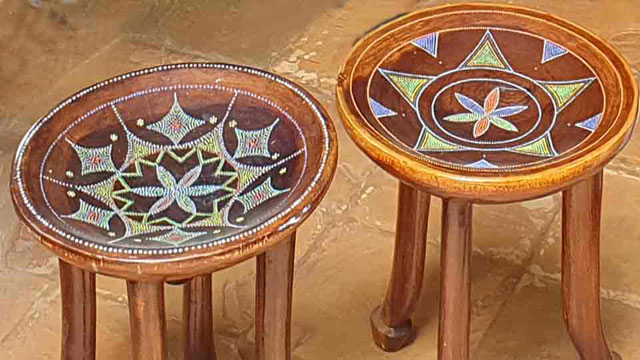
-
 Mary Claire Kidenda
Mary Claire KidendaKenya is extraordinarily rich in creativity, materials, and ideas sources of inspiration reflected in their artefacts which has evolved to its current prosperous state over the centuries. The Kenyan culture can be seen in the visual arts, applied arts, food, music, dance, sports, fashion, literature, and theatre. The artefacts are an extraordinary source of inspiration and nourishment for the artist. Their designs embody African design aesthetics that have retained traditional designs as they also reflect elements of innovation, hybridity, sustainability and modernity (Maina et al., 2017). The artefacts reflect religious beliefs and cultural values – two inseparable elements enmeshed in Kenyan craft. The Kenyan traditional art is fundamentally functional, meeting some specific utilitarian purposes, whereas its aesthetic consideration is typically regarded as having some secondary significance. Art was integrated into everyday aspects of life from formal ceremonies and religious rites to daily household tasks. The arfetacts were produced by skilled experienced crafts persons who were found in the societies. Art is an expression of a particular community or culture through the employment of local materials and craftsmanship.
The Jua Kali manufacturing subsector is the predominant creator of craft products in Kenya (Maina et al., 2017). Jua Kali is a self-organising community of practice producing goods. It is comprised of artisans running micro and small enterprises that are not fully integrated into the mainstream formal economy. The artisans learn skills through traditional apprenticeship (TA). Apprenticeship training is regarded as a critical contributor to skills supply, fostering economic development in Kenya. It involves the transmission of the tacit rather than the explicit knowledge and is the most tangible exhibition of the intangible cultural heritage. It facilitates the transmission of skills from a custodian of knowledge, the Master Craftsman. It combines ethnic design and aesthetics and contemporary styling in craft production in Kenya. Involves the transmission of the tacit rather than the explicit knowledge through observation, imitation and reputation. Besides, apprenticeship ensures that the knowledge and skills that relate to the craft are passed down to future generation so that they continue to be produced within their communities. The learning of the Kenyan design, aesthetics is therefore, an intergenerational phenomenon.
Kenya's ethnic groups can be divided into three broad linguistic groups Bantu, Nilotic and Cushite. The Nilotic tribes in Kenya include Luo, Kalenjin, Maasai and Turkana (Hino et al., 2019). The Nilotic speakers migrated from Sudan and Egypt. They are traditionally pastoralists and fishermen and reside in Kenya's vast Rift-Valley region and around Lake Victoria (Madut, 2020). Each of these communities has its traditions, customs, and practices, imbued with multiple layers of culture, colonial legacies, and migration that add to the rich Kenyan cultures (Deisser & Njuguna, 2016) . The distinctness and confluence of these cultures have served as artistic inspiration for many a cultural product creatively fashioned out of raw materials primarily sourced from the natural environment.
The Luo or Lwoo (also called Joluo, singular Jaluo) are an amalgamated agro-fishery and Nilotic Dholuo ethnolinguistic groups in Africa that inhabit an area ranging from South Sudan and Ethiopia, through northern Uganda and eastern Congo (DRC) (Ojwang, 2021; Prince & Geissler, 2008), into western Kenya, and the Mara Region of Tanzania west Kenya, eastern Uganda, and in Mara Region in northern Tanzania. The name Luo or Low means "God's life-bearing exhalation.' The past economic activities of the Luo included fishing and cattle farming (Ndeda, 2019). Agriculture, especially that which involves staple crops such as maize and beans (Ojwang, 2021). Nilotic communities such as Turkana and Pokot (ekicholong) and even Bantus such as Kamba (mumo ya muthamia) and Taita (kifumbi) in Kenya have traditional stools that have been used for various cultural and functional purposes (Somjee, 1993).
This paper discusses the Luo Traditional Three-Legged Stool called “Kom Nyaluo” in the Luo tribe (Hoehler-Fatton, 1996). My interest in this stool arose because I am a Luo lady married to a Luo man who owns the stool.

Kidenda, “Domestic Exhibition of Kom Nyaluo to EVC Expert Panel Discussing the Versions of the Traditional Stool”, Wood and Beads, 2022 Karen, Nairobi
The circular top of Kom Nyaluo symbolises the round universe and a miniature universe on which the husband reins in a home. It is a sign of prestige and leadership, reflecting the status or power of men or the husband within society and a reflection of the round traditional Luo huts. Its legs embody male masculinity and virility (Biko, 2010). Only the father was qualified to sit on the seat as he had requisite authority and was the owner of all the women he brought forth life with. He would sit on it when addressing issues; women and children would sit on the ground.
The traditional Kom Nyaluo was small, with a height of about 30cm from the ground and decorated with beads (Hoehler-Fatton, 1996). Each elder had their stool, and women and children were forbidden from sitting on it. Kom Nyaluo is associated with the authority the elders wielded and the respect that they were accorded in their homes and society. The stool design reflected the traditional activities of men and women. The men worked and socialised outside the home, and the women mostly worked inside and around the house and garden (shamba). A married young man with a few children applies for an eldership position in a ceremony where he hosts community elders. He would be dressed in traditional regalia, carry a spear and fly whisk. The elders would sit him on Kom Nyaluo and crown him as an elder.
Most traditional Luo homes were polygamous, and the stool played a significant role in controlling the wife, which enjoyed marital favours and childbearing. The husband or man of the house would send the stool to the woman's hut. He would want to spend the night in her hut. The stool would be sent secretly, and early the following day, the man would sneak back into his hut so that the other wives would not know whom he slept with. This brilliantly averted obvious petty jealousy will arise from a polygamous home. If one wife felt that she didn't have the stool in her house often enough, she would ask the first wife to intervene on her behalf. "If the first wife didn't like her, she would ensure her complaints did not reach their husband. The seat symbolised love and joy and sustained life in a traditional Luo homestead. Literally and figuratively, of course. Kom Nyaluo did not only represent the authority of the man but also love and joy and sustained life in the traditional Luo home (Biko, 2010).
Kom Nyaluo was used during the levirate ceremony or "tero", where a widow was remarried to a relative of their deceased husband. The levirate union is consummated by sexual intercourse on the first night. If the widow invited the elders for a drink the day after the night of "ter", it was a sign that the night had been successful. During the drinking session, there was the enthronement ceremony of the new head of the home onto the stool of the deceased, "Kom wuon dala" (seat of the homeowner). With the enthronement, it was as if the dead man was alive again (Lutta, 2015). After marrying and having a few children, a Luo man applies for elderhood by hosting the elders at a party where he will be crowned and dressed in traditional regalia. Signs and symbols of authority that include a spear fly whisk and a three-legged stool are given to the elder.
Production Process
In this case study, the Kom Nyaluo is produced by an artisan from Siaya County Jua Kali Association craftsman. He learned his father's craft skills through traditional apprenticeship and made his products on demand. The Luo traditional stools are carved with logs from ober (mvule tree), ngo'wo (fig tree), duwa (oak tree) and the member (mango tree). The logs are chopped by a power saw and dried for one week. These are hardwood types that are strong, durable and water-resistant. They also feature unique colours and grain patterns that create a stunning display. Oak is light yellowish-brown and generally straight-grained; it is also hard and durable. Mvule wood comes from the African teak, known in Nigeria as the iroko tree; it is challenging, dense, and durable. Fig tree wood sometimes contains latex, which can be toxic or an allergen. Since the fig trees seldom grow straight, their boards tend to be shorter. However, the wood is soft and not very strong. Mango wood is relatively easy to work with; it is easier to shape, plane and sand while still strong and durable. It is also friendly to waxing and staining, making it excellent for furniture or other household objects.
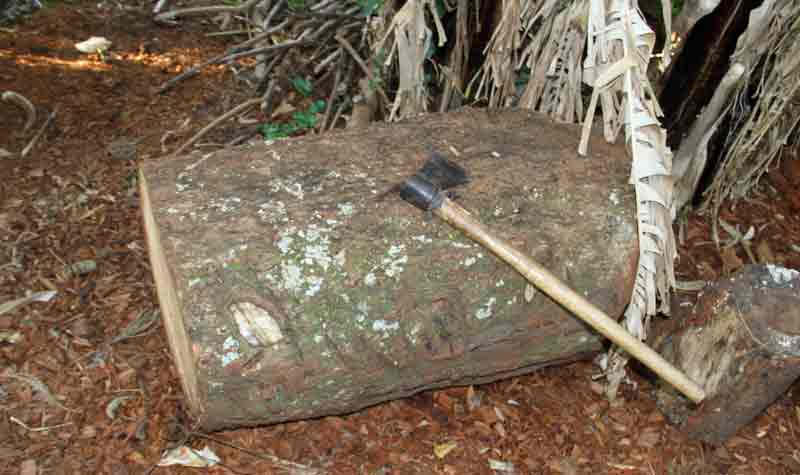
Kidenda, “Wood Logs used for curving out Kom Nyaluo”, 2013, Siaya, Kenya
Each log costs the artisan ten thousand Kenya shillings (Ksh. 10,000), equivalent to sixty-seven (67) euros. The stool is carved from a single block of wood, the wood between stem and roots, which has twisted grains that are more durable and cannot break or crack. The stool is made without using joints or nails. The seat takes the shape of a log. The carver uses Koyo (adze) to fashion Kom Nyaluo from the log, which does not require nails or joints.
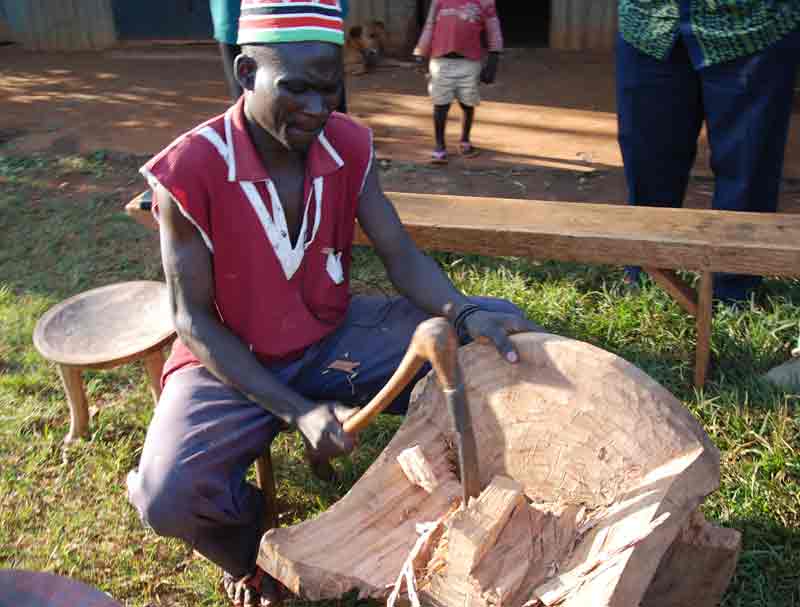
Kidenda, “Curving out the Kom Nyaluo from a log”, 2013, Siaya, Kenya (photo by Mary Clare Kidenda)
Its top takes the circular shape of the log, and after carving, it is smoothened with a furr (metal scrapper for smoothing wood).

Smoothening the Circular Top Using Furr, 2013, Siaya, Kenya; Furr, the handmade metal tool used to smoothen the top of Kom Nyaluo, 2013, Siaya, Kenya (photos by Mary Clare Kidenda)
They are then sandpapered and vanished using paintbrushes.

Sandpapered and vanished sets of Kom Nyaluo, 2013, Siaya, Kenya (photo by Mary Clare Kidenda)
A compass is used for drawing geometrical patterns on the top of the stool.
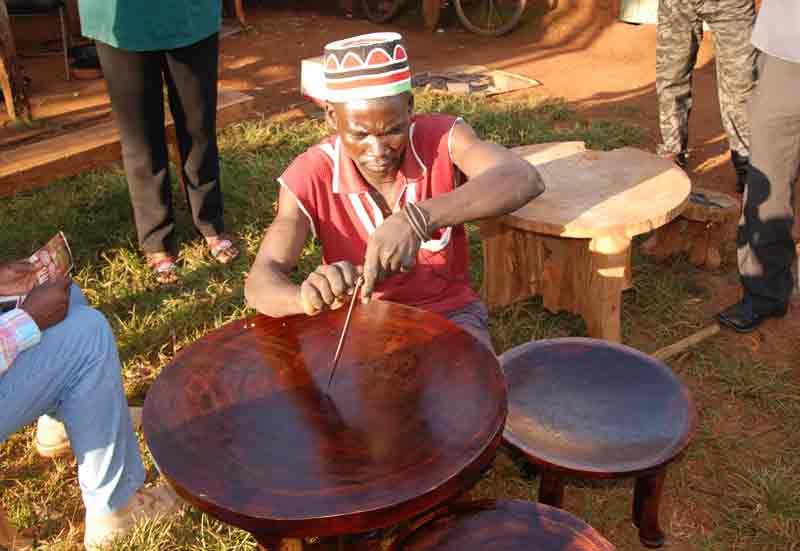
The drawing of geometrical patterns using a compass, 2013, Siaya, Kenya (photo by Mary Clare Kidenda)
Supposedly the design is inspired by a parquet floor in a European-style house owned by Tom Mboya. The wire inlay practised by the Kamba may also have been a model. Thereafter, wood, glass beads, metal, and colourful Maasai beads are banged onto the top, providing intricate decorative artwork.
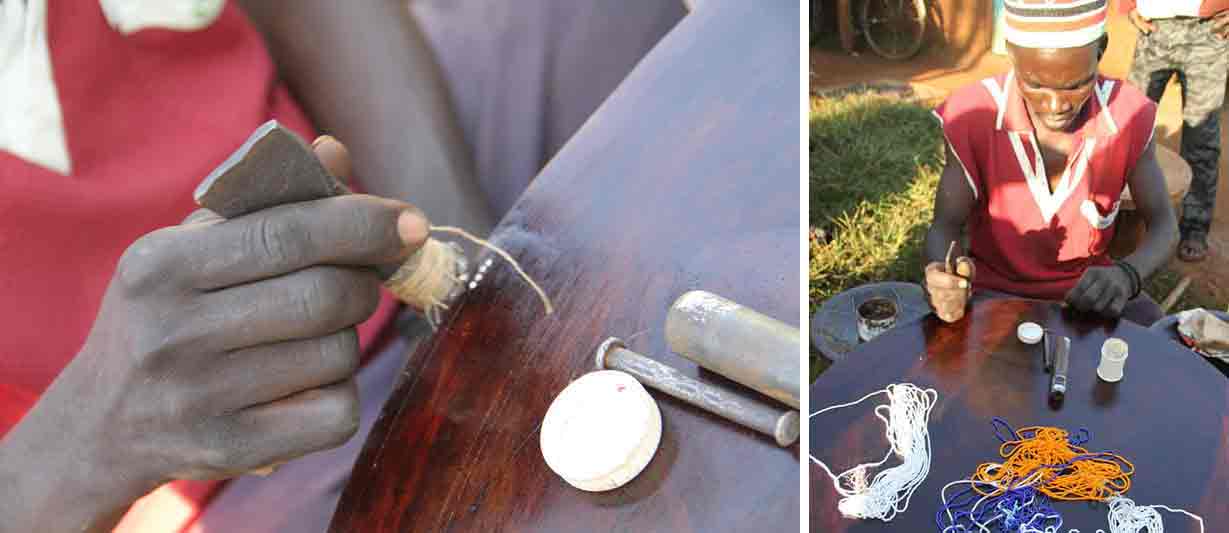
The inserting/banging of beads into the top of Kom Nyaluo, 2013, Siaya, Kenya (photo by Mary Clare Kidenda)
Finished: A Luo Dignitary Stool “Kom Nyaluo”
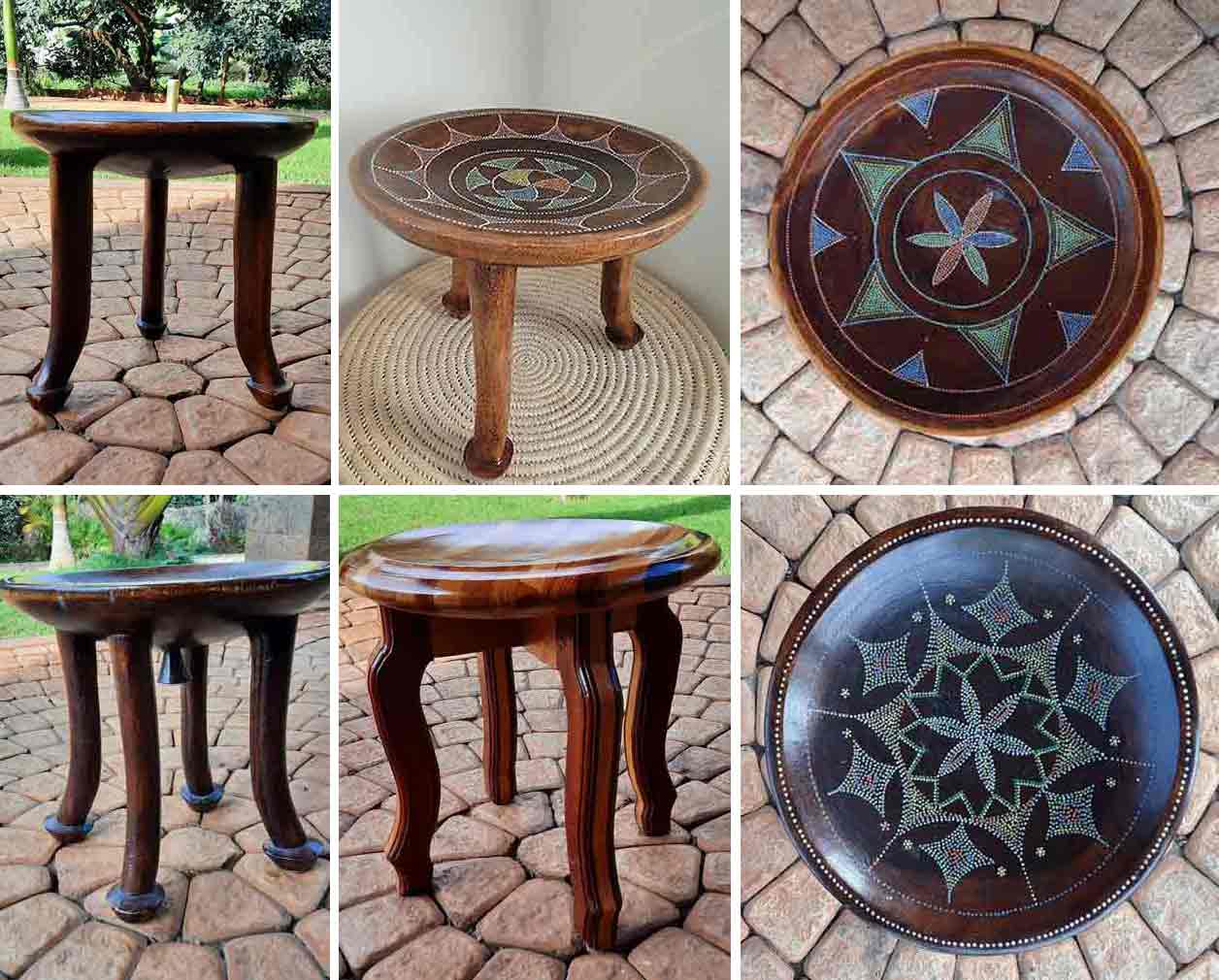
Variety Designs of Finished Kom Nyaluo, 2019, Karen, Kenya (photo by Mary Clare Kidenda)
When Sara went to the US for the inauguration of Mr Obama as president in January 2009 Mama Sarah carried a similar stool. In 2015 when President Obama visited Kenya, he was given a traditional Luo stool (Langat, 2015).
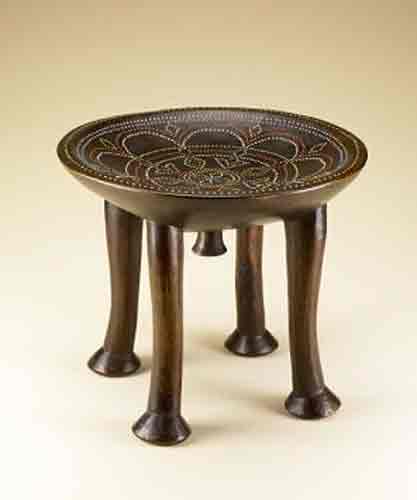
Kom Nyaluo Created by Luberastus Onyango, Wood, glass beads, metal, 2020 Smithsonian National Museum of African Art.
Luberastus Onyango was a renowned Kom Nyaluo craftsman (he died in 1988) whose stools have been given to at least 2 US presidents as gifts President, including John F. Kennedy and Barrack Obama.

Variety Designs of Finished Kom Nyaluo, 2019, Karen, Kenya (photo by Mary Clare Kidenda)
A generation of Kenyan artists and designers are translating their view of Kenyan design into beautifully crafted products and creating an aesthetic diverse as the tribes and cultures that make up Kenya. This is evident in the JKS in the preservation and modification of the designs like Kom Nyaluo through a traditional apprenticeship that is the critical training methodology of apprenticeship used in Jua Kali Associations. This is evident with the continued production of Kom Nyaluo because of for its cultural utility and aesthetic functionality in the contemporary modern spaces. Artisans and designers are to re-direct and co-create new narratives that re-position philosophical discourse on aesthetics, among other contemporary debates. A generation of Kenyan artists and designers are translating their view of Kenyan design into beautifully crafted products and creating an aesthetic diverse as the tribes and cultures that make up Kenya.
References
- Biko, J. (2010). When in Kisumu, make sure you visit the museum. Eastern African Publication. https://www.theeastafrican.co.ke/tea/magazine/when-in-kisumu-make-sure-you-visit-the-museum--1297986
- Deisser, A.-M., & Njuguna, M. (2016). Conservation of natural and cultural heritage in Kenya: A cross-disciplinary approach. UCL Press.
- Hino, H., Langer, A., Lonsdale, J., & Stewart, F. (2019). From Divided Pasts to Cohesive Futures: Reflections on Africa. Cambridge University Press.
- Hoehler-Fatton, C. (1996). Women of fire and spirit: History, faith, and gender in Roho religion in western Kenya. Oxford University Press.
- Langat, P. (2015). Mama Sarah reveals her special gift to Obama during visit. Nation. https://nairobinews.nation.africa/mama-sarah-reveals-her-special-gift-to-obama-during-kenyan-visit/
- Lutta, C. (2015). The Traditional Levirate Custom as Practiced by Luo Of Kenya. University of Gavle.
- Madut, K. K. (2020). The Luo people in South Sudan: Ethnological heredities of East Africa. Cambridge Scholars Publishing.
- Maina, S. M., Rukwaro, R. W., & Onyango, W. H. (2017). Infusing Design In The Jua Kali (Informal Sector) Production Processes. Journal of Humanities and Social Science, 3(2), 1–12.
- Ndeda, M. A. J. (2019). Population movement, settlement and the construction of society to the east of Lake Victoria in precolonial times: The western Kenyan case. The East African Review [Online], 52.
- Ojwang, H. H. (2021). A study of Luo Ethnobotanical Terminology with implications for Lexicographic Practice. Lifelong Education Material Publishers.
- Prince, R., & Geissler, W. (2008). Becoming “One Who Treats”: A Case Study of a Luo Healer and Her Grandson in Western Kenya. Anthropology & Education Quarterly, 32(4), 447–4.
- Somjee, S. (1993). Material culture of Kenya. East African Educational Publishers.
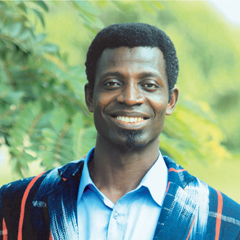 Osuanyi Quaicoo Essel
Osuanyi Quaicoo EsselPan-African collective memory: Sociocultural power and identity making on indigenous stools from Ghana and Kenya
Indigenous stools play significant roles in Ghanaian and Kenyan cultures and societies, especially, among the Akan and Masai ethnic groups in the two respective countries. Stools in the sociocultural context serve many functions. One of the primary functional roles is that, it serves as object for sedentary purposes. It is used as a utilitarian object for sitting, welcoming visitors, relaxation for people, for example, family and friends. In Ghana, it is customary to offer a visitor a chair (stool) by way of welcoming, serving him/her water, before asking the visitor of his/her motive for the visit. In the first instance, a visitor is given a sit to relax, followed by cup of water for drinking before asking the visitor to give purpose for the visit. Offering a visitor a chair shows an overt acceptance and respect for his/her presence. This traditional etiquette of serving visitors is ingrained the sociocultural life of both Ghana and Kenya.
Amongst the Akan of Ghana, a visitor is usually given a traditional stool as a seat that may befit his/her status in the traditional society or culture. A family may have different stools: those for showcasing power and authority of its user, honouring guests, and everyday usage by the household. The usage of stools in this context depicts its status-defining tendencies.
Apart from signifying status of individuals, stools, among the Akan of Ghana symbolises the authority of the ethnic or nation states. Stools in Ghana, generally serves as a symbolic soul of the society which links people to the traditional leadership (Antubam, 1963; Amenuke et al, 1991). The stool carries authoritative presence and signifies leadership concept. Warriors, clan heads, chiefs, kings used it to signify their status.
Stools serve as scared and authoritative object in the traditional chieftaincy institution of the southern part of Ghana. Kings/chiefs are enstooled in southern Ghana while those at northern part are enskinned. This implies that in the cultural rituals in the making of Kings/chiefs, stools are inevitable. Amongst the chiefdom, there are several ritualistic uses of stool. Some stools in the court of a chief may be used only once in his or her lifetime. Some are also used once a year during traditional festivities while some are used on daily bases.
As an object strongly connected with power and authority, the Ghanaian stool has three basic parts: the arc-shaped top, the middle portion and the flat base. Its arc-shaped top symbolises loving embrace of women or the concept of motherliness (Amenuke et al, 1991; Antubam, 1963). The middle portion usually gives the stool its name based on the symbol used in representing a concept or idea. The name of the of a stool could be based on a proverb, Adinkra symbol (Figure 1), traditional emblem or idea. For example, the stool in Figure 1 derived its name from the Adinkra symbol which has been stylised to occupy the middle portion, hence the name Nyansapow Stool.

Figure 1: Nyansapow (Wisdom knot) stool, wood, Ghana National Museum, Photo: the author.
The recognition of the presence of God in the society, gender roles and the presence of children is also acknowledged by the middle part of the stool. Design of a stool may adopt basic beliefs and practices of symbolic significance to the society in general. The symbolic adaptation speaks to the visual presentation of Ghanaian societal values including concept of societal functions, cosmic beliefs, family and gender roles.
As a utilitarian object, the stool plays vital roles in the rites of passage (birth, puberty rites, marriage and death) in indigenous Ghanaian and Kenyan cultures in different context. In indigenous Masai culture, stools are used by husbands as object of announcing their eminent visit to their wives on rotational basis. In many African societies, marrying more than one woman is an accepted norm just as same sex marriage are acceptable in other continents of the world. African society holds polygamy as a culture and not in negative perspective as non-African wrongly perceives it. Masai men with more than one wife usually build their houses in circular orientation, allocating a room each to the wives. The house of the man is situated in the middle of the circular-arranged houses. With this traditional set up, the stool is used as a preserve for the husband to signal his presence and authority. To announce his official intention of visiting one of the wives in the same compound, he sends his messenger to send his stool to one of the wives he intended to visit. By seeing and receiving the stool, the wife interprets this symbolic gesture to mean official announcement of her husband’s visit.
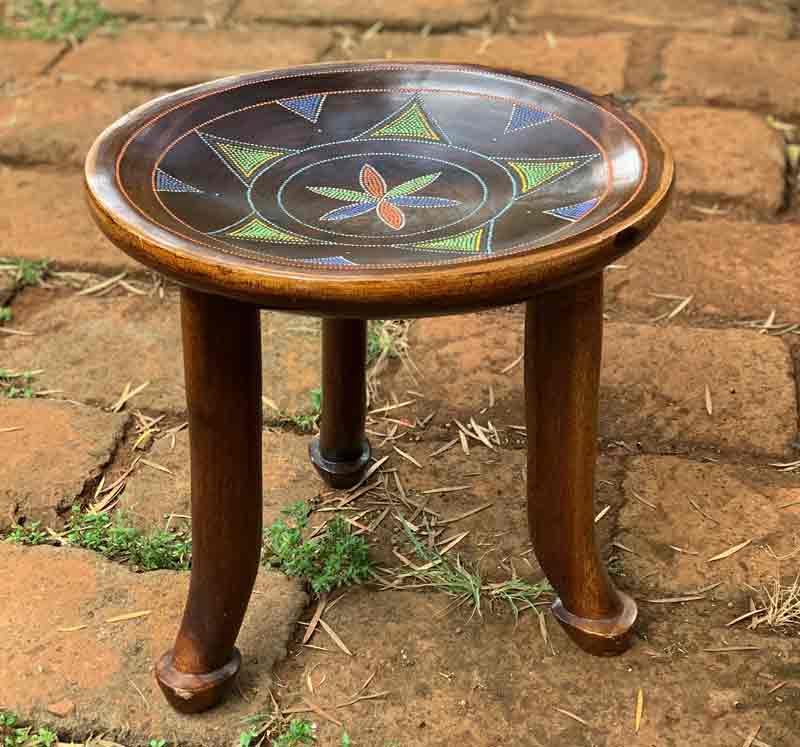
Figure 2: Traditional Kenyan stool used in negotiating visitation to wives, Found in the personal collection Mary Clare Kidenda. Kenya, Photo: the author.
The design of the Masai stool of Kenyan (Figure 2) varies from that of the Akan of Ghana. The Maasai stool features a circular-shaped top and prominent three-legged phallus-shaped upright stands. Usually decorated with traditional Masai beads, the top of the stool has bowl-shaped surface that serves as a comfortable receptor of the buttocks of the user. The tip of the phallus-shaped stands touches the ground and gently bends inward, and depicts crown-shaped cork memetic of the phallus. These observable characteristic features symbolise the presence and potency of the manhood in procreation. Despite its simplistic appearance, the stool creates a collective memory of marital relationships and the supervisory power of males and the loving embrace of women. Interestingly, this depiction to the African, is not a show of chauvinism but a reminder to males to protect and care for women within their power. Generally, having secret rendezvous or extra marital affairs is frond up by society. Performing official marital rights to marry a lady is the traditional expectation rather than having them as mistresses.
In Ghana, the head of a clan, warrior, chief/king and queen mothers uses the stool to symbolise authority. For that matter, the presidential seat was fashioned with inspiration from the shape of the stool. Despite the difference in design concept of the Kenyan and Ghanaian stools, both signify a collective memory of marital relationships, idea of procreation, leadership authority and the loving embrace of women in the society.
References
- Amenuke, S. K., Dogbe, B. K., Asare, S. K., Ayiku, F. D. & Bafoe, A. General knowledge in Art for senior secondary schools. Evans Brothers Limited.
- Antubam, K. (1963). Ghana’s heritage of culture. Koehler & Amelang.
- Asihene, E. V. (1978). Understanding the traditional art of Ghana. Associated University Presses

-
 Stefan Eisenhofer
Stefan EisenhoferHis artistic production is informed by the basic concepts of "love", "peace" and "liberty", and he expressly hopes that his works will help to create a better future.
Since 1996, after twenty-five years of working with clay, plaster, stone, cement and wood, Joe Big-Big has mainly used wire, iron nets and barbed wire to produce works with a very characteristic signature. Through the use of metal nets, he produces an effect of lightness and dynamism, even in sculptures several metres high. It was his fondness for big and high sculptures that earned him the nickname Big-Big.
Through his choice of materials he reveals the preoccupations that inform his work: he believes that people are free to decide whether they want to produce or destroy something, to encourage or suppress. In Joe Big-Big's work, wire and barbed wire, commonly symbols of oppression, captivity and division, represent the overcoming of bondage: they stand for prevention and protection. Joe Big-Big plays here with the notion of wire as an everyday material that normally goes unheeded, but which can become an instrument of human creativeness and global understanding through artistic activity. However, in Joe Big-Big's work this metal material seldom loses its ambivalence – for it is also a symbol of human labour and human toil. The artist makes use of these associations in works showing toiling people.
Joe Big-Big is intensely interested in the iconology of his metal materials and the objects he integrates into his works. Padlocks, for instance, symbolize the difficulties we get ourselves into, while keys stand for solving problems, freedom, peace and happiness. Coins represent the money we need to live, and clocks or watches are references to the time we need for solving our problems on the way to a carefree future. The metal materials thus symbolize wealth, strength and power. The artist also deliberately combines old with new metals, as a reminder that one needs to remember the old in order to be able to cope with the present and the future.
The themes taken up by Joe Big-Big come from nearly all areas of human life. His works are concerned with very personal issues as well as with political topics, such as war, poverty, flight, displacement, or the equality of women. He believes that his images speak louder than words, and he intends them to arouse emotions in the viewer, for "art without emotion, feeling or meaning is like a voice or a noise without meaning".

-
 Annette Schemmel
Annette SchemmelThe photo at hand was shot in Paris in the 1920s. We are looking at a beautiful young woman with very fair skin who seems to have sunken her head on a table as if for a rest, while her left hand is carefully exposing a polished mask made from dark wood. The woman is Kiki de Montparnasse alias Alice Prin (1901 – 1953), Man Ray’s lover, a model for many painters and herself a successful artist. Supposedly, Kiki was central for the myth of the Montparnasse as an artistic enclave in Paris.3 The mask is simply “African” in the eyes of my pupils at first. I want them to learn that we are looking at a portrait mask4 of the Baule people in Ivory Coast. Pupils should also understand that such carved portraits served to honor an important member of a Baule society, a woman in this case. A dancer wearing a similar mask would incorporate the portrayed notable at the occasion of ritual dances, thus celebrating her achievements.5 This specific mask’s features are balanced and dignified, harmonious but not realistic, a point to which I will come back later.
Meanwhile I shall argue that Man Ray’s picture thrives on carefully staged contrasts. The title that has come to stick with this photograph hints not only at black-and-white photography itself, but also at the most obvious contrast, at the White and Black6 skin or surface of the picture’s protagonists. Yet there are further opposites linking the lady and the mask in the picture, namely the opposites of young, ultra-modern and lively versus ageless, “primitive” and inanimate, matt versus shiny, skin versus wood, a seemingly passive woman versus the upright face of the mask, holding versus being kept. The photo historian Wendy Grossman has described how these opposites relate: “Almost as if it were a direct cast, the vertical mask, with its shiny black patina, is a negative mirror image of the reclining model’s ovoid face, echoing her pursed lips, closed eyes, and tautly styled coiffure. Parallel symmetrical shadows extend beneath the two perpendicular forms, coupling face and mask in a shallow and austere space.”7
Clearly, Man Ray has smartly staged the Black and the White. By the time he shot this picture, Man Ray was making a living of object photography in Paris, then the world capital of fashion. It might therefore come as no surprise that this picture made its first appearance in an early print medium dedicated to beauty and fashion, the Vogue magazine. When the issue came out in 1926, everything “exotic” was fashionable in Paris, especially arts from (indirect) African origin, such as Jazz, Josephine Baker or, well, the mask in Man Ray’s photograph.8
Beyond its uncontested fashionable appeal “Noire et Blanche” unveils some deeper, more unsettling meanings, some of which I intend to unfold here. A simple reading is ready at hand if one places this artwork in the historical context of the colonial era. In 1926, the mask’s country of origin belonged to Afrique Occidentale Française. On this backdrop, the dreamy woman holding the mask in Man Ray’s picture appears to be a Freudian slip in the form of a photograph, an unconscious idealization of colonial domination. Are we looking at a personification of the imperial power of France carefully embracing its colony Ivory Coast?9
Next, we could follow a feminist lead towards interpretation. This photograph stages two females, whilst an important third actor of this mise-en-scène is invisible, the male photographer. Through his camera, the male artist is looking at the passive naked woman und at the artefact of a culture that is foreign to him. Obviously, the mask has become passive, too, once removed from its original context. In this reading, Man Ray’s photograph appears as a staging of the desire for submission – the submission of the idealized female and that of the cultural “other”. As viewers, we are lured into this voyeuristic pleasure, unless we take some critical distance.
Following a suggestion of some South African colleagues, we shall now look at this photograph through the lens of the Martinican author Franz Fanon. In his famous psychoanalytical text “Peau noire, masques blancs”, Fanon is pointing at the phenomenon of the essentializing construction of a Black soul (“l’âme noir”).10 Following Fanon, Man Ray’s photograph can be considered one of those efforts by European (and certain African) artists of the classic Modern era to catch hold of an imagined essence of Black culture. This effort needed to objectify Blackness in order to make this construct palpable and acceptable. Arguably, in “Noire et Blanche” the ’black soul’ lies in the hand of a white person and is reduced to an object, the sculpted mask. Furthermore, it could be argued with Fanon that Man Ray used the Blackness of the wooden object, the “noir” that is readily associated with the ‘continent of darkness’ in the collective imagination of Westerners,11 in order to highlight his girl-friend’s Whiteness. We know that contrasts help at intensifying and it is no secret that White is a color (of skin) that Europeans tend to associate with innocence and purity.12 Arguably, this racialized contrast of the “Noire” and the “Blanche” served to celebrate qualities that Man Ray projected onto Kiki de Montparnasse, his partner.
So far, I have tried to make clear that the artwork “Noire et Blanche” is not only a showcase of female attractivity, but that this photo also has a violent dimension to it because it relies on certain colonial mechanisms of distinction. As an art teacher, it is my ambition to make this picture’s ambivalence understandable for my pupils. I know that pupils are more likely to learn if they are allowed to make their own discoveries,13 for instance by exploring ‘real’ scientific data through the Internet. From our classroom, we can access the Metropolitan Museum’s online collections, which include a comparable portrait mask.
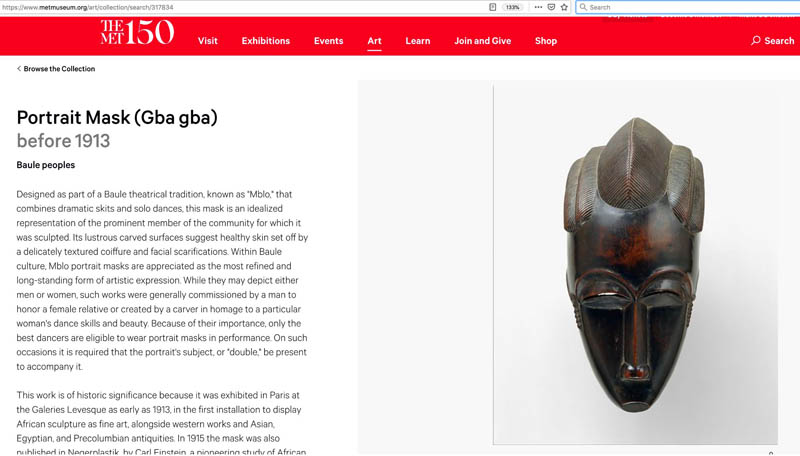
Website of the Metropolitan Museum, New York
Other than the black-and-white photograph by Man Ray, the museum’s more recent color picture unveils the fine shades of brown and red tones that are characteristic of the tropical wood used for Baule masks. Obviously, such masks are not Black in reality. Furthermore, pupils can learn from the provenance info that the Baule mask in the Met’s collection was famous amongst art lovers and artists in Paris and Berlin already before WW1.14 This insight helps to understand why Man Ray might have chosen a similar object for his photograph: artists tend to learn from each other.
As a continuation, I like to encourage my pupils to sum up the museum’s text about the characteristics of portrait masks by the Baule by means of notes in German language. In doing so, the learners realize that these masks are carved according to a complex canon of beauty, that the forehead is high for a reason, namely in order to represent intelligence, that the polished surface signifies good health and that a representation of a person can convey dignity even if the proportions of its face have been exacerbated. This is new to many youngsters, whose frustration with their own efforts at realistic drawing has shaped their preference for artists’ realistic skills. Pupils also learn from the online information that this mask can only be brought to live as part of a performance, thus discovering a problematic aspect of its preservation in a museum.
Coming back to “Noire et Blanche” with this new knowledge, my pupils realize that Man Ray’s photograph is concealing much of the knowledge that is available today. They understand that it is worthwhile to research background information for non-European art, even if this requires leaving their textbooks behind and going an extra mile with their foreign language skills. In the course of the classroom discussion that follows we are wondering why a Baule community would have let go of their precious mask, a question leading to recent restitution debates.15 Furthermore, the teenagers understand that the coquettish presentation of the mask in the hands of a naked European woman might be read as a sign of lacking respect by members of its culture of origin. At this point of the discussion some pupils have experienced a change of perspectives. This experience of assuming a position previously perceived as ‘other’ in the course of a lesson is the very purpose of our engagement with this artwork at school, arguably it is also the purpose of looking at art altogether.
Let me summarize this approach. Comparing Man Ray’s photograph “Noire et Blanche” with the mask from the Metropolitan museum’s collection is a way to scrutinize a canonical picture from a critical perspective without denying the aesthetic appeal of the historic photograph. By way of this lesson I hope to enable changes of perspective and to build sensibility for post-colonial readings of pictures amongst pupils. Taking a bold stance, I shall claim that such lessons are conducive to a more general type of visual competence because I like to think that my pupils’ experience with the implications of this attractive historic picture might encourage them to also critically scrutinize any other picture in the future.
References
[1] For a thorough photo-historical analysis read Wendy A. Grossmans insightful article “Unmasking Man Ray’s Noire et blanche”, American Art, Vol. 20, No. 2 (Summer 2006), pp. 134-47.
[2] For instance, Man Ray is mentioned in the widely used text-book Epochen der Kunst. Von der Moderne zu aktuellen Tendenzen (Hsg: Robert Hahne, Oldenburg Schulbuchverlag GmbH, 2013, S. 150/51). In this book, information about him and the photo “L’Enigne d’Isidore Ducasse” (1920) are featured under the header of „Fotografie und Film im Surrealismus“. It can be argued that „Noir et Blanche“ is surrealistic as well, since it seems to be illustrating Lautréamonts famous phrase “beautiful as the chance meeting on a dissecting table of a sewing machine and an umbrella” (Lautréamont alias Isidore Lucien Ducasse, „Die Gesänge des Maldoror“, 1874.), with Man Ray’s “chance meeting” bringing together a white woman and a wooden mask.
[3] en.wikipedia.org/wiki/Alice_Prin (last accessed on August 26, 2019).
[4] Wendy A. Grossman’s article “Unmasking Man Ray’s Noire et blanche leaves no doubt that the mask in the picture is actually an airport art version of a Baulé mask, by the way (p. 136).
[5] Collection Records of the Metropolitan Museums (Baulé Masken), www.metmuseum.org/art/collection/search/317834 ((last accessed on May 3rd, 2017), also https://www.metmuseum.org/art/collection/search/319512 (last accessed on August 26, 2019)
[6] In this text, I will spell Black and White with capitals in order to highlight the cultural construct of Race.
[7] For the complex history of the title see Wendy A. Grossman, “Unmasking Man Ray’s Noire et blanche”, pp.140.
[8] More about this fashion in en.wikipedia.org/wiki/Josephine_Baker (last accessed on August 26, 2019).
[9] Research on Man Ray does not support this easy hypothesis however. In Wendy A. Grossman’s article from 2006, the origin of the photograph is described as an open-ended artistic process partly sparked by commercial interest, partly by a collaborator, but not by political intention. However, I would like to argue that art works tend to transmit more or less unconscious convictions of their authors and their peers, which makes of artworks valuable witnesses of their times.
[10] Frantz Fanon, “Schwarze Haut, weiße Masken”, translated by Eva Moldenhauer, Wien: Turia + Kant, 2013, p. 14, 147.
[11] Fanon makes this point in “Schwarze Haut, weiße Masken” (2013), p. 158.
[12] “Symbolik der Farben, Formen, Zahlen” in Lexikon der Kunst, Bd. VII. S. 153-154, E.A. Szeemann Verlag, Leipzig 1994.
[13] I am here referring to pupils from eleventh grade of the Bavarian Gymnasium, whom the syllabus obliges to explore aspects of the body in art during half a year.
[14] Collection Records of the Metropolitan Museums (Baule masks), www.metmuseum.org/art/collection/search/317834 ((last accessed on May 3rd, 2017), also https://www.metmuseum.org/art/collection/search/319512 (last accessed on August 26, 2019)
[15] For a thorough introduction to this question read Felwine Sarr’s and Bénédicte Savoy’s “restitution report” commissioned by the French state. http://restitutionreport2018.com/ (last accessed on April 1, 2020).
published April 2020
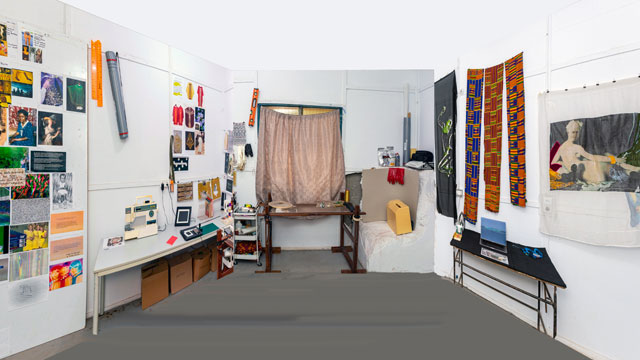
-
 Priscilla Kennedy
Priscilla KennedyCONNECTING THE DOTS
A Pilgrimage.
My studio is literally a skein; an element that forms part of a complex whole. Everything that forms part of its composition to me is like a thread being pulled through the eye of a needle to form a tapestry of narratives as body of works. I have absolutely no idea of what impact the connection of these dots/knots will fabricate or the entirety of its arrival and that to me is where I get immersed in roller coaster of jouissance. That is how the idea of process even in the most pleasurable way becomes an integral part of the context in which I work as an artist.
Unravelling.
Here, I connect the dots/knots within the current situation running through my artistic journey. The space in itself has multiple sub spaces I call ‘moods’’. I swing in-between these moods literally in pursuit of a certain expression towards my interests and concerns. These mood swings take off from my IDEA BOARD (https://www.explore-vc.org/en/galleries-content/idea-board.html) where my thoughts appear partially in flesh. That for me becomes my point of departure into streams of decision making. In totality, it’s a snapshot of all my thoughts as a cohesive whole where I can make choices guided by my ultimate motivation at a given time, on a particular body of work.
Then I swing into my RED BOOK (https://www.explore-vc.org/en/galleries-content/red-book.html) where I narrow down my thoughts into writings as part of a research. In transition from the previous mood of writing to this new mood is the optimum to my purpose, which refers to the making or the tangible expression. I deliberately swing back and forth between these two moods to create a certain dialectical relationship between them as a deliberate and crucial aspect to my practice. This opens up my explorations and discussions of the subject of the body, the politics of marginalization and subjugation from a feminine perspective with the use of materials and techniques connected to a certain body presence (craft).
Enchanted by the Familiar.
I see the body as a fluid material that morphs with time or momentarily based on certain conditions or instances. It is like that one thing that is connected to several things. I am interested in that materiality of the body that allows it to be transient. And in terms of that materiality, what it can become and what it can do.
So, to me, the idea of the female body aside its continuous flux is my interest in something about it that creates a permanent or ongoing relationship with itself. That is how the idea of the hand with regards to craft becomes crucial to my practice. This is in reference to its past and present subtle association with subjugation or oppression or basically how the idea of subjugation and oppression is tied to work categorized in the frame of the domestic. That sense of marginalization or the coupling of an idea to a body that makes it lay claim to a certain power absence is of interest to me.
With the hand, I rethink the value of craft.
Through that there is already an acknowledgement of a certain distance that is brought back to close proximity with the body through intimate artistic approaches like thread embroidery and tambour beading. This is where I swing to my TAMBOUR TRESTLE SPACE (https://www.explore-vc.org/en/galleries-content/tambour-trestle-space.html), here, I make laborious and intimate embroideries that feature beads. I perceive this process of beading as a metaphor in reclamation of the self, while highlighting the residue of power that still lingers within the very same system of subjugation. It is a subtle performance that happens in the studio yet inherent to the context.
A thousand Yards Away and Within.
I am tempted to refer to my whole studio as a bigger idea board where certain themes and artistic strategies come together to form narratives and contributions to subjects of interest. In constant exploration and experimentation, a mash up of all these themes and artistic strategies may birth a work of art that offers a blend of fabric cut-outs merged with beaded patterns or forms in the current state of my practice. Yet, I am open to exploring diverse forms of expressions in relation to the context as time goes on.
Absorbing the Far Fetched.
I connect with materials from a perspective where I perceive them as political instruments that exist in time and not only as objects of enjoyment. I believe in the idea of a common vocabulary in the use of familiar materials and objects because they inherently possess personal and cultural meanings from spaces they have been.
In Pursuit of…
If I’m to imagine my destination (the ideal work) from the swinging I’ve been doing for some time now, I assume I’m going to arrive at a magical tapestry composed of fabric cuts outs of feminine bodies fused with other forms of embroidery that may features threads and beads. These materials and artistic approaches may be composed to create fantastical characters, emerging out of a playful hybridization of the human body and sometimes other life forms.
My destination may not be a narrow one, I believe, but one of diverse interesting processes where I can achieve limitless possibilities in my creative projects. The narratives within the symbolic realm of imagery seek to emancipate the oppressed feminine body through a material and technique culture.
 Ernst Wagner
Ernst Wagner
Fig.2 & 3: Table in front of the window with bead embroideries (Photos: Priscilla Kennedy)
In the photo we see the artist's studio; in it, work tools (such as rubber gloves, a sewing machine, rulers), materials to stimulate the artistic process (e.g. image sources, sketchbooks, materials) and artistic work results. The room is painted white, even the crumbling block in the right-hand corner. This echoes the idea of the "white cube" with neutral walls as a currently still valid basic model for exhibition spaces of contemporary art. Everything is very clean and tidy. On the three tables in the room, materials and tools are arranged like in a still life. For example, on the table in front of the (curtained) window, an arrangement showing, among other things, a round embroidery frame with a bead embroidery that is not yet finished: work in progress. Everything is obviously deliberately placed in this museum-like working space, which thus develops a programmatic expressiveness.
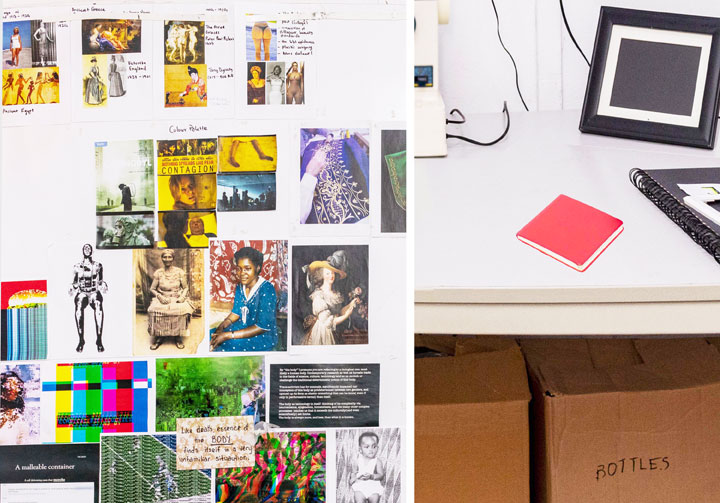
Fig. 4 & 5: Print outs on the wall, red book (Photos: Priscilla Kennedy)
Fabrics, textiles play a major role in this scenario. They are simply material (the kente fabrics on the right) or supports for the two larger works (also on the right). But they also play a major role in the many pictures (DIN A 4 printouts on the left wall), now as depicted clothing: women's dresses in older prints, on works of art (from ancient Egypt) to more recent photographs. Surprisingly, there are images of the vestments of Catholic priests and, beyond that, abstract fabric patterns, ornaments. Working with fabric (which also includes the embroidery frame) is repeatedly found as an important field of work for feminist-oriented artists or for a feminist-oriented visual language in contemporary art.
The DIN A 4 printouts are partly annotated in writing, which reinforces the impression that we are dealing with a "picture atlas" in the sense of Aby Warburg or an "atlas" in the sense of Gerhard Richter, i.e. an often surprising compilation of pictures which in this combination can or should provide very systematic suggestions for pictorial design and for reflecting on contexts.
This also includes the other collections of pictures in the room, in the photo album, on the computer or in transparent sleeves (on the right-hand table), which are obviously often biographically oriented, for example through the baby and children's photos, or through images of their own artistic works.
The overall picture is thus dominated by central aspects of current "global art", an art that could just as easily be shown in Berlin or New York. In this one, however, site-specific aspects, i.e. aspects related to Kumasi, Ghana or West Africa, emerge again and again: the kente fabrics, the photos in the album, even the materiality and construction of the walls speak of the place of origin.
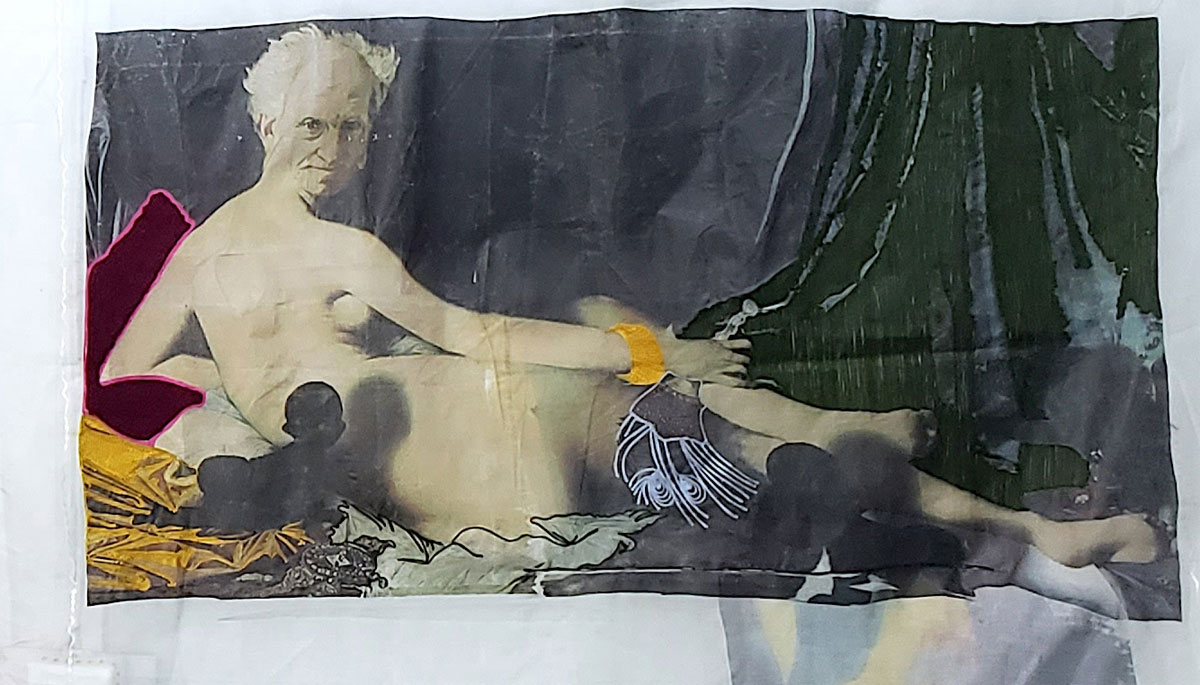
Fig.6: Priscilla Kennedy, o.T., experimental study (courtesy the artist)
This coming together of different thematic layers becomes clear once again in a detail, the painting that the artist presents in her studio on the right wall and which she herself sees as a technical experiment (see illustration below).[1] It shows an adaptation of Ingres' painting "Great Odalisque" from 1814, now in the Louvre. The superimposed head of an older white man (Arthur Schopenhauer) is reminiscent of the same pictorial strategy that the Guerilla Girls successfully tried out with the odalisque in 1989 by putting a gorilla head on it ("Do women have to get naked to get into the Met. Museum?"). While the other elements of the work vary the forms from Ingres' painting, mainly in colour and technique, there is one crucial addition in this work: a small baby in silhouette, black, looking up at Schopenhauer and casting a shadow on the pale odalisque body. The whole thing is printed or embroidered on a transparent, light fabric that throws folds.
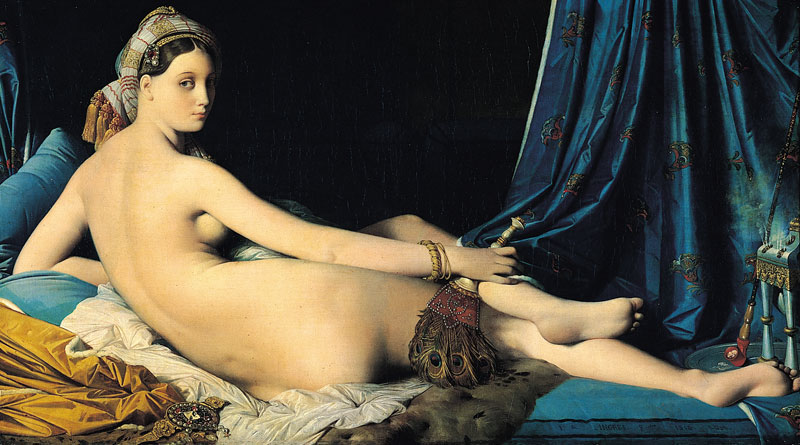
Fig. Ingres, The Great Odalisque, oil on canvas, 1814, Louvre (Copyright CC)
These references make the picture seem familiar to Europeans, but in its combinatorics and with the harsh contrasts it is enigmatic, just like Kennedy's studio itself. Here, an icon of Western art is cheekily alienated, here the canvas becomes a thin nettle, here the woman becomes a man, the soft cushion becomes a hard wedge, the white woman gets a black baby. On the one hand, objects and their meanings are thus unambiguously designated and named, but at the same time, through the artistic formulation and its combination, they are placed in an enigmatic resonance space, which immediately eludes the unambiguous settings that have just been made. An "in-between space" between black and white skin colour, man and woman, opaque and transparent, old man and young child, European (old) art and West African (young) art.
If one looks back through this image (which is taken here - against the artist's intention - as a key image) to the studio, one finds very similar constellations there: empty chasubles of Catholic, i.e. male priests against female bodies in erotically charged clothing, falling, soft fabrics against rigid measuring instruments from geometry lessons, physicality against abstract patterns and ornaments. With such contradictions Kennedy creates an experimental constellation, she spans a field that reports on possibilities in between without letting them culminate in a final work. The open, unfinished field of experimentation thus becomes the actual "work".
[1] "This work does not have a title. I considered it as an experiment to try printing with a blend of embroidery. What is actually piercing through from the back is also part of the experimental process where I made heat transfers again behind the fabric to see the interplay of images from various directions of the material. I do not consider it as a work but as an experiment. " (Information from Kennedy to the author via email on 5.10.2022)

-
 Zoe Schoofs
Zoe SchoofsThe oriental carpet — in Europe it was once proof of the owner's long journeys or good trade relations, but in the regions of origin it was an everyday object used everywhere, often with a reference to paradise. With the invasion of Afghanistan by Soviet troops, the aesthetic concept changed — instead of lively gardens and elaborate arabesque patterns, suddenly there were tanks and weapons — so-called war rugs were created. Not only, but also for European viewers, whose idea of carpets is decisively influenced by classical Persian appearances, these new conventions of representation represent a break with the familiar. Soldiers, diplomats and war correspondents brought such pieces with them from their stays in Afghanistan and made them known in Europe and the USA. Enthusiasts and museum staff were quickly found to create collections of these objects, including the collectors Hans Werner Mohm, Till Passow and Enrico Mascelloni, as well as the Museum für Völkerkunde in Freiburg and Die Neue Sammlung – The Design Museum in Munich.
Carpets from the Orient were already popular at European courts in the 13th century, as they referred to the good trade relations with the Near and Middle East and served as prestigious items of the interior. Carpets were imported, but were also knotted directly in European court manufactories. With the enthusiasm for the Orient that emerged in the middle of the 19th century, the perception of carpets, whose origin had been relatively irrelevant until then, changed to a meticulous, scientific analysis, especially with regard to origin and iconography. World exhibitions and museums made them accessible to an ever wider public. While up to then carpets from courtly and urban manufactories had been the object of desire, over time those with a nomadic context became the centre of interest (Jansen 2001: 138). While this interest had already subsided on the part of the ruling dynasties in the 17th century, carpets for decorative use were produced for the bourgeoisie in the course of the industrial revolution. In 1861 William Morris founded his company Morris & Co. in Great Britain. "Over time, the carpet became part of an aesthetic 'spatial concept'. The technique and decorative motifs were first adopted from the Orient, but then adapted to Western tastes.“ (Bristot 2011: 32) They embodied "[...] the romantic ideal of the free and combative nomad in boundless expanse [...] the Turkmen carpet could be regarded as a sign of this independence sought among men.“ (Jansen 2001: 64) Thus the carpets found their way into male smoking rooms and libraries, also as blankets, cushions and seat covers when cut into pieces. The relocation of the production to factories brought with it simplifications of the motifs and thus further changes. The luxury good was now accessible to a broad section of the population and was thus the object of everyday use.
Carpets from these contexts, unlike woven textiles, are often knotted. They can be found in many different cultures all over the world. Basically, a distinction is made between courtly and urban works and works of the rural and nomadic environment, although there are of course blurred lines. While in the case of courtly and urban carpets all work processes were carried out by the respective specialists (spinning, dyeing, designing, knotting, etc.), all work processes for the carpets from the rural-nomadic environment were in one hand. These objects were primarily produced for the company's own needs and in some cases for the small local market. Courtly and urban carpets, on the other hand, were mostly commissioned works, intended for export or as envoy gifts and made in manufactories. The respective environment had a decisive influence on the appearance of the knotting work. In contrast to rugs made in manufactories, those produced in private homes or a rural community where meant for the local market.
The objects that today are commonly known as classical oriental carpets mostly originated from the Persian Empire and are therefore also known as Persian carpets. At this point, however, it should be noted that a large number of ethnic groups which were united under Persian rule knotted those carpets and that therefore there a large number of different aesthetic concepts. Those from northwestern Persia are most likely to correspond to the European idea of a particularly valuable carpet. The basis for this was an enduring period of peace under Shah Ismael in the 16th and 17th centuries, which is why sufficient resources were available to create works with particularly elaborate motifs (Bristot 2011: 56). In addition to purely ornamental patterns, numerous representations of gardens were created; vases, flowers and trees of life often referred to paradise.
On one hand, various textiles are ubiquitous in many societies: in tents and yurts, carpets have been hung on walls and lain on the floor as thermal insulation since ancient times and hung at the entrance as a substitute for doors. On the other hand, carpets were made in a (semi-)nomadic context in memory of the deceased. These carpets were placed on walls and, in addition to their insulating function, also had the function of commemorating the ancestors. The prayer rug was of central importance for the performance of religious practices. Thus, textile products shape the visual perception of craftsmen and users, and on the other hand, everyday things also find their way into the art of knotting (Frembgen/Mohm 2000: 15).
When Soviet troops invaded Afghanistan on Christmas Eve 1979, war became part of everyday life for many people there; in the course of the years, a civil war broke out. “As early as 1981, the war took on genocidal dimensions. Young and old, men, women and children were affected by unspeakable atrocities.“ (Knauer 1994: 27) "The cultural policy of the [Prorussian] Afghan government was aimed at destroying the traditional ties of Afghan culture to the Islamic world and at adopting the Soviet ideology.“ (Knauer 1994: 28)
As a reaction to these developments, women began to process these impressions into carpet art. The aim was not only to report on specific events, but also to motivate resistance against these conditions and the political system. The resulting carpets originated from the nomadic rural environment. In contrast to large manufactories, in which the knotting and design process was usually carried out by different people, these experiences could be directly converted.
In Figure 1, three horned hexagons arranged one above the other in a light background dominate the main field, which is lined by a wide, sixfold border. In the inner field of the rhombuses representations of three to four prayer rugs, several stylised mosques and a centrally placed ZSU-23-4 tanks were arranged. Although the tank immediately catches the eye, the carpet looks very calm, there are no other war instruments depicted. This impression is reinforced by the many geometric borders and the structure of the main field, whose symmetrical arrangement is reinforced by the triangles placed on the sides. The similarities to Mushwani carpets from the west and Baluchi carpets from the south are striking (cf. MacDonald 2017: 77 / 78; Parsons 2016: 166/167). The carpet measures 160 x 88 cm and was probably knotted in Pakistan in the 1980s. Since the carpets were mostly in use before they came to the bazaar and to Europe through traders, only estimates can be made in this respect. Since it didn't take long for international buyers to become interested while there was also a market in Afghanistan and Pakistan, such carpets were soon produced in Pakistani refugee camps to generate income.
In Figure 2, a border of BTR-60 tanks frames the midfield, on which two identical representations are arranged one above the other: A hand underneath hammer and sickle is directly related to the map of Afghanistan. Below is the inscription جهاد (Dschihád). This motif of map, hand and writing can be found twice in the carpet. On the right side two AK-47 rifles were placed. On the left side there are two representations of trucks each with a ZPU-4 rifle (heavy multi-bore anti-aircraft machine gun) and also a Mi-24A combat helicopter with glazed bow. The field is filled with pseudo-cyrillic writing.
In addition to the motifs shown here, there are many other illustrations that can be found on such carpets. Some point out the changes in day-to-day business by depicting weapons, others illustrate specific attacks on cities. But what was the purpose of those carpets whose motifs depict violent everyday scenes? In this respect, too, only speculations can be made. Scientists around the world hold different views on this question. What is certain however, is that the aesthetic change from classical ornamentation to specific depictions was also accompanied by a change in function.
Surely the desire to process the experience played an important role. According to Jürgen Frembgen, it can be ruled out however, that carpets depicting objects of war have found their way into the family space. Instead, he assumes that the carpets were used in the men's house, hujra, or in the reception room of a house reserved for male visitors, otaq — rooms in which conversations and discussions took place. "The use of space and spatial presence are [...] the expression of social interaction and include shared experience. Spaces thus become zones of identity building.“ (Issa 2009: 83) In such a place they could also serve as a call for resistance. The aesthetics of Object 2 resemble anti-Soviet leaflets that circulated in large numbers, often showing the head of state Babrak Karmal, appointed by the Russians, represented as an (Afghan) puppet whose strings were pulled by the Russian hand. In Carpet 2, only the hand and the Soviet symbol were taken from this illustration. A carpet that makes war the subject of discussion could stimulate conversation and strengthen the idea of community. In addition, the homeowner positions himself on the side of the mujahideen. Pursuing the same purpose, they have been presented "in the houses and tents of some mujahidin commanders (sic!) and wealthy people — as ornaments and probably also out of pride about victories won.“ (Frembgen/Mohm 2000: 46) Accordingly, the objects would have been bought and used as "art within resistance" (Frembgen/Mohm 2000: 46). With the resignation and presumably also a further deteriorating economic situation, the objects later came back onto the market and were then purchased by international buyers.
At first glance, it may seem surprising to be processing everyday life in a carpet. Since particularly Persian pieces are often seen as an investment, timeless patterns or representations of traditional legends are more common. These representations of realities of life therefore mark an aesthetic idea of Modernism in which "the textile is already understood as a pictorial surface in the sense of narrative, sometimes even realistic iconography.“ (Baumhauer 2016: 156)
Since their creation carpets with war motifs have served various purposes: to contribute to financial survival, to express political messages, to represent a medium of processing war. At a time when issues concerning refugee policy in Germany make up a large part of the political debate and there is disagreement about how to deal with migration of all kinds, the carpets have not lost any of their actuality. They are contemporary witnesses of the beginnings of a war that is hardly remembered today. Globalized relationships have made it possible for them to be known to experts around the world. Using various narrative concepts, the carpets with their „pictures against oblivion“ are meant to serve as a reminder of the conditions in the country for the following generation" (Frembgen/Mohm 2000: 45) – thus another purpose can be added, not only in Afghanistan, but all over the world. Although they were not explicitly created for this specific purpose, they could gain it through their display in museum spaces.
References
- Baumhauer, Till Ansgar: Kunst und Krieg in Langzeitkonflikten. Visuelle Kulturen im Dreißigjährigen Krieg und im heutigen Afghanistan, Berlin 2016.
- Bristot, Monique Di Prima: Bildlexikon Teppiche, Berlin 2011.
- Frembgen, Jürgen Wasim / Mohm, Hans Werner: Lebensbaum und Kalaschnikow: Krieg und Frieden im Spiegel afghanischer Bildteppiche, Blieskastel 2000.
- Issa, Christine: Baukultur als Symbol nationaler Identität: Das Beispiel Kabul, Afghanistan, Dissertation zur Erlangung des akademischen Grades Dr. rer.nat im Fachbereich Geographie, Gießen 2009, https://geb.uni-giessen.de/geb/volltexte/2010/7483/pdf/IssaChristine_2009_12_08.pdf [15.12.2018], S. 83.
- Jansen, Simone: Von der Jurte ins Herrenzimmer. Reisen von orientalischen und zentralasiatischen Teppichen, in: Dietrich, Andrea / Herbstreuth, Peter / Mannstein, David (Hrsg.): Orientale 1. Recherchen, Expeditionen, Handlungsreisen (Kat. Ausst. ACC Galerie, Weimar 2001), Weimar 2001, S. 58–71.
- Knauer, Karin: Afghanistan. Krieg und Alltag (Kat. Ausst. Museum für Völkerkunde, Freiburg 1994), Waldkirch 1994.
- MacDonald, Brian: Tribal Rugs. Treasures of the Black Tent, Woodbridge 2017.
- Mascelloni Enrico: War Icons, in: Mascelloni, Enrico / Sawkins, Annemarie (Hrsg.): Afghan War Rugs. The Modern Art of Central Asia (Kat. Ausst. Memorial Art Gallery, University of Rochester 2016), https://mag.rochester.edu/exhibitions/afghan-war-rugs/ [19.11.2018], S. 15–20.
- Parsons, Richard: The Carpets of Afghanistan, Woodbridge 2016.
- Passow, Till / Wild, Thomas: Geknüpftes Gedächtnis. Krieg in afghanischer Teppichkunst (Kat. Ausst. WILD Teppich- und Textilkunst, Berlin 2015), Berlin 2015.
- Schlammiger, Karl / Wilson, Peter L.: Persische Bildteppiche. Geknüpfte Mythen, München 1980.
published February 2020
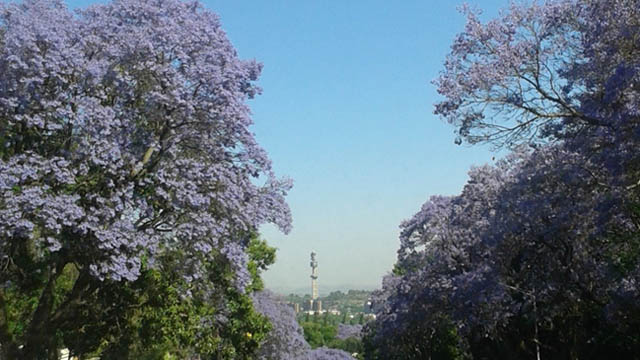
-
 Esther Kibuka-Sebitosi
Esther Kibuka-SebitosiThe image shows the deciduous large Jacaranda tree that grows up to 20-30 m high. The leaves are bipinnate produced in conspicuous large panicles, each flower with a five-lobed purple corolla. The fruit is oval flattened capsule containing numerous seeds. The Jacaranda in Pretoria flowers between September to November with purple flowers that paint the whole City purple. For this reason, Pretoria is called the Jacaranda city.
Known for its alluring lilac blossoms, the Jacaranda tree (Jacaranda mimosifolia) is native to South America and was introduced for decorative purposes way back in the 1800s to South Africa. In Pretoria, the Jacaranda was first introduced in Arcadia in 1888. Its beautiful flowers are characteristic of the springtime in Pretoria, City of Tshwane, Gauteng Province, where it fascinates the residents by putting a light purple carpet all over the roads.
Although the purple flowers remind the University students of the exams that take place around that time of the year, the elegant beauty of the Jacaranda flowers calms down the souls of many residents. Legend has it that when a flower from the Jacaranda tree drops on top of your head, you would pass all of your exams. Therefore, students wish for on eof the soft blossoms to drop one of its tubular flowers on their heads as they pass under this magical tree. The seeds, on the other hand, are enclosed in a brown, oval and flat capsule, which bursts open when dry, releasing flat winged seeds. They disseminate via wind dispersal to the savannah, woodlands, rocky ridges, riverbanks and all sorts of habitats.
To the conservationists, this deciduous beauty is an invasive species. Its origin is reported to be South America, particularly Argentina and /or Brazil because of the name’s Guarani origin in Argentina. The tree is regarded as an invasive species in South Africa and Australia. In South Africa, it is labelled as preventing growth of native species. However, in other parts of Africa such as Zambia, Zimbabwe and Kenya, the species is also present without being considered invasive yet.
In Pretoria, City of Tshwane, Gauteng province, the Jacaranda trees are enormous and line the pavement of the streets and inhabit roadsides, as evident in the images above. When they flower, they paint the whole City purple and it is spectacular to witness. The images portray the beauty and elegance of the tree that perhaps is draining the native ecosystem, which not to many are aware of.
Jacaranda blossoms are stunningly beautiful, but hidden underneath is the contradiction of the tree being an alien species that prevents indigenous trees from growing. Indeed, not “all that glitters is gold”. For this reason, the Jacaranda tree is no longer allowed to be planted in Pretoria.
Water scarcity is the most alarming problem of the twentieth century next to climate change in conservation. The sustainable Development Goal (SDG) 15 aims to protect, restore and promote sustainable use of terrestrial ecosystems, sustainably manage forests, combat desertification, and halt and reverse land degradation and halt biodiversity loss. In the meantime, SDG goal 11 promotes sustainable cities and communities. The dilemma of keeping the City green with trees and balancing the water ecosystems with the proper tree planting is a challenge that must be tackled through a multi-inter and trans-disciplinary approach to sustainable development. The Jacaranda tree is an example of this contradiction.
Apart from being beautiful ornamental trees, the Jacarandas' wood is used for furniture and other crafts. Meanwhile, programmes to address the social economic problems in communities were linked to alien species like the Jacaranda. These programmes aim at the sustainable management of natural resources through the control and management of alien invasive plants, by removing the species and thereby bringing employment to the youth, as part of the expanded Public Works Programme. The objective is to reduce the impact of invasive alien trees on water resources.
All over the world, trees and plants are introduced for various purposes. These trees contribute to multiple services for instance fodder, timber, medicines, fruits, shade and ornaments. Now as resources become scarce - especially water -, conflicts are beginning to emerge. Benefits and costs of these species are weighed against the endurance of the people and impact on the environment. Many strategies involve physical removal of alien vegetation. The benefit-cost analyses conducted so far have shown that the investment in clearing invasive species cost for example R116 in riparian areas, which equals about 6,40 US-Dollars (Marais and Wannenburgh (20008). However, it is important to remember that clearance seldomly results in total elimination.
References
- Jacaranda Jacaranda mimosifolia, retrieved from http://www.invasives.org.za/legislation/item/265-jacarandajacaranda-mimosifolia
- Marais, C and Wannenburgh, A.M. (20008) Restoration of water resources (natural capital) through the clearing of invasive alien plants from riparian areas in South Africa — Costs and water benefits.
- South African Journal of Botany 74 (2008) 526–537
- https://www.news24.com/Archives/Witness/Theyre-beautiful-but-jacarandas-can-do-harm-warns-expert-20150430
- Bolsmann, E. (1997). Jacaranda – Pride of Pretoria. Pub Be My Guest Publishers, Pretoria pp. 40.
- Potgieter, M.J and A.Samie (2019). Ethnobotanical survey of invasive alien plant species used in the treatment of sexually transmitted infections in Waterberg District, South Africa, retrieved from: https://doi.org/10.1016/j.sajb.2019.01.012
published May 2020
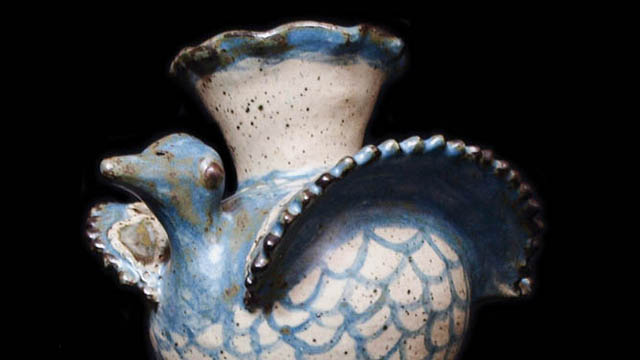
-
 Ronnie Watt
Ronnie WattThe discriminatory apartheid politics in twentieth-century South Africa were designed to advance the political, social and economic empowerment of the white citizenry; the entrenchment of Western culture and values; to transform the black populace into a labour force and limit their education and training. Within that white supremacist dogma, black material culture’s only footing was its anthropological and ethnographic interest. The output of the pottery, weaving and print workshops of Rorke’s Drift came to stand in symbolic defiance of all of that.
Rorke’s Drift grew from the missionary work of the Evangelical Lutheran Church in South Africa’s KwaZulu-Natal Province Under the initial management of Peder and Ulla Gowenius who were recruited from Sweden, the centre was conceptualised for the training of black members of the local community to produce art and crafts as a means of self-support. The pottery workshop at the centre was established in 1968 by the Danish potter Peter Tyberg.
Whilst the Zulu culture is predominant in the province, it also accommodates other cultural groups. The majority of the initial group of women recruited for the pottery workshop belonged to the Sotho group and had the skills to produce utilitarian pottery for brewing, cooking and storage in traditional forms, decorated with applied motifs and incised elements (Fig 2).h The women were also familiar with traditional Zulu pottery forms in monochromatic colors (hues of black and brown) and decorative motifs that included pinched surfaces, geometric designs and raised linear coils. These were and continue to be produced with hand-building techniques and pit-firing.
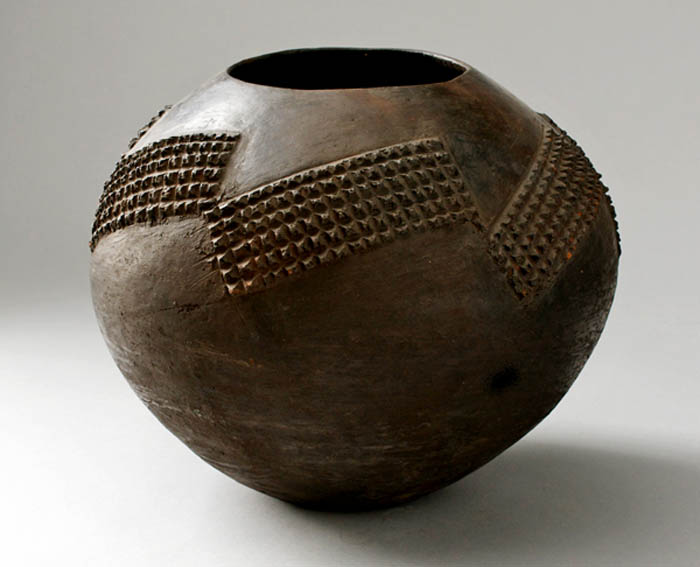
Figure 2
A traditional vessel (ukhamba) for the serving of beer in the Zulu culture, 1965, hand-built, burnished and decorated with applied raised designs (amasumpa), collected in Melmoth in KwaZulu-Natal Province, South Africa, 24 x 29 cm, Collection of Iziko Museums of South Africa, Cape Town, ©Michael Hall

Figure 3
Traditional Zulu vessels collected in KwaZulu-Natal Province, South Africa, c.1990 to 1996, various potters, hand-built, burnished and decorated with incised and raised designs, Collection of Ian Garrett, ©Ian Garrett
The potters were introduced to Western production techniques, materials and kiln technology at the workshop. They were also shown books and magazines that exposed them to pottery forms outside of their culture and convention such as of Pueblo Indian and Nigerian pottery (Hosking, 2005, p. 33 and Gers, 2015, p. 268). It was the dictum of Rorke’s Drift to promote individual expression flowing from “an innate naivety and conceptualism” (Leeb-du Toit, 2012, p. 79) but the resulting works had to have appeal for Western consumers. In the pottery this culminated in a “composite globalised identity” (Hosking, 2005, p. 57) that married Scandinavian late-modernism and indigenous African knowledge systems. Freddie Motsamayi (2012, p. 24) described it bluntly as an example of an invented tradition in which new forms of African expression were produced for the benefit of Western patrons.
Whilst staying for the most part within the parameters of traditional Sotho and Zulu forms, the women potters created their versions of Western forms of bowls and vases and also vessels that approached sculptural forms or were distinctly sculptural forms. The decorations which referenced indigenous culture usually covered most of the surface and were applied as incised or built features and painting in layers of slips. The works became progressively more intricate and composite with richly painted and texturally decorated surfaces (Hosking, 2005, p. 96).
A new form that emerged in the workshop oeuvre was the “bird pot” introduced by Judith Mkhabela who worked in the studio during the 1970s. This was a pot with a pedestal base to which the head, wings and tail of a bird were added. Whether this form was Mkhabela’s own innovation is not a certain fact. It might have been modelled on the nineteenth century European hen-on-nest form (Maggs and Ward, 2011, pp. 155–156) that served as a container for fresh eggs. It is equally likely that the pot referenced two other indigenous cultural vessel forms, namely the bird-shaped earthenware vessels made by the South Sotho cultural group for possible use as water containers, water coolers or egg storage (Riep, 2011, p. 185) and the other being the totemic pig and elephant vessel forms made by the amaHlubi tribe associated with the Basotho cultural group (Garrett, 2020).Over the years this form was adapted by some of the other potters such as Elizabeth Mbatha (Fig 4).
Figure 4
Elizabeth Mbatha at work in the Rorke’s Drift pottery workshop in 2014, ©Ronnie Watt
Rorke’s Drift pottery was first . Two years later, the gallery acquired hand-built and thrown works from the studio for its permanent collection. This was significant for being the first ceramic works by black South African artists to be acquired for inclusion in a public collection during the apartheid era. The best of the pottery was selected to be sold in overseas outlets with Sweden and Germany as prime destinations. The potters set a precedent amongst South African black potters by signing their works on the feet of the pottery and further adding the date and kiln data alongside the leaf logo of Rorke’s Drift (Fig 5). This practice copied Western potters who identified their works with potter’s marks, signatures or monograms.
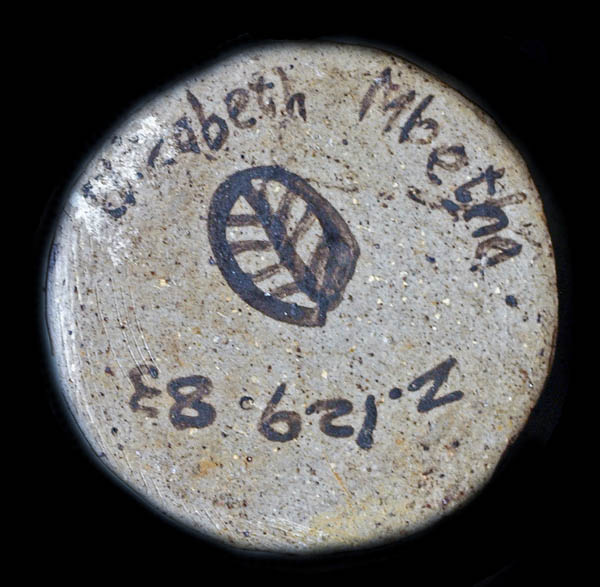
Figure 5
The foot of the double bird vase bears the name of the potter Elizabeth Mbatha [sic], the kiln data and the leaf-form logo of the Evangelical Lutheran Church Centre for Art and Craft at Rorke’s Drift, ©Ronnie Watt
As a collective and as individuals, the potters defied tradition and convention, Western perceptions and expectations of traditional pottery. The potters preserved elements of indigenous form and designs in their pots alongside the non-traditional features and sculptural appendages (Figs 6, 7). This illustrates the statement by the ceramics art historian Elizabeth Perrill (2008, [Sp]) that Indigenous Knowledge Systems (IKS) of materials, methods, forms and values are not monolithic and permit an expansion of innovative aesthetics within and as a continuation of a culture.
Figure 6
Lephina Molefe, Stacked vessel, 1980, hand-built and glaze-decorated reduction-fired stoneware, 26 x 17 cm, Evangelical Lutheran Church Centre for Art and Craft at Rorke’s Drift, South Africa, private collection, ©Ronnie Watt
Figure 7
Euriel Mbatha, Figurative vase, 1984, hand-built and glaze-decorated reduction-fired stoneware, 21 x 13 cm, Evangelical Lutheran Church Centre for Art and Craft at Rorke’s Drift, South Africa, Collection Minette Zaaiman, ©Ronnie Watt
The demand for Rorke’s Drift pottery started to wane in the 1990s for several reasons. Dealers and collectors broadened their interest to include the other indigenous potters who had since come to the fore. Problems with the management of the centre and financial constraints detracted from the promotion of the pottery and the recruitment of new potter talent. The quality of the pottery deteriorated after the introduction of commercial clay bodies and glazes and there was little variance in the forms and their decorations. The potters were no longer producing for the local and international collector market but had to produce works that met the expectations and budgets of tourists.
As “tourist art”, the twenty-first century pottery of the ELC Art and Craft Centre at Rorke’s Drift reveals forms and decoration intended to meet buyers’ tastes and budgets. The purposeful re-orientation towards the tourist market to tap into that source of revenue, is not a slur on the history, aesthetics or ethos of the studio. As in the earlier works, the more recent works illustrate an entanglement of the maker and the made, relevant to a new context of time and circumstance.
References
- Garret, IW. (2020). Personal correspondence.
- Gers, W. (2015). Scorched earth: 100 Years of Southern African pottery. Johannesburg: Jacana.
- Hosking, S. (2005). “Tradition and innovation: Rorke's Drift ceramics in the collection of the Durban Art Gallery, KwaZulu-Natal.” Unpublished MA (Fine Arts) dissertation. University of KwaZulu-Natal, Pietermaritzburg.
- Leeb-du Toit, J. (2012). Rorke’s Drift ceramic traditions in context. In J. Stretton (Ed.), All Fired Up: Conversations between storerooms and classrooms (pp. 77-81). Durban: Durban Art Gallery.
- Maggs, T. & Ward, V. (2011). Judith Mkhabela: An inspirational potter from KwaZulu-Natal. Southern African Humanities (23), September, 151–71.
- Motsamayi, MF. (2012). “The Bernstein Collection of Rorke’s Drift ceramics at the University of KwaZulu-Natal: A catalogue raisonné.” Unpublished MA (Art History) dissertation. University of KwaZulu-Natal, Pietermaritzburg.
- Perrill, E. (2008). Indigenous Knowledge Systems (IKS) & Zulu Ceramic Arts: Azolina MaMncube Ngema, One Woman’s Story. Interpreting Ceramics 10, [Sp]. Retrieved from www.interpretingceramics.com/issue010/articles/01.htm.
- Riep, DMM. (2011). “House of the Crocodile: south Sotho art and history in southern Africa.” Unpublished PhD thesis. University of Iowa, Iowa City. Retrieved from https://doi.org/10.17077/etd.0dzbhfvg.
published November 2020
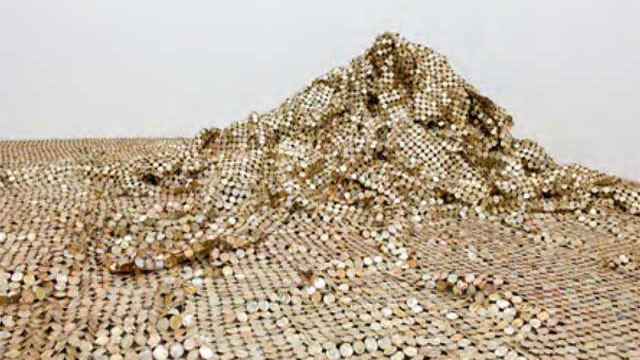
-
 Stefan Eisenhofer
Stefan EisenhoferThe philosophy of borrowing materials and tools, as well as visual motifs, from the local environment goes back to his student days at Kwame Nkrumah University of Science and Technology in Kumasi in the late 1960s. It was the creative efforts of local artisans there that inspired him to become interested in the philosophy of "Natural Synthesis" from 1975 onwards at the University of Nigeria, Nsukka, where he is now Professor of Sculpture. This manifesto of the so-called "Zaria Rebels", whose members included Uche Okeke, at that time also a lecturer in Nsukka, postulated that local traditions should be interpreted using modern materials and techniques. This idea was to have a lasting influence on El Anatsui.
A striking example of its expression in his work is the metal "tapestries" he has made since the late 1990s, which are actually sculptures rather than wall hangings. They consist of thousands of aluminium bottle caps discarded by Nigerian distilleries. Sorted by colour and prepared by El Anatsui's many assistants, they are stitched together with copper wire into "tapestries" several square metres in size. The tiny pieces of aluminium are arranged in patterns that evoke the narrow-band kente textiles made by Asante and Ewe weavers. However, this classical form of West African cloth is subjected by El Anatsui to a radical transformation in these works, which undermine the idea of metal as a rigid material. He transforms into something pliable and almost sensuous. Closely linked to this is the concept of a "nomadic aesthetic" involving fluidity of ideas, impermanence of form and indeterminacy. For El Anatsui this especially includes encouraging and even forcing the curators of his exhibitions to hang his works in accordance with their own ideas. He himself sees his wall hangings as physically unfixed and insists that there is no final and mandatory way of hanging them.
In addition, El Anatsui creates connections with the aesthetic, political and economic roles of textiles – as an important component of global trade and consumer history, and as a significant vehicle for the transfer of ideas and creative ingenuity across cultures. Furthermore, he refers repeatedly to the function of kente cloths as a way of memorializing something, for they are often linked to events, people and historical or current issues: "You can memorialize a lot of things in cloth instead of having a statue in bronze," says El Anatsui and takes this up not only by naming some of his works after kente cloths, but also through the fact that the bottle tops he uses to create his "cloths" come from brands of liquor with names that refer to historical events.
El Anatsui's wall hangings directly continue his idea of creating "transformations" of regional West African phenomena, and experimenting with materials that are important in the local cultural context. His artistic career began with wooden food trays from local markets which he decorated with burned or carved versions of adinkra symbols. The next phase was characterized by a series of broken and partially mended clay pots which served as a reflection on the current political situation in many African countries, and at the same time as an optimistic reference to the fact that clay pots are repairable and new uses can always be found for them: "When a pot breaks it's not the end of its useful life," says El Anatsui. Even breakage can lead to something new.
In the 1980s he again turned to wood as a material, and discovered the chainsaw as a particularly suitable instrument for working African hardwoods. The chainsaw became for him a metaphor of the long history of violence to which the cultural traditions of Africa were, and still are, exposed. "Each process has its own peculiarities or language. [The chainsaw´s] language [is] of violence, of tearing, of clawing, of dividing," says El Anatsui.
In the abstract wood sculptures of this phase the seed is already sown for something that runs through his work to this day: aesthetic comments on globalization and consumer culture, on the wastage of goods – and human lives. It is this aspect that has led to the great popularity of some of his works, for instance "Visa Queue" (1992), and in particular "Akua´s Surviving Children" (1996), which was made in Denmark while he was grappling with the theme of the slave trade. The stylized human figures made of driftwood show the damaging effects of water, wind and weather, the chosen material in itself a symbol of unprotected exposure: "The wood having (like the slaves) been torn from its land source and exposed to the hostile elements of water and wind."
Linking aesthetic creations with political and economic issues is also a characteristic of those works in which he takes up the world's growing ecological challenges. This applies to his "Peak Project", created in 1999, which consists of numerous freestanding "peaks" made from thousands of glittering milk tin lids. Once again, the unfixed nature of the work is a prominent feature, the "peaks" taking on a different shape at each exhibition site. The open-endedness of his works can be seen in "Coal Pot", a work exhibited in the sculpture garden of the University of Kentucky Art Museum. It consists of a 15-feet iron cauldron filled with large pieces of Kentucky coal. In the course of time, the coal will disappear, gradually changing the appearance of the sculpture.
El Anatsui has always been concerned with West African traditions facing the Global North under conditions of modernity, and in his special way he strives to give them new life and meanings that are of relevance today.
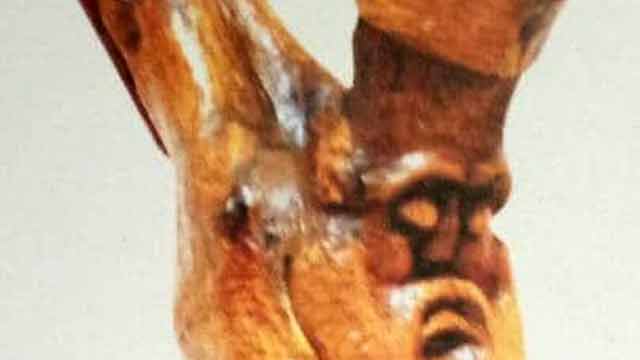
-
 Patrique deGraft-Yankson
Patrique deGraft-YanksonFortunately, contemporary Ghanaian artists like Vincent Akwete Kofi and Kofi Antobam, who by their training, developed both the skills and the mindset to create and fully appreciate African arts have played major interventional roles. They, through rigorous production of masterpieces over the years, led the move to redirect the wavelength of Ghanaian artistic expressiveness along the paths of decolonization. A typical example of these arts is the Crucifix, the selected object for this discussion.
The Artist – Vincent Akwete Kofi
The Crucifix is a sculpture in the round, measuring 45x10x19 inches, and was created by Vincent Akwete Kofi, a Ghanaian artist who lived between 1923 and 1974. Characteristically, Vincent creates outstanding sculptures in humanistic forms. His sculptures speak to traditional African philosophies, ideals and beliefs (Grobel, 1970), and he through his works, seeks to reinforce the beauty, dynamism and complexities of African art. Indeed, Vincent’s artistic posture was largely informed by his training in the then Achimota College in the Gold Coast (now Ghana), an educational institution which sought to bridge the gap between European and African forms of knowledge (Woets, 2014).
Description and interpretation
The Crucifix was carved in tropical hard wood, one of Vincent Kofi’s preferred media, with the style and subject matter reminiscing his belief in the creative and objective fusion of lessons from the history of modernism in the arts by an immersion in his Ghanaian heritage. Like his earlier sculptures therefore, the choice of this Euro-Christian theme throws lights on his Pan-Africanism and decolonization intents.
The sculpture is a depiction of a free-standing human figure with features that conform with his earlier wood carvings, such as depiction of enlarged head and heavy feet which are more representational than naturalistic. Again, the entire form is seen as being directed by the limitations of the tree trunk deliberately chosen for the work. This, of course is one of Kofi’s traditional wood carving styling.
The Crucifix is postured in a clasped forward-bent lower limb. Like the lower limbs, the upper limbs of the figure which are raised over the head and stretched backwards, are also clasped together, depicting the entire image in a rather discomforting posture. Further strengthening the feeling of distress and discomfort in the image is the dropped and lifeless face and facial features of the image. The long thick beard of the image with the tightly fitting cylindrical hat on the head, carved after one of those won by royals among some sections of Ghanaians, give the figure an elderly look.
Other significant features of the image are the exaggerated clasped, forward-bent and wobbly elephantine feet, dropped face with shuttered eyes, flaccid body/skin/muscles (which is visible even in wood), and the heavy beard.
In trying to understand the presentation of the Crucifix, it is important to note that Ghanaians have stories about characters who lived and suffered similar fates as that of the Christ. The Fante people (a section of the Akan ethnic group), for example have records on a man called Ahor, who offered himself as a sacrifice to the gods, when the life of a human being was demanded as an antidote to a calamity which befell the people. Up to today, Ahor is celebrated in a festival called Ahorbaa to commemorate his brave and sacrificial feat. Other ethnic groups in Ghana have similar stories which render the Passion of the Christ not just a familiar phenomenon, but a lived experience recorded in the history of the people.
Also worthy of notice is the familiarity of the various themes which characterize the story of the Christ, such as his kingship, miraculous personality, sacrificial journey and his eventual torture and death. The Crucifix therefore, was Vincent Kofi attempt at depicting the passion of the Christ in a way that would make it familiar and relevant to the people.
The image in Kofi’s Crucifix was therefore needed to be presented as a man with royal personality, as depicted in the cylindrically shaped cap, which is symbolic of some of the Ghanaian royal millinery that depict kingship and authority. This is reinforced by a heavy beard to portray wisdom. Wisdom which is reserved for kings and aged people.
Analysing from the experiences of a people whose history was not devoid of unpleasant experiences, such as enslavement, brutal torture and execution, the image presented in the Euro-Christian Crucifix could not have been a complete representation of the Man of Sorrow described in the Christian holy book (Isaiah 53:3). Kofi therefore saw the need to present a figure which paints a real picture of a man who had gone through an extreme physical pain. Those strong and heavy, yet wobbly feet were a symbol of a man overburdened with sorrows and sins of the world.
Indeed, the man on the Crucifix was dead, with no chance of maintaining a smooth and shiny skin as seen in the Euro-Christian crucifix. In Vincent Kofi’s Crucifix, therefore, he, even in wood, managed to present a flaccid body/skin and muscles which, with the closed eyelids, dropped and lifeless face gave an impression of an extremely tired dead body. Probably an artistic rendition that comes close is Mel Gibson’s crucified Christ in his movie, the Passion of the Christ.
Conclusion
Early missionaries introduced the Christian religion with its attendant icons, images, stories and language in 1400s. Semblance in religious icons, images, stories and their associated functions made the acceptance of Christianity easier among indigenous Africans/Ghanaians. Vincent Kofi’s Crucifix could therefore be considered as a great effort towards connecting foreign Christian belief systems to known religious experiences, thereby making Christianity much more relevant to the African than it has been.
References
- African Artists in America (1978). African Affairs, 11 (3), 84-85.
- Frank, B. (1999). The Visual Arts of Africa: Gender, Power, and Life Cycle Rituals by Judith Perani and Fred T. Smith (A review). African Affairs, 11 (3), 14-16.
- Kwami, A. (2016). Kofi, Vincent Akwete (1923–1974). In the Routledge Encyclopedia of Modernism.: Taylor and Francis. Retrieved 31 Dec. 2021, from https://www.rem.routledge.com/articles/kofi-vincent-akwete-1923-1974. doi:10.4324/9781135000356-REM845-1
- Moore, G. (1967). The Arts in the New Africa African Affairs, 66 (263), 140-148.
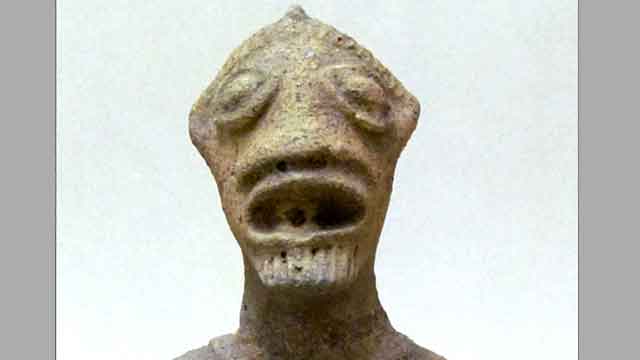
-
 Mahmoud Malik Saako
Mahmoud Malik SaakoThe Koma figurines did not only enrich the stock of African artwork but evoke the minds of a great culture represented or embedded greatly in these art pieces. These figurines have been classified into anthropomorphic (the use of human features), and zoomorphic (the use of animal features), based on the stylistic representation while some are both anthropomorphic and zoomorphic (they possess both human and animal features). They are some of the anthropomorphic figurines that have one head and two faces or one body with multiple heads while some have a head with a conical shape. Those anthropomorphic coned figurines are the most common types and are consisting of a head with a long conical neck or body.
The Koma figurines could be equated to those of Nok and Ife (in Nigeria), Sao (around Lake Chad), the Akan funerary clay figures (in southern Ghana), and the Jenne and Bankoni clay figurines of the Inland Niger Delta (in Mali). Beyond their artistic significance and historical products, the Koma figurines have generated some interest among intellectuals in and outside Ghana including antique dealers.
Before the scientific investigations commenced in the 1980s and 2006 onwards, the communities within this geographical area known as "Komaland" were encountering or recovering these terracotta figurines when they were digging for soil to build their homes. The people then referred to them as kronkronballi which literary means "children from an old-time". These figurines are either found in house or burial mounds within the area. The culture of the current inhabitants of the area where these figurines are found do revere their ancestors, and any disturbance of the ancestral graves or the removal of any burial goods either intentionally or accidentally must be expiated by sacrifices, and all the grave goods are reburied at the same place. Since the people are far remote from the creators or ancestors of these figurines, many of the damaged ones were either thrown away while a significant number of them were taken home and given to children as toys.
Moreover, art dealers in Ghana and West Africa recognized the commercial value of these Koma figurines long before the scientific investigations by the first anthropologists, archaeologists, and historians. These Koma figurines were, therefore, sold at the various art markets in northern Ghana (in Bolgatanga at the craft village) and southern Ghana (in Kumasi and Accra art centers) to foreign tourists. It is through this medium that Koma figurines have found their way into many European and Western museums.
Furthermore, scientific excavations in the 1980s and the subsequent excavations in 2006 onward by a team of archaeologists in Ghana and abroad, have attracted the attention of the world through conferences and publications. The Koma figurines were initially appreciated based on their aesthetic values but the subsequent archaeological excavations subjected them to more rigorous scientific analysis and historical classification such as social, cultural, political, and environmental. The scientific excavations have also to some extent put a stop to the numerous lootings of the sites that were hitherto very rampant.
The archaeological investigations in recent times and based on radiocarbon analysis from pieces of charcoal dated the site between the 6th and 14th centuries AD. But further investigations are still ongoing to identify the authors or creators of this supposed complex civilization in northern Ghana though, parallel has been made to the Lobi in Ghana and Burkina Faso.

-
 Kerstin Pinther
Kerstin PintherAs a miniature, the sculpture Indépendence Tchao (2014) by the Franco-Algerian artist Kader Attia refers to the Hôtel de l'Indépendence in Dakar, Senegal. At the beginning of the1970s – a little over ten years after the independence of the west African country under Lépold Sédar Senghor and a few years after the first Festial Mondial des arts nègres (1966), the hotel was built by Henri Chomette and Roland Depret. Since the end of the 1940s and into the 1980s, the office of the French architects had built governemental and private buildings and others in numerous African countries. Indépendence Tchao was initially created as a site-specific installation on the occasion of the 11th Dakar Bienniale in Senegal. It refers back to the hotel high-rise with the sculpture; the ‘borrowing’ can immediately be recognized, above all by its characteristic brise-soleil façade. Kader Attia used discarded and somewhat rusty inex index boxes, stacked on top of each other. The inventory of the archive itself came from a dissolved administration in Algeria. Only a few kilometres away from the central exhibition venue of Dak'Art, the hotel still forms a striking, decidedly 'modern' architectural antithesis to the flat neo-classical colonial administrative buildings - an aesthetic incunabulum that symbolized the future in its outstanding verticality and modern furnishings. However, the former architectural icon is now empty and in a state of decay. Indépendence Tchao (the title is a reference to the famous song Independence Cha-cha from 1960/Kalle) thus refers both to a utopia that has grown fragile, the bursting of a dream; as well as to the persistence of colonial archiving and (also structural) standardization practices, to old and new (architect) networks in the postcolony.
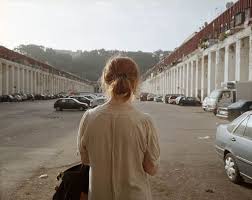
Attia, Kadar. Pascale, Fernand Pouillon, Alger. 2012
https://inferno-magazine.com/2012/06/23/kader-attia-le-corps-utopique/ [Stand: 28.10.24]
Two further - this time photographic - works by the same artist also address the ambivalences and potentials of modern architectural promises: In the case of the photograph of a woman, seen from behind, surrounded by the mighty arcades of the 200-column courtyard, the connection between the body as the 'first architecture' and the 'built' architecture is central. Not least through the title Pascale, Fernand Pouillon, Alger (2012), it becomes apparent that the person is a transsexual. According to Attia in an interview, the strangeness in one's own body corresponds to the 'architectural' alienation that the inhabitants of the 'Climat de France' who had resettled from the Kasbah in Algier must have felt in the 1950s; the necessity of appropriation, re-territorialisation or even 'becoming at home' applies to both bodies (the human and the architectural).
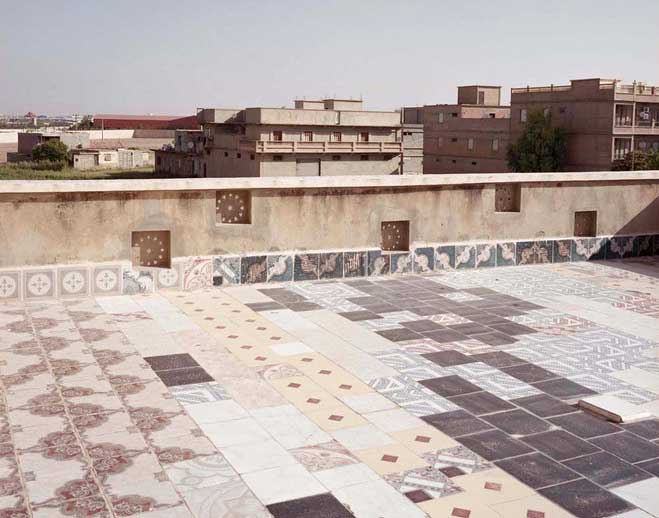
Attia, Kadar. Déconstruir - Reinventer. 2012
https://slash-paris.com/en/evenements/construire-deconstruire-reconstruire-le-corps-utopique/sous/3669 [Stand: 28.10.24]
A reflection on transgression and imagination also lies at the centre of another photo: Déconstruir - Reinventer (2012) actually shows only the results of a minimal intervention in the standardized construction method, and yet these traces of spatial action are marked here as meaningful in the sense of aesthetic place-making.
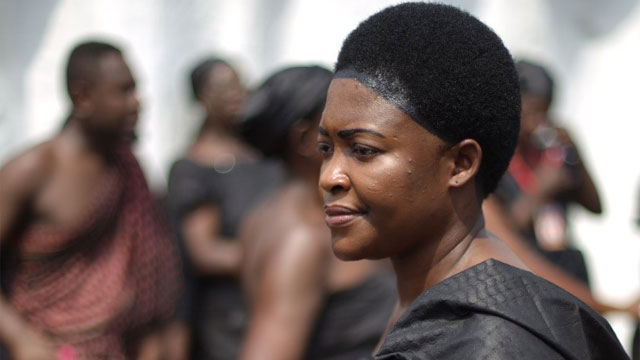
-
 Osuanyi Quaicoo Essel
Osuanyi Quaicoo EsselDifferent cultures may practise different hair beauty culture. Some of the hair beauty cultural practise could be unisex or may distinguish between sexes. In this instance, hair becomes a tool for sexual differentiation and serves as a precursor to one’s gender. It may tell which part of the world a person hails from. That notwithstanding, one may borrow hairstyles from different cultures other than his or her own for fashionable reasons since fashion inspiration is multicultural. Based on the cultural orientation and the role of a particular hairstyle to a group, society or institution, hair aesthetic ideals may be preserved as a tool for identity construction. A typical example of a hairstyle that has remained resilient even in the face of (neo)colonial and imperial hair aesthetic regimentation of the West on Africa is kentenkye hairstyle (Akan Women’s Hairstyle, 2008), popularly renamed as dansikran. Legendary has it that, queen mother Nana Kwaadu Yiadom II, (1917 - 1945), the sister of Nana Prempeh I, of the Asante Kingdom, performed the majestic Adowa dance during the restoration of the Asante Confederacy around 1935 in her kentenkye hairstyle, which inspired the then Governor’s description of her kentenkye hairstyle as a 'dancing crown' (Akrase, 2008) due to its visual effect during the dance. The phrase ‘dancing crown’ was linguistically corrupted as dansinkran which has become the popular name of the hairstyle.
The dansinkran hairstyle is noted for its simple, yet iconic stature in purely indigenous Ghanaian cultural milieu. Its selection was informed by its historical epoch, purely indigenous natural hair beauty care and treatment and socio-political significance in Ghanaian chieftaincy. It has proven to be an unadulterated Ghanaian hair fashion practice necessary in the decolonisation of hair fashion discourse. It is important in the decolonisation of hair discourse in the sense that it is purely Afrocentric which has evolved from its symbolic status to contemporary appropriation. The use of purely natural and sustainable hair treatment cosmetics with little or no harmful effect on the body makes it worthy of handing down to youth. This is because, there has been influx of artificial hair cosmetics with detrimental dermal effects which many youth subscribe to in the name of modernity without recourse to its side effects. The historical significance and interest of this hairstyle for posterity, especially as something of Africa practise, contributes in this regard to the decolonisation process. Dansinkran polity and politics among Akan kings, queens, chiefdom and the society in general reinforced its choice.
This hairstyle is achieved by trimming down the peripheries of the crown of the head almost to the skin while the remaining portions are trimmed to define the oval shape of a wearer’s head. The haircut gives the head a calabash-like shape. A natural black pomade-like colourant mixture composed of powered charcoal, soot and sheabutter, is then applied to the hair to give it intense blackened appearance. Charcoal has been in use for hair treatment in precolonial Ghana for many centuries. Considering the intense heat coupled with dust particle in Ghana and other African countries, the use of charcoal as hair treatment helped to protect their hairs from dust build up, dirt, oil and sebum that settled on scalp and negatively affects hair quality and growth. It implies that charcoal promotes hair growth. The natural hair colourant used in this process armours the hair with lustre and protection against bacteria and fungi. It nourishes the scalp and protects it from dandruff infections and maintains the hair’s natural moisture level. The eye lashes are also darkened to complement the facial look of a wearer.
The haircut helps to focus on the facials of a wearer since the hair receives little or no elaborate ornamentation. Usually, queen mothers who wear this hairstyle are not supposed to wear earrings during possessions or durbars. Judging from the benefits of charcoal in natural hair treatment it is not surprising that it features as essential ingredient in modern cosmetics manufacturing.
The dansinkran hairstyle serves as a socio-cultural barometer, political signifier and as a religious marker. This hairstyle help to identify queen mothers and female kings from other females. It is a symbolic hairstyle that was a preserve of the Akan feminine chiefdom and royals. Some priestesses also wear this hairstyle. Politically, the hairstyle symbolises authority, royalty and power of a female king or queen mother. In this sense, the hairstyle is status-defining in terms of the social rank. It is considered as inevitable lifestyle heritage that needs to be preserved among the chiefdom. When a king or chief passes on, a queen mother who is not wearing that hairstyle is not allowed to pay homage to him/her.
In the case of queen mothers, they complement this hairstyle with a feminine Ghanaian fashion classic named queen mothers’ style. This classic consists of a wraparound fashion of a six-yard fabric that stretches from the chest regions to beyond the knee, which is accentuated by another six-yard fabric draped in toga style. The wearing of this classic in addition to the hairstyle has bestowed onto it, the name dansinkran, hence, both the hairstyle and the classic are named as such. Despite the symbolism of the hairstyle, it now worn by the youth in contemporary times. It has acquired the name sweat. The only difference is that the youth who wear the hairstyle do not apply the charcoal mixture on their hairs. It has become unisex hairstyle among the youth.
The Western hair superiority politics could not erode the many centuries old hair identity visual code and marker that characterised the majority of the chieftaincy institutions in Ghana. As a traditional lifestyle culture that has proved unyielding despite black hair discrimination and politics, it is an important tool in the decolonisation of Afrocentric hair beauty culture practice and education.
References
- Akan Women’s Hairstyle. (2008). Retrieved from https://www.abibitumi.com/community/culture/akan-womens-hairstyles/
- Akrase, N. (2008). Pomp, power and majesty. Retrieved from http://akrase.blogspot.com/2008_01_01_archive.html
published March 2020

-
 Estelle Vallender
Estelle VallenderMary Sibande’s sculpture The Reign (2010) affects the viewer due to its interplay of bipolarities such as European/African, male/female, past/present, working class/bourgeoisie, private/public, reality/fiction. It forces us to scrutinize our contemporary thinking about the past in relation to the present. The criticism of the colonial era and the rebellion against limitations, that history has placed on identity is inherent in the work, which focuses on African women, historically oppressed as Blacks, as workers, and as women. As a sign of resistance and tribute to all Black women fighting for equal rights it raises questions about race, class and gender.
Vaulting on a boisterous horse, a life-size female figure is displayed in the hyperrealistic sculpture. Rider and mount – both made of fiberglass – are identical in color, creating a consistent medium of presentation for the abundant dress supported by a scaffolding of white and purple undergarments rimmed in Broderie Anglaise, a technique of embroidery, which originated in 16th-century Europe. In addition, the mannequin wears a white apron tied into a voluminous bow at the back and a white headscarf covering her hair. On the one hand, the distinctive elements of the apparel such as puffed sleeves, petticoats and ruffles can be identified as characteristic features of 19th-century Victorian fashion. The style of clothing popular in Great Britain was brought to Africa by the settlers during the unprecedented expansion and consolidation of the British Empire, where it became a symbol of colonial rule. On the other hand, the specific blue color in combination with the white headscarf, collar and apron refers to the uniform of South African maids, that has hardly changed until today. Domestic service – established in the earliest days of European colonisation and later assured by Apartheid – has long been a major sector of the South African labour market. In 2010, the same year the sculpture was created, “the domestic worker industry employed 18% of all women, and 80% of domestic workers were women, with poorly educated Black South Africans making up the vast majority of these women.” (Bosch & McLeod, 2015, p. 135, quoted after Dinkleman & Ranchod, 2010) Readily available at local supermarkets the artist draws on the maid’s uniform and uses the mass product as starting point for her textile hybrids. Born into a line of domestic workers that stretches back three generations, Sibande makes her family history the subject of her art. (Dodd, 2010, p. 467) From silicone casts of her own body she created a fictional character named Sophie [the English name given to her grandmother by her white employer, as Corrigall (2010, p. 155) states]; as alter ego, homage, and representative of former and current domestic workers, she appears here as the protagonist of the work. Through the interplay of the Black body and the dress oscillating between workwear and sublime gown, Sibande performs a subtle manipulation of the semiotics of fashion and their social function as indicators of status, gender, and affiliation (Corrigall, 2015, p. 150). Power relations are explored and the dichotomy of maid and mistress, which implies further bipolarities such as colonist and slave, oppressor and oppressed, European and African, woman of substance and pauper, is deconstructed. “Sophie” occupies the role of the white landlady and thus claims a social position denied to her by repression and racism, whereby her outfit can be read as recovery of autonomy through dispossession of the 'Other'. Regarding the title of the work, the words reign and rein are played on here. In The Reign she is holding the reins both figuratively and metaphorically.
The composition is, also due to its surface property and shade, reminiscent of the European equestrian statue, a portrayal of a sovereign, politician, or commander on horseback, that has functioned since antiquity as a tried and tested means for the demonstration of male power. During colonial rule it was also introduced in South Africa; two well-known examples are the statues of Louis Botha (general in the Second Boer War and first prime minister of the South African Union) in Cape Town and Cecil Rhodes (British entrepreneur and one of the leading players during the high point of imperialism) in Kimberley. Thus, the equestrian statue as a form of representation of white supremacy is anchored in the collective memory of South African society and is here referred to, deconstructed, and reinterpreted by Sibande.
By replacing the idealized male character with a Black female figure, the artist adds an additional layer to the postcolonial debate about South Africans as oppressed Blacks and oppressed workers: women’s limited scope of action in the patriarchal system. Through the usurpation of potentiating positions of power – the mistress first, the sovereign second – Black femininity is calling for an uprising. Dodd (2010) points out that the maid, who is expected to disappear, unseen and unheard, into the background of private life and thus remained socially and culturally invisible for a long time, has assumed the center stage, boldly announcing herself to the world in the gallery room. Her visibility in public space was once again enhanced as the sculpture was featured during the 2010 World Cup within the city of Johannesburg on the side of a building as large, photographic mural. To ensure a dominant and imposing presence, Sibande shows the mount in the so-called pesade: Using the horse's body as a shield and its front hooves as a weapon, the rider is erect according to the movement of the rearing horse and is usually depicted in paintings and sculptures as a battling hero with a sword in his hand and a determined expression on his face. “Sophie” can thus certainly be understood as an insurgent and tribute to all Black women fighting for equal rights. But in my reading the absence of a weapon and the daydreaming character of the human figure, which has her eyes closed as if in trance, break with art historical tradition and expose the scene as an objectification of inner desires and empowering imaginations. The overcoming of class and gender boundaries as well as of limitations, that history has placed on identity, still more of a wishful thinking than an actual condition. This is also evident in the ambivalent figure of the horse, which on the one hand symbolizes the momentum of the protest movement, but on the other hand can also be interpreted as the oppressive system that must be made compliant. While circling the sculpture, it becomes visible, that the dynamics of the animal are not necessarily reflected in the rider’s posture. In a fragile intermediate state, half falling, half vaulting, she presents herself to the viewer from one side as if she were controlling the horse, and from the other as if she would be thrown off at any moment. The Black woman exploring options in the political and social field is thus in a constant balancing act between control and loss of control, combat and lethargy, fiction and reality.
In the large scale work The Reign, Mary Sibande calls on the elaborate attire of the Victorian era to, in some way, refashion our contemporary thinking about the past in relation to the present. She is intent on collapsing binaries around race and power, and alerting us by means of the textile, which is a linchpin of identitarian negotiations, to unexpected interplays between apparently oppositional and asymmetrically related cultures; the plastic body thereby serves in accordance with the functionality of the mannequin as an accessory that reinforces the statement. Clothing is used performatively and, in addition to the cultural reappraisal of national history on the macro level, functions on the micro level as a vehicle of expression and personal search for the artists own postcolonial identity.
References
- Bosch, Tanja / McLeod Caitlin: Dress, Address and Redress. The relationships between female domestic workers and their employers in Cape Town South Africa, in: Global Media Journal African Edition, Vol. 9 (2015), p. 134-155.
- Corrigall, Mary: Sartorial excess in Mary Sibande's “Sophie”, in: Critical Arts 29 (2015), p. 146–164.
- Dodd, Alexandra: Dressed to thrill. The Victorian postmodern and counter archival imaginings in the work of Mary Sibande, in: Critical Arts 24 (2010), p. 467–473.
- Long Live the Dead Queen (Exhibition Catalogue). Gallery MOMO Johannesburg 2010, Johannesburg 2010.
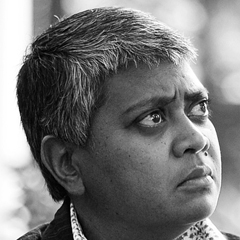 Avitha Sooful
Avitha SoofulIn my reading of this work, I am tempted to and almost seduced by the immediate crutch of a colonial critique that is rooted in positioning the rider and horse within a Eurocentric frame. Instead, I re-read the words spoken by the artist Mary Sibande in an interview held with Malibongwe Tyilo (2021) from the Daily Maverick that crystalises Sibande’s thinking. “My work is not about complaining about apartheid, or an invitation to feel sorry for me because I am black and my mothers were maids. It is about celebrating what we are as women in South Africa today, and for us to celebrate we need to go back, to see what we are celebrating. To celebrate, I needed to bring this maid” (Tyilo 2021).
In summary, Sibande speaks of celebrating black women today and this is vested in the courage that black women had during apartheid to protest against such experiences. It was my responsibility as a researcher to seek out these celebratory moments that Sibande speaks about in her work. In response to the sculpture The Reign (2010), the artist portrayed Sophie riding a black horse that stands on its hind legs referred to as rearing. The rearing of a horse is associated with aggression, disobedience, or pain that is experienced by the animal and in this case, the horse appears to be a mare rather than a stallion. The rearing can also be caused by an inexperienced rider however, it appears that Sophie is calm and in full control of the horse that she rides. Would this animal not be a metaphor for all black women during apartheid in celebration of their aggression, disobedience and pain endured while facing the inhumanity that was meted out to them? In retaining this thought, would Sophie then not be a symbol for all the black female leaders who led the women’s struggle during apartheid and who were also labourers on the farms and domestic workers in cities?
I think that Sibande deliberately played with the pronunciation of the words reign and rein when she titled the work. On the one hand, the work references the reign of black women who were revered as queens when they marched and protested their abuse. The fact that they were severely undermined by apartheid restrictions made them more militant than men. During the years of abuse under apartheid, anger festered within black women, giving rise to 60 000 women who marched to the Union Buildings in Pretoria in 1956, a protest against the pass laws and the 1957 Public Utility Transport Corporation (PUTCO) bus boycott which began in Alexandra. Women also formed the Natal Organisation of Women (NOW) in 1983, The Federation of Transvaal Women (FEDTRAW) in 1984 and the United Democratic Front Women’s Congress (UDFWC) in 1987. Women as members of these organisations protested and marched against high rents, increased food prices and demanded the release of incarcerated black leaders.
Sibande also references rein in this work that indicates the control that the rider has on the horse or the female leadership over the thousands of women who marched on apartheid via protest marches and the formation of women’s organisations. This idea of control via the use of a rein is indicated by the blue length of the rein attached to the horse that Sophie loosely holds in her hands. This shows that Sophie does not require or impose an aggressive response to the rearing horse but allows the horse to perform as Sophie does sitting on its back. In this paused moment, control is about leadership that is asserted without force.
The Reign (2010) appears to include the seeds of democracy with Sibande’s use of the purple undergarment that the rider wears. This introductory period would be 1989 into the 1990s when the African National Congress and many other anti-apartheid organisations were unbanned, and many political prisoners were released including Nelson Mandela which allows for the greater celebratory moments that Sibande refers to. The year 1989 is significant apart from it being the year when violent protests took place nationally, in schools, universities and on the streets. It was the year when the police used purple dye in water cannons to spray protestors, a dye that did not wash off easily and was referred to as the purple rain.
When one considers the idea of protest during apartheid, it was a performance by a mass of people, a performance that included song, dance, body gestures and movements that emulated, ridiculed, and promoted a different approach to the ‘norm’. The rearing horse is a performance indicative of the protests that fuelled the journey to democracy. A journey that demanded sacrifices from black people of their time, lives and brutality that can only be imagined. In my view, the meters of the blue dress that Sophie wears is a metaphor for the millions of workers who participated in this struggle. The sculpture is a metaphor for the black female struggle during apartheid, her struggle against patriarchy and a demand for equality that was situated within the broader apartheid struggle. These two struggles gave birth to the adoption of the Women's Charter (1954) and the Freedom Charter (1955) in Kliptown, Soweto.
There is no doubt that the work is a critique against colonial rule however, the manner in which Sibande has invented and presented the work, is saturated with the achievements of black women within metaphors of significance that describe the black female struggle without pity. It celebrates black female achievements in eroding the inhumanity imposed by apartheid specifically on women who endured the slurs and oppression of race, class and gender.
The fact that Sophie sits with her eyes closed, allows her to reminisce about the periods that announced the celebration of black women’s victories against the apartheid beast through women’s protests, boycotts, arrests, torture, fragmented family lives and mass marches. The domestic attire is Sibande’s prop for the historical enactments that define black women’s contribution to the struggle against apartheid.
In my view, Sibande’s work The Reign has encapsulated black women’s struggle not only against apartheid but their right to equality within a South African democracy.
References:
- Tyilo, M. 2021 Iconic South African Works: Mary Sibande’s ‘The Reign’. Daily Maverick. 22 June (online)
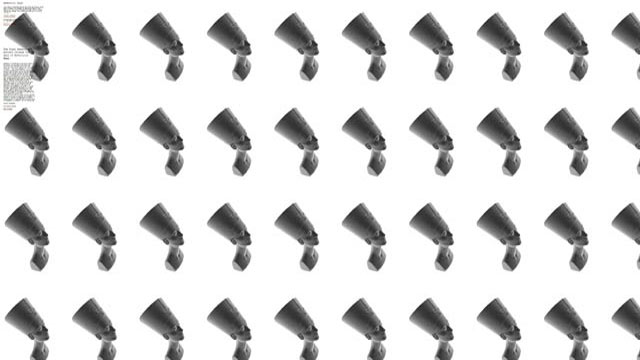
-
 Niklas Wolf
Niklas WolfIn ancient Egypt there was an elaborate system of reproduction around representative works of art. Gypsum casts of royal statues ensured that images of rulers were comparable and consistent nationwide. The formal type of a portrait bust, however, is as special as the material of Nefertiti’s representation. Stone figures, combined with a publicly effective installation, corresponded to ideas of permanence and a ruler’s longevity. The stone bust’s surface is coated with gypsum, which enabled a particularly fine design, and brightly coloured paint. The latter is preserved in its original condition (Tyldesley 2018).
Technology, material, surface and the design of the object play an important role in Nora al-Badri and Jan Nikolai Nelles’ project The Other Nefertiti (Pinther 2018). This project intentionally raises a number of questions that refer to discourses about provenance and access to both one’s own and foreign cultural assets, as well as their relocation. Moreover, it points towards a possible democratization of globally significant, mobile artefacts. What happens to a visual object when it is reduced to the essence of its digital data? How can digital processes and media be part of such discourses, and even possibly their solution? As part of an artistic intervention, the two artists penetrated the space of the museum and photographed the bust with concealed scanners, from which they were able to generate a multitude of detailed data to create a 3D print. Within the framework of a Common Creative License, this data is accessible online to the general public and provides “immaterial material” for future images as well (Nelles 2016). Anyone with access to the Internet and a 3D printer will therefore be able to print a copy that corresponds to the shape of the original, thereby democratizing the cultural asset. This gesture directly counteracts how strongly the accessibility of such assets are typically regulated – not even amateur photographs are permitted in a museum context, as the Berlin State Museums (Staatliche Museen zu Berlin) retain sovereignty over the object and its image. Both the generation of the data and the symbolic return of a Nefertiti copy and its burial in the Egyptian desert were documented on film. The project thus becomes part of a discourse critical of museal practices such as those of the Berlin State Museums: in reaction to the publication of the data, they referred to the legality of ownership, the ban on photography and the possibility of various – strictly regulated – accesses to the object and its reproductions. (SPK 2016)
Questions of accessibility and the relocation of cultural assets were also the topic of a seminar held at the Ludwig Maximilian University in 2019. A female student, who gave a lecture on the relocation of Nefertiti, contributed to the discussion by printing a Nefertiti bust using data from the Nefertiti hack. In contrast to the Berlin original and a printout based on Nelles and al-Badri’s data, this bust was greatly reduced in size and made of fluorescent material. A significantly expanded conception of art developed amidst questions of reproducibility, reproduction, aura and figurative trademarks. Unlike the officially signed copies produced by the Berlin Gipsformerei, these replicas are made at a greater distance from the original. No direct contact is necessary, the distribution is globally possible. There are several processes of translation and transformation that create new networks between bust and recipient. First, an immaterial object – the data set – is created, which gains new materiality through printing. The latter is freely scalable, a series of enlarged or downsized reproductions can be made, which would nevertheless correspond in scale to the dimensions of their source; materially, a Nefertiti created that way would never (want to) correspond to the bust of Nefertiti. Artists thus become the authors of new “truthful” objects. The story of the original begins to overlap with the narrative of its reproduction: the intriguing story of outwitting and interrogating the museum becomes an immaterial and performative work of art, which exists on an equal footing with the shapeless dataset and the multitude of printed and altered Nefertiti busts.
What can an object do as a representative? Which discursive spaces does it operate within? What kinds of questions can be asked of the original and copy? Which terminologies are capable of describing new metamorphical translation processes and aesthetics?
Critical comments on the Nefertiti project point out that simple, transportable scanners would not be able to capture images that would allow such high-resolution data sets. It is possible that Nelles and al-Badri gained access to professional scans commissioned by the Berlin State Museums or that they themselves had a replica of the bust scanned (SPK 2016). Both remarks are difficult to verify after the fact and do not affect the intention of the project.
Little is known about Nefertiti’s life; she encountered the global visual memory through a singular object, the portrait bust exhibited in Berlin, which stands for timeless glorified beauty and power in its own right. Questions about the accessibility of such images are already inscribed in the contexts in which they were created. In the ancient Egyptian tradition of exhibiting, powerful pictures worked between showing and concealing, they functioned as temporarily enlivened representatives of royal or divine power (Hornung 1971). Closely bound to constantly changing contexts of religion and rule, they had a constitutive memorial function in society, represented absent power, and were threatened by iconoclastic destruction. With the beginning of the colonization of the African continent by Western powers, Egypt’s cultural heritage was of particular archaeological and political interest to both public and private collections, as well as the art market.
(Read more on the history of the Nefertiti bust and the concept of partage...)
In contemporary terminology used to discuss ancient Egypt, terms of similarity (likeness) were summarized in discourses between original and copy: tut means (perfect) similarity; image, role and model coincide in one object and correspond to each other. Tut ankh is a living image (Tyldesley 2018) – (…) conceptual art was designed to represent the exact nature of a thing or person in the simplest way possible (…) (Tyldesley 2018). Perhaps the busts of Nefertiti – the dislocated cultural artefact in Berlin, as well as the multitude of possible reproductions from 3D printers worldwide – fall into very similar transcultural categories of representative likeness.
Delve deeper into the reception history of the bust.
References
- Hornung 1971: Hornung, Erik. Der Eine und die Vielen. Altägyptische Götterwelt, Darmstadt 1971
- Nelles 2016: Nefertiti Hack. Artist homepage: http://nefertitihack.alloversky.com (25.01.2019)
- Pinther 2018: Pinther, Kerstin; Weigand, Alexandra (Hrsg.). Flow of Forms / Forms of Flow. Design Histories between Africa and Europe, Bielefeld 2018
- SPK 2019: Stiftung Preußischer Kulturbesitz: „Nefertiti Hack” ein Schwindel?, 09.03.2016. http://www.preussischer-kulturbesitz.de/meldung/article/2016/03/09/nefertiti-hack-ein-schwindel.html (25.01.2016)
- Tyldesley 2018: Tyldesley, Joyce. Nefertitis Face. The Creation of an icon, London 2018
published February 2020
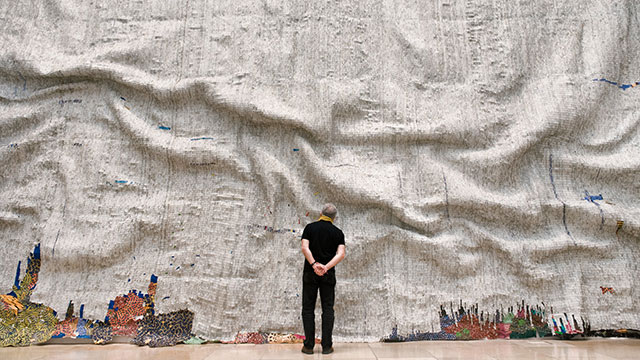
-
 Patrique deGraft-Yankson
Patrique deGraft-YanksonThe Rising Sea by El Anatsui is a naturalistic presentation of an ocean in turbulence, which elicit attention through both grotesquery and finesse. The work, which covers an area of about 14,38 by 6,90 meters, is made up of several pieces of flattened aluminum bottle tops stitched together with copper wires into a massive sheet of grey wall overlay.
To achieve the intended illusion, the artist manipulated portions of the metal fabric into large series of ridges of different sizes that combine into an irregular rhythm randomly positioned across the surface of the sheet to simulate sea waves. Beyond supporting the movements of the sea waves, the rhythm created by the raised portions of the work also provides narrow range of values that effectively bring out the three-dimensionality of the work and transforms the otherwise flat sheet into an illusionistic volume.
Like the texture of oil paints in Van Gogh’s Starry Night, the texture of the stitched pieces of metals sheets introduce energy into the work, bringing out the fluidity of the sea and the potency of the mesmeric sea waves. Indeed, improper disposal of those materials used (and many others) is causing a lot of nuisance in his home country and other parts around the globe, with the sea being the most affected. Therefore, right from the materials used to its marvelous finishing, it is not difficult to discern a blend of severe censuring and admonition in the voice of the artist. The sea is, in the way presented, depicted as rising against improper treatment; and El, by the pains taken to stitch every piece of material together, seems to emphasize the need to make it our business to salvage the sea from improper handling.
The sea, which has served as an important source of livelihood for Ghanaians over the centuries invokes multidimensional viewpoints and draws out divergent responses and reactions depending on its relationship with the people. Among the coastal dwellers (and indeed a very great population of Ghanaians), the sea is considered an important resource for commercial activities, an arena for entertainment and recreation and grounds for spiritual exploits and worship.
He himself being born in the coastal town of Anyako in the Volta Region of Ghana, El seems to know so much about the sea. Growing up, he most likely experienced the sea being perceived, treated and utilized in many different ways. Besides its major use for commercial activities and other useful ventures, he might have listened to many stories about the sea as a god (with other inhabitants), as a provider and as a friend. He might have learnt about how the sea and her inhabitants contribute to the fortunes of the people. He might have witnessed how people got healed as they bathed in the sea, or had their fortunes turned around as they threw some coins in the ocean and made their requests known to the sea.
Beyond this, he might have also been warned about the consequences of flouting the taboos and other prohibitions that regulate the “use” of the sea, including forbiddance from desecrating the sea with unhealthy practices such as defecating in the sea, throwing filth into the sea or wearing sandals or shoes in the sea and the need to observe the tabooed fishing days, and so on. Besides, another important thing which Ghanaian coastal dwellers take very seriously is the need to adhere to physical signs and conditions of the sea, which have various local interpretations and implications. For instance, there are periods when the sea is considered as “full”, during which times the sea waves “rise” and become more intense and turbulent. Fisher folks are supposed to take a rest from “climbing the sea” (as they say in the local parlance) as the sea is likely to be unfriendly, and therefore unconducive for fishing.
Factors that cause the “rising” of the sea may not be ordinarily known. However, according to coastal dwellers, there is always something sinister about a rising sea – either somebody got drowned, or someone or a group of persons might have violated the rules of the sea god – and what motivated El in his presentation of the Rising sea might not be any different from what are traditionally believed. Probably the sea is fed up with deliberate dumping of wastes and toxic materials into her bowels. Therefore, she must rise!
But the “full” or “rising” sea is not as unfriendly as it sounds. Though it prevents fishing activities, which might be one way of punishing the people for disrespecting her, it also affords the people the opportunity to dry up their canoes, mend their nets and relax in the beautiful view of the sea along the coast. The occasions of the rising sea also witness other people who just move along the shores to observe the large waves that gather in the deep ocean, roll angrily towards the shoreline and dissolve tumultuously at the shore in a creamy white lather. The views at the seashore during these periods are nothing short of aesthetical experience that is shared by different kinds of observers with different perceptions, questioning, discussing, enjoying.
In so many ways therefore, the spectacle of observers in front of El Anatsui’s gigantic reconstruction of the Rising Sea gives so much semblance to the natural phenomenon, and this is a fundamental underpinning to the success of El’s work.
Culturally, the Rising Sea could be perceived as an allusion to the dynamisms in life, which sometimes rise against human tendencies and restrict mundane behavior, at the same time ensuring regularization of natural behaviors. What is important is to identify what is causing what, and how to seek for the right solutions.
For it to be presented as an aesthetic piece of work, El is probably saying that, the Rising is Sea is frightening; it is confusing; it is chaotic. But she is still beautiful, because in the right time, when given the right treatment, she will calm down so we have nothing to fear. She is still our god, our friend, our provider and our protector.
published February 2020
 Ernst Wagner
Ernst WagnerEl Anatsui (* 1944) created 'Rising Sea' 2019 specifically for a particular wall in a comprehensive solo exhibition of his oeuvre entitled “Triumphant Scale” at the ‘Haus der Kunst’ in Munich. Like many of his other works, “Rising Sea” is a large-scale piece comprised of thousands of flattened liquor bottle caps (extrapolated approx. 190.000) that have been tied together with copper wire. It hangs like a large tapestry from ceiling to floor and though it looks solid, it is flexible and has a seemingly textile structure. The effect is monumental and magnificent; it impresses by the sheer size as well as by the sensual materiality of the almost infinite number of small, shimmering pieces of tinplate.
To see the composition we need to view the work from a distance. The sculpture is divided into three starkly contrasting horizontal zones. A vibrantly colored strip runs along the bottom. It appears fragile and becomes thinner and interrupted as it runs toward the lower right corner. The broad, massive, monochrome grey zone in the middle falls with heavy folds. The third zone at the top is a narrow, shiny, silver and smoother appearing plane that rises from its lower edge on the left in a sharp line upwards to the right, like a ‘Silberstreif’ (i.e. glimmer of hope).
Nearing the work, we discover bright flecks of color that emerge out of the shimmering mother-of-pearl gray middle zone. While some of the flecks appear to build concrete figurations others seem to be randomly dispersed. In the lower right corner small speckles of color gravitate toward and buzz around a concentrated cluster of speckles. We are enticed to move closer and to discover more details. Individual bottle tops become recognizable out of a speckled ‘field of pixels' or 'threads in the fabric’. One recognizes and reads the labels "Turn to open" and the names of African high-proof alcoholic beverages that are popular in Ghana or Nigeria where El Anatsui lives and works (KP Beverages, Bacco , etc.)
As with an impressionist painting, this work enables and requires two different viewing positions: close up and from a distance. Both perspectives tell different stories. In contrast to impressionism, El Anatsui’s stories address political and social issues of highest relevance. From a distance, the rising water level caused by global warming is addressed, to which the title of the work 'Rising Sea' refers. “Reading” from left to right, sculptural folds in the large gray middle area remind us of mighty waves that are in the process of destroying the narrow, speckled strip on the floor that we may associate with human dwellings and their fragile situation. The ‘Silberstreif’ is dwindling and so is hope. Obviously, this meaning is addressed directly and in all clarity.
The inscriptions on the bottle tops tell another story, the story of alcohol and slave trade during European colonialism in West Africa. Thousands of Africans were sold and taken across the Atlantic in ships to cut sugar cane in the Caribbean plantations to make rum. The rum was shipped to England and then later sold to Africa. Rum with its high alcohol content became another means of dominating an already exploited people. In the course of time, West Africans commonly used rum and other forms of alcohol for libations. However, El Anatsui only uses discarded bottle caps from liquor made in Africa today.
In turn, the process of 'sewing' the individual metal pieces together is an important, additional cultural-historical referral to El Anatsui’s roots in West Africa where there is a long tradition of weaving colorful textiles.
The close-up view of “Rising Sea” thus speaks of the past in West-Africa. Whereby the view from the distance, speaks of the future, a future that directly and indirectly affects the world globally. The narrative strands are connected by the idea of upcycling: discarded bottle caps become art, the cheapest material becomes sumptuous beauty, the past becomes present and future, regional colonialism becomes the narrative of a global threat.
It is important to remember that it is a black artist from Ghana exhibiting this threatening beauty in a space that was built in Munich to serve National Socialist racism. The title of the exhibition 'Triumphant Scale' alludes directly to this context, which Okwui Enwezor, the initiator of the exhibition, was certainly aware of. The Nazi regime, a regime without scale, built the Haus der Kunst, a building that broke all scales. El Anatsiu’s magnificent, grand scale triumphs over the excessive Nazi scale.
Challenging the Western concept of art
As an artist, El Anatsui is a representative of the Global South as well as of global art. He displays past and present catastrophes in decorative splendor. We can understand this message through classical analysis and interpretation on the base of the iconography of material and motifs. This system of decoding is familiar to us and confirms our Western expectations of a work of art. However, the simple explicitness of the content of El Anatsui’s work, poses a challenge to Western expectations of open, complex, self-contradicting art.
According to the latent notion of the community of art experts, if there is a clear content in art it should be as ironic, witty or distanced as possible. Hence, the intrinsic value of art (l'art pour l'art) eludes ideological appropriation and art gives no instructions for action. None of these tenets of Western art is is evident in Anatsui’s work. "Turn to open” with an arrow pointing up or down is the instruction repeated thousands of times in the middle section of “Rising Sea”. The sentence can be read as a directive for us to act on the challenges of our time.
El Anatsui thus negates the ‘prohibition' of unequivocal, direct symbolism and narration in the Western concept of art and its associated prohibition of politics and agitation. As a global artist, he challenges this concept. In addition, it is interesting to note that El Anatsui, unlike most Western artists, often leaves the responsibility of installing his work in exhibitions to the respective curators. In every exhibition, the same works look a little different, or quite different: folds will fall differently, pieces will be grouped differently and work that has been previously exhibited hanging on the wall may even be presented lying on the floor. With this artistic strategy, he formulates an unmistakable position from the Global South. Thus Western dominance loses its normative power in art and culture in general. The world becomes more diverse and polycentric.
Learn more about El Anatsui.
published February 2020
 ISB_Team
ISB_TeamTwo perspectives on one work of art
In 2019, a large solo exhibition of the Ghanaian artist El Anatsui, initiated by Okwui Enwezor, took place at Munich's Haus der Kunst. It was the occasion for Patrique deGraft-Yankson and Ernst Wagner to write together about one of the works there. deGraft-Yankson and Ernst Wagner agreed on a parallel writing process in order to minimise any mutual influence of their respective approaches. Thus, they knew nothing of each other's point of view. The resulting texts can be read above.
The result of this exercise is surprising and fascinating. In some aspects, of course, the interpretations of the work coincided, but in others they differed considerably. What they had in common, for example, was the appreciation of the production process and the impressive effect of material, size and surfaces. Also that the issue of environmental pollution plays a central role in the interpretation of Rising Sea. But it was precisely here that the first differences, even mutually exclusive approaches, emerged: for example, when deGraft-Yankson referred to the sea as a deity, a deity that can sometimes be friendly, but also unfriendly. Understood in this way, the sea in its immediate effect is simultaneously frightening and beautiful, it threatens and at the same time invites aesthetic enjoyment.
Ernst Wagner could easily relate this aspect to the Western aesthetic of the sublime, however, the difference becomes quite clear when we look at the underlying concept of what an art work is. deGraft-Yankson's text takes the work of art as its point of departure, but it always speaks of the sea itself, while Ernst Wagner always speaks of the work - and not of the sea. This different focus marks a fascinating difference: deGraft-Yankson is concerned with the sea, which he brings to us through his discussion, while Ernst Wagner is concerned with a work of art that simply has the sea as its subject. For deGraft-Yankson, the sea is "in" the work, it is really present. For Ernst Wagner, the sea is a represented motif, it lies "behind" the work, so to speak. It serves as a theme or a point of reference.
This has consequences for the methodology: while Ernst Wagner delivers an analysis of form, deGraft-Yankson focuses on contextualising the art work; he describes the significance of the sea for the people on the Ghanaian coast today. This difference is probably also due to the different perceptions of what the sea itself is: in his text, deGraft-Yankson speaks of the sea as an independent, souled entity, an acting being or a god that enters into a relationship with people. For Ernst Wagner, the sea - as part of the ecosystem - is also in relationship with humans, but he does not ascribe an independent will to it.
These different understandings of the relationship between human beings and the world are then echoed in an obviously equally different concept of what art or an art work is. In deGraft-Yankson's text, the work of art, like the sea itself, is charged with energy. The sea appears, as it were in the work, indeed it is present there. In the work, then, the sea materialises as something we perceive directly. In this sense, the work and the sea appeal to us to "preserve it from improper treatment [...] or it will be desecrated."
This approach of deGraft-Yankson, in which everything interpenetrates, is contrasted with Ernst Wagner's approach, which analytically separates everything: proximity and distance, splendour to be enjoyed and admonition to be taken seriously, discourse on colonialism and ecology, work and motif, art system and ecology, art system and colonialism, and so on. In the end, Ernst Wagner achieves a synthesis, but it only works on a meta-level by addressing the irritation of the Western concept of art through Anatsui's work. An irritation that dissolves or at least relativises the fundamental separation in Western understanding of viewer and object, of sign (the concrete work) and signified (the rising sea), of spirituality and reality, of art and ethics.
Annette Schemmel, then member of the ISB group, wrote to the the authors in 2020:
"Dear Patrique, dear Ernst,
Your texts are a great read and so complementary! For me, writing from Munich, the aspects raised by Patrique have opened up an entirely new reading of this marvellous piece of art, which I was lucky to contemplate at the exhibition of Haus der Kunst. What you're telling about Ghanaians' relation to the sea is unveiling and beautiful, thank you for unfolding these narratives here! Thank you all the more for sharing a piece of local wisdom (how the sea can react angrily) and linking these narratives to the global challenge of saving the sea, a challenge with impacts on localities all over. On another note, the evocation of "Starry Night" caught my eye at once and does make a lot of sense to me. I will be using it in my art classes, if you don't mind.
Ernst's reading of the piece is much more familiar to me, obviously. He is telling about the context of the exhibition on site in Munich, a context that is so highly charged! When exhibited at this specific museum, Anatsui's work can't but comment on our German history, laughing at its racism by means of its "immoderate" dimensions and calling for a long-due revision of our role in colonialism and in exploitative global circuits of goods like alcohol. It is for this potential of speaking to a place that artworks should always be seen in different locations!
I would also like to point out that Ernst is exemplifying a familiar method of accessing artworks here, a method that I am happily teaching to my pupils. This method from academic art history wants you to start from close observation and description of formal aspects of the work before risking an interpretation. By means of this strategy arguments about a work of art are meant to become more solid, even if this visible gesture of searching for the right interpretation makes a text less smooth. Thus, Patrique's and Ernst's approaches are totally complementary.
This said, I am not agreeing with Ernst in the way that "Rising Sea" is explicit in a way that certain Western art lovers might want to criticize. They might, but they would be very wrong. Let me explain: to me, the reproach of explicity rhymes with simplicity and a lack of layerdness. As you both have shown, "Rising Sea" does have multiple layers of possible interpretation and certainly some more, which have not been addressed here. These layers are visible, not only but most clearly, if the work is read against the backdrop of different locales. Artworks from our global age command us to look at them with changing perspectives. If certain Western art lovers can't be bothered to do this, they will forever be missing the point. Their fault. Let me add that you might even spot a good deal of irony in the way that El Anatsui has made this piece outstandingly beautiful, caressing the eye to the degree that every exhibition visitor wanted to take a selfie in front of it, while at the same time pointing to some very painful and threatening truths about today's humankind. Therefore, I would like to uphold that this artwork's relation to the viewers and to its places of exhibition is complex and challenging rather than simple or explicit.Annette"
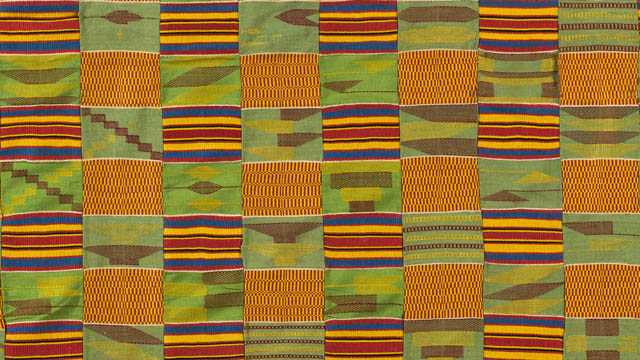
-
 Osuanyi Quaicoo Essel
Osuanyi Quaicoo EsselNoted for its attractive and bright colour schemes, a beautiful kente design is stuck on the walls of the entryway to the Permanent Exhibition of the African Collection at the Museum Fünf Kontinente. Its wide array of colours and strategic placement invites spontaneous spectatorship and captures into consciousness of visitors, the Afrocentric sense of colour use which is a precursor to the continental origin of the fabric. Indeed, kente originate from Ghana located on the African continent. Kente fabric designs have also gained international reputation and attracted considerable amount of research that centre on its historicity, weave structure, symbolic patterns, semiotic power, design structure, and its loom and the corresponding accessories, amongst others. Featuring the kente design in the collection by the curatorial team complements to drawing renewed attention to the indigenous fabric design technology of Africa.
Historically, kente has been known as a cloth which was a preserve for royals (kings and the chiefdom) in the Asante kingdom. It was later produced for use by all in the society. Being a fabric for royals, it signifies pride, wealth, power, authority and status of wearers. Though its usage extends to all, the kente designs worn by the Asante Kings are unique, distintive and of couture standard. The culture of adorning the Asante Kings with the top notch kente designs as in the ancient times has, therefore, not been eroded. In the court of the Kings were seasoned kente designers and weavers carefully selected to produce stunning kente design that are not found on the market. The fabric was woven with variously dyed handspun cotton yarns, in plain and double weave format in the form of stripes usually determined by their design structure. The stripes are joined together with the aid of a needle to form a wide sheet of fabric. The zigzag machine has become a replacement in joining the stripes together.
On the political sence of Ghana, the first president of the country, Osagyefo Dr. Kwame Nkrumah’s introduction of national dress agenda evoked the kingly use of the fabric in presidential inauguration ceremonies which has become a non-statutory policy emulated by six out of eight democratically elected presidents of Ghana from 1960 to present (Essel 2019). Nkrumah was the pacesetter in the use of kente in toga style for presidential inauguration in the history of Ghana. Prior to that he had worn kente fashion to political events and meetings in and outside Ghana before he became the president of the nation. His exemplary use of the Ghanaian fashion classic has been maintained and practised for more than half a century, though it is non-statutory.
Apart from its aesthetic clout, kente comes with symbolic patterns, whose decoding reveal the philosophical message encoded in the woven patterns of the fabric. Structurally, the kente fabric design featured in this exhibition encompasses variations of babadua, kaw, nkyemfre and fa hia kɔtwere Agyeman patterns, amongst others.
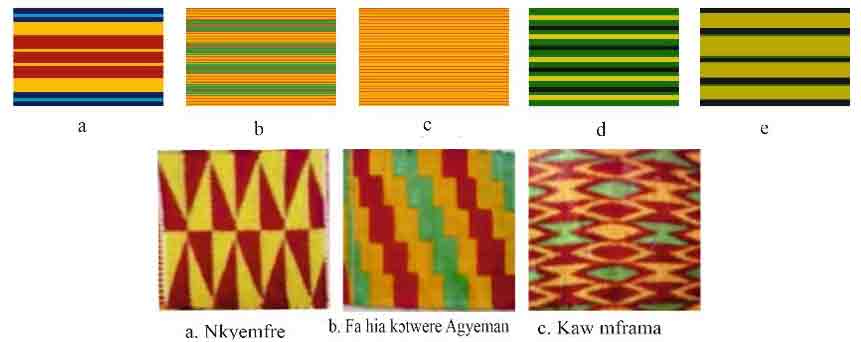
Figure 2: Top row: Variations of Babadua patterns. Bottom row: Names of some identifiable Kente patterns (Photo: the author)
Babadua is a name of a plant based on which the pattern was developed. The plant is noted for its strong look and resilience, perhaps a reason for its choice. Babadua, therefore, signifies strength, resiliency, formidability, firmness, superiority and power. These symbolic attributes of babadua is communicated by its wearer to observers. There are variations of babadua patterns used by kente designers (Figure 2). Some of the variations of babadua patterns are captured in the kente design (Figure 1). Nkyemfre (‘a pot shed’) pattern, depicted with alternating right-angled triangular shapes, symbolises history, recyclability and healing power, knowledge and service while Kaw mframa pattern derived from the physical characteristics of centipede, symbolises uniqueness. Fa hia kↄtwere Agyeman (literally translated as ‘lean your poverty on Agyeman’), arranged in the form of staircase in diagonals stands for hope, faith, sharing and benevolence (Essel, 2019). Combination of these observable kente patterns deftly arranged to communicate the idea of history, power, hope, pride, healing power, knowledge and service. The philosophical interpretation of kente designs could be informed by decoding its symbolical patterns. It could be observed that the variations of Babadua patterns dominate in the design (Figure 1). The dominance of this pattern informs the overall message embedded in the design. In this context, the fabric sings praises to the power and superior status of a king or chief in keeping intact the history and indigenous knowledge systems of the society.
Kente has become a prominent visual image and identity marker used in reference to the African continent. For instance congressional democracts led by Nancy Pelosi on June 2020 wore kente stoles to make political statement in pursuit of legislative goals of equality for Black people. This occured in solidarity of the gruesome death of the African-American George Floyed in the hand of white police and police brutality in the US. The kente fabric adorned by the lawmakers was used to signify African heritage and pride. During the 400th anniversary celebration of the arrival of enslaved Africans to America in 2018, the Congressional Black Caucus wore kente in paying allegiance to their African heritage. Kente fabric, therefore, has strong historical connections with Blacks across the globe.
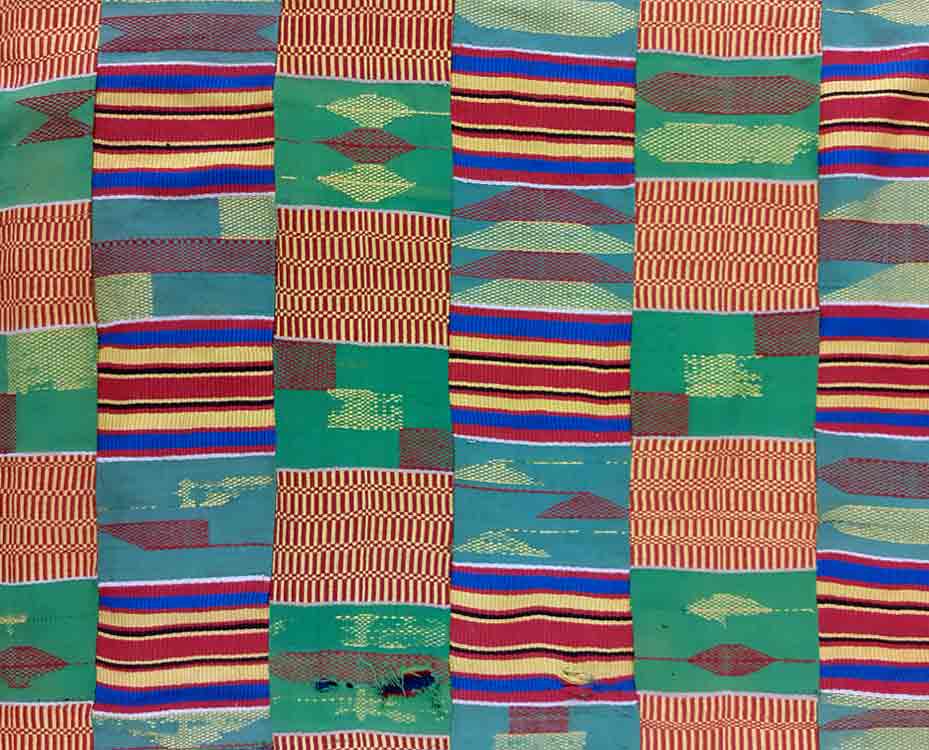
The Kente fabric in the depot of the Museum Fünf Kontinente © Museum Fünf Kontinente (Photos: Sophia Lubin)
Teaching and learning of kente fabric with the focus on history, sociocultural, political significance and educational relevance; improving the production technique for mass production purposes; improving of loom and its accessories; and alternate way of creating handmade kente print, among others, informed my teaching. Learners under my tutelage also explore appropriation of the symbolic kente patterns and engage in experimenting with kente designs.
published January 2021
Reference
- Essel, O. Q. (2019). Dress fashion politics of Ghanaian presidential inauguration ceremonies from 1960 to 2017. Fashion & Textiles Review, 1(3), 35 – 55.
This article is part of a gallery: Perspectives from Ghana on Museum Objects in Germany
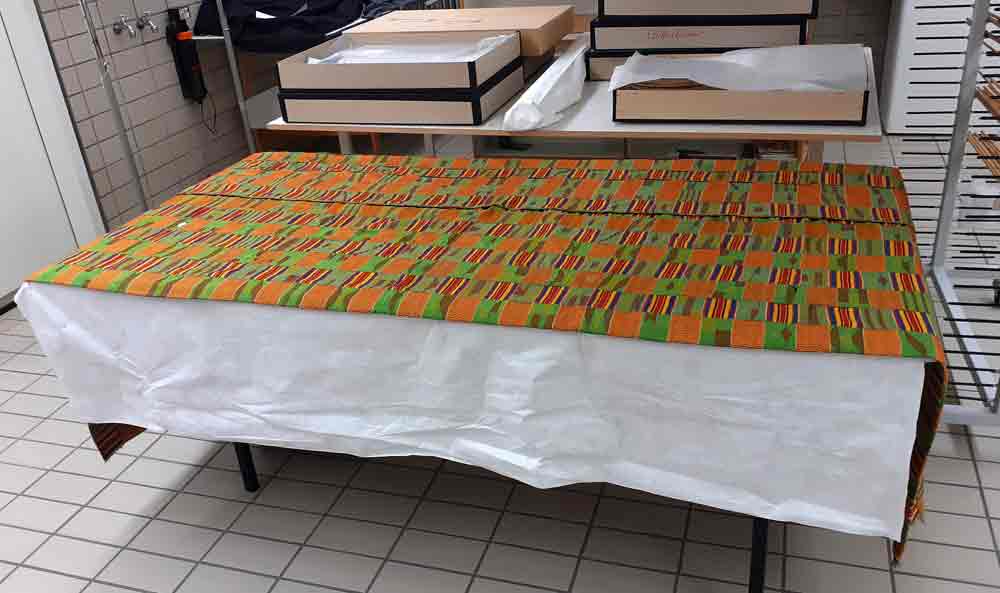
The Kente fabric in the depot of the Museum Fünf Kontinente © Museum Fünf Kontinente (Photos: Sophia Lubin)
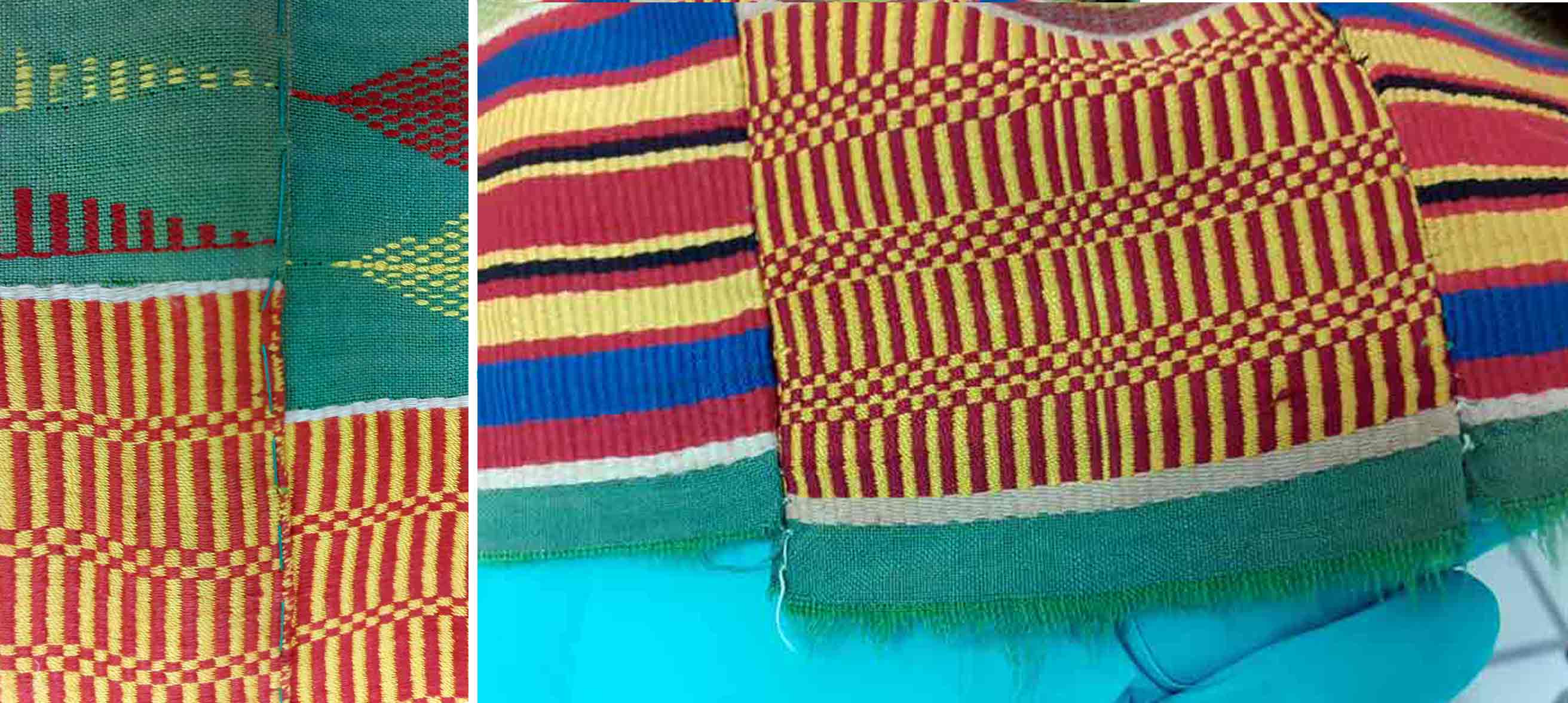
The Kente fabric in the depot of the Museum Fünf Kontinente © Museum Fünf Kontinente (Photos: Sophia Lubin)

-
 Lize Kriel
Lize KrielA German bowl inscribed in Africa
In the process of finding out more about this baptismal bowl – where it comes from, who used it, and when it was discarded, it becomes a portal into South Africa’s contested past. Methodologically, a cultural-historical approach is taken to investigate the object as multiple signifier, not only as part of a transcontinental network, but also within a local, transcultural, context – what John and Jean Comaroff (1991, p. 200) referred to as the “long conversation” between European missionaries and African Christians.
The bowl was meant to be used with an accompanying, although, in this case, not quite matching, pitcher for the baptism ceremony, in which Christians use water to symbolise the blood of Christ washing away their sins. The Wallmansthal station where the bowl was found, was established by the Berlin Mission Society in 1869. The farm was about thirty kilometres north of Pretoria, today a capital city of South Africa. It became home to African converts gathered from the Kekana-Ndebele and several other pre-colonial northern Sotho polities (Van Rooyen, 1953, pp. 15-20). By the mid-twentieth century, the congregation was approximately 550 people strong (Schulze 2006, p. 456). Together with several other German protestant mission societies, the Berlin Mission contributed to the making of a Christian denomination referred to as “Lutheran” in South Africa today. After a century under white missionary tutelage, the African Church became independent as the Evangelical Lutheran Church of South Africa in the 1970s (Pakendorf, 2011, p. 115).
Knowing that a protestant congregation in Bochum, Germany, donated a church bell to the Wallmansthal Church in 1870 (Van Rooyen, 1954, p. 26), we can deduce that the baptismal bowl may also date from this era. The pitcher bears the mark of Gerhardi & Co. Judged from its Art Nouveau design elements and knowing that this Ludenscheid-based (Gerhardi) company was quite prolific in the production of cast pewter in the Jugendstil (Online Encyclopedia), a post 1890 manufacturing date seems equally probable.
Called Taufgeschirr (Baptismal dishes), bowl-and-pitcher sets of this kind are still being manufactured and used in churches in Germany today. Some congregations include images of old as well as new baptismal bowls on their websites as part of the material markers of their heritage. The exact same design displayed by the Evangelical Church of Illertissen in Germany on their website, is still in use today in the Evangelical Lutheran Church of Masealama (formerly the Kratzeinstein Congregation of the Berlin Mission Church) in South Africa’s Limpopo Province (Joubert, 2015).
Many baptismal bowls were inscribed with verses from the Bible. The quote on the Wallmansthal bowl is a contracted version of Matthew 19:14. What makes this bowl an exceptional object of transculturation, is the fact that its inscription appears in the early orthography of the local African language, Sepedi: “Lesang bana batle gonna, ka gobane mmuso oa Modimo ki oa bona” (NIV: “Let the little children come to me, … for the kingdom of heaven belongs to such as these”).
The bowl was used in church services on mission stations in the same way it would be used in protestant churches in Germany: the pastor would sprinkle the children of African Christians on the forehead with water which had been poured into the bowl from the pitcher. The initial African converts, however, were baptised as adults, only after proving that they had internalised enough knowledge of the Bible and convinced the white missionaries of their commitment to the beliefs and practices of Christianity (which, well into the twentieth century, remained entwined with Western ideas about civilisation).
To these converts, the baptismal bowl was symbolic of their ritual immersion into a foreign way of thinking, living and believing. And yet it was inscribed in their own language, invoking possibilities for cultural translation; for selective appropriation as well as for imbuing the alien culture with own interpretations, relating it to the indigenous and the familiar, and composing new meanings in anticipation of changing circumstances. The baptismal bowl is thus taken as reflective of broader processes of societal, economic and political reconfiguration brought about by the colonial encounter, but with an emphasis on African resilience.
On the site where the Wallmansthal baptismal bowl was used, these processes played themselves out in a series of extraordinary episodes that indirectly also related to broader world-political epochs: Up until the First World War, the Wallmannsthal land sustained an African Christian farming community. In 1936, as an attempt to address their post-war financial crisis, the Berlin Mission sold off a large section of the farm, giving the (exclusively black) African buyers full title deeds for their plots. Until after the Second World War, Wallmannsthal was a bustling African town giving its inhabitants the economic advantage of being close to job opportunities in Pretoria (Van der Merwe, 1987, pp. 69, 135).
In 1967 the Apartheid government forcibly removed all the inhabitants, including the Berlin Mission Christians who had still lived on the retainer of the farm where the Church and other mission station buildings were (Schulze, 2005, p. 458). Wallmannsthal then became a military base and arms depot for the South African Defence Force. During the late 1980s, with the Cold War still dictating international relations and South African whites slowly awakening to the need for political reform, the Defence Force contemplated the restoration of the site. These plans never materialised.
In the early twenty-first century, in a successful land claim, the Wallmannsthal farm was returned to the descendants of its early twentieth century owners. The restitution did not herald a final episode of utopian prosperity. Increasing demands on limited resources seem to be one of the reasons for the reinstated landowners’ current challenges, ranging from obtaining municipal infrastructure, to addressing the status of illegal squatters on their land, and designing the best possible ways of yielding a sustainable livelihood for an increasing population (eNCAnews, 2018).
Today the Evangelical Lutheran Church of South Africa is but only one of several Christian denominations in South Africa with missionary roots. Many more South Africans belong to African independent or African initiated churches – and, increasingly, international churches with their roots elsewhere in the Global South. The process of inscribing Christianity with own meaning and local significance, continues.
References:
- 925-1000.com (2018). Online encyclopedia of silver marks, hallmarks and maker’s marks. Retrieved from https://www.925-1000.com/silverplate_G.html.
- Comaroff, J & Comaroff, J. (1991). Of revelation and revolution. Christianity, colonialism and consciousness in South Africa I. Chicago: Chicago University Press.
- eNCAnews (2018, 27 October). Pretoria land claims. Retrieved from https://www.facebook.com/eNCAnews/videos/pretoria-land-claims/302862580316147/
- Evangelische Kirchengemeinde Illertissen (2019). Die Taufe. Retrieved from https://evang-kirche-illertissen.de/informationen/taufe/
- Gerhardi (2019). Gerhardi – Ein innovatives Traditionsunternehmen. Retrieved from http://www.gerhardi.com/index.php?id=9&L=0
- Joubert, A. (2015). A journey into the life of a mission-ethnographer. doi: 10.6084/m9.figshare.1375528
- Pakendorf, G. (2011). A brief history of the Berlin Mission Society in South Africa, History Compass, 9/2, 106-118.
- Schulze, A. (2005). “In Gottes Namen Hütten Bauen“. Kirchlicher Landbesitz in Südafrika: Die Berliner Mission und die Evangelisch-Lutherische Kirche Südafrikas zwischen 1834 und 2005. Stuttgart: Franz Steiner.
- Van der Merwe, W. (1987). Die Berlynse Sendinggenootskap en Kerkstigting in Transvaal, 1904-1062. Pretoria: Government Printers.
- Van Rooyen, T.S. (1953). Kronieke van Wallmansthal I, Pretoriana: Journal of the Old Pretoria Society 4, 15-20.
- Van Rooyen, T.S. (1954). Kronieke van Wallmansthal III, Pretoriana: Journal of the Old Pretoria Society 2, 24-28.
published February 2020
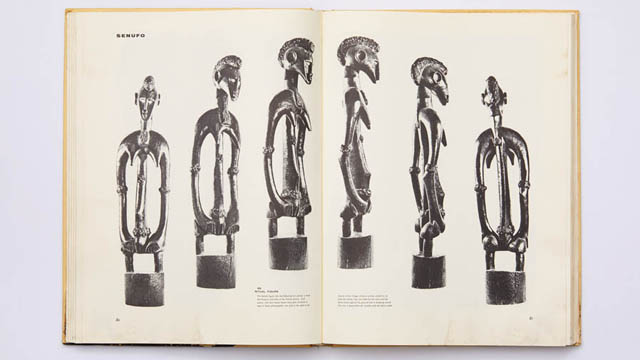
-
 Niklas Wolf
Niklas WolfPhotography as a technique and medium is questioning terminologies of truth and representation as part of the respective and genuinely inscribed authorship of technically enhanced images since the emergence of early photographic works. Through rapid and widespread distribution in print media, photographic images soon became part of the formulation and documentation of shared visual memory in the Global North.
Walker Evans, the father of documentary as one web article states1, heavily influenced the style of modern (not meaning contemporary) photography. His importance as a photographer is essentially based on the photographs he took during the Great Depression in the mid-1930s. The photographic portraits of the three US-american tenant families Fields, Borroughs and Tingle became icons of photographic history and formed the general visual representation of this era by telling a story (in the sense of a historical narrative) at the same time. They, thinking like Evans here, document the person(a), meaning identity or essence, of white, hardworking americans, who, even if they struggle, keep up their integrity. They represent a socio-cultural construct in insisting on their ability of showing, ordering and defining the truth. As Evans' images focus on an American underclass of the time, they show the author of those pictures as part of their own reality.
How does the search for some kind of visual truth in modern photographic images take place when they seem to not look for their own but for the other, which is imagined to be foreign to them and mostly without history? What kind of approach to questions about history and its narratives are they able to re-present as a consequence?
Concepts of history are always entities that reveal just as much about their architects as they do about the evidence integrated into them, which represents constructors and construct at the same time. History rarely appears in a singular form, is never neutral and always normative. It is part of its own discourses, demands order as well as testimony. In documentary terms, the latter (the testimony) should legitimize science and itself. Ordering structures and strategies, on the other hand, require places and institutions where they can appear. Gazes at the end of which historical narratives should stand are seldom equal. Often they are one-sided observations, classifying and hegemonic, alienated observations through mimetic imitation or intended othering. The basis of such categorical observations are specific techniques and strategies for appropriation; results are metaphors or emanations of one's own reality.
The exhibition African Negro Art, which was on view at the Museum of Modern Art New York in 1935, marks the beginning of the institutionalized exhibiting of so-called (or labeled) African Art at major western art museums. Finally coining a terminology often still used today, 603 African objects were exhibited at the MoMA from March 18 to May 19 1935. Walker Evans was commissioned to (literally) photographically document the objects on display.
The resulting images are characterized by long exposure times, which made it possible to guide a light source around the respective object while the cameras aperture was open. The illumination is therefore mostly impressively uniform and soft, strong shadows and the constitution of space are avoided. The images have a hyperfractual clarity.2 The surface of a Bamende facemask for example is uniformly illuminated, the exposure emphasizes the contrasting structures and lines, the formal essence, if one would say so. The actual plasticity of multidimensional objects becomes obvious in a second shot. The face of the same mask appears to be pointedly drawn forward, the slight inclination of a wide comb only becomes apparent here. It almost does not seem to be the same object, so much does the first shot focus on the ornamental surface. Evans used an 8 x 10 medium format camera, the resolution of the images is correspondingly high. The partly dramatic concentration on the object causes a visual monumentalization of things, image sections are often claustrophobic narrow - the objects are not relationally representative, but are re-presented according to their formal characteristics, analyzed by the photographer. This leads to major shifts in reception. One of Evan's most effective images is the photograph of a Pende pendant made of ivory. As if from nowhere, from a timeless, deep black and imponderable background, the masks face emerges from the pictorial ground. The focus lies on the middle plane of its face, which is photographed using a large aperture. Therefore initial blurring starts as early as behind the eyes of the carved face. It is shot from above, not from the front. Viewers are urged to imagine the figure's body (which is neither present nor laid out in the object). Deep shadows let the face appear threatening and alien, framed by sharp contrasts; it becomes clear that the intention of the mask cannot be a good one. Evans gives the alien object an equally alien character, an emotion. The mask stands pars per toto for the ‘other’, the uncanny.
Evans photographs were published quite widely. Starting with the exhibitions catalogue they were used in several publications by the exhibitions curator James Johnson Sweeney focusing on the ‘Art’ of Africa in a broader even more general and art historical perspective: the generalizing and educative intention of pictures and text is already foreshadowed in the somewhat holistic titles of such publications - African Folktales and Sculpture (1952) and African Sculpture (1964) for example . Entering the realm of the photobook as a medium Evans photographic images become part of semi-theatrical stagings, some kind of educational character is inscribed into them, especially looking at the close interlacing of text and pictorial object. Ultimately, the message and content of the images are only self-referential. Evans photographs where often published together with the ones of Elitot Elisofon, who amongst other jobs worked as a photojournalist for the LIFE magazine. In The Sculpture of Africa (1958) Elisofon makes use of the photobook as a medium very consciously. For example he uses different photographic views on the same sculptural object to kind of animate it in a cinematic way, using the photobook as an idea to look at three-dimensional properties of things in a two-dimensional way, making the accessible by flipping through the book. Both photographers work is often labeled as having a documentary style, both seem to have a special interest in photographically analyzing pictorial qualities of the surface and materiality of the things they look at. Exposure and contrasts (re)produce haptic qualities and material properties of the things being looked at through the camera quasi argumentatively, based only in the photographic objects themselves.
Methodically, Walker Evans' documentarism is ergo characterized by the omission of object-immanent information and the simultaneous genesis of image-immanent content. His pictures do not allow conclusions to be drawn about the size, material and context of the representations; a mostly unspecific monochrome background detaches the objects from the contexts inscribed into them. The photographer repeats aspects of the aesthetically and content-wise neutral display of a modern art exhibition and demands that the images focus on purely formal aspects. The representations do not permit any connection between the signifiers in terms of content. In narrow sections, each object is presented in a very specific view - the photographic images ergo become significant only in a Western canonical art context, shifted to its terminology and histories.
Stylistically, Evans' photographs can be described as clean and cerebral.3 The images of African objects are clean (and timeless) in the sense that they are cleansed of any context; they are cerebral in the sense that they are open to new inscriptions and attributions. The highly specific aesthetics of the images serve to conceal and reveal equally specific information at the same time, they are markers of tailored representations4 which are more the presentation of Evans as the author of those images and his techniques to strip pictorial objects from their original terminology and historical narratives, than the representation in the sense of a documentation of the object shown.
1) https://www.theguardian.com/artanddesign/gallery/2015/dec/03/walker-evans-documentary-photography-great-depression-gallery; 15. Juli 2020.
2) Cf. Campany, David: Walker Evans. The magazine work, Göttingen 2014, S. 52.
3) Cf. Strother, Z.S.: Looking for Africa in Carl Einstein’s Negerplastik, in: african arts Winter 2013 VOL. 46, No. 4, S. 8 – 21, S. 8.
4) Cf. Webb, Virginia-Lee: Perfect Documents. Walker Evans and African Art 1935, New York 2000, S. 15.
References
- Eliot Elisofon: The Sculpture of Africa (text: Ralph Linton, William B. Fagg), New York 1978
- James Johnson Sweeney, Paul Radin (eds.): African Folktales and Sculpture, New York 1964
- Kerstin Pinther, Niklas Wolf (eds.): Photobook Africa. Tracing Stories and Imagery, München 2020
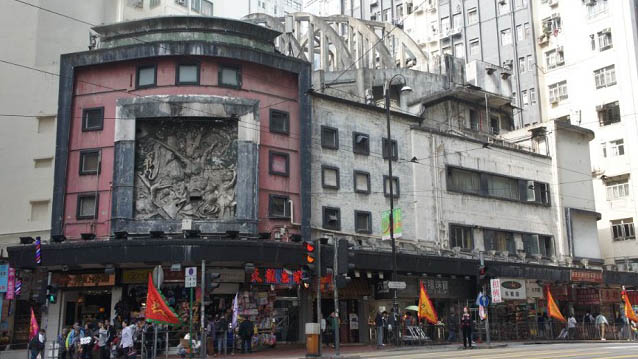
-
 Prudence Lau
Prudence LauState Theatre, originally named Empire Theatre, was opened in 1952. According to interviews with veterans from cultural circles, the Theatre was the “very origin of Hong Kong’s entry to the world of high arts” (South China Morning Post, Jan 11, 2017). It was Hong Kong’s cultural hub and only to be eclipsed by the City Hall that opened four years later in 1962. Located in North Point on Hong Kong Island, it was founded by a Russian-Jewish impresario Harry Odell, a legendary giant in the history of Hong Kong entertainment. Odell had started a film distribution company ‘Harry Oscar Odell’s Commonwealth Enterprises Corporation Ltd.’ in the post-war years and arranged for internationally acclaimed artists to perform in Hong Kong and in the theatre, including the late Taiwanese famous pop singer Teresa Teng, the late British tenor Peter Pears and Katherine Dunham’s Broadway dance company (South China Morning Post, March 2, 2016).
The Theatre was also a popular venue for live shows such as Chinese drama, opera and musical performances. The roof of the auditorium is suspended from external parabolic concrete roof trusses, which are exposed to the public and serves as a prominent feature and trademark of the building. This ingenious design also freed the auditorium from pillars and allowed for flexible internal arrangements. Designed by a Chinese architect S.F. Liu, the Theatre is moreover fronted by a large decorative relief panel with the artwork by renowned Lingnan artist Mui Yu-tin featuring the ancient Chinese tale of ‘The imperial warlord Dong Zhuo and the legendary beauty Diao Chan’. Together with the framed squared architraves and banded windows harmoniously fronting the elevation of the Theatre, there is a distinct Modernist and Art Deco quality to the whole building.In 1959, it was renamed State Theatre, and due to practical reasons the building has since then been converted into a theatre-cum-shopping complex, and a multi-storey block with shops, residential flats and a night club was opened in the adjacent site. The Theatre finally ceased to operate in 1997, and has today changed its use to a billiard centre with removable partitions sealing off the upper deck of the auditorium. The rest of the complex currently consists of a rundown shopping mall, still in function, and small residential flats.
In July 2015, a local property developer started to purchase various property rights within the State Theatre complex, and rumours of demolition and redevelopment of the site started to spread. Eventually, after substantial consolidated public efforts towards the Theatre, it was finally given a Grade 1 historic building status in March 2017. The State Theatre, narrowly escaping demolition, is only the third building after the Bank of China (built 1952) and the City Hall (built 1962) listed as a Grade 1 historic building in Hong Kong that is built after 1950, indicating a flaw in local heritage policy to value modern built heritage.
published January 2020
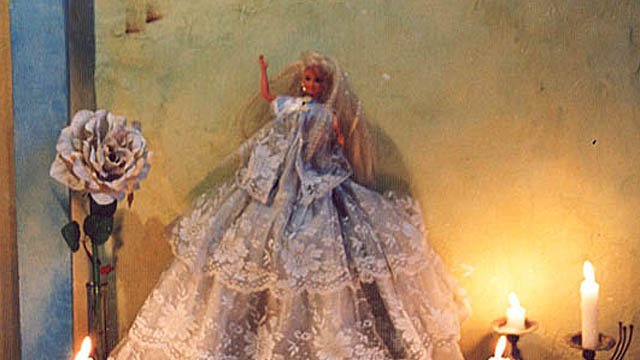
-
 Natalie Göltenboth
Natalie GöltenbothWhen I first entered Anna’s house1, I was surprised to hear that it was a temple of the Afro-Cuban Santería religion, a place determined by the presence of the orichas – the sacred beings of Santería. The objects of the interior did not reveal but seemed to hide their sacred meaning for the uninitiated viewer.
On our way through the house, Anna introduced me to a doll dressed up in white: Obatalá, the paternal oricha of wisdom and justice, with a cream cake on his right and a wide-eyed Bambi on his left. On the sideboard in the corner we greeted Yemayá, the maternal oricha of the sea, represented by a plastic bowl filled with water in which various floating animals swung and a Barbie, whose light blue lace dress complemented the turquoise colored water of the bowl. Finally, in a small wardrobe, the soup tureen of the goddess Ochún was decorated with two elegant Barbies in golden outfits, staring out of the darkness with their always flawless smiles. Two foreigners, charged with western ideals of beauty, who, in this context, had been commissioned with representing Ochún, the oricha of femininity, love and freshwater.
The representation or illustration of sacred powers through everyday objects, such as toys, dolls and knickknacks, have held a strong fascination for me since I literally stumbled upon them in Santero households, and, thus, the question of how this transference of powers and meanings to ultimately mundane objects could occur has long accompanied me on my fieldwork.
How can we interpret the fact that Ochún, the Afro-Cuban goddess of love and freshwater is visualized by a glittering Barbie doll sent to Cuba by Cuban family members living in the USA.
We should take a look back to the beginnings of the history of this religion for a better understanding of these dolls on the altars of Afro-Cuban Santería. Between the 16th and the 19th century, people were moved from one world to another on the sea routes of the transatlantic slave trade, which connected West Africa with the Caribbean (and this, in turn, with Europe), where they would henceforth work as slaves on the plantations of white landowners.
We should consider that people from Nigeria, Togo and Benin who had been deported to Cuba arrived in the New World without any luggage. The carved wooden sculptures of their gods, power objects, masks or costumes were left behind together with the African coastline. The transfer of religious concepts from Africa to Cuba, the Caribbean or Brazil, therefore, took place primarily in the minds of these people and remained dependent on this imaginative reservoir for long periods of time.
Despite the fact that the Cuban social anthropologist Don Fernando Ortiz2 still managed to collect some old carved wood oricha representations which had been produced during the colonial period in the 1930s to 1950s, the tradition of carving sculptures had not been resumed in the new situation in Cuba. The wooden oricha representations of Nigeria and Benin were replaced by smooth porcelain Madonna statues and the serious looking saints of Spanish folk Catholicism. Slaves from West Africa who were forced to worship the statue of Santa Barbara reacted with a phenomenon known as the syncretism of the Caribbean: statues of the Madonna and saints were interpreted as “reservoirs” of African deities and treated as such.
In the course of these syntheses, Santa Barbara is venerated as a representation of the virile oricha Changó, ruler of fire, thunderstorms and lightning. The Virgin of Regla, with her blue and white Madonna robe, is associated with Yemayá, the maternal oricha of the sea, and the Virgen de la Caridad del Cobre, in her church near Santiago de Cuba, is worshipped as Ochún, the oricha of love, creativity and sexuality. This possibility of reinterpretation, of “declaring something to be something else,” is tantamount to breaking the link between form and content and is the precondition for the unusual appearance of Barbies on the Santería altars.
As the colonial supplies in holy figurines diminished, colorful multiples of saints from Cuban mass production are found nowadays instead of the statues. Together with plastic dolls, Barbies or everyday objects, these new assemblages bear witness to the change of time and values, of new desires and new myths that move the people of Cuba today and are visualized on the altars.
Despite the fact that the connection of object and meaning has been blown up in modern Santería arrangements, it remains unclear to what extent new narratives are woven into the conception of the orichas when they are represented by new material objects: how much Madonna can one find in Yemayá, the oricha of the sea, and what is the relationship between a Barbie and an oricha? Referring to Marshall McLuhan’s3 famous statement that the medium is a significant part of the message, we can try a more specific interpretation of Barbies on Santería altars.
Original Barbie dolls are commodities acquired in stores in the USA and sent as gifts by relatives. As commodities and gifts, they mirror family ties that have continued over decades connecting Cuba and the USA, countries that have been politically separated since the Cuban revolution in 1959. In addition, Barbie dolls are not only saturated with the sacred aura of the orichas, they are also simultaneously encrusted with a fine texture of Cuban dreams of consumption and the feverish delirium of departure. Like Catholic saints, Barbies are figurines which are highly charged with their own narrative: the story of Ken and Barbie in the US American glamour world is a story of success, power and consumption. In this sense, Barbies on Afro-Cuban altars represent the fusion of idealized body and lifestyle imaginaries with sacred Afro-Cuban entities and deified ancestors. And, in the end, the forces of the orichas are conjured for reaching exactly these reasons: to provide their adepts with power that enables them to achieve their goals and realize their dreams – be they capitalistic or of another sort.
The reclassification of the Barbie doll from toy to altar object does not happen suddenly. The dolls have to undergo a transition process to become part of an altar installation. The dolls that appear on altars have been subjected to a ritual cleansing ceremony using decoctions of herbs associated with a particular oricha, which allows them to bear the vital power “Aché” of the sacred being. A bundle of herbs and other substances have been placed inside their bodies. Throughout these preparations, nothing has changed the appearance of the doll, which preserves its fashionable style and smile. What has changed is the idea about the object and hence its place – the Barbie is now part of a sacred altar installation.
Barbie dolls watch the strollers from the illuminated doorways that line the dark streets of Havana. Powerful representations of forces, imaginations, places and practices, connecting Africa and Cuba as well as Cuba and the USA, blending boundaries between dolls and gods, toys and power objects, commodities and sacred beings. They connect long-separated families and fragmented religious concepts. They guard the entrances of homes and watch over the desires of their inhabitants, who rely on the power of their Barbie goddesses.
Footnotes
1) Natalie Göltenboth. “Yemayá und der Spielzeugdampfer – Zur Sakralität der Ready-mades auf afrokubanischen Altären.” In Ideen über Afroamerikaner – Afroamerikaner und ihre Ideen. Beiträge der Regionalgruppe Afroamerika auf der Tagung der Deutschen Gesellschaft für Völkerkunde in Göttingen 2001, edited by Lioba Rossbach de Olmos & Bettina Schmidt. Marburg: Curupira, 2003, pp. 107-127.
2) Fernando Ortiz. Hampa Afrocubana: Los Negros Brujos. Miami. Universal, 1973.
3) Marshall McLuhan. Understanding Media: The Extensions of Men. 1st Ed. New York: Mc Graw Hill, 1964
References
- Brown, David H. “Thrones of the Orichas. Afro-Cuban Altars in New Jersey, New York and Havana”, African Arts, Oct. (1993) 44-87.
- Danto, Arthur C. Transfiguration of the Commonplace. A Philosophy of Art. Cambridge, Massachusetts: Harvard University Press, 1981.
- Göltenboth, Natalie.2020. „Invoking the gods – or the apotheosis oft he Barbie doll“ IN: Philipp Schorch, Martin Saxer et al. Exploring Materiality and Connectivity in Anthropology and Beyond. London: UCL
- Göltenboth, Natalie. “Yemayá und der Spielzeugdampfer – Zur Sakralität der Ready-mades auf afrokubanischen Altären.” IN: Ideen über Afroamerikaner – Afroamerikaner und ihre Ideen. Beiträge der Regionalgruppe Afroamerika auf der Tagung der Deutschen Gesellschaft für Völkerkunde in Göttingen 2001, edited by Lioba Rossbach de Olmos and Bettina Schmidt. Marburg: Curupira, 2003, pp. 107-127.
- Holbraad, Martin, and Morten Axel Pedersen. “Things as Concepts.” In The Ontological Turn. An Anthropological Exposition. Cambridge: Cambridge Univ. Press, 2017, pp. 199-238.
- Willie Ramos, Miguel. “Afro-Cuban Orisha Worship.” In Santería Aesthetics in Contemporary Latin Art, edited by Arthuro Lindsay. Washington: Smithsonian Press, 1996, pp. 51-76.
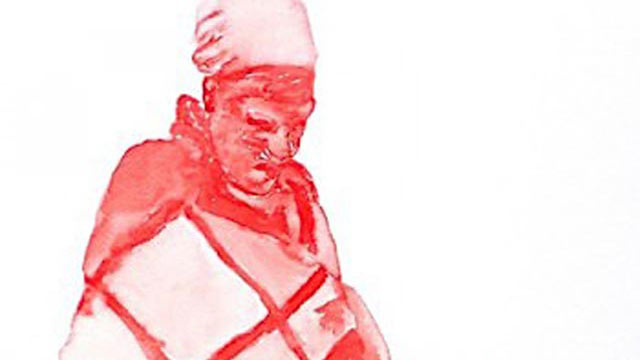
-
 Elfriede Dreyer
Elfriede DreyerOver the last three-and-a-half centuries, South Africa has experienced volatile and turbulent histories of a colonial, postcolonial and global kind. These brought on substantial nomadic movement of people, leading to political and social displacement, and hybrid identities. Since 1652, as a multifariously colonised country South Africa has shown cultural patterns of movement in and out of the country, and from place to place. The country is extraordinarily rich in mineral resources and gold, which has brought about massive wealth, but also instability. Johannesburg was established in 1886, due to the so-called gold rush, with fortune seekers and diggers flooding from all over the world to the country. Since then, the gold mines have attracted an influx of locals as workers, which contributed to much nomadism, but ironically – especially since 1948 during apartheid – such mine workers were allowed to work underground but once above ground they had to return to townships outside the large cities. During apartheid, non-whites or ‘people of colour’ were removed from the city and forcibly established in townships outside the city; they were only allowed as workers into the city; and had to carry passbooks (identity documents) on them all the time.
Such nomadic identity as a result of marginalisation and displacement is still presiding, but for different reasons since 994 and the end of apartheid. From this time onwards there has been a immense influx of people from all over the African continent to South Africa in search of greener pastures. Whereas during apartheid many intellectuals and people ‘of colour’ emigrated from the country, over the past two decades there has been an outflux of people due to a strong degree of political uncertainty and actions of political redress in the post-apartheid constitution, or to convicted beliefs of ‘not belonging’ to the new political dispensation.
Senzeni Marasela’s series of works entitled Waiting for Gebane (2015-2016) entails a continuation of her previous work, such as the embroidery series Theodorah in Johannesburg (2006) and Sarah, Senzeni and Theodorah come to Joburg (2011). In the latter works she explored her relationship with Johannesburg as city and experiences her mother had when she first arrived there. She used embroidery as technique and thread due to its associations of fragility, and conceptually she considered the issue of black women in migration to the cities. Theodorah was depicted as travelling to the city with the aim to finding out exactly what it is that has made many people disappear into Johannesburg. She is uncertain of what she is actually looking for. In the 2014 exhibition catalogue for Nomad bodies at the Wintertuin gallery of the Royal Academy of Fine Arts in Antwerp (curator: Elfriede Dreyer), Marasela stated that “I continuously return to the city, looking and relooking as it undergoes massive transformation. Having grown up in a catholic environment, penance informs a great deal of methods which are labour intensive. The city of gold is important as a transitory space: people go through the city, they come to the city and many dream of this city. There is something impermanent about this city, and it is precisely at this point that I began to write my own histories. The social climate of the city has never been favourable to the women that enter it. It is deliberate that I leave the city arid, without indications of lived experiences, as I seek to build the Johannesburg I can safely occupy.”
However, in Sarah, Senzeni and Theodorah come to Joburg the artist includes herself and Sarah Baartman also as nomads or pilgrims in the city. The three women’s plights are fundamentally different – Theodorah is on ajourney looking for her lost son Gebane; Senzeni is on her journey finding her foothold as individual, and colonial Sarah was displaced to Europe from the Eastern Cape– but they are one in their search for a place, recognition and restitution. They are each other’s doppelganger in their journey through the city of Johannesburg which forms the backdrop to the works. The metaphor of the rhizome is of particular interest to an engagement with nomadic identity in the context of a continent such as Africa. Already in 1987 Deleuze and Guattari (1987:7). coined the idea of rhizomatic being, stating that the “rhizome itself assumes many diverse forms, from ramified surface extension in all directions to concretion in bulbs and tubers”. Living on a vast continent, Africans are accustomed to long journeys; however, poverty, violence, civil wars, imperial infiltrations and oppression have resulted in a generalised nomadic condition where people are constantly moving and travelling in the search for a better life and even survival. However, in a wider sense, globally, Rosi Braidotti (2011:3) states that the nomadic predicament and its multiple contradictions have come to age in the third millennium after years of debate on the “’nonunitary’ – split, in process, knotted, rhizomatic, transitional, nomadic – so that fragmentation, complexity and multiplicity have become everyday terms in critical theory.” Braidotti has been engaged since the 1990s with the question as to what the political and ethical conditions of nomadic subjectivity are, grounded in a “politically invested cartography of the present condition of mobility in a globalized world” (Braidotti 2011:4).
Zygmunt Bauman (in Hall & Du Gay 1996:19) views the ontologies of nomadic identity as becoming critical when there is uncertainty as to where one belongs, a view that is crucially relevant to emerging urbanising African identity. `the figure of Theodorah can be aligned with the idea of the flâneur, which Bauman appropriates in his presentation of the stereotype of the pilgrim who as a stroller is on a teleological journey – ordered, determined and predictable (Bauman in Hall & Du Gay 1996:21). Comparing the contemporary world to a desert through its fragmentation, Bauman views it as being inhospitable to the notion of the pilgrim, being unable to leave a footprint in the sand. The forward march of the pilgrim (Theodorah) is equally compromised and in the context of the wind effacing footprints (of Gebane) and the rhythmical similarity of the desert environment, the pilgrim goes in circles (Bauman in Hall & Du Gay 1996:23). “The overall result is the fragmentation of time in episodes, each one cut from its past and from its future, each one self-enclosed and self-contained. Time is no longer a river, but a collection of ponds and pools” (Bauman in Hall & Du Gay 1996:25).
As in these afore-mentioned works, in the series Waiting for Gebane the artist’s mother is depicted as going from her rural environment to the ‘big city’, Johannesburg, in a search for her son Gebane who left for the city and never returned. She becomes a nomad in her searching ritual, but it is a dystopian journey, providing no teleological “good ending” and leading nowhere, since she cannot find him. The works depict a potent image of Africans searching for a better life elsewhere, but simultaneously failing in finding answers to their economic and other dilemmas. Waiting for Gebane explores cultural and artistic mappings of the social and political power geographies and complexities that dominate cities. Of pertinent interest here is how people’s decolonial transition from rural to urban contexts have been voiced, claimed, renegotiated and contested, especially in the context of capital cities as locations where there is a conflation of global and local influences. Mendieta (2001:15, 23) argues that cities have become the “vortex of the convergence of the processes of globalization and localization … [and] epitomes of glocalization, to use Robertson’s language (1994)”; and that the “city is the site at which the forces of the local and the global meet: the site where the forces of transnational, finance capital, and the local labour markets and national infra-structures enter into conflict and contestation over the city.”
In Marasela’s work, contemporary African identity is characterised by particular cultural histories, as well as by identifiable patterns of transitivity and how people construct their identities psycho-geographically. Dispossession of the embodied and embedded self is articulated so that the city and placelessness become sides of the same coin (Braidotti 2011:6). Braidotti (2011:7) argues that “The contrast between an ideology of free mobility and the reality of disposable others brings out the schizophrenic character of advanced capitalism”, which is nowhere more visible than in the political and social extremities in South Africa. Marasela’s work expresses the idea that meaning is created through the crossing of space and distance between bodies, or as Soja (1989:133) argues, “To be human is not only to create distances but to attempt to cross them, to transform primal distance through intentionality, emotion, involvement, attachment.”
New decolonised Identities emerge through movement through in the world and interfaces with alterity. Often, it is a sense of alterity or the attraction to the exotic other that produces nomadism. Waiting for Gebane thus presents the ambivalent Baumanian idea of the pilgrim-tourist who keeps going in circles, driven by a non-teleological sense of survival and looking for a better life, which might not lead to a ‘good ending’. Nomadic identity is essentially rhizomatic here, and in South Africa – also in an amplified sense on the African continent – the drive to belong and the utopian quest for a better life have resulted in identity being redefined, renegotiated, rerooted and sprouting in many directions.
Senzeni Marasela is a female South African artist of Zulu origin, born in Thokoza, KwaZulu Natal in 1977. She is currently completing a MA degree in Art History from Wits University (SA); she has exhibited widely in the national and international contexts; and she has been awarded several grants and residencies, for example from Devon Arts Residency (Scotland) The Ampersand Foundation and Axis Gallery in New York; The Thami Mnyele Foundation in Amsterdam; and the Kokkola Art Academy in Vasa. Her artist website is found at http://www.senzenimarasela.com.
References- Bauman, Z. ‘From pilgrim to tourist – or a short history of identity’. In Hall, S and Du Gay, P (eds). 1996. Questions of cultural identity. London/New Delhi/Thousand Oaks: SAGE.
- Braidotti, R. 2011. Nomadic subjects: embodiment and sexual difference in contemporary feminist theory. Second edition. Gender and culture: A series of Columbia University Press. New York: University of Columbia Press.
- Deleuze, G & Guattari, F. 1987 [1980, French original]. A thousand plateaus. New York: University of Minnesota.
- Hall, S and Du Gay, P (eds). 1996. Questions of cultural identity. London/New Delhi/Thousand Oaks: SAGE.
- Mendieta, E. 2001. Invisible cities: a phenomenology of globalization from below. City: analysis of urban trends, culture, theory, policy, action 5(1):7–26.
- Soja, E. 1989. Postmodern geographies: the reassertion of space in critical social theory. New York/London: Verso.
published February 2020
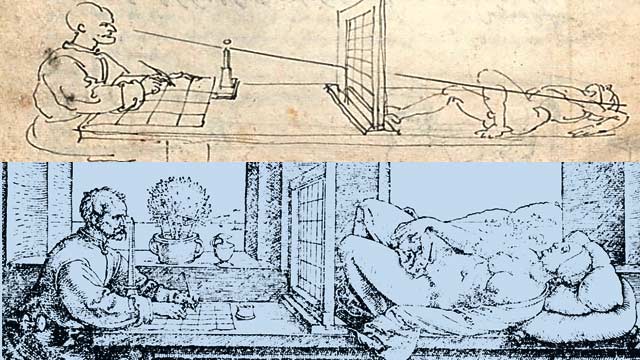
-
 Ernst Wagner
Ernst Wagner
On the left construction of the horizon and vanishing point, on the right with the viewer inserted (visualisations by the author)
With the help of this grid, he succeeds in creating a way of convincing representation, an interpretation that photography (invented almost 400 years later) would also deliver. I.e. a representation that is ‘correct’ in terms of perspective.
The woodcut itself also follows this principle of ‘correct’ linear perspective. The horizon is marked as the sea horizon in the right-hand window; the vanishing point of the grid lying on this horizon. This vanishing point also assigns a specific, clearly determined space to the viewer's eye. It is at the same height as the depicted artist, and on the right, the ‘male side’ of the image. In this way, the viewer is not only a witness to the event, but also a confidant and accomplice of the drawer / the artist.
In terms of composition, the symmetrical layout is particularly striking. As in a coat of arms, we see two equal-sized fields on the left and right, divided by the grid frame. In both parts, two windows, also of the same size - each with a view to the outside.
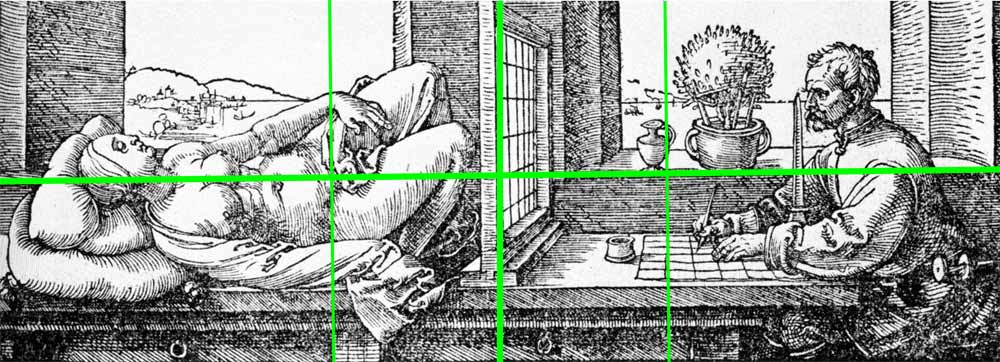
Subdivision according to centre lines, additionally thirds. The vanishing point is on the right perpendicular.
In the left part of this emblematic image, the woman. The flowing cloth emphasises her nakedness rather than covering it. She is bedded on soft cushions, 'lying according to the artist's will' (to speak with Dürer in his accompanying text). Her raised lap turned towards the man, her eyes look closed, her left hand rests on her thigh. The table on which she lies works as a presentation plate.
Dichotomies
With this composition, the image formulates an almost striking dichotomy. To name just a few aspects that are particularly significant in our context:
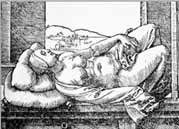
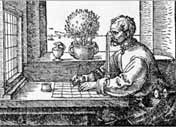
- Woman: naked and thus ahistoric, i.e. "timeless", with closed eyes and diffuse spatial orientation.
- Man: clothed and armed, watching closely, focused on the woman in front of him.
- Woman: In her passivity she has a powerful presence in the picture; she is - lying - the theme (the
- Man: He is actively engaged, sitting, taking action. He is an individual
- In the window: 'free', lively nature.
- In the window: reduced nature, mostly just the horizon line.
- Tall, naturally growing trees outside in the open air.
- One small, domesticated and cultivated 'tree' in a pot, indoor.
This dichotomy is not only emphasised by the narrow format and the symmetrical layout, but above all by the clear separation of the two ‘worlds’, which is achieved by means of the grid frame, i.e. an important tool in (Dürer’s) art. This again cements the structure of distance established by the artist: On the right, the male attention to the woman is conceived as (and through this reduced to) distanced looking and the spellbinding drawing of what he sees. The woman, on the other hand, presents herself - against a lively backdrop - as the ‘target object’ behind the frame. In this way, however, it is not only the clichéd gender roles being fixed, gender roles as they will be significant throughout the next centuries. But there is more at stake.
Panofsky had characterised this kind of linear perspective "as a symbol of a beginning, when modern anthropocracy was setting itself up" (1980: 126). That perspective initially puts the world at a distance. Above all, it opposes ‘subject’ and ‘object’ to each other in a clearly separated way. The aim of this procedure and the underlying model of thinking is to make the world 'calculable' in a 'modern' way: At last, even in a picture, one can say whether a line, a shape is right or wrong. The world is thus degraded to a supplier of 'appearance data' (Rebel 1996: 198). The data selected are now recorded - through a technical procedure - by the isolated and disembodied eye. In this process, the eye is the representative of a specific 'pictorial intellectuality'. Dürer emphasises: "the eye is the noblest sense of all" (Rebel 1996: 200). This gives the rational mind the decisive role, which becomes the ‘signature’ of the Renaissance. And, perspective is its symbolic form, its paradigm. Linear perspective represents "the world as it can be in the idea alone. It constructs the world" (Belting 2008: 27) according to cognitive principles.
In the woodcut, this rational, intellectual way of seeing belongs to the man. The woman, on the other hand, has her eyes closed, she does not look. (She is looked at.) With regard to the anthropocratic claim of the (male) rational mind, woman (as a sensually tangible allegory) thus becomes the indeterminate, unmarked “Other” (Latour 2017: 38). Ultimately she becomes the representative of the natural: she is naked, ‘as nature created her’ and thus timeless, i.e. untouched by a specific contemporaneity. She must - in order to become visible - be 'captured' by the man on the right, who has an individual face and is dressed in a contemporary manner.
Above all, the specific form of relationship of the two sides to each other are decisive for our question. As already shown, we find here a clear subject-object relation. The man (who represents civilisation, culture, the domestication of nature) is the active, acting, looking, mentally grasping subject who now ‘subjects’ the woman as a passive object to his artistic appropriation (and through this the 'naked', non-civilised nature that is embodied by her).
Latour points out that this conception is specifically European: "What occidental painting invented [...] and of which no trace can be found in any other civilisation" (Latour 2017: 38). From there, there is an striking parallel to the conquest of the "New World" by European powers in colonialism, as the image below shows.
 Theodor Galle/Jan van der Straet. Vespucci discovers America.1589. (https://www.deutsche-digitale-bibliothek.de/item/C6QXUXQLVIKAIVADBOAJ7ZM3WXLWTVT5)
Theodor Galle/Jan van der Straet. Vespucci discovers America.1589. (https://www.deutsche-digitale-bibliothek.de/item/C6QXUXQLVIKAIVADBOAJ7ZM3WXLWTVT5)References
- Belting 2008: Hans Belting. Florenz und Bagdad – Eine westöstliche Geschichte des Blicks. München (Beck)
- Latour 2017: Bruno Latour. Kampf um Gaia. Berlin (Suhrkamp)
- Panofsky 1980: Erwin Panofsky. Die Perspektive als „symbolische“ Form. In: Erwin Panofsky. Aufsätze zu Grundfragen der Kunstwissenschaft. Berlin (Volker Spiess)
- Rebel 1996: Ernst Rebel. Albrecht Dürer, Maler und Humanist. München (Bertelsmann)
- Zur Lippe 1981: Rudolf zur Lippe. Naturbeherrschung am Menschen. Bd. 1. Frankfurt (Syndikat)
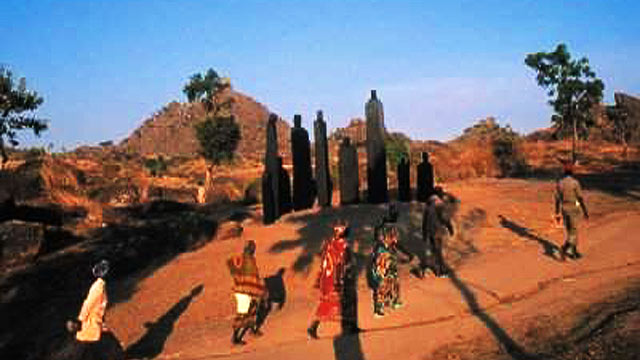
-
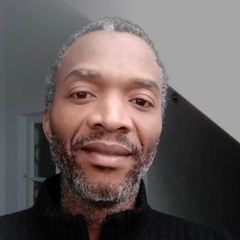 Paul-Henri Souvenir ASSAKO ASSAKO
Paul-Henri Souvenir ASSAKO ASSAKOThe image is a photograph showing details of the French artist Christian Lapie’s public installations in 2001 in the city of Ngaoundéré, capital of the Adamawa Region in Cameroon. The work consists of five modules composed of nine figures, ranging between 150 and 450cm each and laid in a semi-circular radius of 1000 cm. The pieces are made of wood and placed vertically in an upright position. The upper end is shaped like a head, giving each piece the appearance of a human silhouette. Arranged like a gathering of people dressed in local traditional attire, called boubou (a long, loose-fitting garment worn by both sexes in parts of Africa), the works are aligned in a semi-circular arc.
The work’s detailed structure is closely linked to its title Djaoulérou, which means "traditional space, place of meeting and reception". The artist echoes customs in a context where the relationship between traditional practices and Islam remains ambiguous. Islam provides an opportunity for certain members of local society to acquire privileged positions under the auspices of religion. Religion’s role in the political game has proven to be so important that post-colonial politicians have laboured to maintain control of the religious sphere in every region. Religion presents challenges for politicians in terms of governance and control. Maud Lasseur (2005, 95), echoing this sentiment, maintains that: “During the colonial period and under the regime of President Ahidjo (1960–1982), Christian missions were thus contained to the south of Cameroon so as not to hinder the Muslim aristocracy of the Far North or thwart the unifying political project of the first Cameroonian president”.
The monumental character of the work, the rhythm and movement suggested by forms treated with little attention to detail, the variations in volume and the different dimensions of each silhouette make the installation look both impressive and expressive. Each individual group of statues, displayed at the same time in different places in the city, shows how the "mysterious objects" made by a foreign artist present unfamiliar traits regarding the city’s socio-cultural imagination. The work breaks taboos: an unusual appearance that creates artistic experience, tradition and beliefs, which have become subject to manipulation and political propaganda within the society.
The work’s destruction reflects the fragility of a slavish society instrumentalized by politically motivated religious arguments in the 2002 legislative elections in Cameroon. The fact that a French artist has carried out an unusual and iconoclastic installation project in this city is seen as a provocation, particularly by the Muslim cultural authority. This religious and political authority occupies a very influential social position as "guardian of the temple" (custodian of traditions) and is in a position to incite people to commit acts of such magnitude. In addition to setting fire to the works and proceeding to uninstall them, public authorities definitively closed down the Franco-Cameroonian alliance of Ngaoundéré because of the social unrest the works provoked. This cultural centre for Franco-Cameroonian cooperation had supported the artist's installation project.
The act of vandalism perpetrated on Christian Lapie’s work exposes Cameroon’s national society in search of landmarks. Art, and particularly sculpture, has played an important role in expressing belief systems. The cosmogonic universe and the world view of the populations that have succeeded one another in this territory have been revealed through artistic representation. The bold production and reproduction of anthropomorphic, zoomorphic, geometric and imaginary forms is typical of these societies. As in many countries in sub-Saharan Africa, art has helped what people see, think, imagine and believe (J.P. Notué, 2005). Because of the lack of critical understanding of their history and the changes they experienced, societies are confronted with major shocks that have an impact on their development. Among these shocks are an ambiguous relationship to religion. Its consequences are the religious and political manipulation that societies are sometimes subjected to. One historical reason for this is the attitude of missionaries who made no discernment in the positive values of the tradition and the absence of doctrine and deep convictions of these values (E. Mveng, 1985).
Cameroon’s colonial religious legacy is one of the most important sources of the ethical foundation of its society in the 21st century. The generalization of the religious profession of faith/conversion seems to have fostered a latent form of "alienation" among the urban society. There is a superficial knowledge of both the principles of modern culture and the traditional environment, two references whose slavish play of opposites have political stakes. In Cameroon, the policy of conviviality between Islam, other religions and local cultural practices implemented by Sultan Njoya in the Kingdom of Bamum presents elements of inspiration for a compelling form of social emancipation. The policy of inculturation and multi-confessionalism has favoured the cultural openness of society and preserved, for example, the sustainability of the region’s remarkable creative industry. Art, belief systems and politics are all values of cultural expression fundamental to society.
The work breaks taboos: the artistic experience created by its unusual appearance calls upon traditions and beliefs that have become subject to manipulation and political propaganda within the society.
References
- Mveng Engelbert. 1985, Histoire du Cameroun, tom 2, Yaoundé, Ed. CEPER.
- NOTUE Jean-Paul, TRIACA Bianca, 2005, Bandjoun, Trésors royaux du Cameroun, Milan, Ed. 5 continents.
- Maud Lasseur. 2005, in « www.cairn.info/revue-afrique-contemporaine-2005 ».
- Assako Assako PH.S. 2011, l’art au cameroun du XXe au début du XXIe siècle : étude des expressions sculpturales en milieu urbain, thèse de Doctorat/Ph.D. en histoire de l’art, Université de Yaoundé 1.
- www.christianlapie.net/oeuvres/16/djaoulerou
- www.christianlapie.net/mobile/news/326/.%20http:#news
- www.christianlapie.net
published February 2020
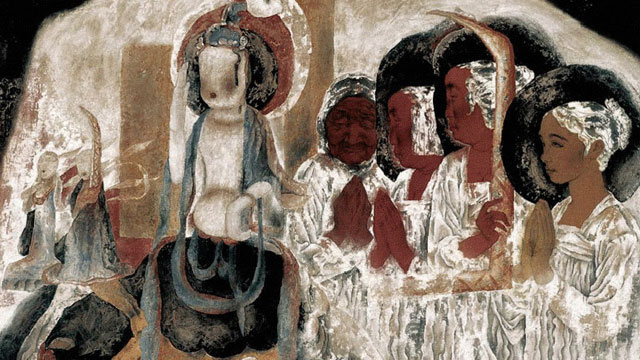
-
 Ming Zhang
Ming ZhangThe importance of the series entitled by "Dream of Dunhuang"
The Dunhuang Dreams series from the 1990s marked the emergence of a new opportunity for meticulous figure painting. After his in-depth study of the Dunhuang murals and his many field trips, Yongli Tang drew inspiration, adhered to the core of traditional painting and incorporated the expressive strengths of Western painting to achieve a bold innovation in artistic expression.
In the creating of meticulous figure paintings, there are three crucial ingredients, including the use of line, modeling and coloring.
Modeling and Line

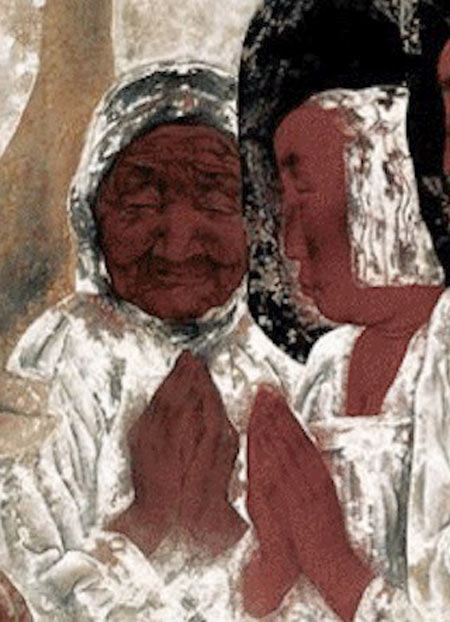
Fig. 2: Part of painting of hairpin ladies in the Tang Dynasty ,Zhou Fang, active late 8th–early 9th century, Ladies Wearing Flowers in Their Hair, handscroll, ink and color on silk, 46 x 180 cm, Liaoning Provincial Museum, Shenyang province, China - copyright: public domain / Wiki Commons.
Fig.3: Part of Memories Of Childhood, Yongli Tang, 1998, Copyright: the artist.Line is the most basic language of Chinese painting, and Chinese painting is concerned with the use of frames and calligraphy and focused on the expression of the structure and rhythm of the object's form, instead of the shading and the in-depth of the object. The series of works is mainly presented by the use of line in the traditional painting while the shading and the linear perspective of the sketch is enlighteningly integrated in the form of relief. The series Dream of Dunhuang innovatively uses linear sketches to portray and shape exaggerated figures, with extreme variations between lines. The spirit of the lines fits the mood created by the picture, while the light and dark faces are integrated to provide a detailed portrayal of the main figure. The juxtaposition of realistic and extracted Dunhuang symbols, modern and ancient figures, temporal and spatial wholeness, and a conceptual form of expression are harmoniously presented in the picture, and the modeling has both traditional cultural roots and modernity.
Coloration
Dunhuang murals have undergone thousands of years of natural and man-made changes in color, with some peeling and mutilating. It looks like a rich, deep, ancient palette that allows the viewer to achieve a secondary aesthetic pleasure. Being in the sacred, quiet rock cave, the soul is purified, and the individual remains in the flow of the years, achieving spiritual transcendence.
In order to pursue the sense of history in Dunhuang murals, Yongli Tang used Black and White as the main colors and interspersed with azurite, stone green, earth red and other traditional colors for embellishment. The color of cooked brown was used to present the figures’ skin. The author could not be confined with the realistic object so that he exaggerated color changes to highlight the subjective emotional orientation of the picture.
In the series of works, virtual dyeing method was innovatively applied to highlight the freehand of the picture. Dyeing high places or low places could be switched freely according to needs, and dyeing is not limited by the line, which presents a vague sense of void. In addition to the traditional color setting techniques, for example, flat painting, rendering and over-dyeing, the author developed the method of shedding. The thick painting and shedding methods set off each other. To be more precise, the author piled up degummed white powder on the base color, then chafed and patted, with some of the white powder falling off naturally. The rest was blended with the base color. The use of large areas of white color does not cause the picture to be chalky. During the painting process the shedding of white color is like the painting of the freehand work. With the controlled brushwork, there are uncontrollable and accidental factors, which gives the mottled and dappled left on the murals by the years. The thickness, light and dark, cold and warm of the white color is presented in an exceptionally subtle way, creating a harmonious and quiet relationship between religious culture and modern beliefs.
Material Texture
Stable social and cultural environment made the painting language of meticulous painting was solely and smoothly developed for quite a long time. In the late 1980s, political, economic and cultural changes leaded to the activation of the painting community and the reflection on tradition. New painting materials were triggered a change in creative thinking.
In his artistic practice, Tang Yongli discovered the texture beauty of the materials and used it in the painting process: mineral colors have a sense of luster, strong covering power, and can be repeatedly modified; the watercolor is rich and delicate; the shedding effect of degummed white powder reproduces the oxidation and wind erosion of mural; the layering of these colors gives the picture a sufficient sense of history and ethereal inspiration. Tang Yongli uses this as an opportunity for a new language, to expand and to strengthen it, as well as to form a new language paradigm. The beauty of the material texture becomes part of the creation and an aspect of the work to be tasted. The author chooses colored silk as the bearer, which is tough and can be used in a variety of techniques such as thick painting, shedding and reverse painting, and pigments such as ink, mineral color, lithopone powder and watercolor are used.
Classical meticulous painting can only do addition, not subtraction. The use of these material techniques breaks the border of the painting on silk. It also allows us to add and subtract freely and to change a single direction to a multi-directional expression (i.e., highly realizing self-consciousness). The expression of the free state of mind, workmanship, painting, color, texture and other factors become a new organism.
Summary
The series of Dunhuang Dream presents the interaction of multiple factors, scholarly artistic interrogation and the creation of diffuse imagery, as well as the attribution and transmission of spirit. It opens artistic horizons for the modern development of meticulous painting. The development of Chinese contemporary art has always been to move forward with the review and inheriting of history. They find visual art resources to reinterpret, redevelop and re-create them with a contemporary view, thinking and aesthetics, which will form a dynamic and growing tradition.
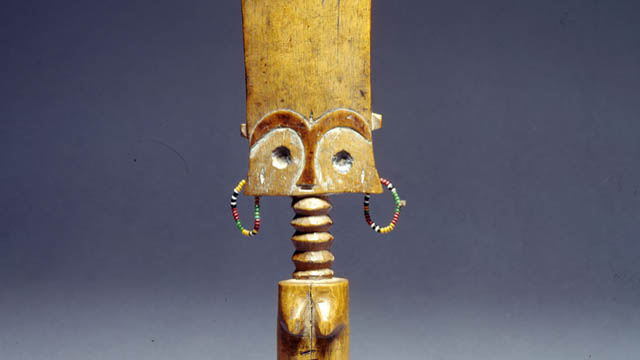
-
 Gertrude Nkrumah
Gertrude NkrumahInversion of Hegemony with Ideas of Femininity
Scholarly works abound on factors and causes of gender inequality in the Ghanaian society and many of these writings address gender inequality solely in terms of women as the victims and thus reinforcing the gender stereotype of female passivity. Although this is true in most cases, such studies do not necessarily address the question of how women have responded to and addressed issues of gender expectations and gender-related roles in African societies. By using the ‘Akuaba’ doll (fertility figurine), this research seeks to explore how the concept of womanhood has been portrayed and represented through time in the Ghanaian society among the Akan ethnic group. It seeks to extend an argument for the interpretation of these images beyond the depiction of women as sexual objects to that of creating an inversion of female hegemony in the society. I argue that instead of considering gender stereotypes as an all-pervasive oppressive tool, we must begin to think of the finer nuances and conceptualize how women have shaped, redefined, and negotiated socio-cultural construction of gender.
The object is widely referred to as the fertility figure, also known as the Akuaba doll among the Akans of Ghana. My reasons for selecting this object are two-fold. Firstly, it speaks to my childhood experiences as a girl growing up in an Akan society and secondly, as someone who is very passionate about gender-related issues either from an intellectual and personal perspectives, I was motivated to choose for this project an object that I can easily relate to, both from a personal and intellectual perspectives.
The object in question is the depiction of a female body, an exhibition of the Akan concept of an ideal woman. The features include a flat forehead with an elongated “ring-like neck shape”1 which reflects Akan standard of beauty. The understanding is that a woman with this type of neck is well-fed, healthy, and strong, a paragon of beauty and affluence. The flat broad forehead also is an embodiment of wisdom, while the accentuated breasts and hips with beads worn arounds the waist is the Akan ideal of womanhood, a depiction of woman as the giver of life. The beads worn around the waist has both aesthetic and symbolical meanings. In terms of beauty, beads were worn as an ornament for beautification, just as portrayed by the wearing of the jewels around her ears. It was also believed that wearing of beads around the waist is sexually appealing, while beads were also worn to broaden the hips and shape the waist for reproductive purposes. It is important to note that in the Akan society, and indeed in most Ghanaian culture, an ideal woman is one that carries and bears children. Clearly, ideas of beauty, sexuality and reproduction were the very essence of womanhood or femininity in the Akan society.
According to a very popular Akan oral tradition, the Akuaba doll is deeply rooted in one’s woman’s quest to overcome her inability in meeting societal ideas and expectation of womanhood.2 Akua, a childless woman, consulted a ritual specialist for a child. She was instructed to go to a woodcarver and make a doll of her choice for a child. Some rituals were then performed on the doll and given back to her to take home and treat and care for as her child. Later she became pregnant and gave birth to a daughter, just as she desired. The Akuaba doll then became symbolic for female reproduction. Amenumey explains that the Akuaba dolls were “…supposed to induce fertility and pregnancy….”.3 Among the Akan, like most precolonial Ghanaian societies, the concept of womanhood was largely defined and shaped by a woman’s ability to give birth to as many children as possible. Childbearing was a blessing from the gods and was usually celebrated with pomp and merrymaking. For instance, the custom was to reward a man whose wife has given birth to ten children with a sheep. The Akan refer to this as “badudwan”4 literally, a sheep for the tenth child. This was usually provided by the wife’s family to the husband to show their appreciation for the replenishing and sustainability of their family.5 In the quest to attain such feat, women worked hard to give birth to at least this number of children as prove of her worth to her husband and the society. This undoubtedly made women who were childless in the society feel undervalued and highly marginalized.
Such ideas and concepts of womanhood and inadvertent marginalisation of women still resonate in contemporary Ghanaian society and indeed in most contemporary societies. A woman’s value and worth continue to be tied with her sexual and reproductive abilities. Although women at present now have access to spaces and engage in works that go beyond the traditionally assigned roles of wife and motherhood (sexual and reproductive values), a woman is still expected to neatly fit in with socio-cultural construct of gender. This underscores the value place on women’s sexuality and reproduction to the detriment of other roles beyond these norms, thus leading to the marginalization of women. It is for these reasons that scholars such as Lerner and Allman have often called for the need to question entrenched patriarchal norms that undermine women’s oppression while it reinforces male- superiority.6
The understanding that women have continually been passive and largely detached from the making of their own history and are mere tools in the hands of a patriarchal society is neatly contested by the history behind the Akuaba doll. While it is true that it was Akua’s desperation to fit into societal expectation of ideals of motherhood that forced her to consult a diviner to help her conceive a child, the knowledge that Akua chose to actively engaged with the process of making the doll; how the doll is carved out, the shape, the physical features, and the aesthetic nature is significant. Additionally, the fact that she chose to carve out a girl child clearly indicates the active role she played in redefining and negotiating power with the matrilineal, yet patriarchal society, thus creating and inverting power in an all-pervasive patriarchal institution. It is also an indication that she did not consider the female as of little value in her society.
Paradoxically then, the history and philosophical ideologies that underpin the concept of the Akuaba doll is a clear exhibition of the nuances and complexities of societal construction of gender roles and status. In a society with a deeply entrenched gender expectations and assigned gender roles, it is remarkable that Akua sought to circumvent, manipulate, and yet conversely acquiesce with existing status quo to her advantage, an inversion of hegemony amidst patriarchal privilege. Therein lies the ambiguities and contradictions of performing gender.
References
- Addo-Fening, R (1973). Asante refugees in Akyem Abuakwa 1875-1912. Transactions of the Historical Society of Ghana. 14, 1. 39-64.
- Akyeampong, E & Obeng, P. (1995). Spirituality, Gender, and Power in Asante History. The International Journal of African Historical Studies. 28, 3. 481-508.
- Allman, Jean. (1996). “Rounding up Spinsters: Gender Chaos and Unmarried Women in Colonial Asante.” Journal of African History, 37, 2, 195-214.
- Amenumey, D. E. K. (2008). Ghana: A concise history from pre-colonial times to the 20th Century. Accra: Woeli Publishing.
- Appiah Anthony K. (1991) “Is the Post- in Postmodernism the Post- in Postcolonial? Critical Inquiry. Vol. 17, No. 2. 336-357.
- Lerner, G. (1994). The creation of feminist consciousness: From the Middle Ages to 1870. Oxford: Oxford University Press.
- Lerner, G. (1986). The creation of patriarchy. New York: Oxford University Press.
Footnotes
1) It is quite common today to hear songs in the Ghanaian society eulogising a woman’s beauty by referring to her ring-shaped neck, together with other physical features. This is an indication that the Akan standard of beauty in the past as enshrined in the Akuaba doll continue to resonate with contemporary Ghanaian societies.
2) This is a popular story among the Akans and was often recounted to young girls especially by an older woman in the family or society. I grew up listening to these stories from my mother and grandmother, among others.
3) D. E K. Amenumey. (2008). Ghana: A concise history from pre-colonial times to the 20th Century. Accra: Woeli Publishing. P. 90. From a spiritual and philosophical perspectives, the use of the Akuaba went beyond just fulfilling the desires of childless women. In most of these Akan societies, when a woman gives birth to twins but in an unlikely situation where one of them dies, she is expected to make a replica of an Akuaba doll in replacing the dead child. Some would also bury the dead child with the Akuaba doll as a way of warding off evil spirit from killing the living child.
4) “Badu” is an Akan name for the tenth born child. ‘Ba’ or ‘ɛba’ is the Twi word for child, while ‘ɛdu’ or ‘du ‘means the number ten in the Akan language. Therefore, the name Badu in Akan usually refers to a tenth born child.
5) It is significant to point out that Akan society, unlike most ethnic groups such as the Mole-Dagbani, Ewe, Ga-Adangbe and Guan, is mostly a matrilineal society. Lineage, inheritance, and chieftaincy succession have always been through the female line. Although precolonial Akan society was not completely immune from patriarchal ideals, women played important roles and and had significant status in society especially in areas of religion, politics and economy. For further details on this, see for example the articles Addo-Fening, R (1973). Asante refugees in Akyem Abuakwa 1875-1912. Transactions of the Historical Society of Ghana. 14, 1. 39-64 & Akyeampong, E & Obeng, P. (1995). Spirituality, Gender, and Power in Asante History. The International Journal of African Historical Studies. 28, 3. 481-508.
6) See for example, Allman, J. (1996). “Rounding up Spinsters: Gender Chaos and Unmarried Women in Colonial Asante.” Journal of African History, 37, 2, 195-214, Lerner, G. (1994). The creation of feminist consciousness: From the Middle Ages to 1870. Oxford: Oxford University Press., & Lerner, G. (1986). The creation of patriarchy. New York: Oxford University Press.
This article is part of a gallery: Perspectives from Ghana on Museum Objects in Germany
published January 2021
 ISB_Team
ISB_TeamA German Perspective on the Akuaba Doll in the Museum Fünf Kontinente Munich
Akuaba Dolls are wooden figures that were and apparently still are in use mainly in rural areas in southern Ghana. Young women hoping for pregnancy or - if they are already pregnant - for the health and beauty of their child, wear these figures on their bodies like real babies and take care of them. That is why they are called 'dolls'.
Akuaba or better Akua-Bà literally means 'child of Akua'. The story tells of "a woman named >Akua< who could not get pregnant and went to a local diviner or priest and commissioned the carving of a small wooden doll. She carried and cared for the doll as if it were her own child, feeding it, bathing it and so on. Soon the people in the village started calling it >Akua< >ba< - meaning >Akuaba's child<, since >ba< means child. She soon became pregnant and her daughter grew up with the doll." (Annor et al., p. 308)
This story also forms the basis for the function of the widespread dolls as aids in a desire for pregnancy. An Akuaba Doll expresses this desire for a child, so the figure is 'cared for' by a girl from puberty onwards. This happens within the family. Outside the family, Akuaba Dolls can be found in shrines under the care of a ritual specialist, where they can be borrowed for their purpose.
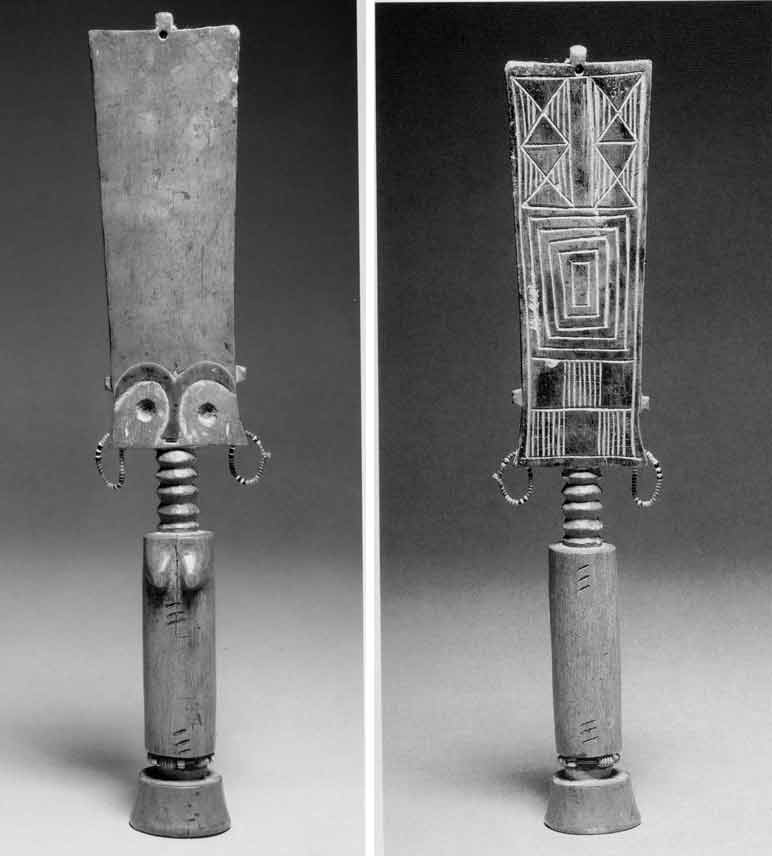
Fig. 1 & Fig. 2 Views of the Akuaba Doll in the Munich Museum Fünf Kontinente
Anonymous artist. Fante Fertility Figure. Early 20th century, Wood. 27,5 cm. Museum Fünf Kontinente. Presentation at Museum Fünf Kontinente.
© Museum Fünf Kontinente
Description
The doll in Munich's Museum Fünf Kontinente (Fig.1) comes from the Fante area. It shows a female figure. The very strongly abstracted forms and proportions symbolise various aspects:
The rectangular shape of the very flat head becomes - seen from the front - somewhat broader in an elegant curve towards the top. A strikingly high forehead, with eyes, eyebrows and nose only indicated, while mouth and ears are missing. The accentuated arch segments of the eyebrows flow together and then form the nose. On the back, the head has geometric patterns (Fig. 2). Added earrings of glass beads give the figure a colourful accent. For Kecskési (p. 38), their daintiness is a sign that the doll has been lovingly treated. At the very top there is another small moulding with a hole where hair was originally attached (compare Fig. 3a).
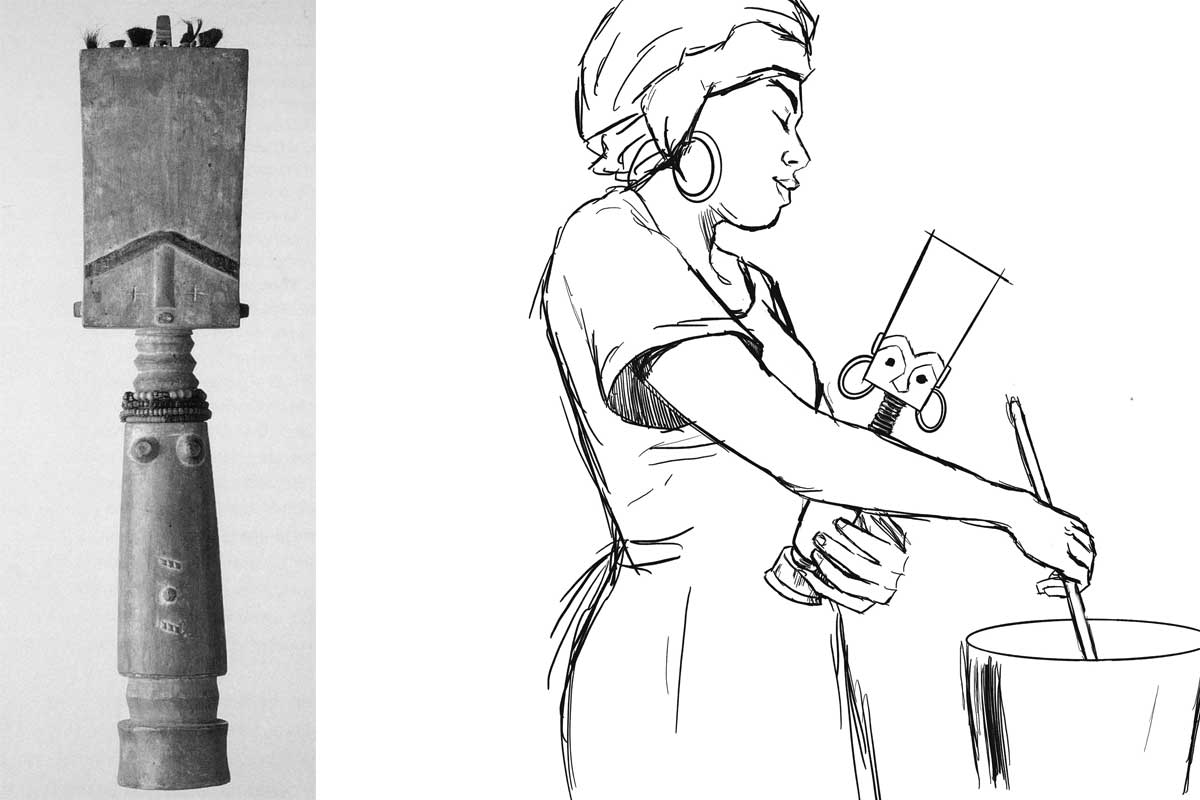
Fig. 3a: Akuaba Doll from the Linden Museum Stuttgart (Forkl p. 94). Fig. 3b: Use of the doll (drawing by Vanessa Rast - courtesy the artist)
The neck has five rings. It sits on a very slender, round trunk, which in turn stands on a delicate base. Striking are two groups of three diagonal embrasures each, which are repeated on the back. The figure has no arms, the legs are short stumps. The protruding forms in the chest area mark the figure as female. Its strict symmetry is softened by small deviations. One can well imagine taking the cylindrical figure in one's hand.
Material and technique
A ritual specialist to whom a woman who wishes to have a child goes makes the decision about the choice of doll at the respective shrine. If no suitable figures are available there, he instructs the woman to order a new Akuaba Doll from the woodcarver. The craftsmen then visit the tree to obtain the wood and ask the tree's spirits for permission to do so (oral information from the Ghanaian colleagues 2022 in Bayreuth [Link]). The Akuaba Doll in the Munich Museum was carved from softwood. (There are also darker examples made of hardwood, for example among the Ashanti, also an Akan group, as the presentation in the Ghana National Museum in Accra shows - see Fig. 4.) In the example in Munich, eyebrows and nose are darker.

Fig. 4: Presentation of Akuaba Dolls at the Ghana National Museum in Accra (March 2023. Photo: the author)
Interpretation of the Munich figure within the original Ghanaian context
(1) Utility function: The figure is made for the family context. It is meant to lead to fertility, sometimes also to the beauty of a child. The size (height 28 cm), the pleasant material and the weight allow the figure to be carried and cared for like a baby. When an Akuaba Doll has fulfilled its task, it is often returned to the ritual specialist who accompanies the process.
The breasts indicate a female figure, which does not necessarily have to do with a corresponding desire for the sex of the child desired. Forkl (p. 94) assumes, however, that "women desire daughters, on the one hand as progenitors in a matrilineality oriented society, and on the other hand as support in household work." (There are also Akuaba figures with the characteristics of both sexes and probably male specimens; furthermore, breastfeeding examples and those who in turn carry other Akuaba Dolls.)
(2) Body shape: T The conspicuous and disproportionately large rectangular head symbolises the head as the seat of intellect and wisdom in local imagery. Akuaba figures among the Ashanti show round heads (see fig. 4), but they are also proportionally very large. High foreheads and flat faces correspond to the ideal of beauty. Luxuriant bulges on the necks tell that the figure is well-fed and thus refer to happiness and prosperity. There are Akuaba Dolls that show more feminine body shapes, wider hips, possibly emphasised by strings of pearls.
(3) The spiritual context: As Nkrumah writes in her contribution, an Akuaba figure serves as a dwelling place for a soul being, a being that is in a transitional area between the earthly and the spiritual world. Carrying and caring for it is a prerequisite for the entrance of such a soul being, which then sets out to appear on earth as a living being, i.e. to enter the family of the young woman through birth. A ritual specialist is involved in the selection, consecration and regulations for use. After a birth, the figure is returned to the ritual specialist.[1]
(4) The social and cultural context: The figure can also be seen as a sign of the traditional expectation for a woman to bring children into the world. In recent times, where traditional societal expectations of women collide with other worldviews, the ritual use of Akuaba Dolls obviously decreases .

Fig. 5: Souvenir shop at Accra Airport (March 2023. Photo: the author)
In the last decades, an interesting production for tourism has been established - apparently the dolls are seen as 'typical for Ghana'. However, these are not Akuaba Dolls in the traditional sense, but rather 'quotes'.
How can one relate Akuaba Dolls to European visual traditions and experiences?
As familiar as the image of an Akuaba figure may seem in Europe - as a 'typical' example of traditional African art - its traditional meaning is unknown in Europe. Nevertheless, it obviously seems to be attractive to tourists, e.g. as 'airport art' (see Fig. 5), perhaps because its shape somehow corresponds to the cliché idea of 'typically African', the size fits well into the suitcase, or the large head (by means of the Bambi effect) makes it appear 'cute'.
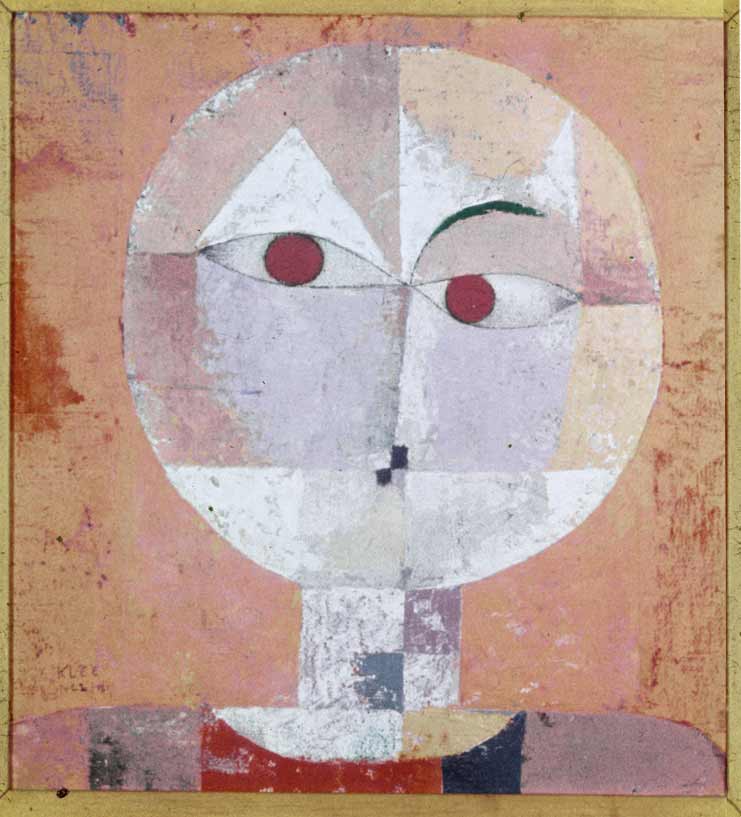
Fig. 6: Paul Klee. Senecio. 1922. Oil on chalk base on gauze on cardboard. 40.3 × 37.4 cm. Kunstmuseum Basel (Wiki Commons)
In the context of art history, the influence of Akuaba Dolls (and many other carved representations from West Africa) on European art of the early 20th century (see Fig. 6) is of interest. [2] The formal similarity to Klee's painting (fig. 6) is striking at first glance, but whether this is a direct reference must first be verified. In the context of art history, it would then be of interest in a next step which aesthetics were of interest to the artists at the time and which they blanked out, i.e. which "image of Africa" they wanted to have and also communicate.
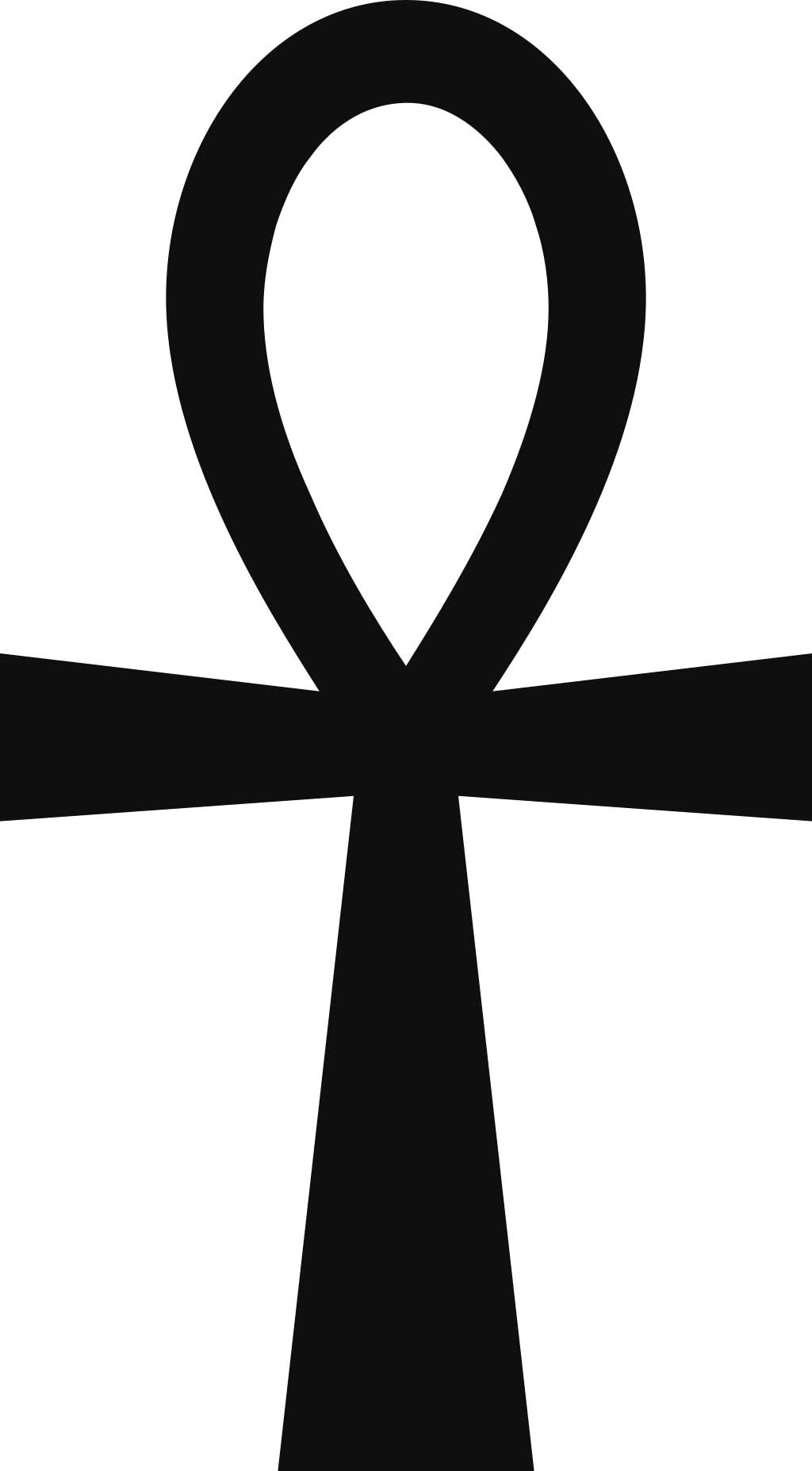
Fig. 7: Hieroglyph Anch
(Photo: https://anthrowiki.at/Anch)
The authors also considered whether the formal similarity of the Akuaba Dolls with the ancient Egyptian hieroglyph ‘Anch’ (the "loop of life" or the "key of life" - see Fig. 7) could have come about through a historical relationship between Egypt and Ghana. This would also correspond to the accentuation of content in Nkrumah's text with regard to the "representation of the woman as the giver of life" (see her chapter). Nevertheless, this association would also have to be examined more closely. To assume a universal archetype in the sense of C. G. Jung appears to be pedagogically misleading in its levelling effect.
In the German educational context, on the other hand, it seems important to link the figure - beyond clarifying its function - to Akua's story and thus include the role of narratives. This prevents another comparison that is also too quick and reductive when it comes to social practices (and not the isolated object), as dolls are also cared for and nurtured in traditional European contexts, but mostly by young children before puberty. So, in Europe, it does not belong to a fertility ritual, even if the child puts itself in the role of a ‘little mother’ or ‘little father’. (Another interesting question, whether Ghanaian women also go to a doctor when they are not pregnant, and whether there are comparable ritualised practices in Central Europe - for example among alternative practitioners or in esoteric circles - would have to be addressed in interdisciplinary approaches.)
Such comparisons appear to be useful, as they can show both similarities and differences, with the aim of better recognising one's own perceptual conventions or stereotypes and thus putting them into perspective. All this still leaves the question of the status of this doll in Munich when it is displayed in a showcase in a European museum (see Lab entry: What is an object? Link). Such a presentation contradicts its ritual and spiritual use. An Akuaba is then no longer an Akuaba. But what is it then?
Sources
This text is based on:
- Contribution by Gertrude Nkrumah: https://explore-vc.org/en/objects/the-akuaba-doll.html
- Talks with the Ghanaian EVC partners in Bayreuth in 2022: https://explore-vc.org/en/activities/archive/april-22-25-2022-joint-workshop-uew-team-and-isb-team.html
- The presentation at the National Museum in Accra, seen in March 2023: Fig. 4.
- Reading: see list of references
References
- Akyeampong, E & Obeng, P. (1995). Spirituality, Gender, and Power in Asante History. The International Journal of African Historical Studies. 28, 3. pp 481-508
- Anderson, Elizabeth L. (1989): The Levels of Meaning of an Ashanti Akua'ba. In: Michigan Academican. 21 205-219
- Annor, I., Dickson, A & Dzidzornu, A. G. (2011): General Knowledge in Art. Accra (Aki-Ola Publications)
- Forkl H. (1997): Healing and body art in Africa. Stuttgart (Lindenmuseum)
- Kecskési, M. (1999): Kunst aus Afrika - Museum für Völkerkunde München. Munich (Prestel)
Footnotes
[1] The number of five neck bulges here (there are also specimens with 3, 8 or 9 bulges) may also be a reference to the sacred number of "Odumankoma", the Akan creator deity, in this context.
[2] On the relationship of the European avant-garde to the aesthetics of West African carvings, see also the discussion of the Blue Rider post on this website (link 1 and 2).
 Christin Winter
Christin WinterMy Encounter with Black Feminism and Womanhood Inspired by the Akuaba Doll
I first came in contact with the Akuaba Doll while reading Bernardine Evaristo’s award winning book Girl, Woman, Other. In the book, the character Nazinga was described as “at least six foot tall with ornamented dreadlocks, large wooden Akuaba fertility doll earrings, red trousers, a cream embroidered caftan and strappy Roman sandals“ (Evarsito 2020, p. 81). I searched for Akuaba fertility doll earrings on the internet, but did not delve further into the topic at this time. A few weeks later, attending a seminar with Dr. Wagner at Friedrich-Alexander University in Erlangen, I stumbled upon the Akuaba Doll again. I knew, I had to take this opportunity to get to know her better. The comment from Gertrude Nkrumah is to be considered my first source of information about the history of origin and the tradition into which the Akuaba Doll is woven.
Through Nkrumah's feminist perspective on the Akuaba Doll, I wanted to dive deeper into the topic of Black Feminism to extend my knowledge in feminist theory. With the Akuaba Doll as my point of departure, I decided to focus on the ability to bear children and the social significance of abortions for Black women.[1]
At this point I move past the Akuaba Doll and her cultural context. Other works of art could have led me to a similar path. I have chosen to look at the Akuaba Doll with categories, which are not directly related to the Akuaba Doll and her cultural context as I questioned whether I have the right to write about the Akuaba Doll considering the colonial past of my own country, Germany. I am a white, European woman, a feminist, who is aware of intersectionality and racist structures within the society I have been socialised in and its way of thinking, but with no cultural connection to the Akuaba Doll other than the colonial impact on African art and culture (cf. Kushinator, Rahman and Dompreh, 2020[2]). Therefore, I chose a topic to which I have access via my role as a student of pedagogy and focus on Black Feminism and Womanhood of Black women living in white-dominated countries.
In white-dominated societies, Black women were excluded from a feminist movement for decades (cf. hooks, p. 216f.). White women systematically utilised the racist hierarchy within women to gain power and thereby forced a specific Black feminist movement to form and uncover the oppression Black women had and still have to face. The prefix “Black” emphases the specific oppression Black women face in white-dominated countries, although, of course, there has been feminist movements in Black-dominated countries before (cf. Roig quoted from Berlin Biennale 2022, 48:00 – 49:50).
In American history, Black women have always had to fight to be seen as women. As bell hooks gets to the heart of it: “the black female was a creature unworthy of the title woman; she was mere chattel, a thing, an animal” (hooks 2015, p. 214). Sojourner Truth[3] had to bare her breasts to prove that she was a woman indeed. Being yelled at “I don’t believe you really are a woman” by a white man represents the contempt and disrespect for Black womanhood (cf. hooks 2015, p. 214). In her famous speech “Ain’ I a Woman” (1851), she argues, that she – as her white women audience too – is indeed a woman. Here she argues with characteristics, that can also be found in the Akuaba Doll. The most important argument is the carrying and bearing of children and the “mother’s grief” (Truth 1851 quoted from hooks 2015, p. 215) she cried out, when her children were sold into slavery.
The ability to bear children has always played an important role in the history of womanhood and was – and still is – utilised to oppress and exploit Black women. In times of slavery, Black women were forced to procreate and bear children, who were worth a lot of money in a perfidious system of human trafficking (cf. Federici 2020, p. 23f.). In the late 20th century, Black men in the U.S. reasserted what they called their “rightful positions as patriarchs” (Taylor 2022) and denounced birth control and abortions as genocide that compromised the future and freedom of Black families by limiting the Black population (cf. Federici, p. 25f.). With the overturn of Roe v. Wade[4] – Black women are specifically affected, as Kwajelyn Jackson, Executive Director of the Feminist Women’s Health Center in Atlanta, Georgia puts it into a nutshell: "Abortion bans are inherently racist because they do not consider the lived experiences of Black people and other communities of colour. Many state policymakers would rather criminalize and endanger Black birthing people than supply them with all of the resources they actually need" (Jackson quoted from Long 2022). Even before the abortion laws were restricted, Black (and other BIPoc) women in the U.S were two to three times more likely to die from pregnancy-related causes than white women (cf. CDC 2019). Being allowed to decide whether you want children or not and furthermore, having access to certain facilities to end a pregnancy or not is still a bound to privileges. It is not only tied to the health care system, but also to cultural beliefs and practices, to the financial and educational background, as well as to class, race and many other factors.
In a world imprinted by patriarchy and privilege, it is important to unravel power structures that dominate our world, uncover where they come from and how different groups are affected differently. As patriarchal patterns of thought are inscribed in nearly all societies of our world, it is a tough task to uncover them in every aspect of our lives and hence require lifelong learning and feminist thought. Nevertheless, it is indispensable in order to build an anti-racist gender-equal society in which every woman can decide herself, if she wants to get children without fearing financial or social consequences.
In this context the Akuaba Doll can be interpreted as an early moment of feminism, where women disrupt the patriarchal system that marginalizes them. As Nkrumah states, by deciding about the gender of her child in a binary system, she chose to bear a girl rather than a boy, which – in the matrilineal line – effects the lineage, inheritance, and chieftaincy succession (cf. Nkrumah 2020). In my eyes, Akua used the power she had to influence her life to her advantage. Yet the worth of women was still tied to her sexual and reproductive abilities, but nevertheless she made a first step by empowering women to stand up for themselves and for their own lives.
References
Berlin Biennale (2022). Panel: Afrofeminism. Bridging the Gap. <https://12.berlinbiennale.de/media/panel-afrofeminisms-bridging-the-gap/> (09/30/2022).
Center for Reproductive Rights (2022). The World’s Abortion Laws. <https://reproductiverights.org/maps/worlds-abortion-laws/> (09/30/2022)
Evaristo, B. (2020). Girl, Woman, Other. UK: Penguin Books.
Federici, S. (2020). Jenseits unserer Haut. Körper als umkämpfter Ort im Kapitalismus. Münster: Unrast.
hooks, b. (2015). Ain’t I a Woman. Black Women and Feminism. New York: Routledge.
Kushiator, G., Rahman, A. and Dompreh, H.-O. (2020). The Influence of Western Culture on Traditional Art Forms and Cultural Practices: ‘Akuaba’ doll among Akan Women in Africa. ADRRI Journal of Arts and Social Sciences, Ghana: Vol. 17, No.6 (5), S.59 – 71.<https://www.researchgate.net/publication/344438737_The_Influence_of_Western_Culture_on_Traditional_Art_Forms_and_Cultural_Practices_%27Akuaba%27_Doll_Among_Akan_Women_in_Africa> (09/30/2022).
Long, S. (2022). Abortion Bans pose a Danger to all Mothers. For Black Women, they’re especially damaging. <https://www.refinery29.com/en-us/2020/10/10015405/abortion-ban-racism-black-women-effects> (09/30/2022).
Nkrumah, G. (2021). Inversion of Hegemony with Ideas of Feminity. <https://www.explore-vc.org/en/objects/the-akuaba-doll.html> (09/30/2022).
Taylor, K.-Y. (2022). How Black Feminists defined Abortion Rights. <https://www.newyorker.com/news/essay/how-black-feminists-defined-abortion-rights> (09/30/2022).
Footnotes
[1] In this context, I will delve into the topic of reproductive abilities and use the term "woman" throughout my text. However, I want to clarify that the ability to bear children is not a defining characteristic of womanhood. Not all women have a uterus, and not all women are able to bear children. Furthermore, one's physical appearance is not a determining factor of one's gender identity. Despite this, the reproductive ability is instrumentalised in our society and can lead to harmful stereotypes, which many women are confronted with at some point in their lives.
[2] In addition to exploring the different forms and cultural backgrounds of Akuaba Dolls, this article delves into the ways in which culture, religion, and artistic expression are intertwined in African cultures. The article points out how the colonization by white, western, and Christian men and women caused a change in function and values of the Akuaba Doll.
[3] Sojourner Truth lived from 1797 to 1883. She was an American abolitionist of New York Dutch heritage and a women’s rights activist. She was born into slavery, but escaped to freedom in 1826. In 1851 she joined George Thompson, an abolitionist and speaker, on a lecture tour through central and western New York State. At the Ohio Women’s Rights Convention in Akron, Ohio, she gave her speech with later became famous as “Ain’t I a Woman?”
[4] Roe v. Wade is a legal case in which the U.S Supreme Court ruled that unduly restrictive state regulation of abortion is unconstitutional and that the Constitution of the United States generally protects a pregnant woman's liberty to choose to have an abortion. This decision from 1973 was overturned by the U.S. Supreme Court in 2022.
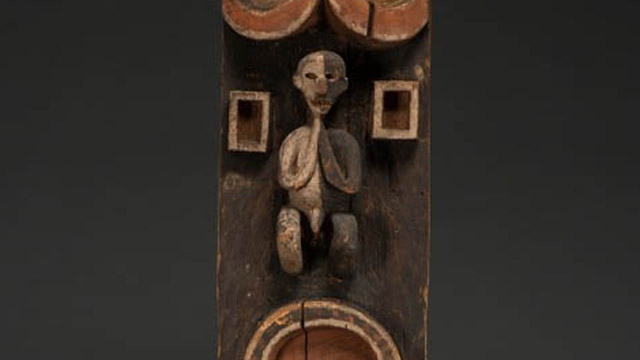
-
 Karin Guggeis
Karin GuggeisObjects from the Global South in early collections of the Global North often lack any information about their specific local context. This is also true for this wooden sculpture made from a single block of hard wood, carved with different figures and forms on two sides and painted with natural colours in red, white and black. It was acquired in 1893 by the “Royal Ethnographic Collection” (Königlich Ethnographische Sammlung) in Munich, today the Museum Fünf Kontinente. No specific information about its geographic origin, its producers, users or use was documented in the inventory book. “Huge four-edged block, 1.80 high made of heavy wood, double-sided carved with human figures and lizards, heavily damaged by termites” is the only information recorded. The wooden block was sent from “Cameroon” (Kamerun) which is therefore documented as its region of origin. It was given to the museum as a present by Max von Stetten, a colonial officer in the German colony.
The post gained a new layer of significance through its inclusion in the almanac “The Blue Rider” (Der Blaue Reiter), one of the most famous and important publications on art in the early 20th century in the Global North. The almanac was edited in 1912 by two artists based in the environs of Munich, Franz Marc and the Russian Wassily Kandinsky. They designed the publication as a starting point for a new epoch of art, rejecting academic art and encouraging new forms of artistic expression. Thus, Kandinsky and Marc included reproductions of different non-canonical art forms, such as artworks from the Middle Ages, folk art, art made by children – and non-Western artworks, in those days called “art of the primitives” (Kunst der Primitiven), among them this sculpted block from Cameroon. In this way, the editors of the almanac aimed to break down the hierarchies between art forms from different times, regions and levels of professional skill, and to expand the canon of art in the Global North.
The editors’ fascination with non-European art had different roots: Wassily Kandinsky was a trained ethnographer and often visited ethnographic museums. Franz Marc, since his visit to the ethnographic museum in Berlin in 1911, especially admired sculptures from Cameroon. Thus Marc included a photograph of this wooden block to illustrate August Macke’s article “The Masks” (Die Masken). Marc captioned the picture simply “Cameroon” (Kamerun), its known geographic origin, and the country whose sculptures he admired.

Fig 1: Almanac "Der Blauer Reiter" (page 58-59)
In his article, the artist Macke stressed that for Africans their “idols” (Idole), as he called their sculptures, were a “visible expression of an invisible idea”, “a personification of an abstract term”. He also stressed the equality of the art forms from different times and regions. For example, Macke valued bronze works from the kingdom of Benin, in what is today Nigeria, and other ethnographic works, because they are just as expressive as a grave marker in the cathedral at Frankfurt. To demonstrate this non-hierarchical attitude to art from different regions and times, Marc and Kandinsky placed two photographs side by side on a double page in the almanac – on one side the Gothic figure of a knight, and on the other a bronze plaque showing a soldier from the kingdom of Benin, which also was in the collection of the Munich ethnological museum by then (Fig 1).
The later fame of the almanac, and of its publishers Kandinsky and Marc as artists, led to the wooden sculpture being named “The Blue Rider Post” in the narrative of the museum.
It is significant for global art history dominated by the Global North that, in contrast to our broad knowledge in respect of the European admirers of this object, very little is known about its original local context in the Global South. The state of our knowledge concerning its producer(s), its patron(s), its use, its specific place of origin, the meaning of special forms, colours, figures or gestures sculptured is poor. There are two reasons for this. First, in the Global North, there has been little interest in investigating its local context. Second, it is actually very difficult to carry out such investigations in respect of such badly documented early works in ethnological museums. To unfold these difficulties: the common method used to trace the local context of poorly recorded works is to look for stylistic similarities and ethnological background information concerning comparable objects in other collections or publications. Spending long periods doing fieldwork in the place of origin is too time- and money-consuming, as there are numerous badly recorded objects, especially in the early ethnological collections. Moreover, in the Forest region of East Cameroon, the assumed place of origin, there are numerous small ethnic communities which have been inadequately studied. Thus the poor results of previous research in the Global North are the following: The sculpted post is valued as unique in ethnological and art publications. Only single figures and their gestures show similarities with a few other objects in collections of the Global North. The current suggested origin of this carved work in view of these stylistic similarities is among the Lundu or Mbo people in the Forest region in East Cameroon. There it was probably used in a cult.
A new approach has been made possible by a provenance research project of the Museum Fünf Kontinente, funded by the German Lost Art Foundation and the Bavarian State Ministry for Science and Art. In collaboration with scholars from Cameroun and the presumed source communities, members of the project are exploring the provenance and the local context of this special Cameroonian wooden block, as well as the whole collection from the German colony of Cameroon donated by Max von Stetten to the museum between 1893 and 1896. Hopefully the blank sheet regarding the original context of this wooden block will be filled.
For comparison, also read Patrique deGraft-Yankson's analysis of this object here.
The post in the context of the the repatriation discourse: Link
References
- Eisenhofer, Stefan (2009): Kulthauspfosten (?). In: Bujok, Elke (ed.): Der Blaue Reiter und das Münchner Völkerkundemuseums. Staatliches Museum für Völkerkunde München, Hirmer, München. S. 16-18
- Erling, Katharina (2000): Der Almanach Der Blaue Reiter. In: Hopfengart, Christine (ed.): Der Blaue Reiter. Bremen, Köln. S. 188-240.
- Kecskési, Maria (1999): Skulptierter Holzblock. In: Kecskési, Maria (Hg.): Kunst aus Afrika. Museum für Völkerkunde München. Prestel, Munich, London, New York. S. 116.
- Kecskési, Maria (1982): Zwei beschnitzte Holzblöcke. In: Kecskési, Maria (ed.): Kunst aus dem Alten Afrika. Pinguin, Innsbruck. S. 238-239, 72.
- Macke, August (1912): Die Masken. In: Kandinsky, Wassily/ Marc, Franz: Der Blaue Reiter. Piper, Munich. S. S. 53-59.
- Marc, Franz and Kandinsky, Wassily (eds) (1912): Der Blaue Reiter. Piper. Munich.
published March 2020
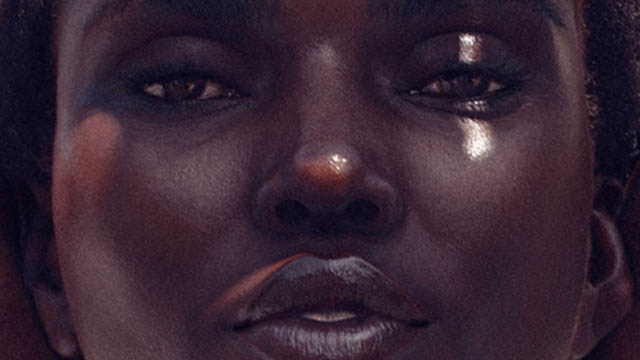
-
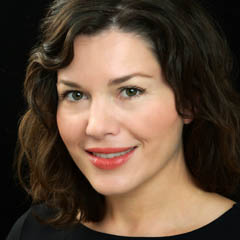 Hanni Geiger
Hanni GeigerShudu (2020), a dark-skinned mannequin based on Instagram and other social networks, is a CGI – a 3D computer graphic that, according to its creator Cameron-James Wilson (founder and CEO of the digital modelling agency THE DIIGITALS, https://www.thediigitals.com/), is considered the world's first digital supermodel. With currently more than 218,000 followers (@shudu.gram), she is one of the most booked models and has collaborations with major fashion companies such as Oscar de la Renta or the superstars Tyra Banks and Rihanna (Square, 2018). Yet the genesis of the mannequin and virtual influencer is anything but glamorous: after years as a photographer in the London fashion industry, Wilson retreats to his mother's garden shed in Weymouth, Dorset, and experiments with various design programs on a very cheap gaming computer (Jackson, 2018). In designing Shudu, he was primarily driven by a desire to work freely and “[…] focus on the art rather than the money” (Jackson, 2018). Shudu was intended to be a product of pure creativity, regardless of her later successful integration into the fashion industry (Jackson, 2018).
It takes a closer look to detect the artificiality from the model. Thanks to various digital image editing programs such as Marvelous Designer, CLO and Daz 3D, Wilson deliberately adds small flawed constructions to his very naturalistic-looking mannequin (Jackson, 2018; Square, 2018): scars, hairs, wrinkles and pores provide more liveliness, and thus also more “truthfulness”, if one were to argue in the Benjaminian sense with the aura of the unique or authentic. Basically, this is a completely contrary approach to high-end fashion photography, which classically aims to remove any physical imperfections from the human models until they mutate into doll-like, enraptured beings. This already shows through the external observation of the virtual model that „authenticity“ in the context of digital media and the outdated understanding of reality as distinct from virtuality must be rethought and oppositions in the technical, but also especially in the philosophical-social sense must be questioned.
In order to get closer to this „reality“ or the societal significance of the digital model, it is imperative to look at the controversial debates surrounding the black mannequin. As a white man, Wilson has more often had to face accusations of commercializing black culture, which is legal but equally questionable (Square, 2018). Under the rubric of “cultural appropriation”, “racial expropriation”, “racial capitalism” (Cedric J. Robinson) or “racist plagiarism” (Minh Ha T. Pham), the economic and social exploitation of inferior, marginalized cultures by the dominant white culture is understood as a neo-colonial approach, especially in the broad sector of industry. In this process, social as well as economic value is drawn from an ethnic identity, even generating a “commodity” from it, without thinking about the painful or unpleasant part or even giving minorities a share of the profits. Wilson's implementation of diversity and responsibility in the design process could, according to critics, be read as a clever marketing strategy – after all, “exoticized” phenotypes with very dark skin, high cheekbones and slender, tall stature are currently in vogue (Square, 2018). Particularly problematic in Shudu's design process appears Wilson's inspiration in the “Princess of South Africa Barbie doll”, a special edition Barbie launched in 2002 as one of the “Dolls of the World” collection (Khoabane, 2018). The digital avatar is said to have a similar origin and motivation: born out of the imagination of white companies and creatives to generate commercial success without knowing, considering or including the reality of people of color in the creation and sales process (Square, 2018).
For a holistic understanding of the figure, however, it is also important to analyze it beyond stereotypical argumentation and against the backdrop of its time, its creators and its consumers. As Generation Z and digital natives, the creators and users of virtual influencers are inevitably shaped by the technological changes of everyday life. Their thoughts and actions are primarily derived from the fascination with digital design, which increasingly merges the real and the virtual and makes physically, socially and culturally significant differentiations recede into the background. Wilson seems to use the technical qualities of the digital image, such as its mutability and ubiquity, to draw a picture of a decidedly plural, heterogeneous society in a sustainable way that is independent of time and place. Unlike the dys- and utopian visions of the future of human beings in classical fashion photography or in numerous digital drafts of human beings in art, the figure that exists only virtually seems to be the digital embodiment of a thoroughly real and, above all, present world of life characterized by diversity. With her obvious distancing from the white, male and Western-dominated political and economic mainstream, Shudu offers a template for breaking with the universalism of imperially knitted modernism via strategies of so-called inclusive marketing, which consciously considers diversity in the design process1.
The fact that the digital visualization of a virtual body that stands for diversity, such as Shudu’s, is particularly suitable for creating meanings around the human body, goes back to the postmodern discourse on the epistemology of the body and the knowledge attached to it. As Jay David Bolter recognized in the early 1990s, we as human beings know something by virtue of our bodily and social situations and not through a process of abstract and disinterested thought (Bolter, 1996, 85). Time, place and context thus determine the so-called specific “situated knowledge”, which can never be universal (Haraway, 1988). While in the 1990s transhumanist, biotechnological processes such as genetic engineering and cloning changed the body, in the (post-)digital age a new attention to the physical is evident, which is shifted to the realm of digital image production (Kröner, 2019, 72–73). What becomes evident is that despite the temporary disappearance of the human body through its dissolution into data and bits, it returns on screen in an altered and far more flexible form than the carnal. Posthumanism, following on from the tendencies of postmodernism, then makes use of digital image genesis and manipulation to base the epistemology of the body and its situatedness on the complete rejection of humanism as a Western-determined anthropocentric unity and superiority. These aspects could be relevant precisely to the reading of Shudu. The hierarchical scaling of people according to gender, ethnicity, class, sexual orientation, ability or age, which is characteristic of humanism, is to be fundamentally abandoned with the rejection of the onto-epistemological superiority of the human species (Ferrando, 2008, 438–439). Human interconnection, the symbiotic relationship with the non-human (Haraway, 2008; Wolfe, 2010) and the recognition of so-called “more-than-human geographies”2 are at the forefront of these conceptions of the body (Ferrando, 2008, 438–439). Beyond bias, dualisms and hierarchies, a (re)figuration of the human beyond the human that recognizes nature as well as technology in unity with the human (Haraway, 1985/2016) manifests itself in Shudu as a visual representation of Donna Haraway's cyborg figure. Thus, it seems that it is precisely thanks to the digital-technological “liquidity“ of bodies, techniques and media that Haraway's vision has been fulfilled: with the help of their transnational, hybrid nature, (digital) cyborgs develop subversive strategies of “writing” as a powerful form of political struggle against oppression (Haraway, 1988; Schmitz, 2016). Such “writing” (and thus also speaking) negates the dream of a common language and seemingly homogeneous identity (Haraway, 1988; Schmitz, 2016). In this respect, Shudu, as just such a (digital) cyborg, offers the template for multiple localization –against organic holism, unambiguous classification, and antagonistic dualisms (Schmitz, 2016).3
This then also includes the fact that virtual figures such as Shudu can be designed, consumed, exploited, criticized and thus also shaped on a global level in a socially, gender and culturally largely independent way4 – unlike the real, expensive Barbie dolls. With more images of underrepresented people in global circulation, habitual ways of seeing and thinking can be permanently changed, which could open up opportunities for marginalized groups, also from an economic perspective (Slay, 2018). With his collaborations with numerous representatives of the Black community as well as the Black staff team of hair stylists, make-up artists as well as also real Black models he stages for certain brands alongside Shudu (Square, 2018; Wilson 2021), Wilson intervenes in the working world and the economics of fashion. By consciously involving people of color in the design, styling, marketing, sales and profits of his company, his digital embodiments of elastic otherness impact the direction of a society that seeks to transcend Western-determined barriers – from a variety of perspectives and fields of action.
In this way, the initially small companies that originated in a decidedly plural society seem to be using both simple and advanced digital technologies to draw artificial images of a reality that has always been characterized by diversity and particularisms. The fact that the artificial figure (certainly also for marketing reasons and due to the entertainment industry) enters into a targeted interweaving with the analogue world through the staging with real people in real settings, increases its credibility and thus the social, economic and political influence of digital (human) images. Thus, these creators, who have long since outgrown their infancy and cooperate with big brands, seem to initiate a new “decentralization” of society as well as of the internet because of their politically underpinned messages about inclusion, heterogeneity and equal opportunities – and regardless of their possibly commercially colored motivation. If the dissolution of boundaries between the real and the virtual, nature and the artificial, the human and the non-human (Barron, 2003), and consequently also between art and commerce, responsibility and economy, truth and lies, majority and minority, genres, techniques and media no longer seem socially or scientifically relevant, the question of categorizing people according to skin color or ethnicity will no longer have to arise.
At this point, however, AI should also be taken into account as another possibility of digital “humanization”, which, in contrast to the purely external formation already described, concerns an “inner”, algorithmically controlled shaping of the “human-machine”. The juxtaposition of both types of artificial human creation becomes relevant in the question of the generation of “truth”, which algorithmically controlled AI – unlike the digital images and animations of social diversity mentioned above – in no way answers with the claim to represent the social cross-section. As a neural network, AI processes data such as words and images statically, it calculates the probabilities and says what the majority says and thinks (Simanowski, 2021). However, if the production of AI-generated “human images” is mainly based on large, Western-managed companies and the knowledge infiltrated into the machine is fed from data sets of a white, male majority belonging to the global North – without being externally curated or supervised – every minority and individuality is silenced (Simanowski, 2021): data inclusion on the one hand thus means the exclusion of diverse social structures on the other. This would, as it were, preprogram the return of the “gatekeepers” whose disempowerment through the internet was previously welcomed so enthusiastically (Simanowski, 2021). In this case, it becomes clear that technological progress does not necessarily go hand in hand with social progress (Simanowski, 2021).
Finally, it should be noted that the technologically induced change in the production and perception of the digital (human) image challenges us to critically rethink traditional systems of order. The interweaving with digital technologies seems to make the physical body and its interior comprehensible as an open system intertwined with its environment, whereby entrenched biases and dualisms could be invalidated and a multi-perspective view of society, politics and the economy could unfold. Whether this change in perspective can lead to a more open, even tolerant society in the long term will become clear in connection with further steps in the development and the future horizon of impact of the digital image in art, society, politics and science.
Footnotes
1) Inclusive marketing aims to create a sense of community through “authentic” cultural values inherent in the customer base. In doing so, the personal perspective of the designers, including their prejudices, should be excluded and a design for the whole of society that is as broadly conceived as possible should be created (Saputo, 2019; Maier 2021).
2) The term goes back to the findings of new cultural geography, which is based on theories of human geography. The aim of its research is to question the contemporary relationship of people to the living beings and things in their environment. Among other things, this involves the correlation between the human and the non-human, nature and culture, people and technologies. See most recently the events at the University of Bern on “More-than-human geographies”: https://www.geography.unibe.ch/forschung/sozial__und_kulturgeographie/lehre/seminar_mehr_als_menschliche_geographien/index_ger.html.
3) Against the backdrop of Haraway's theories, this multiplicity of localizations could then be conceived with the complete abandonment of the concept of identity, if relations were created based on choice in conscious coalitions and political kinship via so-called “affinities”. See Haraway 1988; Schmitz, 2016.
4) It is important to remember that although digital images circulate worldwide, they are not equally accessible to everyone in the context of divergent cultures, political, religious and sexual restrictions. Participation in a digital “global culture” is therefore always accompanied by exclusions, interruptions and detours.
References
- Barron, Collin (2003). A strong distinction between humans and non-humans is no longer required for research purposes: A debate between Bruno Latour and Steve Fuller. History of the Human Sciences, 16(2), 77–99.
- Bolter, Jay David (1996). Virtuelle Realität und die Epistemologie des Körpers. Kunstforum International. Die Zukunft des Körpers I, 132(November–January), 85–89.
- Ferrando, Francesca (2018). Transhumanism/Posthumanism. Posthuman Glossary, edited by Rosi Braidotti & Maria Hlavajova, Bloomsbury Academic, 438–439.
- Haraway, Donna J. & Wolfe, Cary (2016). A Cyborg Manifesto. Science, Technology, and Socialist-Feminism in The Late Twentieth Century (1985). Manifestly Haraway (3–90). University of Minnesota Press, http://www.jstor.org/stable/10.5749/j.ctt1b7x5f6.
- Haraway, Donna J. (1988). Situated Knowledges: The Science Question in Feminism and the Privilege of Partial Perspective. Feminist Studies, 14(3), 575–599.
- Harraway, Donna J. (2008). When Species Meet. Posthumanities, Volume 3, edited by Cary Wolfe, University of Minnesota Press.
- Jackson, Lauren Michelle (2018, May 4). Shudu Gram Is a White Man’s Digital Projection of Real-Life Black Womanhood. The New Yorker. https://www.newyorker.com/culture/culture-desk/shudu-gram-is-a-white-mans-digital-projection-of-real-life-black-womanhood.
- Khoabane, Rea (2018, May 20). Meet Shudu: the world’s first digital black supermodel. Sunday Times. https://www.timeslive.co.za/sunday-times/lifestyle/2018-05-19-mock-princess-meet-shudu-the-digital-supermodel-turning-heads/.
- Kröner, Magdalena (2019). Liquid Bodies. Ein subjektiver Überblick. Kunstforum International. Digital. Virtuell. Posthuman? Neue Körper in der Kunst 265(January–February), 72–115.
- Maier, Birgit (2021, February 5). Du bist nicht alle – warum inklusives Design uns all angeht und wie es gelingen kann. OnlineMarketing.de. https://onlinemarketing.de/marketing-tools/inklusives-design-geht-alle-an-wie-es-gelingt.
- Saputo, Sandy (2019, June). How Rihanna’s Fenty Beauty delivered „Beauty for All” – and a wake-up call to the industry. Think with Google. https://www.thinkwithgoogle.com/future-of-marketing/management-and-culture/diversity-and-inclusion/-fenty-beauty-inclusive-advertising/.
- Schmitz, Sigrid (2016, July 12). Cyborgs, situiertes Wissen und das Chthulucene. Donna Haraway und dreißig Jahre politischer (Natur-)wissenschaft. Soziopolis. https://www.soziopolis.de/cyborgs-situiertes-wissen-und-das-chthulucene.html.
- Simanowski, Roberto (2021, April 28). Identitätspolitik und künstliche Intelligenz. Es droht eine Tyrannei der Mehrheit (audio article). Deutschlandfunk Kultur. Politisches Feuilleton, ARD-Audiothek. https://podcast-mp3.dradio.de/podcast/2021/04/28/kuenstliche_intelligenz_identitaetspolitik_und_die_drk_20210428_0720_58851d76.mp3.
- Slay, Nick (2018, April 9). Twitter Reacts to Virtual Influencers: Is Shudu Art or Appropriation? The Source. https://thesource.com/2018/04/09/twitter-reacts-to-virtual-influencers-is-shudu-art-or-appropriation/.
- Square, Jonathan (2018, March 27). Is Instagram’s Newest Sensation Just Another Example of Cultural Appropriation? Fashionista. https://fashionista.com/2018/03/computer-generated-models-cultural-appropriation.
- THE DIIGITALS. Shudu.Gram. Instagram. https://www.instagram.com/shudu.gram/?hl=de.
- Wilson, Cameron-James (2021, April 30). How Digital Models are Changing the Face of Fashion. Lecture at the Online Conference „The Digital Image – Social Dimensions, Political Perspectives and Economic Constraints“, Ludwig Maximilian University of Munich, April 28–30, 2021.
- Wolfe, Carry (2010). What Is Posthumanism? University of Minnesota Press.

-
 Dong Xiaoling
Dong Xiaoling"Father” is a huge portrait created by Luo Zhongli (born 1948) in 1980. The picture shows an elderly man with dark skin and fine wrinkles on his face wearing a white headscarf. He is holding an old bowl containing tea in both hands. The old man’s fingers are rough, there is still dirt embedded in his nails and there is dirty gauze wrapped round his fingers. He has only one tooth left in his mouth. In the wrinkles on his forehead, on his brows and on the end of his nose there are glittering beads of sweat. This is the typical image of industrious peasants in China.
The importance of farmers was of great significance in China in the 20th century. Mao Zedong's assessment of issues concerning Chinese farmers commenced with the establishment of the People's Republic of China in 1949. Before the founding of the People's Republic of China, the peasants were liberated through a political revolution centered on the Agrarian Revolution; after the founding of the People's Republic, the common prosperity of farmers was achieved through the modernization of rural socialism. The role of the farmer changed from a participant in the revolution to a builder of modernization. Farmers were an important political foundation in the Mao Zedong era. Even today, there are still about 600 million farmers in China.
As a result, most of the works depicting farmers were created after 1949. Regarding the painting “Father”, the portrayal basically conforms to the definition of ordinary farmers. With the change of context during history, the visual interpretation of identity is very much influenced by the opinions of the post-modern.
Farmers are considered to be the people society relies on for a living – that is the reason why the artist named his work "Father". The model for this work was a farmer in the Daba Mountains in Sichuan province of China. The Cultural Revolution began in 1966. Mao Zedong advocated that young people from the cities should go to the countryside to receive re-education through hard labor. In 1968, Luo Zhongli, who was studying at the High School attached to the Sichuan Academy of Fine Arts, went to the Daba Mountains and stayed there for nearly 10 years. One Chinese New Year's Eve he saw an old man squatting outside a public toilet, guarding a pile of faeces as if he were guarding something of great value.[1] This image of a peasant bearing the burden of humiliation made a deep impression on the artist's mind. In 1980, when the artist was a student[2] at the Sichuan Academy of Fine Arts, he created his work “Father” by combining the image of Deng Kaixuan[3], an old man who was the artist’s landlord in the Daba Mountains , with the memory of the old man who had been guarding the pile of faeces. In 1981, Luo Zhongli was awarded the gold medal in the Second Chinese Youth Art Exhibition held in Beijing.
Controversy caused by "Father"
Today, the people viewing this large-size portrait may not be able to imagine what the people felt 40 years before when they stood in front of the large-size portrait “Father” for the first time. Those people experienced a visual shock and an impact to their values when they first saw this over 2-meter high portrait of a farmer. At that time, people were used to seeing the huge portraits of Mao Zedong or Marx only, and the monotonous idealized paintings of workers, farmers and soldiers.
During the Cultural Revolution, works of art were of the "revolutionary romanticism" style that is red, light, bright, tall, large, and full. A picture was required to contain brightness and sunshine as well as strong colors, especially red, and even shadows were not allowed to be painted in cool colors. The characteristics of such a picture is vividness and fine detail, and there are almost no traces of the brush. The themes of the works are mainly revolutionary idols and the history of the revolution. In this artistic style the happiness and prosperity of the country and the people are praised. This form of painting depicts a paradise full of sunshine and no pain, a utopian world of social optimism and revolutionary idealism. The depiction of Mao Zedong was always as an extremely tall well-built man in the center of the picture, in fact completely the image of a supernatural god. Mao Zedong was worshipped as an idol.
As an intellectual, Luo Zhongli had his own interpretation of this. "True and benevolent farmers and the like make me feel that there are people whose nature is unpolluted. The people are simple, honest, rustic. ‘Men of the earth’ with soil permanently under their fingernails. This kind of simple, down-to-earth nature often makes me feel ashamed".[4] The artist makes use of a huge portrait, a method traditionally used in nation leaders' portraits to express their sympathy, empathy and respect for ordinary farmers. At the same time, the artist tried to use painting to explain two kind of "truths", the moral truth and the artistic truth. This method is to use the truth of art to criticize the hypocrisy of morality. At the time this was however dangerous and controversial.
In fact, even for a long time after the smashing of the “Gang of Four” in October 1976, the “Mind Emancipation" had not really begun. At the Third Plenary Session of the Eleventh Central Committee of the Communist Party of China held in December 1978, the Communist Party of China clearly showed that the core of their work would be shifted from class struggle to the economic construction of modern socialism. However, at this time people's minds had still not been completely liberated from the shackles of the Cultural Revolution. Regarding the standard of artistic "authenticity", artistic creation at this time was still following the logic of the Cultural Revolution.
Shao Yangde (Chinese art theorist at this time) wrote an article in 1981 titled "Creation. Appreciate, comment, read "Father" and discuss with relevant reviewers"[5]. The article triggered a wide-ranging, long-lasting and intense academic debate on the field of Chinese art theory. Shao Yangde believed that "Father" showed the image of a farmer of the old society: numb, passive, sluggish. Therefore the painting gave the impression that farmers were submissive and pessimistic. He accused the artist of not injecting "noble revolutionary ideals" into "Father". "The image vilifies the peasant”. In fact, the living standards of Chinese farmers had nearly reached rock bottom during the Cultural Revolution while the political theorists were trying to convince the farmers that they were the masters of society and lived in paradise. This view also proved that between 1976 and 1980, many people in China were still living in utopian dreams and were unwilling to recognize reality. Luo Zhongli's "Father" shows a strong critical realism opposite to the rigid thinking at that time.
A dramatic irony is that before the work was sent to Beijing to join the Section 2 National Youth Art Exhibition, at the insistence of Li Shaoyanchairman of the Artists Association of Sichuan Province, Luo Zhongli replaced the cigarette that was originally behind the left ear of the farmer with a ballpoint pen (image below). In this way he showed that the man was an educated farmer with noble ideas in the new era. The artist's compromise was in the hope that his work would pass the intensive political investigation before a work of art was accepted, and thus been sent to Beijing. However, this modification shows the great irony of utopian fantasy.
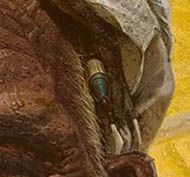
Luo Zhongli, 1980, detail © Luo Zhongli
When the works were successfully exhibited in the National Art Museum of China in Beijing in 1981, “Father”, the image of a farmer who endures the suffering and never complains, deeply moved hundreds of millions of people. The huge size and the hyperrealism of the picture were extremely fresh but tacit to those Chinese people who saw the work at the museum. Li Xianting, the editor of the official media "Fine Arts" magazine at that time, was also moved by the human compassion shown in the work. For this reason, in 1981 he used "Father" as the cover of the magazine. Only through the undisguised expression of reality can art find the truth it has lost.
Changes in social thinking after "Father"
In terms of artistic language itself, China originally had its own context of development and its own system of language. However, Chinese art since 1949 has been mainly influenced by the realistic art of the former Soviet Union, coupled with the Cultural Revolution’s censoring of the traditional Chinese context and the ban on Western contemporary art. Under the influence of this aesthetic inertia, representational realism has become the most acceptable visual narrative method for the public.
Luo Zhongli was inevitably influenced by the American photorealist Chuck Close at that time. However, instead of deliberately hiding traces of personality, emotion, and attitude to create a flat and indifferent picture as Chuck Close did, Zhongli added these feelings to his picture. "I feel that this form is most conducive to powerfully conveying all my feelings and thoughts. The arts of the East and the West have always absorbed and been influenced by each other. Forms, techniques, etc. are just the language that conveys my emotions and thoughts. If this particular language can say what I want to say, then I will learn from it.”[6] The artist seems to have used a more calm and objective approach, but made the most subjective elucidate of a farmer in the work "Father".
To the general public at that time in China, Chuck Close and modern art in Europe and America were unfamiliar and so far away. Even at the Sichuan Academy of Fine Arts, the school had bought a Japanese-published "Complete Works of the World" but it was locked in a cabinet. The students had to press their faces against the window, brush the condensation from their breath off the glass, and view the book as they would a cultural relic in a museum. Such a book would take 1-2 months to read and absorb –but only under such conditions it was possible to read about Western modern art.
For a period of time after this work, a group of artists who were contemporaries of Luo Zhongli returned to their innermost selves in pursuit of their own spirits and emotions. They became more willing to pay attention to people's daily life, and wanted to explore and express the beauty of human nature in ordinary life. The spiritual essence of their paintings was the continuation of the humanitarian sentiment.
It is precisely because of the success of “Father” that the artist was sent by the government to study at the Royal Academy of Fine Arts in Antwerp, Belgium at the end of 1983. He developed a comprehensive and deep understanding of European art and phenomena. Later, he held a personal exhibition at Harvard University in the United States, and thus gained a wide international reputation. Since then, his use of different techniques to express the language of painting has become more pioneering and expressive.
In addition to reflecting on and breaking through the constraints of the political dogma on art, Chinese artists are eager for artistic change. Art theorists have begun to introduce and translate a large number of works on the history of Western modern art, for example Herbert Read‘s: A Concise History of Modern Painting (1979), H. H. Arnason’s History of Western Modern Art (1986) and many more. In the 1980’s, influential art newspapers such as "Art" (reissued in 1976), "Art Translation Collection" (founded in1980), and "World Art" (founded in 1979) began to publish articles on a large number of Western modern art genres and artists. Faced with the influence of foreign culture as well as domestic social pressure to achieve modernization, the ruling party has adopted a more accepting attitude.
Precisely at that time, Western modern art and post-modern ideas came together and quickly merged in China. There is 1985 Art Trend[7] movement, the 89 Art Exhibition[8] etc. So far, Chinese modern art has entered the experimental stage on a large scale and has been continuously reconstructed.
However, what is significant is that the village in the Daba Mountains where the artist once lived has now lost its former prosperity. As villagers have started to go to work in cities across the country, the village has become very glum and mediocre, in sharp contrast to the prosperity of the cities. And those farmers who have moved to the city are also working hard to transform themselves into a part of the city. Farmers, who once held an important position in China's social structure, are now gradually being urbanized under the drive of the market economy, and are being marginalized in the city.
References
- Michael Sullivan, Art and artists of Twentieth-Century China, Shanghai, 2012
- Gao Minglu, Chinese Avant-Garde Art, Jiangsu Fine Arts Press, 1997
- LvPeng YiDan, The Art History of China Since 1979, Beijing, 2011
- WangYong, A History of Art Exchange between China and Abroad, Beijing, 2013
Footnotes
[1] During the Cultural Revolution, China's economy was extremely weak and faeces was the most important source of fertilizer in rural areas at that time.
[2] During the 1966-1976 Cultural Revolution, universities stopped accepting students, and the college entrance examination did not begin again until 1977. Luo Zhongli was admitted to the Sichuan Academy of Fine Arts in 1977.
[3] Deng Kaixuan was a farmer in the Daba Mountains. Luo Zhongli lived in the farmer’s home when he was in the Daba Mountains. Deng Kaixuan was also the model for the painting "Father". He has passed away now.
[4] Gao Minglu, Chinese Avant-Garde Art , ( Jiangsu Fine Arts Press,1997)P70
[5] “Fine Arts" Magazine, (Beijing,1981)Issue 9, P57
[6] "Fine Arts" Magazine, (Beijing,1981)Issue 2, Page 4
[7] The 85 Art Trend refers to an art movement towards modernism that emerged in mainland China in the mid-1980ies. The young artists at that time were dissatisfied with the line of leaning to the left of the art world at the time, and with the Soviet socialist realism art stereotypes as well as some values in traditional culture. They tried to find new blood from Western modern art, which triggered a nationwide art trend.
[8] 89 Art Exhibition, "Chinese Modern Art Exhibition" held at the National Art Museum of China in Beijing in February 1989. This is the first exhibition of concentrated Chinese avant-garde art including performance art and installation art. The artist Xiao Lu shot her installation "Dialogue" and the exhibition was forced to terminate. The shooting incident of "Dialogue" has therefore become a symbol of the 89 Art Exhibition and has an important position in the history of modern Chinese art.
published September 2020

-
 Esther Kibuka-Sebitosi
Esther Kibuka-SebitosiThe discovery of gold in South Africa in the mid 19 thcentury brought about a gold rush. In particular, the discovery of gold at the Langlaagte farm in 1886 attracted fortune seekers from all over the world. With the main gold deposits far below the surface, the need for mining engineering skills increased and resulted into the growth and development of the Johannesburg City Witwatersrand gold reef. Soon mining companies like Hermann Eckstein, Cecil Rhodes and Charles Rudd Gold Fields were established, resulting into mining shares as the trade with precious metal escalated. The traders from various corporations expanded their businesses. The mines however, were labelled as “dangerous” and proved risky for the mainly black miners. This prompted the recruitment of the Chinese to work in the mines in the early 1900s. The struggle of black miners continued over the years, as well as the forced displacement from their land, resulting into the emergence of townships such as Soweto. The disappropriation of their land left the people devastated and the land degraded.
The image shows what is left behind - barren land; land that was degraded after the mining. Sometimes the blessing of minerals can be turned into a “curse of resources” if not handled well. In the rest of Africa, Angola, for instance, the forceful banishment of native people from their land in order to make way for gold, copper, oil and gas exploitation has similar destructive consequences as in South Africa. Similarly, Ghana has had its share of the mineral deposits that have led to expropriations and displacements of landowners and farmers. All these challenges that Africa is facing today need urgent solutions.
Land is the mother of nature. In order to create true sustainable wealth, we need land. Arable land is crucial for food production and safe living. In the 21st century, human development, technology development, industrialisation and urbanization have changed the land use.
Land use conflicts among large multinationals and local communities have increased in Africa. However, only few proper planning of peaceful co-existence is done. In September 2015, the UN member states agreed on a set of 17 Sustainable Development Goals (SDGs), which represent the global agenda for equitable, socially inclusive, and environmentally sustainable economic development until 2030. Mining companies have the potential to become leading partners in achieving the SDGs. Through their direct operations, mining companies can generate profits, employment, and economic growth in low-income countries. Through partnerships with government and civil society, mining companies can ensure that benefits of mining extend beyond the profit of the mine itself, so that the mining industry has a positive impact on the natural environment, climate change, and social capital.
Land use-related impacts and environmental impacts affecting human health and human rights continue to be important social aspects in the mining sector long after the discovery of gold in 1884. The benefits from the revenue are great and raise of employment is positive. However, the demographic changes and migration due to the presence of mines as well as the land use impacts are key challenges to sustainability. In evaluating the mining sector's contribution to society, the negative effects are often underscored. The economic values added in general are portrayed as the positive impacts leaving out the land degradation and resulting demographic dynamics. Consequently, the sector has been involved in controversies over the years.
Most of the arable land has been damaged and polluted especially due to mining. This in turn has resulted into food insecurity and lack of descent housing, among other challenges. The burning of coal as an energy source has resulted into massive increase of global warming. The destruction of arable land is serious. The effect of mineral exploitation on arable land is multifaceted ( Mancinia & Salab. (2018). It causes large areas to be left unproductive but also degradation of water supply. These factors lead to socio-economic structural issues in mining areas. Such areas with hidden cracks would inevitably lack future sustainable development. Without proper compensation for the withdrawal from the cultivated land, the sustainable development of mining areas becomes a complex issue that hovers for generations.
Sustainable development would require partnerships at all levels and sectors. This article is a call to the mining giants to act responsibly to compensate the landowners, put sustainable mining practices into place and give back the land. According to South Africa History Online (https://www.sahistory.org.za/article/land-labour-and-apartheid) land, labour and migrant systems created by the apartheid era continue to disadvantage black society. Firstly, the communities were broken up, families dismantled and people left in abject poverty. Secondly, the policies of the Land Act of 1913 followed by the Land Act of 1933, left little to be desired over land. Coupled with the Bantu education systems, black South Africans still struggle to acquire land.
The images portray the left behind in spirit, soul and body.
References
- Land, Labour and Apartheid. South African History online. Retrieved from https://www.sahistory.org.za/article/land-labour-and-apartheid
- Ka, J., Ayitey J. Za, Kuusaana E.D and Gavu E.Ka. ( 2015). Who is the rightful recipient of mining compensation for land use deprivation in Ghana? Kidido Resources Policy 43 (2015) 19–27
- Mancinia, L. & Serenella Salab, S. (2018). Social impact assessment in the mining sector: Review and comparison of indicators frameworks. Resources Policy 57 (2018) 98–111
- Yong-feng, L., Yuan-hua, L., Zhuan-ping, D. & Jie, C. (2009). Effect of coal resources development and compensation for damage to cultivated land in mining areas. Mining Science and Technology 19 (2009) 620–625.
published May 2020

-
 Osuanyi Quaicoo Essel
Osuanyi Quaicoo EsselThe seated human-like figure is centrally placed with the head occupying almost the centre of the entire composition while the hands rest gently on the laps. The head and the face of the human figure is rendered in planes and cubistic orientation, a style reminiscent in precolonial African wooden sculptures. Hands of the figure received similar cubistic treatment with less details as in realistic depiction. Interestingly, there is a deliberate subtle emphasis on the head size of the figure. In African sculptural renditions, the human head is considered as seat of wisdom and, therefore, presented bigger to defile the realistic canonic proportions and connote its Afrocentric symbolic essence. This concept of head re(presentation) is termed as African proportions (Amenuke et al, 1991).
To create a harmonious contrast of colour and shape, tints of yellow forms an arc-shaped design around the head. This treatment possibly suggests a halo effect characteristic of saintly figural paintings in Western art traditions. It also mimics a turbaned human figure. As an artist who hailed from a predominately Muslim community, this stylistic treatment, perhaps, pays tribute to his religious cultural background. The eyes are presented with dark brown rectangular dabs, with the forehead gently highlighted with bright yellows, a treatment that puts the human figure in a meditative mood and sanctimonious character. Though Uche Okeke presented the work in a portrait orientation, the skilful placement of the human figure, and the peculiar colouration of the head regions creates a triangular effect when imaginary diagonal lines are projected from the bottom corners of the composition to the halo-shaped found on the head. Similarly, the haloed effect on the head and the elongated pharaonic beard creates an imaginary inverted triangle resonating a visual excitement.
Symbolically, yellow depicts riches and royalty in African colour scheme. With this schematic colouration, Okeke gave a clue to the kingly characteristics of the human figure. The white looking garment of the figure also adds to the sanctimonious conjecture of the figure as in African colour symbolism. The artist’s use of luminous chromatic reflection of the tint of yellow and dark shades helped in achieving the sense of depth in the garment. Complementing the overall kingly posture of the human figure is its elongated pharaonic beard and bodily language as found in sculptures of ancient Egyptian kings.
Okeke skilfully deceived viewers of this composition into believing that it is symmetrical per its stylistic tendency, yet an intense observation reveals a psychedelic mutation of the placement of the fingers, padding of the background with tree-shaped figures in rich application of tints and shades of black, yellow and brown to create contrast of colours and shapes. Placement of the trees in colour variations and the sprouting of the branches forms a psychedelic cross and contribute to breaking monotony. The patchy effects of the intense yellow forming the negative spaces adds to creating a perceptual believability that the human figure wears a contemplative mood per the facial looks. There seem to be gentle highlights of the yellow from the shoulders to the halo-shaped object.
Per the compositional portrayal, Okeke showed a kingly and majestic posture of, perhaps, the Christian religious icon in Africanised bodily posture and cultural praxis. This compositional contextualisation feeds into his personal manifesto that he did not subscribe to borrowing Western artistic accent hook, line and sinker. Neither was he comfortable with resorting his Nigerian indigenous artistic traditions without modification. He emphasised in his manifesto that it is ‘… futile copying our old art heritages, for they stand for our old order. Culture lives by change. Today's social problems are different from yesterday's, and we shall be doing grave disservice to Africa and mankind by living in our fathers' achievements’ (Okeke, n.d). For that reason, he appropriated western artistic accents and fused them with Afrocentric artistic concepts and perspectives to achieve a hybrid artistic language which is not purely African nor Western, but yet circumvent the boundaries of artistic cultural traditions in general. The fusion lends itself to exploring the familiar and the unfamiliar to create a renewed breed of art. He called this effect ‘natural synthesis’. Emanating from Nigerian non-conformist artist group named Zaria Rebels, Okeke sought to reinterpret the Western artistic style of realistic depiction, perspectival detailing, accurate proportions and tonal gradation he was exposed to by the Eurocentric-inspired faculty in the so-called formal education setup in art in Ahmadu Bello University, Zaria. As part of the pioneering post-independence artists in Nigeria, Uche Okeke was experimenting for a renewed artistic accent for his creations through the assessment of his Nigerian cultural values and the new artistic training he had been exposed to in order to arrive at the boundary of these two traditions.
Using this painting in teaching and learning in the context of collective memory could inspire relevant competencies in the learners. Gathering inspiration from the artistic pursuit of Okeke, learners could fuse multiple artistic traditions of the artworld to arrive at their individualised artistic accents. Teachers could engage learners in this manner by asking them to borrow and appropriate a foreign artistic style and fuse it with their nationalistic art making techniques to develop a new breed of art or concept. Teachers could also discuss with learners about the fact that gathering artistic inspiration is multicultural with no boundaries. Furnishing learners with links to the biographical account of the artist for them to understand his cultural nuances remains key in the process. It would also be beneficial to guide learners to explore with their own interpretation of the artwork (figure 1). Teachers could also provide learners with printed copy of the painting and ask them to redraw this religious-centred figure to suit their own religious understanding and cultures. This approach addresses the competencies of critical thinking and problem solving; creativity and innovation; cultural identity and global citizenship; and personal development.
References- Amenuke, S. K., Dogbe, B. K., Asare, S. K., Ayiku, F. D. & Bafoe, A. General knowledge in Art for
- senior secondary schools. Evans Brothers Limited.
- Okeke, U. (n.d.). Natural synthesis. final okeke natural synthesis manifesto 1960.doc (live.com)
 Mahmoud Malik Saako
Mahmoud Malik SaakoThe image is presented in a form of a male figure in a seated position with long beard, white turban, white robe, long sleeves and a probably waist band. The painting represents fairly the complexion of a male, black bearded and wearing a face mask, with hands resting on the laps possibly in a meditation mood. The Background is probably a wooded environment or garden with tall trees of two colours (black and yellow). The figure seated probably on a staircase or an amphitheater. The sun ray penetrating through the tree created shaded patches reflected on the image.
An Islamic perspective: I base my interpretation of the painting on Islamic perspective as one of the foreign region that had an early contact in northern Nigeria as early as 15th century long before Christianity and eventual colonization of Nigeria by European power (the British) and its possible independence in the 1960. The emir is mostly male usually dressed with a white robe, long sleeves and a white turban tied around his head to signify his authority. The painting perhaps represents an Emir of the Zaria state at that time sitting in a garden relaxing.
Using an African mask: The use of an African mask to represent the figure was done deliberately or perhaps to avoid revolution from the Muslim community of disrespecting their leader which the author was much familiar in this volatile society especially, the intolerance nature between Muslims and Christians at this era in the Zaria state. The mask as a tradition signature that ubiquitous across many cultures that can be used to represent the religious discourses by appropriating and manipulating them to produce art forms of the past to produce a mythology for the present.
Lessons
- The image portrays the power of the emir in the Zaria state with a possibly palace and vineyard or gardens where he retires to relax. The seat or staircase/amphitheatre is constructed within the park for relaxation.
- It also shows the importance of trees because the natural air and shade provided. It reflects the symbiotic relationship between man and the natural environment or biosphere.
- The long beard is a reflection of the age of the figure, combined with the white turban tied around the head which is a symbol of power and authority of the emir within the context of an Islamic state. Again, the white long robe coupled with black beard and the white turban is a reflection of the dress code of the emir within the states dominated by Muslims. The waist band (blue sea colour) is used to tie the robe for easy movement.
- The facial representation of the figure doesn’t conform with normal human head based on the eyes, nose and mouth. It is probably a mask of an Egyptian pharaoh to imbibe the spirit of the Pharaoh as a kingly figure that wielded much power. A story that is synonymous in both Islam and Christian doctrines except the West Africa Indigenous Religions that do ascribe this myth. The use of the mask also simmer the tension of using identifiable imagery that would have rise tension in this probably consecutive Muslim state. The use of masks within the Africa context show the spiritual powers embedded in them that the wearer or user is mostly possessed and transfigured a situation that can only be explained by adherences to that particular belief system.
- The black and yellow tall trees depict the diverse nature of the ecosystem and the symbiotic relationship mostly exhibited in the environment. This shows the complex nature of the human society with diverse cultural and different colours complexion that need a person with wisdom and patience to rule, like the emir who assumes the position of an Egyptian Pharaoh.
- Uche Okeke, was a revolutionary artist who tried to break away from normal art presentation handed to Africa by the white colonial powers. This diversion was to Africanize the art industry in West Africa and Africa at large. This where Okeke decided to use the Pharaoh mask from Egypt that was considered even among Europeans of the cradle of human civilization in the world.
 Ernst Wagner
Ernst WagnerI argue in the following text from a special position. Firstly, I was present in Bayreuth on 26.4.2022 when the two co-authors, Osuanyi Quaicoo Essel and Mahmoud Malik Saako, discussed the painting in a larger circle. The representatives of the Iwalewa House clearly expressed their doubts about the (traditional) title of the painting "Christ".[1] Perhaps this brought the question of who was depicted in the painting, Christ or another person, to the fore. This question also shapes my discussion of the painting presented here. It became the guiding theme behind which other topics disappeared, such as the question of the painting's function (what was it created for?), its biography (how did it come to Bayreuth?) the role of oil painting (is it a European import), the context of the debates on modern art during the independence movements in Africa (does the painting belong to a global modernism after the Second World War or does it mark a Nigerian path? [2]) - to name just a few.
My own interpretation is therefore less an independent approach to the work than a response to the positions presented with the intention of building bridges between the approaches by introducing a meta-level. Whether this is convincing, whether the bridge is sustainable, is for the reader to decide. But more on that below.
Traps through aesthetic stereotypes that lead to false classifications / interpretations
And a second preliminary remark: I didn't like this picture at the beginning. It reminded me too much of the religious pictures of the 1950/60s of my childhood. They were popular for death pictures back then: A mixture of a bit of Pre-Raphaelite and icon-inspired imagery, soaked in the formal world of a moderate and esoterically inclined modernism (Franz Marc). The intention was easy to see through: To somehow keep alive that which, in my view, was no longer contemporary at all, and to do so through a bland, unconvincing and even less convincing adaptation (a kind of "modern facing"). This is also why, when I saw the picture hanging at the entrance to the Iwalewa House from the corner of my eye, I immediately saw a Christ.
Iconography - inclusion of other perspectives

Detail
In the discussion mentioned at the beginning, the intervention of Mahmoud Malik Saako was really surprising for me - against the background of this perception, which was shaped by my own stereotypes. The halo (which I saw - see detail) was a turban (which Malik saw). But I could not counter his view. There was no argument for the interpretation as a halo. This is also true now when I read Malik's text (like Osuanyi's). So I first had to recognise my stereotype in perception, which had lured me onto a perhaps (?) wrong track, I had to get rid of this, unlearn something, in order to be able to open up to the other perspective.
Why I - retrospectively - still speak of "perhaps wrong", a research on Okeke's work has confirmed as meaningful. After all, there are obviously works in his oeuvre that iconographically quite certainly represent Christ or St Mary, as an internet search reveals (see fig. below). The auction house Bonhams (Abb.1) states - even if for 1963, two years after our work: "in 1963 ... the Passion of Christ was a recurring theme for the artist. He had produced the stained-glass designs of the Fourteen Stations of the Cross in Munich earlier in the year." (www.bonhams.com/auctions/25800/lot/28 accessed 14 Sept 2024)
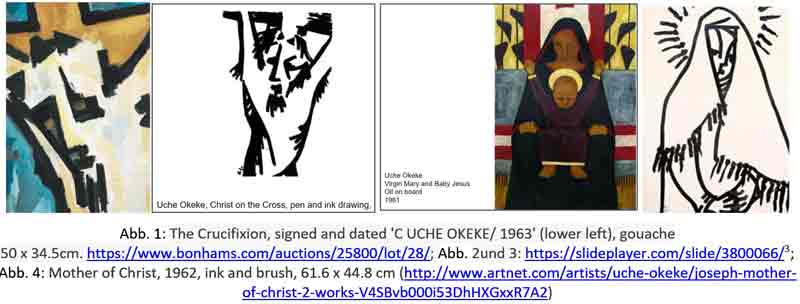
Christian motifs in Uche Okeke's Ouevre between 1962 and 1963 found by the author on the internet (May 22, 2022)
Perhaps this is why the discussion about whether Christ or a Muslim is depicted makes me feel uneasy. In my mind, the question is connected with the attributions or depreciations: To whom / which faith does the work of art belong? Does it belong to the Christians, the Muslims, or the traditional believers in northern Nigeria, if, as Philipp Schramm or Mahmoud Malik Saako suggest, one also discovers a traditional wooden mask?
New approach and reflection on its anchoring
Hence my attempt to think of the painting in a different way, i.e. not from the artist's point of view and what he or she wanted to represent. In doing so, it is clear to me that I am taking a specifically Western approach to a modernist work (where I now place Okeke's painting) with my new approach. This approach is based on the loss of a binding iconography and a fundamental openness / never-quite-unambiguity of 'autonomous' works of art for a Western-oriented, middle-class audience. In addition, my proposal for interpretation is based on a specific position in the interpretation of images, from production theory to reception theory (in the context of constructivist epistemology). The loss of a binding iconography is accompanied by a greater significance of form (which is now itself charged with content to compensate for the loss). In a next step, I therefore try to examine the image - beyond a positioning in the question of whether it is an "Islamic" or a "Christian image" or a "traditional image" - form-analytically.
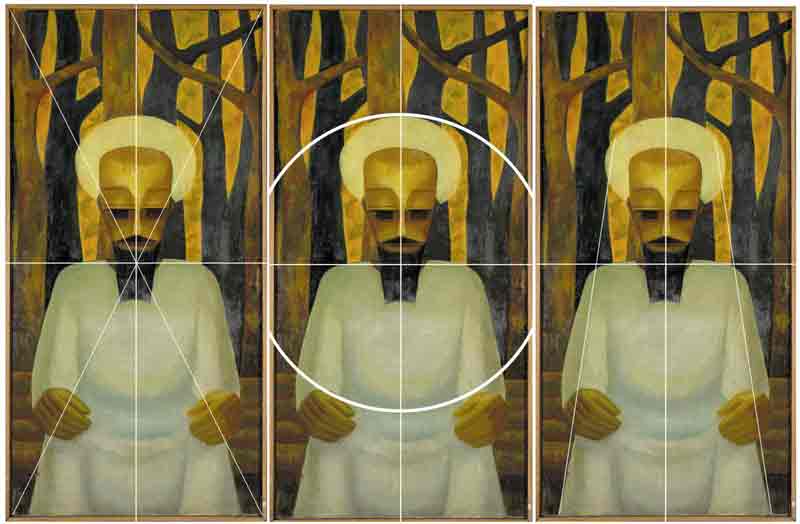
Analytical composition with auxiliary lines. (c) the author
Form analysis
The dominant, almost penetrating axial symmetry in a very high longitudinal format speaks of high order; the pyramidal structure of the figure also speaks of calm and stability, indeed of sublimity and dignity, of quiet, immovable power. And this dignity is not fed by external insignia or theatrical staging, but by a calm that radiates from within. It is a picture in front of which one can become calm if one trusts the order as a viewer.
The striking human figure contributes to this effect. Although clearly figurative, it does not represent - to the degree of abstraction - a concrete portrait or a human being that can be grasped by the senses. This is most obvious in the geometricised eye area, which is shaded in various dark zones. This makes the gaze ambiguous: is the figure looking at the viewer, is it looking forward, is it looking inwards (contemplatively, with closed eyes)? Together with the geometric rhythm of the picture's surface (the symmetry, but of course above all the parallels that can denote eyelid, tear sac, eyebrow - or not) support the depiction of a human being in an abstracted ideal form that remains open to itself, as in a mask. The latter is also characterised by the fact that the viewer immediately sees what has been made, what has been assembled, as in the case of the moustache, for example.
The figure sits quite classically in front of a middle and a background: at the bottom the zone (again - between two-dimensional and spatial effect - strongly abstracted) is divided into horizontal stripes, which become slightly narrower towards the top. They again suggest something familiar (a wooden bench), but this remains ambiguous. In the upper zones, the tree trunks (without leaves) form the liveliest, least symmetrical, most restless element in the painting, even if the alternation of light and dark again shows the abstracting hand of the artist.
With this spatial layering in clear zones (background, trees, seat, figure), but also the geometric reduction of the forms, the picture looks like a carved relief. The colouring also fits in with this, for example when the "sky" behind the trees as well as the lighter trees have the same colouring as the face, while the beard, eyes and the dark trees form a second colour zone. The lightest zones are formed by the robe and the shape around the head. Despite the large spectrum in the area of light-dark contrast, the picture does not appear colourful, rather like a natural wood relief. An effect that is again particularly evident in one detail: the way the hands are shaped is reminiscent of hands carved out of a piece of wood.
This character is supported by the way Okeke uses oil painting. He clearly outlines the contours of the surfaces. The objects are each assigned a main colour, applied impasto with broad brushstrokes. The modelling creates plasticity, lightly set with internal structures enliven the colour surfaces.
Conclusion
The degree of abstraction, the modelling construction of the figurative out of a colourfulness, the strict symmetry of the composition, the tectonics of the pictorial space unfold a tableau that nevertheless - and this is now decisive - creates zones of ambiguity in the figurative. The viewer must fill these with his or her own ideas. The viewer's gaze is directed towards the picture, but the eyes do not look back. In this respect, the painting is suitable for contemplation, meditation, spiritual experience. In seeing the painting, one's own can come to rest. And so the distinction between the Christian halo, the Muslim turban and the ritual mask can also come to rest in the contemplation of the painting.
This consideration is based on an 'ideal viewer' of the work, i.e. it is reception-aesthetically oriented. If one finally turns it once again to production aesthetics, one could interpret the work as an attempt by the artist in which it experimentally unfolds what a spirituality beyond the distinction traditional - Christian - Muslim could look like.
Footnotes
[1] Philipp Schramm's position becomes clear in his text (https://www.bayfink.uni-bayreuth.de/de/Sommerausstellung-2021_-Not-yet/audio-not-yet---welcome/index.html).
[2] Perrin Lathrop, "Uche Okeke," in Smarthistory, August 9, 2015, accessed May 21, 2022, https://smarthistory.org/uche-okeke/.

-
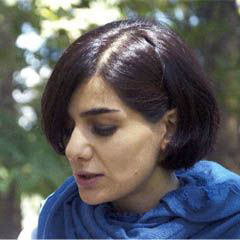 Azar Emami Pari
Azar Emami PariA carpet is neither produced nor read like other pictures. As such, how does it communicate and what is the proper way of reading a carpet? Does it enjoy an esoteric meaning? A meaning beyond that of its patterns? In other words: is the carpet a decorative object with a symbolic or iconic meaning added on top, or does it contain—at least for viewer who belongs to Persian visual culture—a meaning completely different from any other quotidian object? The mesmerizing power of the carpet lies in the fact that it convinces the viewer of the latter. Many studies on the subject aim at understanding how different Persian carpets are made, trying to elucidate the nature of their mode of production. Yet, “how the appearance is consumed”[1] has rarely been the subject of study, as well as inquiring about the causes behind the formation of such a bizarre appearance. It can easily be shown that the answer cannot be reduced to how a carpet is produced: it is clear that Persian carpets are more than, as it were, a pixelated version of Persian images found in other Persian decorative arts, or the product of a “design process” (as one understands the term today) and sheer creativity; it is rather an object unlike any other quotidian objects and not just another branch of fine or decorative arts.
It is very difficult to penetrate the different layers of meaning in a Persian carpet, at least much more so than Persian miniature paintings for example there is a winding path from form to meaning in carpets. A Persian carpet has something to say that is not a statement: it is not a text with a definitive meaning, not even one that we could call “abstract” in the sense of avoiding any reference to the real world. Similar to mystic verses of Sufis, known as shat-hiyyāt, whose general meaning is unclear to the reader, yet written down, with meaningful words, for a purpose clear to the author, the appearance of carpets insists on signifying something: they are not just pleasant melodies without words. As such, the carpet cannot be studied as an abstract painting. (Probably that is why it has rarely inspired modern Persian paintings and protects itself against easy visual plagiarism.) The image of a carpet is not the same as the carpet itself: the carpet is not produced to be “seen”, rather be “watched” in the long term. It is meant to be lived on, not to be distanced from the viewer to produce a moment of reflection, which is the essence of European painting. It is not an exaggeration to say that every Iranian grows up on a carpet and learns visual literacy from it. It is the very first window through which every Iranian look. The opposite of a Renaissance painting, i.e. a window opening to the outside world, is the carpet, not even the Persian miniature painting.
Despite its decorative function, the effect of Persian carpets, and in particular pictorial Persian carpets, on viewers do not depend on the text that accompanies it (as is the case with urban, fictional, pictorial carpets[2] and Persian painting alike). The origins of pictorial carpet have been, as it follows, purely aesthetical, nothing more.
Historically, pictorial carpets appeared as new art, not only because of a change in their function but also because of their new appearance[3]. They were woven according to the personal taste of weavers or specific clients, and for that reason, they were less mass-produced. There is no doubt that such carpets as Persian miniatures are ultimately born of the poverty of illustration[4] in Iran. Such carpets, also known as figural carpets, “emerged in the late twelfth century AH (18th century AD) following developments in various other fields of art in Iran and coincided with the emergence of new possibilities in the visual realm, such as printed pictures or photographs. All these led to a new expression in Persian carpet weaving.” (Tanavoli, 1989:9) The story narrations in the pictorial carpets of Iran have different origins. Themes of pictorial carpets include kings, epic and romance stories from classical Persian literature, religious themes and stories of Quran, dervish and Sufism, Armenians pictorial carpets, nomads’ pictorial carpets, pretty women, and animals.
In order to enter the realm of the Persian carpet, let us begin from a simpler point of departure. We ask: what is the relationship of the carpet to the space in which it is unrolled? What is the horizon of the carpet and what is space and time in the carpet? The objective form of such a relationship is reflected in the relation between the carpet and the architectural space. Of course, we have samples of carpets woven for a particular space, as well as spaces built to house a particular carpet. We know, for example, that Nasser al-Din Shah (who reigned from 1848 to 1896) ordered a complete building to be fitted with a carpet he received as a present from the Ottoman sultan. Mo’ayer al-Mamālek writes: “Abyaz Palace: Although the building is still in place, not everybody knows why it was built, therefore, some facts are mentioned here. Sultan Abdul Hamid sent dozens of pieces of furniture and some precious Turkish carpets to Nasser al-Din Shah. Several large portraits of European kings and queens painted by the most influential painters of the era were also given to Nasser al-Din Shah. As other palaces were all decorated with various ornaments and were not suitable for the aforementioned gifts, so the king ordered the Abyaz palace to be built and tailored to the size of the largest Ottoman carpet. When it was finished, they unrolled the carpet in the hall and decorated the space with precious upholstery. They hung the portraits together with another painting depicting Napoleon I, given to Fat’h Ali Shah, thus creating a magnificent hall for receiving kings and dignified guests. One day I was there when the king went to the treasury, and there he chose some artifacts to complete the arrangement of the Abyaz palace.”
The visual significance of the Persian carpet must be considered as Iranians’ historical understanding of art and painting as an independent language, and pictorial carpets can perhaps be formulated as a new form of testimony to such a language. The language begins with the synchronicity of Persian painting with literature and fiction texts and its culmination in the pictorial carpet. Persian painting is considered narrative art. “Because some example of Persian painting is an illustrated book that depicts a literary text, most of which are fiction.” (Shokrpour, Azhari, 2019:104) In Persian painting, the drawings depend on the text “and this feature is one of the main features of the illustrations of Shahnameh, which includes short and concise themes in which the narrative aspect lies. These texts were chosen for illustration because their readers were fully acquainted with the leading text, allowing the painter to show the last minutes of the events and the most notable or most tragic moments in his work.” (Shokrpour, Azhari, 2019:104) The logic of the carpet, however, is much more complex than painting. The charm and wonder of the pictorial carpet stem from the middle point between the carpet and painting, where the story originates, and which, of course, has become “inexpressible.” Neither the image nor the story is a reality of this world; just like the miniature, pictorial carpet is also an imaginary window to stories; no event or thing in that frame has a real presence. They are pure images (without any text) that create a suspended and immaterial world of colors, shapes, and textures. Pictorial carpet is a unity resulting from the contradictions between the common presence of figural pictures and details of carpet designs. That is why the carpet frame and its details have added to its grace and appeal rather than reducing the magical attractiveness. The “childish” aspect of such images, which are not solely due to the weaver's inability to render everything realistic, is a result of a vast game of imagination combined with pictures.
What is unique in the pictorial carpet is the magical aspect, and the subject of the painting is completely insignificant. Of course, in harmony with the scene, each picture has its own special figural drawing and necessities in terms of color combination. (The color combination is insignificant in nomadic and rural pictorial carpets. For example, the skin color of the body could be very strange, e.g., red, etc.). But whatever the image is, whether romantic like countless scenes of Shirin bathing with Khosrow secretly watching her or battle scenes, such as the battle of Rostam and Sohrāb, the shocking effect of the pictorial carpet is the same in each case.
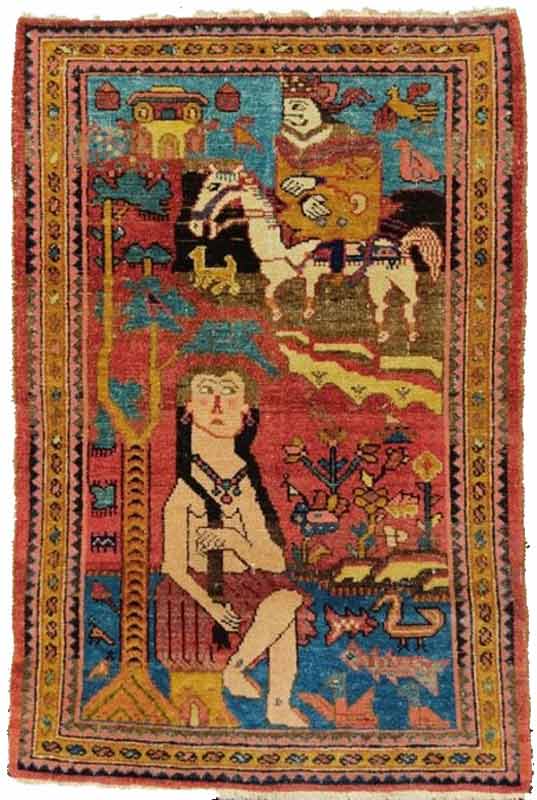
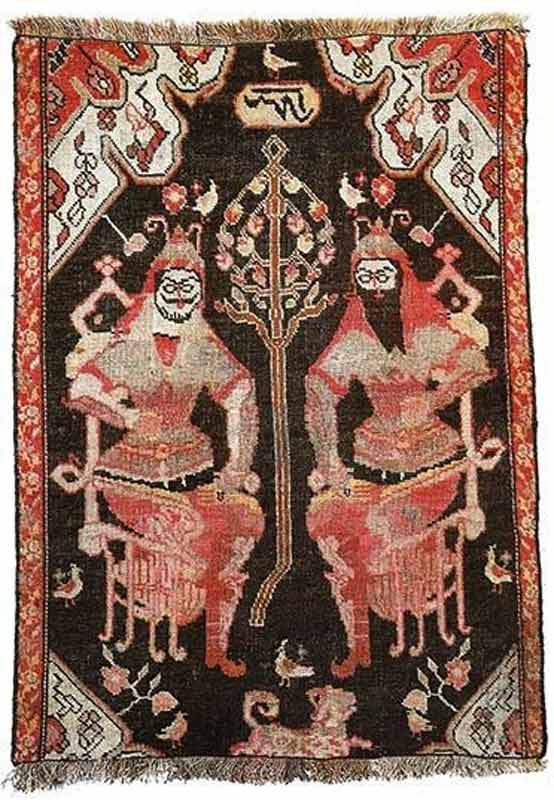
Figure 4: Lilihan Poshti. The story of Khosrow and Shirin. Natural color, size 100*67 cm, Yousef Samadi Bahrami’s Collection.
Figure 5: Rostam and Sohrab, Karabakh (South Caucasus), inscription reads: “Sohrab” (inverted text), late 13th century AH, 120*85 cm, asymmetric knot, displaying 672 knots per square decimeter (Tanavoli 1989, 43) When the carpet depicts a story, it does not narrate it.
A pictorial carpet is not really depicting the place of an event or the feeling or interpretation of what happened in the scene. Apart from the feeling of wonder at the visual beauty reflected in the carpet, there is nothing but a thoughtful or emotional expression: there is no drama, no sadness or sense of impression. The event as a whole is an absent element in the pictorial carpet. All details are equally important; thus, the important function of a pictorial carpet is that it guides the viewer's gaze on numerous details of the carpet, while an inner harmony skillfully creates a strong, decorative unity. Such carpets attract viewers’ attention, not because the scene is a special story that is unsuccessful in its narration, but in the harmony with the story figures within the form of a carpet.

Figure 6: Baluch, Zabol, mid-14th AH century, asymmetric knot, 1280 knots per square decimetre; this carpet displays a scene from the story of Khosrow and Shirin. However, the images in the carpet do not narrative anything and if the viewer is unfamiliar with the story there is little to be understood from the images. (Tanavoli 1989, 48)
Of course, the carpet, in its physical aspect, has a distinctive relation to space in Persian architecture, as it covers a rectangular space that shall not deflect both horizontally and vertically. It is true that the carpet was not always considered a floor covering and not necessarily been rectangular in shape: as in the case of saddlebags and cushions, or carpets hanging from walls or covering a horse or a mule, and so on. Yet it is the Persian architectural space that provides a flat, rectangular space for the carpet: it is part of the formal relationship of carpets with the architectural space. This is why in European paintings that feature a Persian carpet, the first thing that strikes an Iranian viewer is the unusual use of these carpets: Hung from a window crawled up the stairs and deflected in height. This, in itself, has a definite relation to the way the carpet is seen: on the one hand, the formal carpet looks like a horizontal tableau that is clearly framed and as such forms a totality. It does not resemble, for example, the scattered Islamic designs on glazed tiles that crawl up walls whose entirety forms the totality of the building; on the contrary, the carpet has a strong, coherent framing that protects it against any deflection.
In the past, Persian carpets were not masked by pieces of furniture and thus better seen in their entirety. The carpet was the most important part of interior design. It was a furniture in itself. Thus, the carpet is fundamentally different from a painting: viewers of a carpet never actually see it in its entirety because they are already standing “on” the carpet. They never lose contact with it or distance themselves from it, far enough to see it in its entirety. They can kneel and touch it, or sit or lie down on it and get closer to it as much as they want, but their distance to the carpet never exceeds their height. The prohibition of walking on carpets with footwear allows a close and intimate relationship with the carpet, emphasizing its dignity and sanctity. Even paintings on ceilings (which sometimes reflect the patterns of a carpet, as in the case of Sheikh Safi’s tomb) do not enjoy such quality and can be seen and appreciated in one glance while remaining out of viewers’ reach. In the case of carpets, viewers can see the design from different angles and need to move in space and change their standpoint to fully appreciate the work (exactly the same way they need to circulate within the introverted spaces of Persian architecture in order to grasp a proper sense of space).
It might seem that the distance between the carpet and the observer is a secondary quality of the carpet and does not have a direct impact on the aesthetic aspect of the Persian carpet. However, we know of aesthetic systems (including that of Kant) that define the aesthetic experience fundamentally on the basis of an idea of distance. The most prominent is that of Edward Bullough (1880-1934), the English aestheticist, i.e. Psychical Distance. In a paper published in 1912, Bullough writes that the aesthetic experience takes place at a certain distance from the work, not too far nor too close, and this applies to the locative, temporal, and subjective distance of the observer from the object, and is an aesthetic principle (Neil 1995, 304), and is an element present in all art forms (ibid., 299). The transition from the agreeable to the beautiful takes place through distance (Neil 1995, 305). And it is advisable to reduce this distance both in creating and in understanding art, without having it completely removed. (Neil 1995, 302) In his view, this depends both on the audience and the object (Neil 1995, 302). For instance, the Persian miniature takes advantage of its small dimensions to reduce such distance. In carpets, however, the distance is completely different, both objectively and subjectively. The maximum distance is a person’s height and the minimum is zero. It is this distance that has resulted in the unique form of viewing carpets. The Persian carpet is not seen, but “watched” (tamāshā), as was the case with Persian gardens. That is to say, carpets were observed in motion, with a constant shift of the viewer’s point of view. The term tamāshā means “to watch” and “to walk in the garden with a friend” at the same time. Such a relationship between how carpets and gardens are viewed is by no means a coincidence. Persian carpets have long been associated with Persian gardens, sometimes even reflecting and imitating their patterns. In terms of function, the Persian carpet brings nature into the interior and plays the role of green in times of the year when grass does not grow. We know that the famous Sassanid “Baharestan” carpet had a similar function. Tabari History writes about this carpet:
“They wove a carpet with colored silk, sixty cubits in sixty cubits … they unrolled it in wintertime when no flowers blossomed and no green was seen on the globe. On the margins were sown emeralds and peridots… Omar ripped the carpet and the gems and gave each person a fair share… Ali ibn Abi Talib received his, which he sold for twenty thousand Dirhams.” (Tabari History, 1985, 41).
Thus, we encounter one of the most important subjective aspects of the relationship between carpets and architecture: the viewer is a part of the image; the observer of a carpet is “inside” the carpet. This also properly explains the horizon line in Persian carpets, which is very different from that of miniature painting: the carpet does not necessarily have a horizon line, and the horizon line is not necessarily within the carpet or in its “upper” part. The figures in pictorial carpets are not depicted “on” the carpet but are rather “inside” the carpet, like a letter in an envelope.
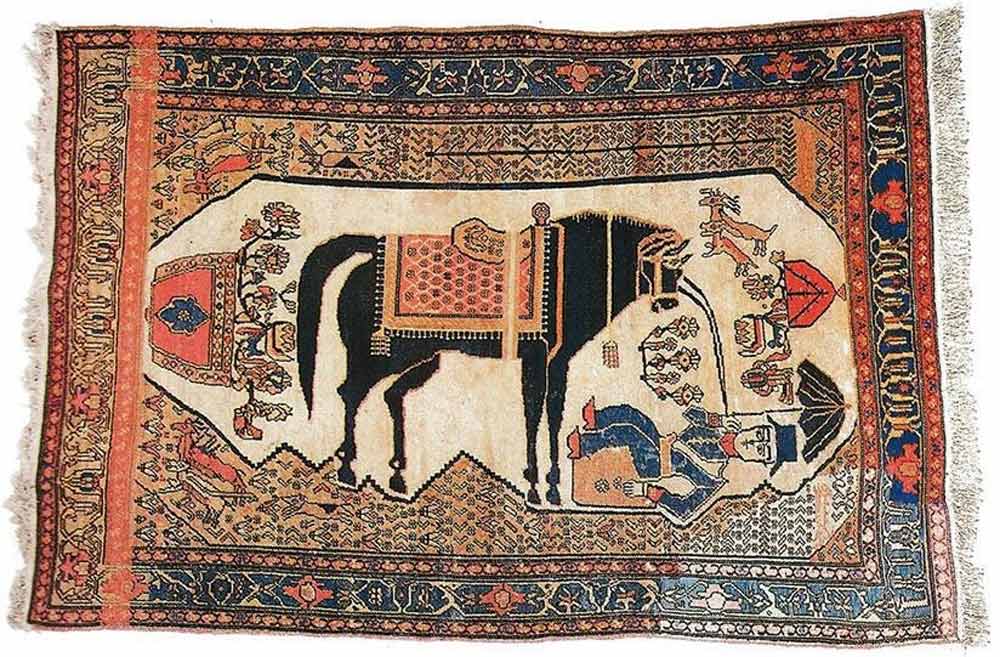
Figure 7: Horse and stableman, Hamedan, Darjazin, early 14th Century AH, 189*129 cm, symmetrical knot, 1296 knots per square decimeter (Tanavoli 1989, 95). The logic of the carpet design is much more bizarre than miniature. Where is the horizon line in this carpet?
This statement is also true on another level: the observer is “within” the carpet subjectively too. The carpet is not a home decoration, it is part of the home: it is home itself. This is why the unit for counting carpets, was called “home” (khāneh), or why the carpet sometimes imitates the plan of the Persian houses or gardens. Children are well enough familiar with this concept and elders respect it too. Children carefully trying to walk on the lines of a carpet pattern imagine themselves walking on a bridge above avoid. The patterns of a Persian carpet always show depth, as opposed to Persian miniature painting which appears flat and even.
So, when confronted with carpets, even pictorial ones, “touching” is more important than “seeing”. In fact, this is the only way to see it. Touching renders, us more dominant. Seeing does not allow one to understand the physical quality of a phenomenon, but the tactile sensation does. In pictorial carpets, this touching proximity is more realistic than an unattainable distance, as it empowers the viewer to touch the universe once again. The carpet is a representation of the universe, as the root of the Persian term indicates: in Haji/Engineer Travelogue, Ali Hassouri traces the root of the word Qāli (carpet), back to Qalin in the early Islamic centuries, to the words Kalinin the Sassanid era and Kar’einé in Avestan, back to the word Kāshtan (“planting”), as making every carpet knot is like planting a seed, that would later represent grass at the time of its absence in winter: the carpet is a perpetuated Persian garden. (Hassouri 2017, 42) In Mithraism, human beings are descendent of the plants: Mashya and Mashyana, the first human beings to grow out of the earth. Each knot of a carpet is a seed that is planted with hope and carries a wish, the same way lovers knot grasses in Nowruz with the hope of their wishes being fulfilled. Every Persian couple begins their married life with a home/carpet on which their children will later grow up and flourish.
Resources
- Emami Pari, Azar, and Bavand Behpoor. “The Iranian Carpet Is not a Picture”, Herfeh Honarmand (Iranian quarterly journal on visual arts), no. 73 (2019): 151-160.
- Parviz Tanavoli (1989) Iranian Pictorial Rugs (Tehran: Soroush Publication)
- Hafiz-e Abru, Nur-Allah ibn Lotf-Allah ibn 'Abd-al-Rashid Behdadini, edited by Seyyed Kamal Haj Seyyed Javadi (Tehran: Ministry of Culture and Islamic Guidance Publications)
- Ali Hasouri (2017) Haji muhandes Travelogue (Carpet Travelogue) (Tehran: Cheshme Publication)
- Doost Ali Khan Muir al-Mamalek (2011) Notes on the private life of Nasser al-Din Shah (Tehran: Iranian History Publication)
- Alex and Aaron Ridley Neil (ed.) (1995) The Philosophy of Art: Ancient and Modern Readings (Boston, Mass.: McGraw-Hill)
- shokrpour, and f.azhari , Azhari. “The role of the Figure in the Narratology of Persian Paintings” (Case Study: Six Drawings from Shahnameh Tahmasebi), Journal of Visual and Applied Arts (Quarterly Journal of Tehran Art University). no. 25 (2019): 101-121.
- Tabari History, illustrated version, 1208 ed., Astan Quds Razavi, Iran Culture Foundation, 1966, 17-18, quoted from Parham 1985, 41.
Acknowledgments
I would like to express my special thanks to my colleague and friend, Mr. Bavand Behpoor, for his intellectual support and insightful comments on this paper.
[1] The function of a carpet does not justify its appearance: Persian carpet has played throughout history a much more significant role for Iranians than merely providing a warm and soft flooring and has gained its appearance through complex and lengthy historical procedures.
[2] Persian pictorial carpets have been divided into two classes: one is urban carpets, and the other rural and nomadic ones. Urban carpets were woven according to a plan, painted by a carpet-designer, while nomadic carpets had a different origin. In Iranian villages and among Persian tribes, carpets were woven without a plan, and rather based on another carpet. When a weaver intends to weave a carpet, s/he borrows a carpet from their neighbors or relatives and uses it as a model (in local parlance: “Dastūr”). (Tanavoli, 1989:16)
[3] The installation of pictorial carpets on walls brought about changes in the way carpets were used. The new application moved the carpet from the floor and underfoot to the walls, turning it into a painting. Previously, ordinary carpets were occasionally hung on at door gates and walls, but that was a temporary function, in occasions such as wedding, religious celebrations, especially commemorating the birthday of the last Imam (the Messiah or “Mahdi”). Walls of houses, shops and markets could be decorated with carpets, a custom that still exists today. (Tanavoli, 1989:14)
[4] The 19th and 20th centuries should be considered the time of popularization of illustration in Iran. In those two centuries, a significant tendency towards simulation and naturalism became apparent in nearly all branches of art. Simulation, as a pervasive movement, attracted the attention of artists. The leaders of that movement, of course, were painters. Although painters constitute different classes and branches in this, the main goal of all groups was to depict their subjects through likeness and similarity to nature. Two groups of painters had the largest share in spreading visual arts among the masses: Coffee-House painters and religious painters. The works of these artists were widely seen and influenced the taste of artists in other disciplines, including engravers, illustrators of printed books, and carpet weavers. (Tanavoli, 1989:11)
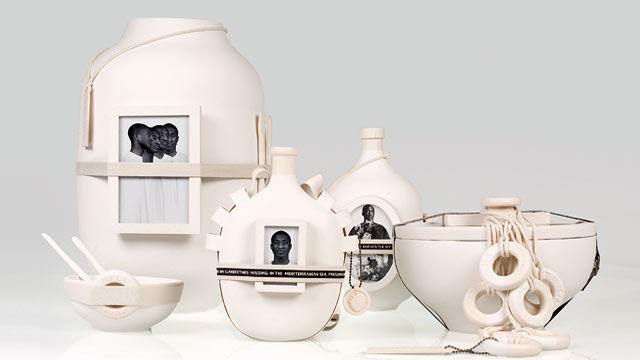
-
 Kerstin Pinther
Kerstin PintherMoulding Tradition (2009) is a work done by the designers Andrea Trimarchi and Simone Farresin of Studio Formafantasma: It consists of a group of five ceramics in different shapes and forms: boat-like bowls of various sizes, vases and bottles. Some of the maiolica objects display special attributes which refer to the sea and to rescue operations on the water such as a pair of paddles and lifebuoys. Others use ribbons, printed with historical and immigration data, to tie framed photographs and other ‘décor’ to the vessels. The project is informed by the tin-glazed maiolica from Caltagirone in Sicily – itself a result of the encounter with (Moorish) Islamic ceramic traditions in the eleventh and twelfth centuries, which in the following centuries triggered a technical and content-related process of adaptation. From the early modern age onwards, maiolica thus became “an excellent indicator and agent of design transmission across the globe” (Ajmar-Wollheim/Molà 2011, 17).
Among the ceramic vessels being produced up till now is the genre of the so-called teste di moro – vases that in a stereotypical, often grotesque and derogative manner depict the faces of people referred to as either ‘African’ or as ‘Arabic.’ In their original form as busts they most probably date back to the seventeenth century, when they were used as flowerpots to decorate balconies and terraces, suggesting an exuberant vegetation. By replacing this generic image with a black-and-white photograph of a known and thus named immigrant from Nigeria, Sofien Adeyemi, Andrea Trimarchi and Simone Farresin update the references and create a link to recent migration movements. A flask with an attached ceramic tile lists the names of the countries Adeyemi has traveled through on his way from West Africa to Italy. His (multiplied) portrait together with written information on present-day migration policies is attached to the ceramic form, thus literally adding a new level of meaning. Yet another wine bottle recalls fruit picking, predominantly done by migrant workers under harsh and exploitative conditions.
By introducing further elements of reality in traditional forms, Formafantasma with Moulding Tradition create complex discourses on the historical and present-day entanglements between Africa and Europe and the imbalance in their economic and political conditions. According to the designers, “contemporary public opinion polls have claimed that 65% of Italians believe that the immigrants are ‘a danger for our culture.’” In this context Moulding Tradition speaks of the blind spots of contemporary culture: Neither the explicit transcultural character of the maiolica which had contributed to – if not established – the fame of Caltagirone’s craft tradition is valued, nor are the descendants of those who once introduced this new ceramic technique welcomed. Moulding Tradition also alludes to the fact that in the most recent age of globalization nearly everything – data, information, images, objects – is free-flowing, but some people’s movements from specific geographies are monitored and restricted. Thus, it questions the ideology of cultural segregation and confronts it with the factual migration of people and goods as well as with the various historical entanglements. Furthermore, Moulding Tradition, for which the designers cooperated with a local craftsperson, can also be read as a comment on the role of craft in contemporary society as well as on the question of how craft is sometimes “locked into a tradition repeating [moulding, author’s note] the same objects over and over again” (Studio Formafantasma 2015). In order to counter this tendency, the designers left their products with a kind of raw surface, since normally maiolica ceramic is painted in bold colors after being dried thoroughly. In the case of Formafantasma’s maiolica, the objects remain ‘unfinished’ – a (blank) space to metaphorically be worked on and to open up a debate. Thus, Moulding Tradition stands for Studio Formafantasma’s conceptual and critical design-thinking approach. In this approach, the duo relies on textual information as well as on the haptic and aesthetic qualities of the substances they use: “[M]aterials are not only functional but also have the ability to evoke memories or to testify historical knowledge” (Studio Formafantasma 2015).
The authors of Global Design History make clear how the most recent phase of globalization not only accelerates flows of people, images, information, commodities and capital, but also contributes to the various types of exclusion and border control regimes (Adamson, et al. 2010, 1f.). At a time when design is becoming increasingly politicized, the question of how designers respond to the hitherto biggest wave of flight and migration in the years 2015/16 becomes obvious. Indeed, similar to Moulding Tradition, there are other design objects as well as works at the interface of design and art which can be seen as tools for reflecting on migration and flight. In using design as a tool, the migrancy reference can often be found on more than only one level. Besides its content-related presence, it is also tangible via the objects’ materiality or techniques, which for their part often bear traces of mobility and cultural transfer. Thus, these objects speak strongly to the historical and cultural migration of forms.
References
- Adamson, Glenn, et al., editors. Global Design History. Routledge, 2011.
- Ajmar-Wollheim, Marta, and Luca Molà. “The Global Renaissance. Cross-cultural Objects in the Early Modern Period.” Global Design History, edited by Glenn Adamson, Giorgio Riello and Sarah Teasly, Routledge, 2011, pp. 11–20.
- Studio Formafantasma. “Studio Formafantasma on Words as a Tool for Design.” Design Indaba Conference, Talk on November 3rd 2015, http://www.designindaba.com/videos/conference-talks/studio-formafantasma-words-tool-design.
published February 2020
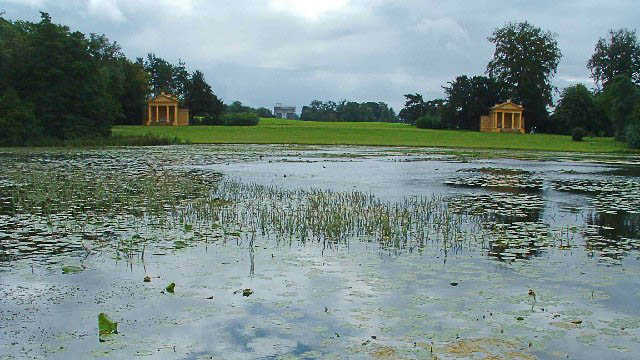
-
 Ernst Wagner
Ernst WagnerThe English Garden perceived as harmonious, lovely, picturesque or graceful to visitors in our present day, is charged with political resistance, struggle for power, projection of social utopias or flight into resignation. Like many interesting creations, these gardens are microcosms full of contradictions – particularly during the time they were created in the early 18th century: utopia and idyll, a mirror of society and its antithesis, dream and melancholy, imitation of nature and going beyond nature.
Stowe House Park, less than 70 miles northwest of London, is considered to be the first and most definitive site of an ‘English Garden’ – Lancelot Brown (1716 – 1783) who was employed there was the first person whose life-long occupation was that of a landscape gardener. The Stowe gardens embodied the ‘English Garden’ paradigm like no other and Benton Seeley’s guidebook (1742), the first garden guidebook to be published in the world, helped to spread Stowe’s influence throughout the 18th century as the model for the ideal English garden.As a country estate of the Temple family, it was – many decades before the redesign – first committed to Baroque, i.e. French models: symmetrically laid out, geometrized nature, combined with the pompous splendor of the manor building. The early model was abandoned and the new complex design of 26 hectares followed more innovative principles, for good reason; however, it still remained a status symbol of the wealthy family.
Thus the many buildings that were built in the park are demonstratively not Baroque. After all, Baroque embodied absolutism, which was despised. Instead, they were inspired by Renaissance, Gothic, antiquity, or Chinese architecture, pre-baroque styles or styles found geographically outside the borders of England. Each style tries to evoke its own mood: Gothic stood (and stands) for the morbid, the unearthly, China for the exotic, antiquity for the free citizenry.
In this sense, the names of the garden parts can be understood as allegories: Temple of Concord and Victory, Grecian Valley, Stauen von Saxon Deities (Germanic Deities) or Homer and Socrates, Gothic Temple, Elysian Fields and many others refer to cultural regions that represent a different, supposedly better social order. It is about an alternative concept to the absolutist principles, about freedom. The dedication inscription on the Gothic Temple makes this very clear: “To the liberties of our Ancestors”.
This directly decipherable political iconography is complemented by a differentiated iconology of forms. For example, the grass around the Temple of Ancient Virtue is subtly maintained as a lawn, while the grass around the ruins of ‘contemporary virtue’ grew wild until the ruins disappeared completely. The outdoors devours the contemporary, decadent, (neo-) absolutist tendencies. Thus nature was liberated from geometrizing corsets just as society was liberated from absolutism. As in free nature outside the garden with its unbridled forms, the garden becomes a free landscape in which free people move freely.
This conception of how such a landscape garden should look was influenced by three main sources: from the personal memories of nature that English nobility brought back with them from their Grand Tours through Europe; various descriptions of exotic Asian gardens; and, finally, from the classical landscape paintings by Ruisdael, Lorrain or Poussin.
Areas in the garden were designed for such three-dimensional pictorial stagings, which in Stowe featured over 90 selected scenes (or one might call them intriguing or harmonious compositions) that could be experienced from certain spots or areas in the garden. The visitor had to and has to set out to walk in order to experience all the spaces and perspectives along the way. Winding paths, which repeatedly open up to surprising glimpses of the unexpected, lift the visitor from everyday life and put him in a special mood. Hence, the course of the path is the central means of the landscape designer to develop his own dramaturgy. He steers the visitor and controls what he sees and when. What the visitor doesn’t see are typical walls. Instead the use of ha-has, a recess in the landscape similar to a sunken ditch, creates a vertical barrier while preserving an uninterrupted view of the landscape. The fine line between art and nature disappears.
The ever-changing weather, light and appearance of the plants, and the multifold of views along the way, allow the visitor to immerse himself again and again in an entirely new visual experience. This sensual experience should have a purpose. In the five-volume Theory of Garden Art by Hirschfeld, published 1779-85 in Leipzig, the aims are clearly outlined: On the one hand, the education of the observer through the enjoyment of art (“inner true cheering up of the soul, enrichment of the imagination, refinement of feelings”) and on the other hand, the “beautification of an earth which is our home for a time”. The aim is thus the refinement of nature by man as well as the refinement of man by nature.
The Temple family had initially acquired its immense wealth through sheep farming, and on the basis of its economic success it provided members of the English parliament for generations, including four prime ministers. English politics in the 18th and 19th centuries would be inconceivable without its influence. Richard Temple, 1st Viscount Cobham (1675 – 1749), who was a key figure in the founding of the park at Stowe, was initially a successful army commander in the War of Spanish Succession against France. In the early 18th century, however, as a supporter of the ‘Glorious Revolution’ (1688/89), which had led to the abolition of absolutism in England, he was marginalized by internal adversaries, which made the development of his garden so important for him.
In search of an aesthetic alternative to the ideologically rejected French garden (as the embodiment of absolutism), Chinese or Japanese gardens offered a central source of inspiration. William Temple had already published a book on Asian gardens in 1690. These gardens were above all a counter-model to the symmetrical arrangement of geometrically limited flowerbeds, the prototype of which was the park of Versailles. The irregular, free composition of trees, plants, stones, and water in Asian gardens was the model for a natural appearance that was as natural as possible and, in turn, created with the highest degree of craftsmanship, that is, artificially. In 1738, this enthusiasm for Asian gardens led to the construction of a Chinese house in Stowe – the first in garden history – an innovation that found its successors in many gardens throughout Europe.
Reference
Sibylle Hoimann, Garten; in: Fleckner U., Warnke M., Ziegler H. (eds.), Handbuch der politischen Ikonographie, Vol. I, München 2011 (Beck), pp. 388.
published January 2020
 Prudence Lau
Prudence LauAt the moment, I find it fascinating that such English and Chinese or Asian cultural exchange upon the built environment started so early on in the 18th century. It reminds me of the Chinese garden that focuses also on landscape, and an emphasis for reflection and escape from the outside world.
published January 2020
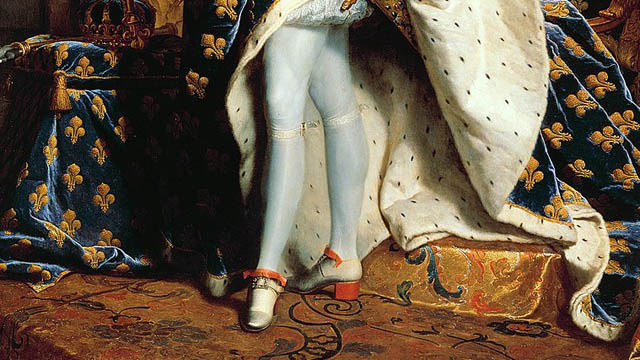
-
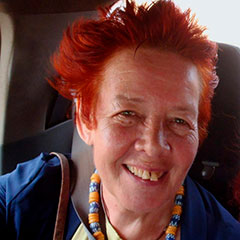 Bea Lundt
Bea LundtLouis XIV (1638-1715), King of France, was painted by Hyacinthe Rigaud (1659-1743) in his palace in Versailles near Paris in 1701. The oil painting was larger than life: 277 cm in height and 194 cm in width. The official title reads: Portrait de Louis XIV en costume de sacre. The painting is exhibited at the Louvre in Paris (INV 7492, open access), and a copy is in the Bavarian State Painting Collection in Munich.
In this portrait, the king is shown dressed in the official royal robes of the monarch, posing magnificently in front of his throne, which is placed in the background. In the painting are gathered together all of the traditional symbols of a ruler: the crown, the sword, and the ermine cloak, which uses the fur of this most precious animal.
Hyacinthe Rigaud was a famous and experienced court painter and had many assistants in his big atelier, so we do not know which parts of the picture are actually done by him. Since photography was not yet established at the beginning of the 18th century, every court employed artists specialising in portraiture to show people what their ruler looked like, or rather how he was expected to look or wanted to be seen in order to legitimise a political programme of monarchy. Specific iconographic symbols and accoutrements were used to demonstrate the tradition of rulership, which was thought to be bestowed by divine right. Rigaud fulfilled the wishes and orders of his patrons, but he also showed subtle characteristics of the people he painted.
‘Absolutism’: Paradigm of a ruling structure that today is considered a myth
Nowadays, the portrait is often used for educational purposes to visually substantialise Louis XIV as the most important representative of ‘Absolutism’ in Europe, the regime of direct rule with no control by a parliament or council: ‘L’etat c’est moi’ (‘I am the state’), he is said to have described his understanding of his place in the world. Research has discovered that he never really defined his role in this way (first in Bernier, 1988, p. 110). However, it is true that he was attributed with the image of being the central part of nature and the cosmos: as the ‘Sun King’, he was staged as the genesis and focus of all energy whence all life originates.
Scholars of the early modern era (Henshall, Wrede, Reinhard) consider ‘Absolutism’ to be a myth constructed in the 19th century. Since Gerhard Oestreich observed the ‘non-absolutistic elements in absolutism’ in 1969, many studies have pointed out that the king depended on an influential elite as well as a number of committees. A complex and effective network of groups existed as the executive authority controlling the political system, as Althoff and Stollberg-Rilinger have shown in their groundbreaking books on the political organisation of the late medieval and early modern states in Europe. In their publications, they describe the ritualised methods used in communication between the influential groups in order to find a consensus. As result of that scholarly discussion of the topos of ‘Absolutism’, Wolfgang Reinhard, like other scholars, recommends, ‘that one should abandon the term’ (p. 40). But, as it is rooted quite deeply in the historical consciousness, this does not seem so simple. Martin Wrede complains in his article ‘Absolutismus’ in the handbook Enzyklopädie der Neuzeit of the continuation of the topos, namely ‘the cliché, still firmly anchored in popular views of history as well as in textbooks, of the all-dominant, all-regulating, arbitrary state built on princely power and with a splendid façade’ [‘das in populärem Geschichtsbild wie Schulbuch nach wie vor fest verankerte Klischee des alles beherrschenden, alles reglementierenden, auf fürstliche Macht gebauten Willkürstaates mit prachtvoller Fassade’] (p. 33).
The portraits of Louis XIV and other kings are used to prove the existence of this colourful glory, whilst in reality, the monarchs were representative figures and personal symbols. During Louis’s lifetime, France expanded its territory in Europe and overseas, which brought extreme losses and financial burdens to the people. Because of that disaster, it was necessary to produce a reputation of honour for the king.
Interpreting the portrait
The portrait shows Louis XIV at the age of 63, at the height of his success. But he does not appear as a strong and resolute ruler who travels around in his country, nor an active fighter who leads battles to defend his people. Pupils today always miss a specific physical ‘masculinity’ that they expect from a king They fault this person for not being able to move, run, or ride in his heavy clothes, high heels and white tights. He is forced to stay indoors, surrounded with sumptuousness. They perceive him as ‘feminine’, as the only part of his body he is presenting is his legs, much like a young woman in a miniskirt, and the grandiose wig with its long hair hinders many activities. The entire image seems ridiculous to today’s pupils. What we see here is an old, ill, vain man who is dressing up to fulfil representative duties. What pupils remark is not just some disrespectful observation but is in line with what we know about reality. Rigaud is a superb artist to show the man in his demonstration of the ritualised courtly pageant of luxury.
There are more paintings showing Louis at different phases of his life. As all royal children, he was kept in the same pretty clothes as girls during the first six years of his life. Portraits show him even at the age of ten with facial features and accessories we perceive as feminine and fanciful, not suited to preparing for the life of a strong ruler. The official regent for Louis until he turned 22 was his mother, Anna of Austria. Louis strengthened the Catholic church but did not follow her order of monogamy: besides his six legal children, he had eleven illegitimate ones, all of whom he cared for (Bernier, Tischer, Wrede).
The ideal of masculinity during this time was the mixed one of early modern times, when gender was more hybrid than in the 19th/20th centuries, and life concepts were not sharply polarised between men and women in different spaces, placing men in the public sphere (Dinges, Lundt). Also, the central symbolic figure for the state was not necessarily masculine; there were very influential wives, concubines, and even female rulers.
Conclusion
In the educational process, it is important to dismantle prejudices about past ideals for masculinity as being strong, powerful and heroic. The historic examples of individual men’s glorious performances on European thrones need to be questioned. Pictures like the one of Louis XIV can help to construct a different understanding of courtly life. If it is understood against the background of a plurality of life concepts for ruling men and women, it can help us to see the limitations of their power.
References
- Gerd Althoff: Rules and Rituals in Medieval Power Games, Brill Academic Publ. 2019.
- Olivier Bernier: Ludwig XIV Die Biographie, Albatros Verlag 1988. English edition: Louis XIV, New Word City 2018.
- Ida Blom, Catherine Hall, Karen Hagemann: Gendered Nations. Nationalisms and Gender Order in the Long Nineteenth Century, Bloomsbury 2000.
- Martin Dinges (ed.): Männer-Macht-Körper. Hegemoniale Männlichkeiten vom Mittelalter bis heute, Frankfurt am Main 2005.
- Karen Hagemann: Gender, War, and Politics: Transatlantic Perspectives 1775-1830, Palgrave Macmillan 2020.
- Nicholas Henshall: The Myth of Absolutism. Change and Continuity in Early Modern European Monarchy, London 1993 (first published in 1992).
- Bea Lundt: Die Grenzen des Heros. Vielfältige Männlichkeiten in Mittelalter und Früher Neuzeit. In: Martin Lücke (ed.): Helden in der Krise. Didaktische Blicke auf die Geschichte der Männlichkeiten, Berlin 2013, pp. 67-102.
- Gerhard Oestreich: Geist und Gestalt des Frühmodernen Staates, Duncker & Humblot-Verlag 1969.
- Wolfgang Reinhard: Geschichte des Modernen Staates, München 2007 (and elsewhere).
- Barbara Stollberg-Rilinger: Des Kaisers alte Kleider. Verfassungsgeschichte und Symbolsprache des Alten Reiches, C.H. Beck Verlag 2nd edition 2013.
- Anuschka Tischer: Ludwig XIV, Stuttgart 2016.
- Martin Wrede: Absolutismus. In: Enzyklopädie der Neuzeit vol. 1, Stuttgart 2005, cols. 24 -34.
- Martin Wrede: Ludwig XIV. Der Kriegsherr aus Versailles, Darmstadt 2015.
Translated from German by Kelly Thompson.
published September 2020
 Bea Lundt
Bea Lundt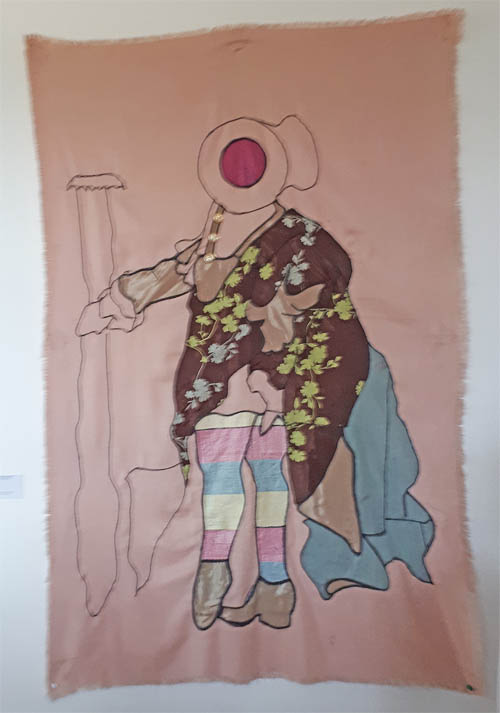 Prince Osei Owusu Bempah, from the exhibition "Orderly Disorderly" - End of Year Exhibition, KNUST (Kwame Nkrumah University of Science and Technology) in Kumasi, Ghana, Museum of Science and Technology in Accra, 2017, © Prince Osei Owusu Bempah
Prince Osei Owusu Bempah, from the exhibition "Orderly Disorderly" - End of Year Exhibition, KNUST (Kwame Nkrumah University of Science and Technology) in Kumasi, Ghana, Museum of Science and Technology in Accra, 2017, © Prince Osei Owusu BempahThe artist Prince Osei Owusu Bempah from Ghana artistically examines in two art works the portraits of Louis XIV (and below a typical European equestrian portrait of a ruler, like e.g. Charles V, painted by Titian 1548, today at the Prado Museum in Madrid). "Bempah appropriates historical images in the form of painting, sculpture and photography. Considering images as a multiplicity, he is now drawn to news from social media, television, radio and newspaper. Information is crucial to the making of his works which extends beyond the visual representations. He reinterprets them in tapestry, embroidery, banners and uses plastic sacks, curtain accessories, second hand table cloths and silk in different configurations. He substitutes certain elements of the original images with mortars and pestles" (leaflet of the exhibition).
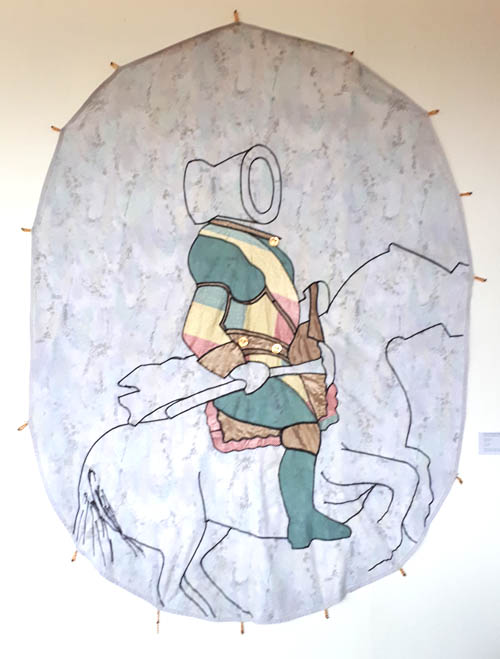
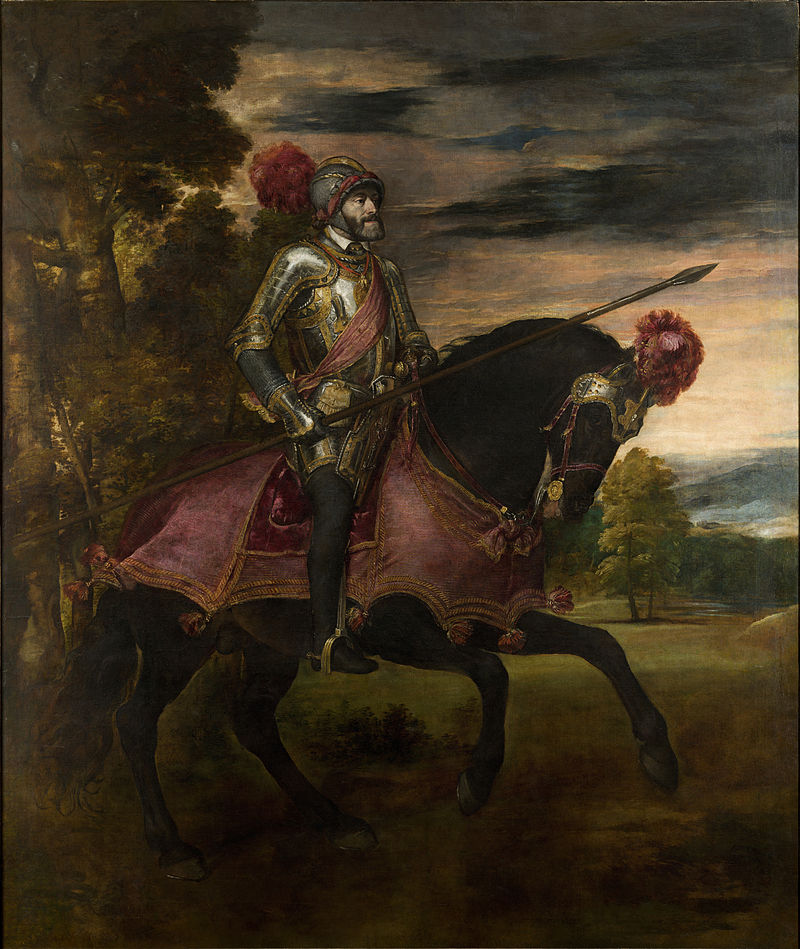
Image 1:Prince Osei Owusu Bempah, from the exhibition "Orderly Disorderly" - End of Year Exhibition, KNUST (Kwame Nkrumah University of Science and Technology) in Kumasi, Ghana, Museum of Science and Technology in Accra, 2017, © Prince Osei Owusu Bempah. (left)
Image 2: Tizian, Carlos V en Mühlberg, 1548, H: 335 cm, W: 283 cm, Oil on Canvas, Museo del Prade. (right)
published November 2020
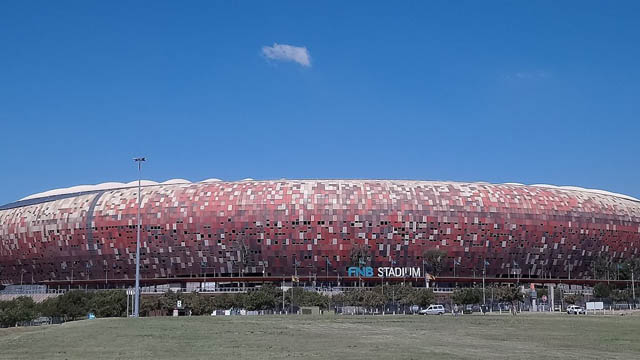
-
 Esther Kibuka-Sebitosi
Esther Kibuka-SebitosiSouth Africa gained its independence in 1994 with Nelson Mandela becoming the first black President on the fall of apartheid. The problem was: Even after the demolition of the apartheid system, social cohesion was a challenge as people still lived and gathered in separate groups, according to their race. Freedom had come but the people still segregated themselves. One of the ways to promote social cohesion is through sport. The hosting of the 2010 World Football cup therefore was a welcome opportunity.
The photograph shows the First National Bank Stadium or simply FNB Stadium. It is also known as the Calabash, because of its resembling an African vase. It is located near Nasrec and bordering Soweto and Johannesburg.
The Department of Arts and Culture defines Social cohesion as “the degree of social integration and inclusion in communities and society at large, and the extent to which mutual solidarity finds expression among individuals and communities”. This means that South African communities or society is cohesive when “ the extent that the inequalities, exclusions and disparities based on ethnicity, gender, class, nationality, age, disability or any other distinctions which engender divisions, distrust and conflict are reduced and/or eliminated in a planned and sustained manner. Thus, with community members and citizens as active participants, working together for the attainment of shared goals, designed and agreed upon to improve the living conditions for all”.
Based on the above understanding, building a nation is a complex process that entails “a society with diverse origins, histories, languages, cultures and religions come together within the boundaries of a sovereign state with a unified constitutional and legal dispensation, a national public education system, an integrated national economy, shared symbols and values, as equals, to work towards eradicating the divisions and injustices of the past; to foster unity; and promote a countrywide conscious sense of being proudly South African, committed to the country and open to the continent and the world“.
The hosting of the World Football Cup therefore was an optune moment in the history of the nation. According to Barolsky, (2011) sport was used as a catalyst to build a non-racial, non-sexist, democratic, prosperous and free South Africa. The FIFA World cup in 2010 referred to it as „African and South African. The Bafana Bafana team received great support from home. The social cohesion was divided into three dimensions: Civic, Social and Economic."
The impact of the FIFA World cup was significant in building social cohesion. There was little doubt that the World cup was an “extraordinarily unifying moment for the country as whole, which broke down social, racial and even gendered barriers as women were increasingly drawn into the fervor around the a game usually predominantly watched by men.” (Barolsky, 2011)
References
- Barolsky, V (2011).Impact of 2010 soccer World Cup on social cohesion and nation-building, Technical Report · January 2011.
- DOI: 10.13140/2.1.2007.5841
- Retrieved from https://www.researchgate.net/publication/271700976
- Department of Arts and Culture statement on Social Cohesion
published April 2020
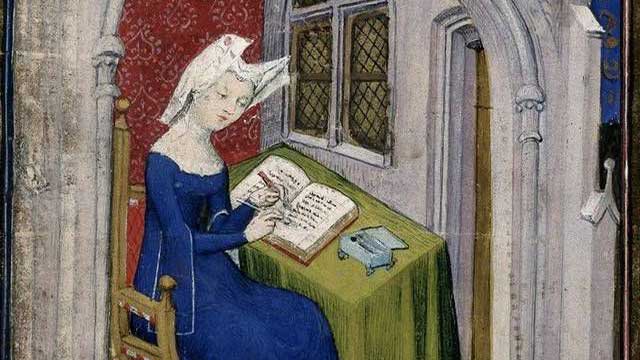
-
 Bea Lundt
Bea LundtThe picture of Christine de Pizan and our knowledge about her life show that this is not true. Christine de Pizan (1364 – c. 1429), born as Cristina da Pizzano in Venice, was a poet and author at the court of King Charles VI of France. Christine produced a large number of vernacular works, in both prose and verse. Her works include political treatises, mirrors for princes, epistles, and poetry.
This very famous miniature is an illustration from a book, handwritten in the years between 1410 and 1414 and preserved at the British Library in London (Harley MS 4431, Vol. 1, fol. 4 r). This manuscript contains texts by Christine de Pizan and is called The Book of the Queen, as it had been produced on behalf of and dedicated to Isabeau of Bavaria, wife of King Charles VI of France. There is another miniature showing Christine on her knees dedicating the book to the French queen. Christine can be identified by her facial features and style of dress.

Detail of: Master of the Cité des Dames and workshop, 1413 - 1414, parchment, 36,5 cm x 28,5 cm, British Library, London. © British Library, London. Photo: the author
In the centre of the aforementioned picture, a woman is shown sitting at a table and writing into a voluminous book. With her left hand, she is erasing coloured letters with a knife and with her right hand correcting them. This dynamic gesture of self-correcting fills her working situation with life. On her head is a headdress typical for a widow, the guimpe/wimple. Around the desk, we see some fictive architecture with a broad symbolic meaning: it shows a room which is specifically tailored to an intellectual working woman but also opens to the outside, as there are windows, an arch, and entryways. The roof of another storey marks the building as a town house. Though the scene is an interior one, the colours on the woman are bright, and there are warm red colours around her. This is different from older pictures showing clerical female authors in the narrow, closed rooms of a cloister.
‘Je, Christine’: An independent author defining her role in society
The picture shows a professional female author in an urban context in the process of writing a book and working for the public, where she is honoured as being part of the highest level of society. There are similar pictures with Christine sitting behind her desk with an open book and people coming and arguing with her in a lively manner. In one, a young man, who has been identified as her son, stands in front of her and speaks to her. Another one shows four men visiting her in her room and discussing her writings with her. Sitting Christine, standing men: the arrangement shows that the guests will leave soon. Such encounters are also atypical for a cloister, which is said to be the usual space for educated women.

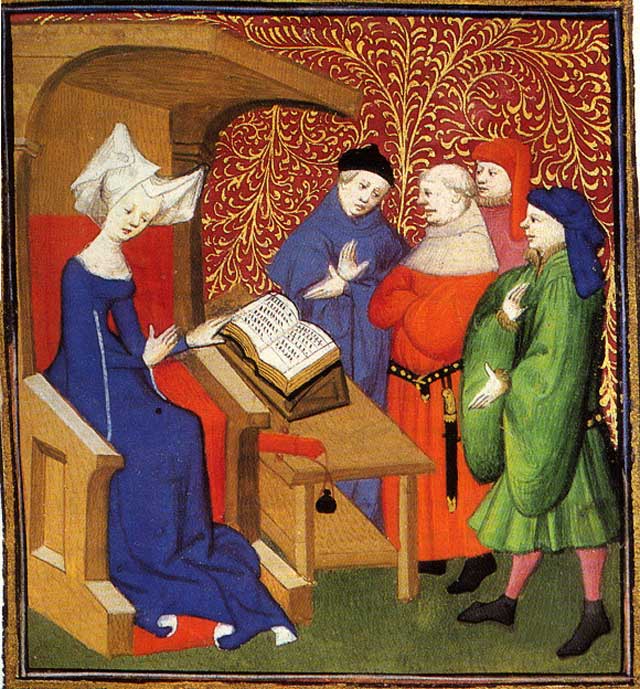
Detail of: Master of the Cité des Dames and workshop, 1413 - 1414, parchment, 36,5 cm x 28,5 cm, British Library, London. © British Library, London. Photo: the author
As experts see it, it was Christine herself who ordered the illustrator to characterise her in this manner. Several autobiographical comments of hers document that she liked to show herself living this individualist intellectual lifestyle. Traditional scholars call this typical for the Renaissance, which began a bit after Christine’s lifetime. Very often in her books we find ‘Je, Christine’ (‘I, Christine’), at the beginning of a chapter.
Christine’s life story
Christine was born in Venice in 1364 as the daughter of a doctor of medicine and astrology. He was called to the French court in Paris. Christine married a royal secretary and had three children. But then her father, her husband, and the king who had supported the family died. Christine was 25 years old and had to care not only for her children but also for her old mother and younger relatives living with her. She decided not to marry again but to support her living by writing. Her oeuvre contains poems alongside utopian, philosophical, historian, didactical, allegorical, and autobiographical texts. Noble families ordered her books and paid her well. In her old age, she escaped from the civil war in Paris to a cloister nearby where she died around 1429.
The first secular female author in Europe
With her Italian-French background, Christine is an example for the migration of intellectuals in southern Europe in the late Middle Ages and early Renaissance. She was not herself noble but came from an academic family and remained near the court. She was privately educated, mostly by her father, and also educated herself using the offer of the erudition centre in France. Living within a totally Christian cosmos with a spiritual way of thinking, she was not a clerical but rather a secular woman. In her books, she fought for gender equality, especially in education, as well as for recognizing the extraordinary performances of women in the past and in her own time. She wanted this knowledge to be part of a new understanding of history. She sharply protested against texts which reduce women to sex objects. With her pugnacious notes, she provoked the first literary quarrel about femininity and masculinity in Europe, the ‘Querelle des Femmes’.
The masculinisation of literacy and education in the modern era
In premodern Europe, competencies in literacy were considered more or less ‘feminine’. Girls learned to read at least the Bible to their families; noblewomen were taught languages and literature to be able to marry into different countries. The ideal for masculinity was fighting strength; sitting with books seemed to be viewed as non-masculine. Many kings and noblemen were illiterate. This changed in modern times. Literacy became part of the public world and school education developed as a privilege of men.
In the colonial period, Europeans attempted to impose this central European order on the African colonies: women were relegated to the private sphere, while men had the privilege of acting in public, which was more valued. The colonisers argued these gender roles were anthropologically fixed constancies, and they had the civilising mission of transferring this pattern to their colonies. But African scholars insist that in precolonial times, polar structures of different worlds for men and women did not exist, exactly as they had not in premodern Europe.
Conclusion: Confirming non-dualistic, fluid gender concepts
As we still need to fight against the discrimination of women and girls in educational systems worldwide, the message of the picture might be encouraging. This visual icon helps to deconstruct a common myth about Europe and to reject static ideas about continuities of bipolar gender structures. Even in the European Middle Ages, independent female authors were shown, combining inside and outside worlds. To see that it was different in history motivates us to see the hybridity of gender structures on both continents, which do not merely follow the dualistic scheme of men working in public professions and women working as housewives.
References:
- Christine de Pizan: Le Livre de la Cité des Dames. Stock 1986 (French).
- Christine de Pizan: The Book of the City of Ladies (Penguin Classics) rev. 2000 (English).
- Christine de Pizan: Das Buch von der Stadt der Frauen. Originally in Middle French. Translated and with commentary and an introduction by Margarete Zimmermann, Orlanda Buchverlag Berlin 1986, dtv 1999 (German).
- Roberta L. Krueger: Towards Feminism: Christine de Pizan, Female Advocacy, and Women’s Textual Communities in the Late Middle Ages and Beyond. In: Judith M. Bennett, Ruth Mazo Karras (eds.): The Oxford Handbook of Women and Gender in Medieval Europe. Oxford University Press 2016, pp. 590-606.
- Henry Kam Kah: The Sacred Forest. Gender and Matriliny in the Laimbwe History (Cameroon), c. 1750-2001. Berlin 2015.
- Oyewumi, Oyeronké: Colonizing Bodies and Minds. Gender and Colonialism. In: ibid (ed.): Invention of Women. Making an African Sense of Western Gender Discourses. Minneapolis, MN 1997, pp. 121-156.
Edited by Kelly Thompson.
published August 2020
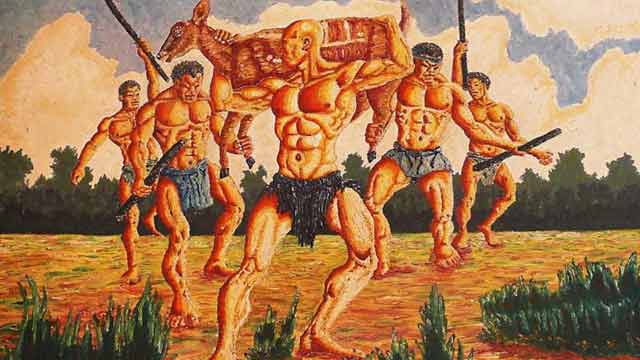
-
 Emmanuel Aklasu
Emmanuel AklasuOwusu-Ankomah’s painting at first glance reveals a foreshortening company of energetic warriors, muscular framed with broad shoulders, muscled chest, and a narrow waist in a chiselled physique. The hunters were portrayed with huge hands, clenched fist, knuckles, strong legs visibly revealing biceps brachiis and dabs of varicose veins on the arms, thighs and legs evident of powerful and efficacious men. Before modern society, the average male spent most of their time hunting, protecting, and engaging in physical activities that increased their muscle mass and maximize their muscular proportions. Owusu-Ankomah’s production exhibits masculine competitiveness and a sense of adventure – the brave team were a-fire with passion, armed with sticks in a leopard-like graceful movement as the captain leads carrying a captured antelope shoulder high.
The warriors are noticeably naked with only a string of grass costume wrapped around the private parts which is the formal and ceremonial attire for the ancient culture. Owusu-Ankomah’s choice of colour in rendering the human figures lends credence to the fact that colours have a strong position in identifying humans while hunting. Wearing hunter orange is the best way to ensure other hunters see you and don’t accidentally mistake you for game in complex backgrounds that are often green or brown. The artwork reveals harmonizing brown colours which tend to create a central focal point in the entire picture frame to evoke earthiness, emotions, security and safety related to the natural world. The tints and shades of hues enhanced the main features in the painting to vividly communicate the intended message as well as create an illusion of depth.
A thick flora forms the background of the painting evident that the hunting expedition was carried out in a thick forest. As the fearless, able-bodied men advance through shrubs in high spirit of mission accomplished, an earthly scent swirled around them coupled with a sense of eagerness to meet a welcoming, expectant and jubilant community. Hunting is an extremely important mode of human-nature interaction closely linked to culture patterns and value systems. This engagement with wild animals is thought of as part of a deeper unity with nature, which means being part of nature in physical sense (Lowassa et al., 2012). Sustainable hunting prescribes taking as much as needed and as much as the habitat and the population can regenerate. Suffice to say, when hunting for a game form the basis of a year-long survival of a people, it calls for a deeper reflection. Owusu-Ankomah’s painting comes on the back of an ancient heritage of a distinct tribe in Sub-Saharan Africa.
‘Aboakyir’ translated ‘deer hunt’ is a festival uniquely celebrated by the Effutu (Simpa) people of Winneba in the Central Region, southern coast of Ghana, West Africa. The festival which is celebrated annually on the first Saturday in May has the historical antecedent of the replacement of a human sacrifice to a tribal god with a leopard – an alternative which resulted in the loss of many more lives than the sacrifice of a single slave. Consultations with the deity for a more humane alternative resulted in the “Wansan” (the deer) as a practicable and most acceptable substitute. The capture of a live deer, like the leopard, required many more hands than the members of the royal family could find. The additional hands required were solicited from the local militia as a service to ‘the stool – a symbol of chieftaincy, royalty, custom and tradition’. It was this change in form; that is, the involvement of the local militia, that the annual consecration and appeasement of the deity became a public, state-wide affair. This marked the birth and hence the origin of the “Aboakyer” festival.
The design of the Effutu State emblem tells this story; the ‘stool’ on which the King is installed sits on the “Wansan” (the deer).

Emblem of the Effutu state (Source: Palace of Oma Odefe)
The festival is therefore important for the ‘stool’, its occupant and the entire royal stool family. It is a religious duty and an obligation for the general citizenry to ensure its celebration annually is sustained to honour the ancestors and protect their historic culture for posterity on the back of removing evil and predicting a good harvest for a prosperous life in the coming year. The week-long activity begins with two traditional warrior groups known as the ‘Asafo’ companies consult their shrines for clearance, protection and early catch. The warrior groups clad in distinct costumes with distinct musical instruments — the ‘Tuafo' and ‘Dentsefo’, move to their respective hunting grounds at dawn on Saturday, wielding sticks and clubs amid chanting of war songs. No weapons, other than clubs and sticks are used to catch the deer, as it must be brought back alive.
By far, the relevance of Owusu-Ankomah’s painting is not in doubt as it fosters a deeper understanding of the historical and societal roles of hunting within Ghanaian communities. The painting holds both cultural and educational significance which sparks discussions on conservation, sustainable practices, and the preservation of cultural heritage. Consequently, bridging the gap between present generations and the rich tapestry of cultural and environmental history. The sight of the painting in Ghana’s National Museum serves as a poignant reflection of the nation’s cultural heritage and connection to nature. In this visual narrative, the core of historical period of a distinct society is unearthed.
References
- Lowassa, A., Tadie, D. & Fischer, A. (2012). On the role of women in bushmeat hunting – Insights from Tanzania and Ethiopia. Journal of Rural Studies 28(4):622–630.
Further Reading
- Anane-Frimpong, D. (2022). Aboakyir: Deer hunt festival. Link Retrieved on April 10, 2023
- Rubiano, W. (2017). Planting trees for the aboakyer festival 2017. Link
Published March 2024
 Barbara Lutz-Sterzenbach
Barbara Lutz-SterzenbachAn energetic scene. Five men in a flat landscape approach the viewer. Their bodies are naked - except for their loincloths - their faces grim. Muscles in the bright light stand out under the skin, their chests bulge voluminously - they are timeless heroes. The men do not look at the viewer of the picture. With their long, dark sticks firmly in their strong hands, they gather symmetrically around the bald man in the foreground. He presents himself with an antelope in his raised arms. His bald skull points to the left, as does the antelope's head.
On closer inspection, some things are irritating. Are the men dancing or walking? Where is the animal spatially located? Somehow it is on the shoulder of the man, but the legs are captured by the men behind, who would be much too far away for that. Is an event, an episode (as in a photograph) depicted? Or does the symmetry of the composition speak more of a constructed symbol, a sign, as in an emblem? The latter would support the strict division into horizontal planes: with the islands of grass in the foreground, the flat, ochre-coloured plane in the middle ground and the forest with sky in the background. But then again many design principles undermine this order: the tense, energetic movements of the figures, the strong brushstrokes, the irregular shapes of the white clouds and the tufts of grass, the dynamic accents of the sticks.
We know from our Ghanaian colleagues that what is depicted here, the catching of the animal, is part of a ritual celebration and a festival (the Aboakyer Festival). Here the moment is shown when the men have stepped out of the dark, hermetically sealed forest in the background with their prey and now present themselves in the bright light with their success. A comparison with the results of an image search on the internet for “Aboakyer festival” (Fig. 2) shows that this is the iconic moment. Here the idea of the festival seems to be condensed. And this also explains the emphasis on muscles: the hunters must be well trained to match the animal's speed and strength.

Fig. 2 (Google search for "Aboakyer Festival" on 9.9.2023 - the first page of results) Screenshot: Ernst Wagner
Owuso-Ankomah's painting focuses on the men with the animal. At first glance, the painting shows above all the strength of the men. The space thus becomes the backdrop for their performance. Their bodies are not only idealised but theatrically exaggerated, their muscles as if illuminated by a spotlight. The geometric centre of the picture, through which the horizon also passes, brings the loincloth of the leader into focus (see fig. 3) - perhaps an allusion to male potency?

Fig. 3: Composition sketch (horizon and geometric centre) Photo: Ernst Wagner
A comparison with photos on the same theme from the Heritage Centre in Winneba (see Fig. 4-6) shows clear differences to the depiction in Owusu-Ankomah's painting. In the artwork, both animal and hunter have their mouths open, exhaustion is evident in both. In this way, too, man, animal and landscape are connected - despite hunting and death. The artist uses the warm ochre tones in such a way that the earth, the human body and the animal hardly differ in colour. Since the animal is still alive, its head does not have to be held. Thus, visually, it seems to elude a depiction of "being trapped", also due to the ambiguous spatiality described above. It could almost just as easily be understood as a triumphant appearance of the animal, to which the men are subordinate as bearers and assistant figures - comparable, for example, to Jan van Eyck's depiction of the lamb (see fig. 7), which also marks a mediating position between victim and victor, between human beings and God.

Fig. 4-6: Photos from the Heritage Centre Winneba Photos: Ernst Wagner

Fig. 7: Van Eyck, Lamb of God, Image Detail: Ghent Altar. Oil on wood, 350 x 461 cm
Cathedral of St Bavo, Ghenthttps://commons.wikimedia.org/w/index.php?curid=109213 [28.10.2024]
This image sets against each other contradictory concepts: static-symmetrical-ordered vs. dynamic; accidental situation vs. deliberate staging; documentation vs. sign; hyperrealism in body and space vs. symbolic charge. It sets these contradictions against each other in the unity of the painting.
Reference
Published March 2024
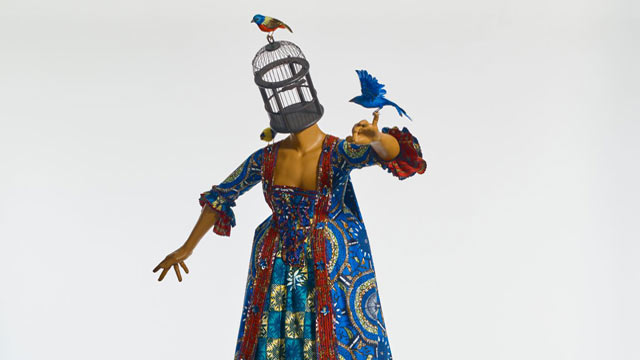
-
 Bernadette Van Haute
Bernadette Van HauteMrs Pinckney and the Emancipated Birds of South Carolina (2017) is a sculpture in the round composed of a headless, female, ‘white’ mannequin swathed in historical dress and balancing on a globe. In place of her head is an empty birdcage from which three birds have escaped. The work was created by the internationally renowned artist Yinka Shonibare (born 1962) who is a black man of Nigerian descent living in the United Kingdom. He can thus be identified as a member of the African diaspora. In his artworks he usually engages with concepts that are related to the politics of colonialism and the slave trade and explores cultural identity in the context of globalisation. [1] While his creations are deeply critical of western imperialism, he always makes sure to render them visually alluring and engaging to elicit a visceral response. [2]
This particular artwork was co-commissioned by the Yale Center for British Art and Historic Royal Palaces, Kensington Palace, and created especially for the exhibition "Enlightened Princesses: Caroline, Augusta, Charlotte, and the Shaping of the Modern World".[3] This adds an aura of seriousness of intellectual and aesthetic intent to the sculpture. In the title of the work, the artist has identified the woman as Mrs Pinckney, or Elizabeth (Eliza) Lucas Pinckney, who at the age of 16 was put in charge of her father’s plantations in South Carolina. [4] She had a major influence on the colonial economy by developing indigo as an important cash crop to be processed as dye. [5] The sculpture is said to be the artist’s response to Eliza’s encounter with the German Princess Augusta in 1753 which further identifies her as a member of the social elite. [6] All of the above components help to retrieve the identity of the subject, the ideology being addressed as well as the message in the image.
The artist has encoded his artwork with visual tropes that clarify and enforce his message. While the style of Eliza’s dress is based on 18th-century fashion, the fabric used is Dutch wax cloth which Amah Edo describes as a “marker of Africanness”. [7] Manufactured in Europe but using the Javanese batik printing technique, the cloth “came to be produced specifically for West African markets in the 1890s … [and] its aesthetic was adapted by manufacturers to suit these new consumers’ tastes”. [8] Now widely perceived as symbolic of tradition, the Dutch wax cloth is regarded “as a high-end commodity desirable to elite customers”.[9] The material of the woman’s dress thus not only identifies her as a member of the elite but also refers to Africa as the source of her wealth: it is through the labour of the African slaves that Eliza was able to run her family’s plantations in America. Likewise, the blue of the material – and the bird on her finger – is a direct reference to her successful cultivation and processing of indigo. It can thus be seen that the artist explores concepts of race and class through a careful choice of materials and colours in his imagery. By dressing the white woman in African cloth, he complicates history and racial identity in an effort to startle the viewer’s conscience.
As the plantation’s manager, Eliza occupied a position of power which is visually manifested by her being placed literally on top of the world. The latter is represented by an eighteenth-century globe that shows the colonial territories of the British empire. [10] Eliza is thus turned into a symbol of white superiority and privilege granted by the politics of imperialism. Her balancing act, however, proves to be precarious and elicits tension as the ball can roll at any moment and topple her from her position of power. It is also interesting to note that the globe is an attribute of Fortune, the fickle goddess of antiquity. Fortune is blind and even eyeless, and the globe “on which she stands or sits, originally indicated instability, but to the Renaissance it was rather the world over which her sway extended”. [11] The headless Mrs Pinckney thus shows a cunning resemblance with the antique goddess Fortune “who bestows her favours at random”. [12]
The favours bestowed by Eliza relate to her release of the birds from the birdcage. However, instead of flying away to freedom, they come back to her. She playfully lifts her left arm for an indigo-blue bird to perch on her little finger, while another bright-coloured bird sits on her left shoulder and a third one on top of the cage. According to Shonibare, the birds are a metaphor for slaves and her gesture of setting them free symbolises her wish to emancipate the slaves – hence the title Mrs Pinckney and the Emancipated Birds of South Carolina. [13] The narrative thus presents a paradox between the white woman’s privileged yet unstable position as powerful, wealthy mistress and her fickle wish to liberate the black slaves whose destiny is entirely in her hands.
In this work, Shonibare has given his own interpretation of the story of Mrs Pinckney, choosing to focus on the effects of the slave trade and colonisation in the eighteenth century in the United States, then still British territory. While the playfulness of his rendition and its aesthetic appeal conceal the harsh realities of enslavement, the dehumanisation of black people as a result of colonial politics still filters through in the form of brightly coloured birds which, although set free, are so tamed – read oppressed and subjugated - that they are not able to fly.
[1] https://en.wikipedia.org/wiki/Yinka_Shonibare (26 July 2021).
[2] Yale News, 2017. Yinka Shonibare MBE (RA): ‘Mrs. Pinckney and the Emancipated Birds of South Carolina’. Video. Yale News, Yale British Art, 25 July 2017. https://news.yale.edu/videos/yinka-shonibare-mbe-ra-mrs-pinckney-and-emancipated-birds-south-carolina (26 July 2021)
[3] Yale News 2017.
[4] Yale News 2017.
[5] https://en.wikipedia.org/wiki/Eliza_Lucas (26 July 2021).
[6] Yale News 2017.
[7] Edo, Amah M. (2019). From African print to global luxury: Dutch wax cloth rebranding and the politics of high-value. In Mehita Iqani and Simidele Dosekun (Hrsg.). African luxury: Aesthetics and politics (pp. 77-92). Bristol, UK / Chicago, USA: Intellect, p. 82.
[8] Edo 2019, p. 80.
[9] Edo 2019, p. 85.
[10] Yale News 2017.
[11] Hall, James. 1974. Dictionary of subjects and symbols in art. London: John Murray, p. 127.
[12] Hall, James. 1974. Dictionary of subjects and symbols in art. London: John Murray, p. 127.
[13] Yale News 2017.
 Nobumasa Kiyonaga
Nobumasa KiyonagaThe oeuvre of Yinka Shonibare CBE is often characterised by a colourful and at the same time amusing appearance. This facilitates the viewer's immediate access. This is also the case with his 2017 work Mrs Pinckney and the Emancipated Birds of South Carolina. What one perceives here at first glance is the figure of a lady wearing historical European clothing, a "Robe à la Française" from the 18th century. However, the clothing is unusually colourful. Moreover, the woman is standing on a sphere, albeit shakily and leaning forward somewhat. This image quickly connects with the traditional European iconography of "Fortuna", i.e. the admonishing, allegorical symbol of "fate". It turns out that the sphere is the globe.
The graceful lady also has a strange head in the form of a birdcage. But its door is open and the three birds have long since escaped. This could be an allusion to Maurice Maeterlinck's The Blue Bird, the central message of which is the obvious true happiness. In any case, the caged head shows us that it is actually our thoughts that tie us down and hinder our actions, as is often the case. Seen in this light, at least this lady has succeeded in unmasking the internalised gender ideology and liberating herself mentally. But is it really a lasting liberation?
Who actually is this lady, this "Mrs Pinckney"? What fate is at stake? She is not known here in Japan, for example. A look at Wikipedia, for example, will help: she is considered one of the first emancipated women in the USA, who achieved prosperity with her pioneering attempt to grow indigo on slave plantations in South Carolina. This dye was in particular demand for military uniforms in Great Britain at the time.[1] That is why the lady is wearing this indigo dress. But where does the artist's reference to Mrs. Pinckney come from? A direct connection is hard to find at first. However, knowing that Shonibare describes himself as a "post-colonial hybrid"[2] - he was born in London as the child of Nigerian parents, grew up in Nigeria and studied in London - and that he very often uses "African wax prints" for his works,[3] one gains more clues about the work.
At present, those wax prints seem to represent "authentic" African life, but they have an Indonesian origin and were made by Europeans, especially Dutch, and sold and distributed in West Africa.[4] In this sense, they are in fact a transcultural product. Through their use, the artist points to the "cultural imagination as a power structure and means of domination"[5] in the spirit of the critique of representation. In this specific work, too, the wax prints, which have something in common with the fate of indigo, find their use in clothing.
Thus, it turns out that the lady functions as the encouraging and, at the same time, admonishing symbol of the emancipation of women, which never proceeds in a linear fashion and is still threatened and endangered everywhere today. Moreover, this emancipation movement must always be seen in an even more complex context, which was and still is connected with the fate of countless people - in Mrs. Pinckney's case, for example, that of the slaves, according to the message of the work.
[1] https://de.wikipedia.org/wiki/Eliza_Lucas_Pinckney (27 July 2021)
[2] Shoji, Sachiko. 2019. “History is Happening Now: What Connects Us All to the Art of Yinka Shonibare CBE.” In Exhibition catalogue Yinka Shonibare CBE: Flower Power. Fukuoka: Fukuoka Art Museum, p. 105. Incidentally, this is the artist's first solo exhibition in Japan.
[3] Shonibare CBE, Yinka. 2019. “Artist Statement. Woman Shooting Cherry Blossoms.” In Exhibition catalogue Yinka Shonibare CBE: Flower Power, Fukuoka: Fukuoka Art Museum, p. 13.
[4] Ibid. According to Shoji, Japan also became involved in the production of those wax prints and their export to Africa from the late 1920s to the mid-1990s. See Shoji 2019, 106-107.
[5] Shonibare 2019.
 Ernst Wagner
Ernst WagnerA life-size, headless, female mannequin balances on a globe showing the African continent from the front. Her Biedermeier-style clothing in bright colours shows a deep décolleté. The fabric pattern is Dutch Wax, which can be inferred from the given information on the work. In combination with the birdcage and the three colourful birds outside the cage, the sculpture is reminiscent of surrealist montages like in René Magritte's artworks.
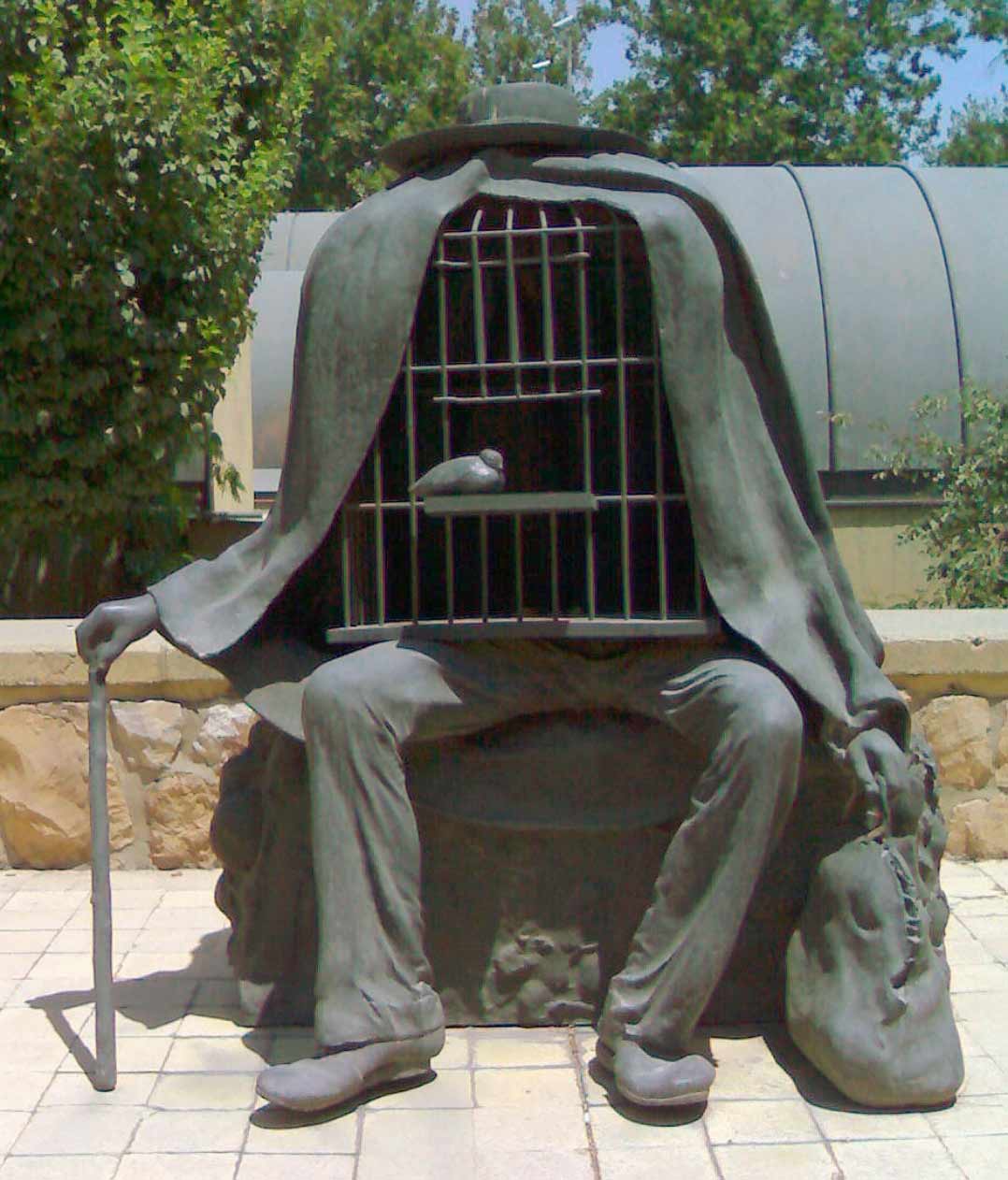 René Magritte, Le Thérapeute (1976), Tehran (Copyright: WikiCommons)
René Magritte, Le Thérapeute (1976), Tehran (Copyright: WikiCommons)The title refers to a concrete iconography that makes research necessary which - as a reward - helps to decipher the birds and the blue dress: Mrs Pinckney refers to a prominent historical woman (Eliza Pinckney, 1722 - 93) whose biography - as one can read on Wikipedia - was deeply entangled with English colonialism and the American War of Independence. Shuttling between North America and England, she was remarkably innovative and entrepreneurial. The birds in the sculpture allude to a specific anecdote when Eliza Pinckney gave such birds as a gift to the mother of the British King George III. The blue of the dress can be seen as an allusion to Pinckney's production of indigo in South Carolina.
The globe and the pattern of the dress - like the title - also allude to the theme of colonialism. Even the material specification of "Dutch Wax" tells a tangled story in colonialism. But the female role model embodied by Eliza Pinckney in her time, obviously denies the usual connotations associated with colonialism, slavery and looting. The birds outside the cage perhaps also make references to the immanent contradiction between freedom and captivity.
Alluding seems to be the most adequate term to grasp the specificity of the visual language of this work. Nothing is clearly asserted, no thesis is put fprward. Rather, a dazzling, assembled, ambiguous figurine stands in the context of 18th-century colonialism, hinting at many themes that are significant also today: women's roles, capitalism, domination and exploitation of nature, colonialism, freedom and oppression. This fits in well with the immediate perception of the object. Looking at the artwork, one gets the impression of a strange balance of lability and stability, of theatricality and ridiculousness, of immediate sensuality and learned knowledge.
Now, the question remains as to how this work is located in the transcultural contact zones. Today, it is exhibited in a US collection of British art, the "Yale Center for British Art". The artist himself is called a British-Nigerian artist. He himself uses his English title of nobility CBE (Commander of the British Empire) in his name. Since documenta 13, he is well known in the context of Global Art. In terms of iconography, the work is also located at these interfaces. Through montage, it merges different associations into an inherently contradictory complexity that cannot be resolved. This creates a fundamental openness that is reflectes when we ask about its meaning: can we read the work as ironic alienation? Or as a commentary on history? Or as homage or, on the contrary, as criticism of the historical Mrs Pinckney? As a reflection of current and very serious issues or as a harmlessly playful object?
A video produced by the museum where the work is now located shows an analogous reception history (Link 1 / Link 2). How does the work constitute the “ideal” viewer? He or she is a decoding, deciphering viewer who allows the iconographic fixation to fail with relish because of the sensuality of the playful object, just as the narrative of Mrs Pinckney fails because of the mannequin's instability. The ideal, contemporary viewer simultaneously enjoys the openness and yet sees him-/herself confirmed in his/her anti-colonial habitus.
 Discussion
DiscussionDiscussion
EW: When I compared all three contributions, I was initially surprised by the large number of common intersections. This certainly points to the global power of interpretation of media representations in English (website of the collection at Yale, Wikipedia), which we could not escape either. We all researched Mrs. Pinckney on Wikipedia, we all trusted the video on the website as a source. But what is interesting now is how differently we deal with it and what different conclusions we come to. I have the impression that in your approach, Bernadette, the story of Mrs. Pinckney plays the biggest role, while in my text this story is rather only a possible reference point. I don't know if you can agree with me.
NK: Yes, I also see these differences. With Ernst, I see more of a fundamental, principled attitude in the analysis of the work. In Bernadette's interpretation, I found the interpretation of the birds as "slaves" interesting. I myself saw in it the - temporarily - liberated soul of an emancipated woman. Moreover, in this context, I also find your reference to the paradox of the actually already liberated "slaves" particularly illuminating, as it seems to have been derived from your discussion of colonial history in Africa.
BVH: When comparing our contributions, I was also reminded of the fact that art is always about other art, hence we looked for precedents that may have inspired the artist. But what I find most exciting about our interpretations are the differences in emphasis on the various meanings that are embedded in the work. For Ernst, the transcultural nature of the work stands out, as well as its openness in meaning. For Nobu, it is the reference to gender ideology and women’s emancipation that forms the core of the work, especially in light of ongoing gender discrimination. For me, it is the historical narrative that led me to interrogate the issue of racial discrimination which also continues today in movements such as #BlackLivesMatter.
EW: I share this, and I would like to follow up with a question. Is it possible that our respective contexts in which we work have influenced this? Not in terms of content – we agree on that – but in terms of patterns of argumentation. If you, Bernadette, place so much emphasis on the story of Mrs. Pinckney, does this perhaps reflect the great oral, meaningful storytelling traditions in Africa? And when you, Nobumasa, on the other hand, elaborate Mrs. Pinckney as an encouraging and at the same time cautionary symbol, does this perhaps reflect the great ethical traditions in Asia? My refusal of direct meaning-making and ethical service, on the other hand, would then be a European-style reflexive evasive manoeuvre to a (preferably unassailable) meta-level?
BVH: Good question indeed. In my opinion, this exercise shows how we are all conditioned by the sociocultural environment in which we live and work. Hence my response, from a South African point of view, focused on the story/history in order to highlight the importance of the work in decolonising the subject. While playfully complicating racial issues in a historical context, the artist mainly celebrates Africanness by means of materials, patterns and colours. This allowed me to infuse my interpretation with African epistemologies. Your response, Ernst, could be regarded as a refusal, perhaps, to acknowledge and engage with the deeper implications of the work and indeed rather shift the focus onto more theoretical concerns as inspired by German art historians? I am keen to hear Nobumasa’s view on this matter.
NK: Ernst's question about whether a Japanese ethical tradition might secretly be reflected in my interpretation is very difficult for me to answer. But as Bernadette has just pointed out, the social context in which we work definitely plays a certain role. While globalisation has erased spatial distances, perhaps not necessarily mental ones. For Japanese today, Africa is still very distant, in the double sense mentioned above. Although Africa is the second largest continent with 55 countries and countless information is available, detailed and nuanced ideas about it are often missing from our consciousness. My leap into the general, or ethical, implication of the work could possibly be explained in this way. Seen in this way, I have probably unconsciously "traced" my own situation. But this also underlines the fact that the critique of representation – in the sense of a critical questioning of pictorial representations – is still as relevant today as it ever was.
EW: I was very grateful to you, Nobumasa, for the emphasis on the ethical, because we always have to include the ethical dimension in the context of education. My argument from a German point of view would be that the interpretation of a work like Mrs. Pinckney must not be arbitrary. That would be the ethical responsibility of the interpreters. We will have to come back to this in a moment when we discuss conclusions for a toolbox for decoding images.
But first I would like to learn more about the differences between our approaches – even though there is a large area of consensus. In the theoretical discussions we had some time ago, we clearly distinguished the Japanese concept of 'kansho kyoiku', the South African concept of 'art criticism' and the European concept of 'work immanence'. Could you elaborate on the question of how these positions are reflected in your texts?
NK: The introduction of dialogue-based art viewing from the USA in the late 1990s revived the field of art education in schools or museums in Japan. Since then, this didactic method, which seems to seek to maximise the viewer's part in interpretation through its strict rejection of knowledge transfer and ultimately prioritises the discussion of interpretation, is still in vogue today. But a crucial question still arises as to how the meaning of interpretation, or meaningful interpretation, is secured without degenerating into mere arbitrariness. In this respect, too, our experiment seems to be very inspiring.
BVH: At the University of South Africa we believe that the basic skills required to interpret objects of visual culture are best taught by beginning to practise art criticism. The proper domain of a critic is the description, interpretation and evaluation of concrete works of art. As a first step in this process, students must learn how to describe and interpret artworks. Essentially art criticism is a practice embedded in western epistemology that has been appropriated to study the art of contemporary Africa in a global context. When investigating the historical arts of Africa, the method remains the same although the local context of traditional culture and customs must be taken in consideration. My interpretation of Shonibare’s work was guided by these very same principles.
EW: Finally, I would like to ask you something with regard to the 'methodological kit' proposed by the editors of this volume: Which methodological approaches for the interpretation of images do you consider absolutely necessary – independent of our respective Japanese, South African or European context? And I'll add a second question in a moment: Does that leave one area that plays a role exclusively in your respective local context?
BVH: From an art historical point of view, the methods best suited for the interpretation of political images stem from a contextual approach which demands critical consideration of the cultural context of the work, its artist and of the social practices and power relations in which it is embedded. As the interpreter, you can apply the iconological method: first describe what you see – formal elements and details – and then identify the iconography, the specific subject and symbolism of the work. Do some research on facts and historical context, as well as the reasons why the work was made or commissioned. Then you can explain how all this information was put together to express the meaning or content of the work and decide what message or ideas the artist was trying to communicate. Because every interpreter comes to the artwork with his/her own worldview, the interpretation will differ depending on that worldview and not on the local context. For example, because I attach more importance to the idea of decolonisation, my contextual approach is combined with and influenced by decolonial theory.
NK: Basically, Bernadette, I gladly agree with you, especially with regard to your gradual approach. I also think it is reasonable and sensible from a pedagogical point of view. But this raises the question of what actually constitutes a "political image" or "when" an image becomes political. Of course, there are pictures or works of art that are obviously and unmistakably recognisable as such, but there are also those that are much more subtle, that are not so noticeable to foreign eyes, or that were not originally created with political intentions, but that in retrospect seem to be quite political. What one considers to be political depends, after all, very much on the view of the observer, possibly even completely apart from the original intention of the creator. In this respect, it seems to me that a fundamental attitude is indispensable for the viewer to be able to keep a mental distance from a picture and its context as well as from himself and his own horizon in order to perceive a picture (also) politically.
EW: Thank you both, because from my point of view I cannot and do not need to add anything more. I completely agree that an iconological basis, as Bernadette has formulated it, is needed. And I am deeply convinced that the reception-historical and reception-theoretical extension that Nobumasa has added is absolutely necessary, indeed indispensable, for the toolbox. I can add nothing to this bundle of methods.
What perhaps came up short in our conversation were the different cultural conditions and the resulting consequences for interpretation. But we'll make up for that on another occasion.
NK: Finally, let me add something to my previous statement. For responsible interpretation, we need above all a willingness to engage in dialogue. I experienced this again in our conversation and our experiment also shows this in an exemplary way.
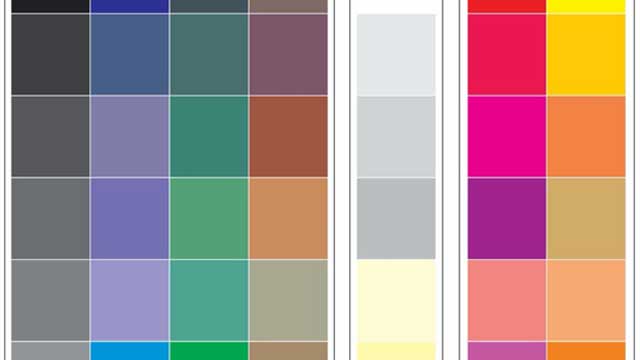
-
 Patrique deGraft-Yankson
Patrique deGraft-YanksonAkan definition of Colour
The Akan people have no precise terminologies that assign a ‘name’ which interprets into the meaning of colour the way it is understood in English and other languages. In other words, most of the answers to the question ‘what is colour’ makes very little meaning to a pure Akan speaker whose understanding of colour transcends a scientific definition. In spite of several efforts by contemporary linguists to subject the Akan concept of colour to nomenclatural consideration, the traditional Akan people continue to describe hues by their relationship with similar colours in nature.
Consequently, terminologies in Akan, which are associated with the word colour, are likely to describe what a hue looks like in association with the natural (or in few occasions, manmade environment) or how a hue makes one feel, think or behave. Among numerous attempts at coming up with an Akan word for ‘colour’, the ones many respondents settled on were yɛbea, subea, su, husuo, ahusuo and bↄbea. These words, which mean almost the same in Akan, literally describe the nature, quality or, probably more precisely, the physical look/appearance of something. By implication therefore, the terminologies deduced are more general and their usage go beyond the description of just the colour of an object or a situation under discussion.
Colour names
Colour names among the Akan people, are often given directly after identifiable objects within the known environment. Therefore, names given to colour in Akan have the tendency of affecting the perception, understanding and accurate adaptation of colour among the Akan people. Name, like colour itself, has strong cultural significance. Therefore, names that are understood in one’s language are likely to have better cultural associations and connections with their people than those that sound foreign.
In this regard, many Akan people are of the opinion that all efforts at identifying names for colours should continue with the culture of associating colours with the local names of known objects among the Akan people. For instance, if there are names such as ahabanmon (fresh leaves) for green and akokↄ serade/akokↄ aŋoa (chicken fat) for yellow, there could also be names like ahabanfunu/ahatawfun (dead leaves) for brown, gyafrane/gyanframa (fire flames) for orange, gon/dwene (gray hair) for gray, etc.
Number of colours
The number of colours recognizable by a traditional Akan are as many as those identifiable and describable in nature. As already indicated however, recognized Akan colour names and their identification are mostly in relation to those discernible in nature, for which reason their descriptions are broadly categorized. The following are colours available in the traditional Akan language.
- Kↄkↄↄ (Red)
To a very large extent, kↄkↄↄ, the sound of the name of the colour identified as red among the Akan people is more onomatopoeic than semantical in interpretation. Kↄↄ, the root word, visualizes the sensation of the word glow. Therefore, kↄkↄↄ actually connotes more to complexion with a strong bright colour. It commands an ambience of hot brightness, usually with scorching visual sensation, rather than a simple colour name. For this reason, kↄkↄↄ is attributable to all objects that emit some warmth in their visual ascriptions. Therefore, whilst a ripe pepper is described as kↄkↄↄ, ripe mangos, ripe oranges, glittering gold, burning coal, sunny skies, flames, the skin of a ‘white man’, etc. are all kↄkↄↄ as well. In the Akan colour scheme therefore, colours that could be placed analogous to kↄkↄↄ include red, orange, pink, wine and the like.
- Fitaa/Fufuw (White)
Fitaa/fufuw is white, light, plain, spotless, clean, neat, pure, holy, untainted and incorrupt. Moreover, fitaa/fufuw is always associated with cleanliness, purity, victory and spirituality. It denotates white coruscating brightness, visual spotlessness and stainlessness. No matter where it is spotted, the associated psychological and spiritual experience comes naturally, and this is inert in almost every Akan.
Another dimension of fitaa/fufuw is its direct association with light especially when it reflects bright objects to shine. When something shines or sparkles, or hyerɛn as it would be said in Akan, it is associated with brightness and for that matter, white. In this regard, a spark that would be lighted by any colour to give the feeling of brightness will be described as fitaa. The reason is that the psychological feeling of brightness invoked by the sensation is more important than its sensation on the eye.
- Tuntum
One does not need to understand the word tuntum to be able to link its semantic association with weight and heaviness. Tuntum connotes darkness and visual weight, and technically expressed, all the cool colours on the colour wheel fall within the brackets of colours in this category. Tuntum connotes darkness, gloom and heaviness. To the Akan, tuntum does not only stand for black, but absence of lightness, brightness, shine, glow, gaiety, happiness and sparkle. This is not to say that tuntum in Akan spells doom. Just as with all the other colours, the reason behind its application is what matters most to the Akan. For instance, the weight and compactness of tuntum also represents unmatched strength and solidity. Hence, expressions such as black power, black beauty, black star and black magic connote the highest levels or degrees attainable in the referent condition. So, whereas tuntum or dark colours are used in the expression of gloomy and moody conditions or situations, they are also considered for situations that require seriousness, formality, deep concentration, calmness, maturity, strength and energy. Again, in its association with darkness and stillness of dark night, tuntum also connotes calmness, coolness, rest, quietness and serenity.
The Akan Colour Chart: Minimal Dimensions of the Akan Colour Scheme
The following charts present attempts at putting into perspective the minimal dimensions of the Akan colour scheme. As mentioned earlier, everything that qualifies to be described as colour from the Akan point of view can be located within three broad colour spectra—tuntum (dark), fitaa (white) and kↄkↄↄ/memen (glow, spark, shine), and they physically manifest in the shades and tints of black, white and red. Right from this point, it is clear that colour among the Akan is perceived more with feelings than just the light sensation it emits. Therefore, the colours that fall under these themes are believed to share more physiological, psychological and spiritual feelings than aesthetical feelings (even though that is an integral part). In the examples of natural colours associated with colour names in the tables below therefore, the ripeness of pepper, mango, orange and tomatoes are all described as kↄↄ, establishing the overall feeling they evoke. The greenness of a virgin forest, the darkness of rain clouds, the depth of the deep blue seas and the blackness of charcoal are all tumm or tuntum (dark) because of their command of psychological heaviness. The bright skies, the white flower, cotton and the grey hair are all fitaa because they share similar ambience and invoke the same feeling of brightness. It should also be noted that apart from tuntum (black, dark), fufuw/fitaa (white, bright) and kↄkↄↄ/memen (red, glow, spark, shine), none of the associated colours has a name in Akan. What they have, at best, could be discussed as descriptions. In other words, colours of objects are rather described than named.
The following charts illustrate colour from the perspective of the participants in this study, as illustrated by the author:
Figure 1: Akan colour category Tuntum and its natural colour associations. (Photo: the author)
Figure 2: Akan colour category Fitaa/Fufuw and its natural colour associations. (Photo: the author)
Figure 3: Akan colour category Kↄkↄↄ/Memen and its natural colour associations. (Photo: the author)
From the above charts, the Akan colour reference scheme above was derived.
Implications for design and design education
Cultural understanding of colour from Akan perspectives will direct how colours could be appropriately grouped under the appropriate themes to enhance effective appreciation of design as well as effective communication. It would also ensure that the role of language and cultural interpretation of colour is given due recognition in the design education process.
Reference
- deGraft-Yankson, Patrique (2020), ‘Of the Akan people: Colour and design education in Ghana’, International Journal of Education Through Art, 16:3, pp. 399–416, doi: https://doi.org/10.1386/eta_00041_1
published November 2020

-
 Ebenezer Kow Abraham
Ebenezer Kow AbrahamTheophilus Kwesi Mensah and the Placemaking Paradigm
Within the rebranding and the making of new identity for Winneba as enshrined in the Effutu Dream Project, the name Theophilus Kwesi Mensah cannot be overlooked in this intercourse. This is not only because he engineered the widely talked about installations: the Unity Monument, The Aboakyer Monument, The Fishermen of Akosua Village and the Monument of Ofarnyi Kwegya but the awe-striking aesthetical connotations he incorporated in the aforementioned works. Each of these statues were rendered to mimic the idea of Winneba as a community built on a collective space. Being native of Winneba, heightened his understanding of how the amalgamation of economic, political, and cultural activities in the past, would accord him the impetus to express himself publicly. In so doing, he empowered his sculptures to ventriloquy the unique narratives that define Winneba and redefine this relatively old settlement yet burgeoning municipality as a dwelling place or a place worth visiting.
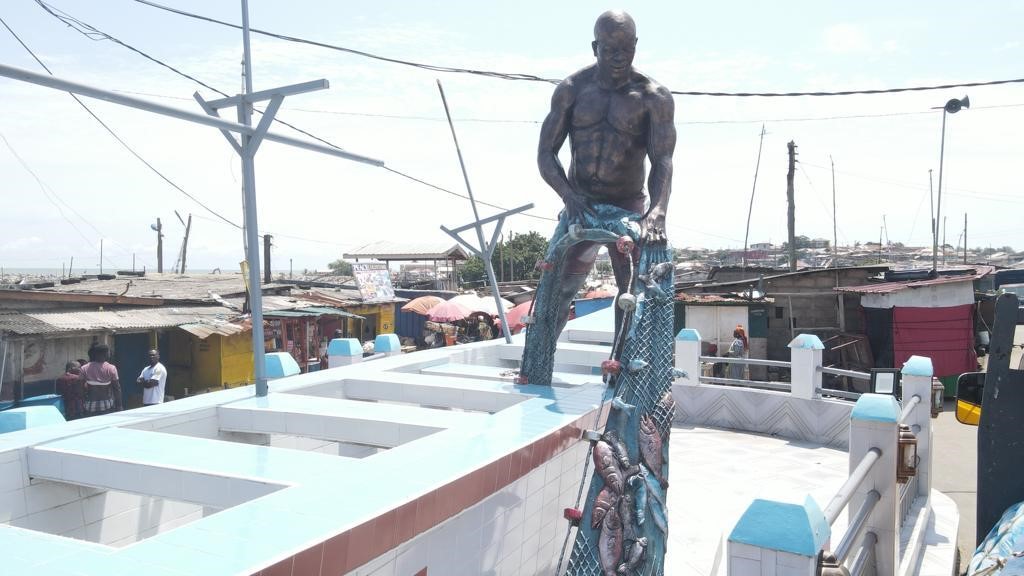
Figure 1: Theophilus Kwesi Mensah, Ofarnyi Kwegya, 2021. Fibre Reinforced Polymer. Yeepimso Community Centre, Winneba. Courtesy of Edem Dedi Photography.
Through the lens of placemaking, Ofarnyi Kwegya (Figure 1) and the Fishermen of Akosua Village (Figure 2) are two typical statues that has beautified the vernacular space of two historical settlements in the older southern half of Winneba.
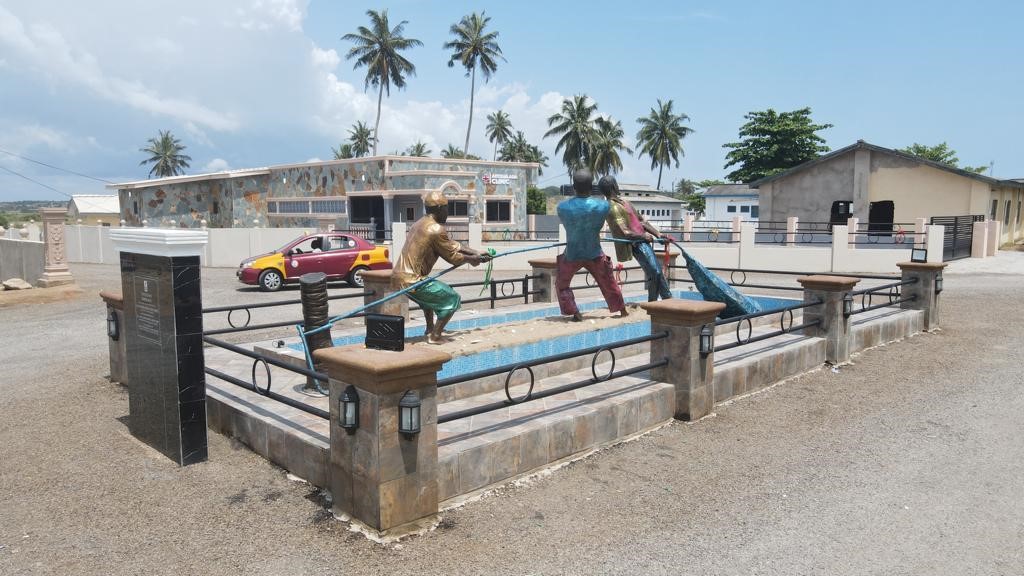
Figure 2: Theophilus Kwesi Mensah, Fishermen of Akosua Village, 2021. Fibre Reinforced Polymer. Akosua Village Community Centre, Winneba. Courtesy of Edem Dedi Photography.
The two statues stand in the middle of Yeepimso and Akosua Village communities respectively as embodiments of vital ingredients helping in creating a sense of community, civic identity, and culture in both spaces. They have both transformed their unique sites as lively and attractive communities with the monumental figures not just becoming legible maps to the sites but turning the spaces into places that support human interactions. The site of the statue has become the most important and attractive places in the two communities. They have become the center of attraction where the community gather for entertainment and trade, especially at night when economic activities in the two communities are at their peak.
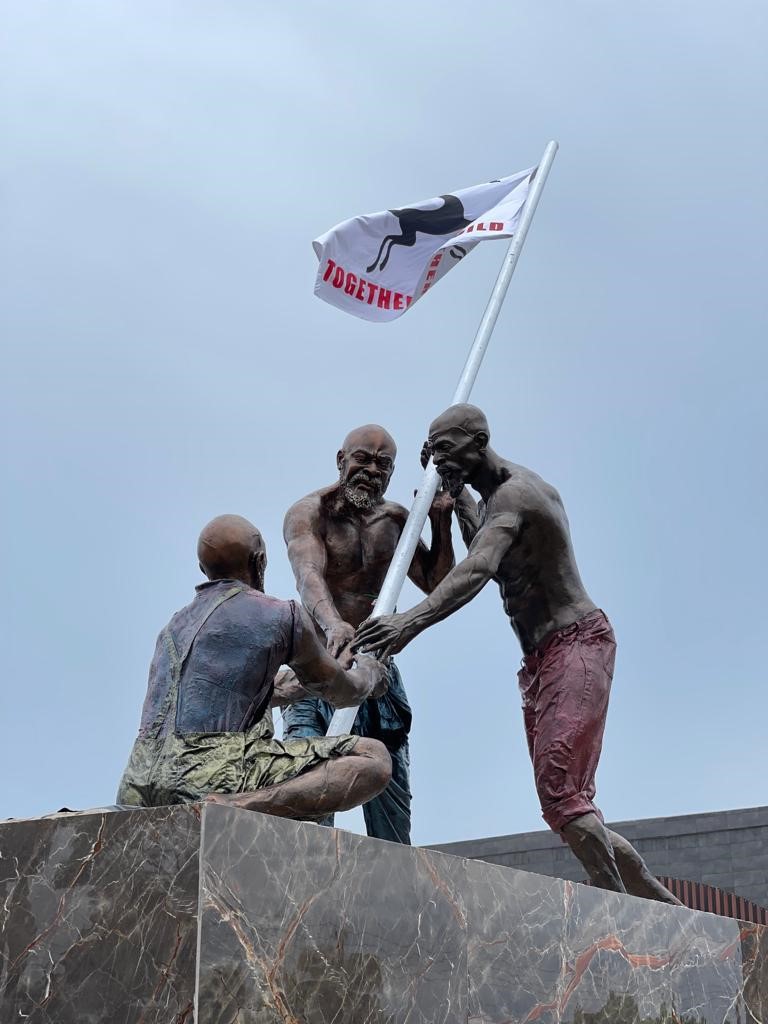
Figure 3: Theophilus Kwesi Mensah, Unity Monument, 2021. Fibre Reinforced Polymer. The Unity Square, Winneba. Courtesy of Edem Dedi Photography.
Another compelling monumental statue that has transformed the landscape of its site is the Unity Monument (Figure 3). Before the advent of the monument, the site of the statue (the Y-intersection – Winneba Traffic Light) was a deserted barricaded mere chaparral which displayed all forms of notices including obituaries and political posters (Mensah & Abraham, 2022). Yet, Theophilus Kwesi Mensah’s statue has transformed the space into an ideologically charged space for a deliberative unity and peace agenda in Winneba. The environment is so aesthetically pleasing that people like to visit the site for selfies and sightseeing thereby generating income for the Municipal Assembly.
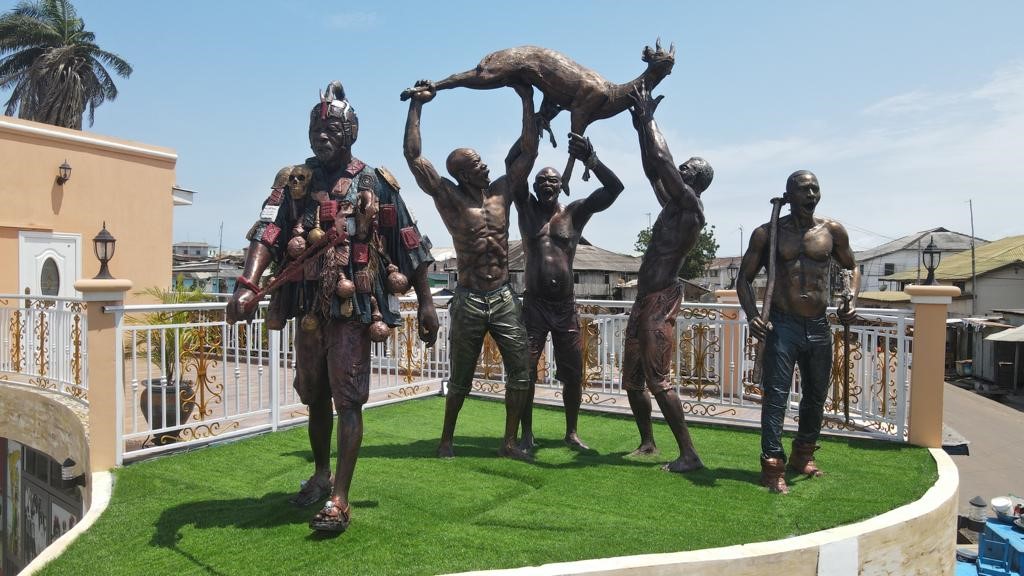
Figure 4: Theophilus Kwesi Mensah, The Aboakyer Monument, 2021. Fibre Reinforced Polymer. Osimpam Museum, Winneba. Courtesy of Edem Dedi Photography.
Theophilus Kwesi Mensah’s ontological orientation of Winneba is multifaceted. Hence, he found significance in the century’s old festival of the people of Winneba, Aboakyer to sculpt a monumental statue to this honour (Figure 4). The Aboakyer Monument mounted on the roof-top of the Osim Pam Museum is at the heart of Winneba as an embodiment of Winneba’s heritage. Owing to the enormous narratives surrounding the Aboakyer Festival, it is seen as one of the most popular and most significant festivals in Ghana (Akyeampong, 2019). The people of Winneba are invariably identified by the Aboakyir Festival. Theophilus Kwesi Mensah captured the very essence of the festival by vividly depicting the most significant characters: the Supi, the Asafo warriors, and their cheer leaders in procession with the catch.
During the 2022 Aboakyer Festival, it was observed that both celebrants and tourist were awe-struck by the aesthetic connotations of the monument. People gathered around the site for various reasons. Whilst some were seen taking tourist photos, others were seen venerating the ancestors who in the past led the festival.
In view of the Effutu Dream Project, Theophilus Kwesi Mensah’s artistic ingenuity to a large extent has contributed to rebranding the Winneba Township by beautifying the place and making it attractive for tourist. However, beyond the beautification agenda, part of the underlining philosophy of the statues was to consciously bring to the fore, some compelling memories of Winneba in relation to the current narratives within the land.
Theophilus Kwesi Mensah and the Collective Memories of Winneba
Theophilus Kwesi Mensah capitalized on his creativity to translate some notable historical events pertaining to his beloved native, Winneba into tangible remnants of the recent past to shape and, indeed, consolidate the Effutu Dream Project. Whilst usurping a storyteller, he equipped his statues to mimic the historiography of Winneba as collective memorials for the publics of Winneba. This is underpinned by his inclination to the truism that cities are built based on their histories and for that matter, Winneba cannot be gentrified without laying claims to the past publicly. Therefore, he ensured that whilst the Effutu Municipal Assembly initiated the Effutu Dream Project, the glorification of the public triumphs of Winneba was not taken for granted. This desire culminated into transforming some important public vernacular spaces into storehouse of memories embedded and inscribed on the landscape of Winneba.

Figure 5: Theophilus Kwesi Mensah, Ofarnyi Kwegya, 2021. Fibre Reinforced Polymer. Yeepimso Community Centre, Winneba. Courtesy of Edem Dedi Photography.
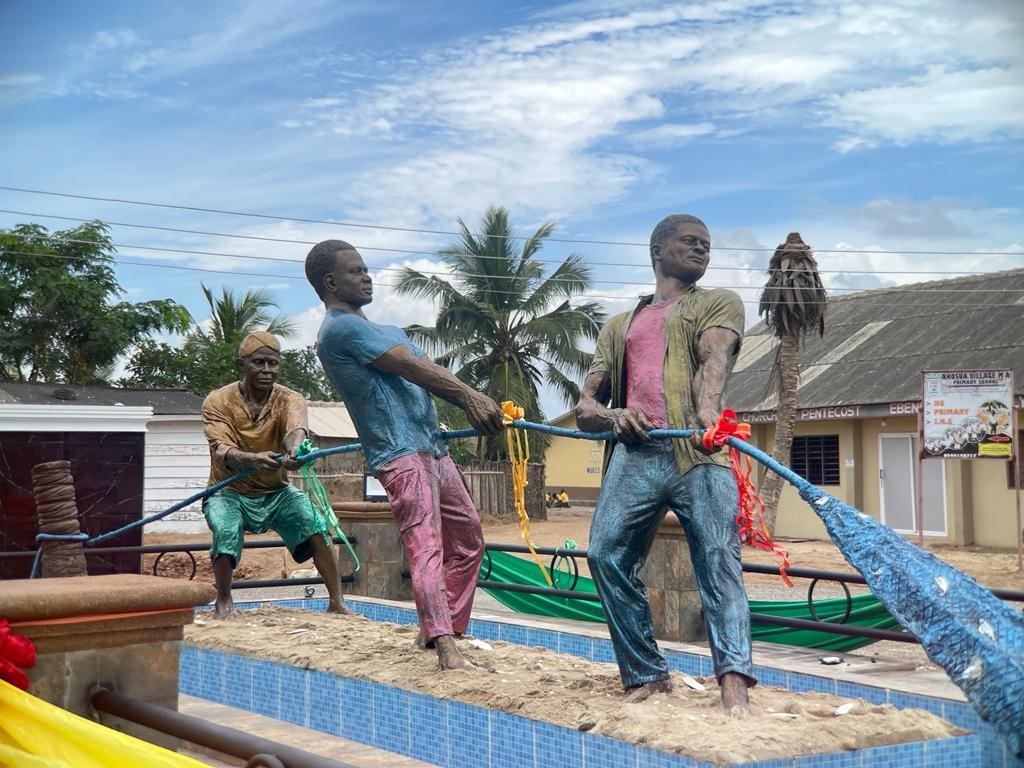
Figure 6: Theophilus Kwesi Mensah, Fishermen of Akosua Village, 2021. Fibre Reinforced Polymer. Akosua Village, Winneba. Courtesy of Edem Dedi Photography.
Knowing Winneba traditionally as a fishing community, Theophilus Kwesi Mensah produced two major monuments, Ofarnyi Kwegya (Figure 5) and the Fishermen of Akosua Village (Figure 6) as a concretized instantiation to the noble trade that has in the past defined what place Winneba is. Ofranyi Kwegya, is the statue of the unheralded giant master fisherman, an exponent of mid water trawling in Winneba who captured huge number of fish whereas the Fishermen of Akosua Village depict the famous trio: Zagada Afadzinu, Kwami Akpade and Sogbka Dagodzo who introduced artisanal fishing or subsistence fishing to Winneba.
Although the fishermen portrayed in these monumental statues have died long ago, they constitute such significant heroes in the historiography of Winneba. In view of their important roles in the socio-economic phenomenology of Winneba, Theophilus Kwesi Mensah aimed at stopping their decay and position them into the realm of the timeless with the erection of their statues as memorials that transmit their archetypal narratives.

Figure 7: Theophilus Kwesi Mensah, Unity Monument, 2021. Fibre Reinforced Polymer. The Unity Square, Winneba. Courtesy of Edem Dedi Photography.
In view of Theophilus Kwesi Mensah’s understanding of the political and dynastic heritage of Winneba, he engineered the construction of the Unity Monument in commemoration of the end of the protracted chieftaincy feud that had ensued in Winneba in the past. Ephraim-Donkor (2019) recount that since the latter part of the nineteenth century, the people of Winneba have clashed in violent struggle for power until 22nd July, 2015 when the Supreme Court of Ghana, finally intervened. The feud was rooted in an uncanny clash of cultures within the same family three, resulting in a political quagmire as to which succession mode to follow, the male or female model. The people of Winneba traditionally follow the patrilineal line of succession, however the Acquahs who are for the female model, tasted power as caretakers but refused to cede power back to the original benefactors, the Otuano Royal Family (Gyatehs or Gharteys) who are for the male model.
The female model became popular in Winneba because of their hospitality which allowed their Akan neighbours to live with them and rendered Winneba as a cosmopolitan community. Theophilus Kwesi Mensah’ depicted the two families, Gharteys and the Acquahs and a third figure representing the non-natives as a united force in the gentrification of Winneba as they erect a flag as signifier to this commitment. The Unity Monument does not only exhibit an aesthetically astute display of Theophilus Kwesi Mensah’s artistic ingenuity but also, it encapsulates the political and dynastic history of Winneba whilst being a crucible of memory to the unity and peace in Winneba presently.
As part of Theophilus Kwesi Mensah’s memorialization agenda with regards to his statues in Effutu Dream, he produced the iconic Aboakyer Monument as a memorial to the Aboakyer Festival of the Effutus of Winneba. The Aboakyer, known throughout Ghana as the "Winneba Deer Hunting Festival," is held annually in early May. It commemorates the founding of Winneba some three centuries ago, when the Effutu, led by one Osim Pam and accompanied by the god Penkye Otu, settled on the coast at the end of their migratory journey from northern Ghana to the present location.
Pedagogical Connotations of Theophilus Kwesi Mensah’s Statues in Effutu Dream
As artist academic, having been under the tutelage of the Emancipatory Art Teaching Project (EATP) by Professor kąrî’kạchä seid’ou, he is an alley of the blaxTARLINES community in Kumasi. Theophilus Kwesi Mensah’s practice ties in with contemporaneity in the arts. In his teaching, he identifies with the philosophy that trainee art educators ought to think and act creatively. He does this by championing their epiphany in the studio as nexus of exploring emerging issues in art education. Through the studio, his statues in Effutu Dream creatively imparts on his students as agents of transformation in addressing the urgent call for equity, diversity, and inclusion in our educational structure and practices.
Whilst his students have the liberty to choose their own masters, he has been readily available, and the doors of his studio was opened to all students who loved art whilst working on his statues in Effutu Dream. After all, he too has absorbed lessons from legendary Ghanaian Artist Academics such as Benjamin Menya, Kwamevi Zewuze Adzraku and Buckner Komla Dogbe. So, students with varied backgrounds are mainstays in his studio beyond the statues in Effutu Dream. He reckons the studio space as a crucible of intellect and a window to add to knowledge as his students pick his brain as apprentices there.
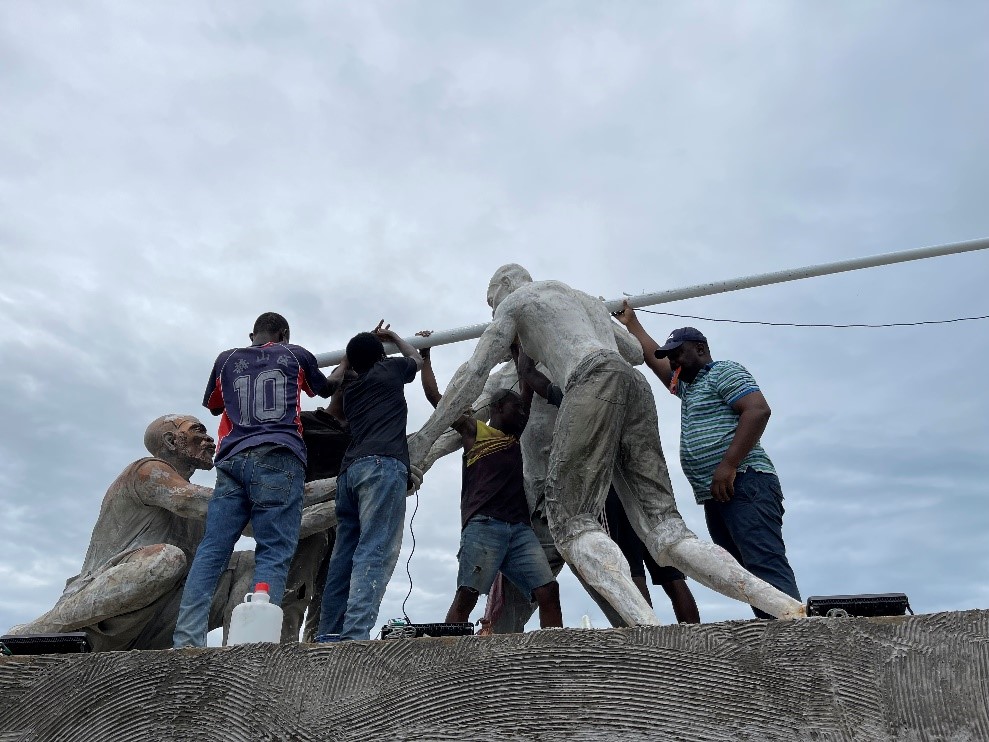
Figure 8: Theophilus Kwesi Mensah working with his students (Courtesy the artist)
Despite his inclination to EATP, he does not sway from being a traditionalist in the sense that he continues to enjoy working from the human figure. His preference to the human figure in his statues in Effutu Dream was informed by the truism that life changes and the language of sculpture evolves. So, it does not really matter if he is being repetitious with a subject that has preoccupied sculptors throughout history. Yet, as didactic symbols, he sought to make explicit what many sculptors make implicit in contemporary memorials in a classical sense with his figurative renditions.
Whilst the public may tend to be passive receptors of his statues in Effutu Dream, his students cannot afford to be indifferent. There are obvious educational imperatives they naturally cannot ignore. As far as they look and see the statues, there are predisposed to learn from them by asking questions. Reis (2010) citing Silva (1984) concerning public art claimed that even if we do not pay any attention to it, daily contact influences our attitude towards the conservation of artworks and our intellectual and sensory appropriation of them. What more do students need to get motivated in their studies aside having the opportunity to see the works of their lecturer installed all over the community? As artist academic, Theophilus Kwesi Mensah thrives to integrate his vast knowledge in the art into the practice of cultivating artistic design talent. His contribution to knowledge is application oriented. His statues in Effutu Dream make meaningful contributions to practical solutions that are at the core of art education. His students garner the nuances of what he says in the classroom when they see his statues in town.
Conclusion
Theophilus Kwesi Mensah’s ingenuity as a sculptor, draftsman and an academician are undeniable, so too is his energy and prolific creative output in the wider Effutu Dream Project. Within a trilogy of paradigms, he displays a profound representation of Winneba as a beautiful place to live and work. He does so by immortalizing four important collective memories of the town whilst using Fibre Reinforced Polymer, a material that stands the test of time and exudes a sense of eternalness. In the process, his students tapped into his creative sense both at his studio and on site.
Whilst Theophilus Kwesi Mensah’s artistic praxis is eclectic, what I have sketched is a heuristic effort to describe his monumental contribution in the Effutu Dream Project in his beloved Winneba where he lives and practice as artist academic. The few details I have carved may at times be minor, but they add up to have a larger impact to his contributions in the effort to redesign and develop Winneba.
References
- Akyeampong, O. A. (2019). Aboakyer: traditional festival in decline. Ghana Social Science Journal, 16(1), 97.
- Farman J (2015). Stories, spaces, and bodies: The production of embodied space through mobile media storytelling. Communication Research and Practice 1(2): 101–116.
- Mensah, T. K. & Abraham, E. K. (2022, June). The unity monument: A hope of the end to the political quagmire in simpa. Paper Presented at The Creative Arts Conference, University of Education, Winneba, Ghana
- Reis, R. (2010). Public art as an educational resource. International Journal of Education through Art, 6(1), 85-96.


